OMRI Listed Premium Potting Soil

 Dr. Earth® Pot of Gold premium potting soil is an OMRI & CDFA certified organic blend that is People & Pet Safe® and contains no GMOs. Pot of Gold potting soil uses finely selected OIM inputs from the land and sea that help prized plants thrive while reaching their fullest potential. Pot of Gold is pH balanced near 6.5 and contains horticultural perlite for excellent drainage with any container garden – indoor or out. Use Pot Of Gold potting soil for planting seeds, reviving existing soil, growing houseplants, or even in a compost tea. Dr.Earth® certified organic soils are created for life; utilizing powerful MycoApply® certified beneficial microbes that encourage explosive root growth and access to nutrients in the soil. Locate Dr. Earth® organic soils, fertilizers, and controls at your favorite local garden store or nursery.
Dr. Earth® Pot of Gold premium potting soil is an OMRI & CDFA certified organic blend that is People & Pet Safe® and contains no GMOs. Pot of Gold potting soil uses finely selected OIM inputs from the land and sea that help prized plants thrive while reaching their fullest potential. Pot of Gold is pH balanced near 6.5 and contains horticultural perlite for excellent drainage with any container garden – indoor or out. Use Pot Of Gold potting soil for planting seeds, reviving existing soil, growing houseplants, or even in a compost tea. Dr.Earth® certified organic soils are created for life; utilizing powerful MycoApply® certified beneficial microbes that encourage explosive root growth and access to nutrients in the soil. Locate Dr. Earth® organic soils, fertilizers, and controls at your favorite local garden store or nursery.
Read More Articles
Aquaponics: From Fish to Fertilizer
Calcium: The Forgotten Fertilizer
Dry Fertilizers vs Liquid Fertilizers
Four Great Natural Fertilizers
Free Subscription to Garden & Greenhouse Magazine
Free Subscription to Garden & Greenhouse Email Newsletter

DIY Projects
The Ultimate Indoor Cleaning Manual: From Clutter to Comfort

You’re drowning in mess and don’t know where to start? Dive into our ultimate indoor cleaning guide.
It’s all about transforming your chaotic space into a cozy haven. We’ll walk you through essential supplies, cleaning frequencies, and room-by-room strategies.
Plus, we’ll tackle stubborn stains and give you expert tips to keep your home sparkling.
Ready to roll up your sleeves? Let’s turn your home into the sanctuary you deserve.
Understanding Cleaning Frequencies
In light of maintaining a clean home, it’s crucial to understand that cleaning tasks fall into five main categories: daily, weekly, monthly, seasonal, and yearly.
Your daily tasks, such as dishwashing and tidying, keep your home running smoothly.
Weekly and monthly chores, like vacuuming and deep-cleaning the bathroom, prevent buildup and save you time in the long run.
Seasonal tasks might include washing windows or deep-cleaning carpets, typically undertaken in spring or fall.
Yearly tasks might be those big projects like cleaning out the garage or washing the exterior of your house.
Essential Cleaning Supplies
You will need these basic cleaning supplies to effectively maintain your home:
- a broom
- a vacuum, a mop and bucket, or a steam mop or steam cleaner like Aqua Pro Vac
- microfiber cloths
- sponges
These tools are your household’s best friends when it comes to cleaning. The broom sweeps away dust and dirt, while the vacuum tackles carpets and rugs.
The mop’s wet cleaning abilities are perfect for hard floors.
Microfiber cloths are a godsend. They’re reusable, eco-friendly, and excellent at grabbing dust and dirt.
Lastly, sponges are your go-to for scrubbing tasks.

Quick Cleaning Tips
Let’s dive into some quick cleaning tips that can make your chores easier and more efficient.
- Always have your cleaning supplies ready.
- Categorize your tasks into daily, weekly, monthly, seasonal, and yearly. This ensures you’re not overwhelmed and helps maintain a clean home.
- For a quick clean-up, start by gathering trash from each room, collecting dishes, and starting a load of laundry. Clear clutter by putting items back in their proper places.
- Remember that occasional deep cleanings, like washing your oven or windows, are just as important.
Comprehensive Cleaning Tutorials
Once you’ve got the right supplies and know how frequently to clean, half the battle is won. To further your skills, we’ll cover some essential cleaning tutorials:
Fake a Clean House Fast
To fake a clean house, follow these quick steps:
- Grab a laundry basket and walk through the main rooms. Scoop up anything that doesn’t belong and stash the basket out of sight—in a closet or another room. Don’t worry about sorting items now; just clear surfaces and floors.
- Take a microfiber cloth and quickly wipe down any dusty spots on tables, TV stands, and other surfaces. If there’s no time for a full dusting, focus on areas at eye level and spots where the light shines directly.
- Align magazines, remotes, and coasters on your coffee table. Fluff and arrange couch pillows neatly, and fold throw blankets for an instantly orderly look.
- Grab a damp cloth or cleaning wipe to quickly clean any conspicuous smudges or spills on countertops, mirrors, or glass surfaces that catch the eye.
- Only do the most visible areas — like the living room and hallway. Don’t worry about every corner; quickly remove visible dust, dirt, or crumbs.
- Close the shower curtain, straighten towels, and wipe down the sink and counter. Replace the toilet roll with a full one and lower the toilet lid.
- Put dishes into the dishwasher or stack them neatly in the sink. Wipe down counters, and use a cloth to quickly go over the refrigerator handle and any other high-touch areas.
- Open windows to let in fresh air or light a candle for a pleasant scent. Lower the lights to create a cozy feel and hide less-clean areas, and consider turning on some background music.
Clean a Shower Curtain and Liner
To keep mold and mildew at bay, take down your shower curtain and liner and wash them in the washing machine with a couple of bath towels (to prevent wrinkling).
Use a gentle detergent and add 1/2 cup of baking soda during the wash cycle, followed by 1/2 cup of vinegar during the rinse cycle. Hang the curtain and the liner back up to air dry fully.
For extra tough mildew stains, pre-treat with a mixture of baking soda and water, or use a spray-on mildew remover before washing.
Clean a Top-loading Washing Machine
Keep your clothes smelling fresh by cleaning your top-loading washer regularly. Set the washer on the hottest, longest setting and add four cups of white vinegar to the water.
After a few minutes, pause the cycle and let the vinegar water mix sit for an hour. During this time, you can dip a scrubber in the vinegar water and clean around the top of the drum, the lid, and other parts of the washer.
After an hour, continue the cycle, then run another hot water cycle with a cup of baking soda to rinse out the vinegar and any loosened grime. Wipe down any remaining residues with a clean cloth.
Clean Your Oven
Start by removing the oven racks and soak them in hot, soapy water. Create a paste with baking soda and water and spread it throughout the inside of the oven, avoiding the heating elements.
Leave the paste on for several hours or overnight for best results. Use a plastic scraper to lift away the grime, then wipe the surfaces with a damp cloth.
Clean the glass door with a mixture of baking soda and water, and once all the residue has been removed, return the oven racks.
Clean Windows
For gleaming windows that invite sunlight into your home, mix equal parts water and vinegar in a spray bottle. Spray generously onto the glass and wipe away with a microfiber cloth, using circular motions to avoid streaks.
For any stubborn spots, rub gently with a cloth dampened in the water-vinegar solution. Don’t forget to wipe the window frame and sill.
For best results, clean your windows on a cloudy day to prevent the sun from drying the solution too quickly and leaving streaks.
Room-by-Room Cleaning Guide
To tackle your home on a room-by-room basis and ensure no corner goes untouched:
- Start with the most used areas like the kitchen or living room.
- Equip yourself with your basic cleaning supplies and start by picking up any clutter, wiping down surfaces, vacuuming or sweeping the floor, and then mopping if necessary.
- Move onto the less used rooms such as bedrooms and offices, following the same sequence.
- Don’t forget bathrooms – scrubbing the tub, sink, and toilet, and mopping the floor are essential here.
Remember, regular maintenance will make these tasks easier over time.
Dealing With Stubborn Stains
Stains can be pesky and really put a damper on your pristine home. Here are some simple ways to deal with obstinate stains:
- Baking Soda Solution: Works wonders on most hard surfaces.
- Vinegar and Water: Ideal for glass and mirrors.
- Rubbing Alcohol: Perfect for removing ink and marker stains.
- Hydrogen Peroxide: Great for stubborn bathroom stains.
- Lemon and Salt: Natural alternative for rust and mildew.
Conclusion: Maintaining a Clean Home
A tidy environment not only brightens your mood but also reduces the time dedicated to intense cleaning sessions. So how do you maintain cleanliness consistently?
Start by creating a simple cleaning schedule that suits your routine. Divide tasks into daily, weekly, and monthly categories.
Small daily tasks like washing dishes, sweeping, and tidying up can prevent clutter accumulation.
Weekly tasks might include vacuuming and dusting, while your monthly schedule could include deeper cleaning tasks such as washing windows or cleaning the oven.
Home Care & Living
Troubleshooting Electric Stove Woes: Unveiling Solutions for Optimal Heating Performance

The heart of any kitchen is often the stove, and when it comes to electric stoves, the proper functioning of the heating elements is crucial for seamless cooking. However, it’s not uncommon to encounter issues where the electric stove elements are not heating as they should. In this article, we’ll explore common reasons behind this problem and discuss practical solutions to get your stove back in working order.
1. Check the Power Source
Before diving into complex troubleshooting, start with the basics. Ensure that your electric stove is receiving power. Check if the stove is plugged in securely and that there are no issues with the electrical outlet. Sometimes, a loose connection or a tripped circuit breaker could be the culprit.
2. Inspect the Burner Elements
If the power source is not the issue, the next step is to inspect the burner elements. Over time, these elements can wear out or become damaged, leading to inefficient heating. Look for visible signs of damage such as cracks, blisters, or uneven heating. If you notice any of these issues, it’s time to replace the faulty element.
3. Cleanliness Matters
A common yet often overlooked reason for poor heating in electric stoves is accumulated dirt and residue. Food spills and grease can build up on the burner elements, affecting their performance. Regularly clean the elements with a soft brush or a damp cloth to remove any debris. This simple maintenance step can significantly improve heating efficiency.
4. Control Switch Malfunction
The control switches on your electric stove play a crucial role in regulating the heat output. If a particular element is not heating properly, the issue might lie with the corresponding control switch. Check for signs of damage or wear and consider replacing the switch if needed. Always turn off the power before attempting any repairs.
5. Wiring and Connections
Faulty wiring or loose connections within the stove can also lead to heating issues. Inspect the wiring harness and connections for signs of damage or disconnection. If you are not comfortable working with electrical components, it’s advisable to seek professional assistance for the stove repair to avoid any safety hazards.
6. Temperature Sensor Problems
Some electric stoves are equipped with temperature sensors to regulate heat levels. If these sensors malfunction, they can disrupt the heating process. Consult your stove’s manual to locate the temperature sensor and check for any issues. Replace the sensor if necessary, following the manufacturer’s guidelines.
A malfunctioning electric stove can be a frustrating obstacle in the kitchen, but with a systematic approach to troubleshooting, many issues can be resolved without the need for professional intervention. By checking the power source, inspecting burner elements, maintaining cleanliness, examining control switches, ensuring proper wiring, and addressing temperature sensor problems, you can tackle the most common reasons behind electric stove elements not heating properly. Remember to prioritize safety and, when in doubt, seek assistance from qualified technicians to ensure a reliable and efficient kitchen appliance.
Pest Control
Effective Strategies for Eliminating Garden Pests: Your Friendly Greenhouse Guide
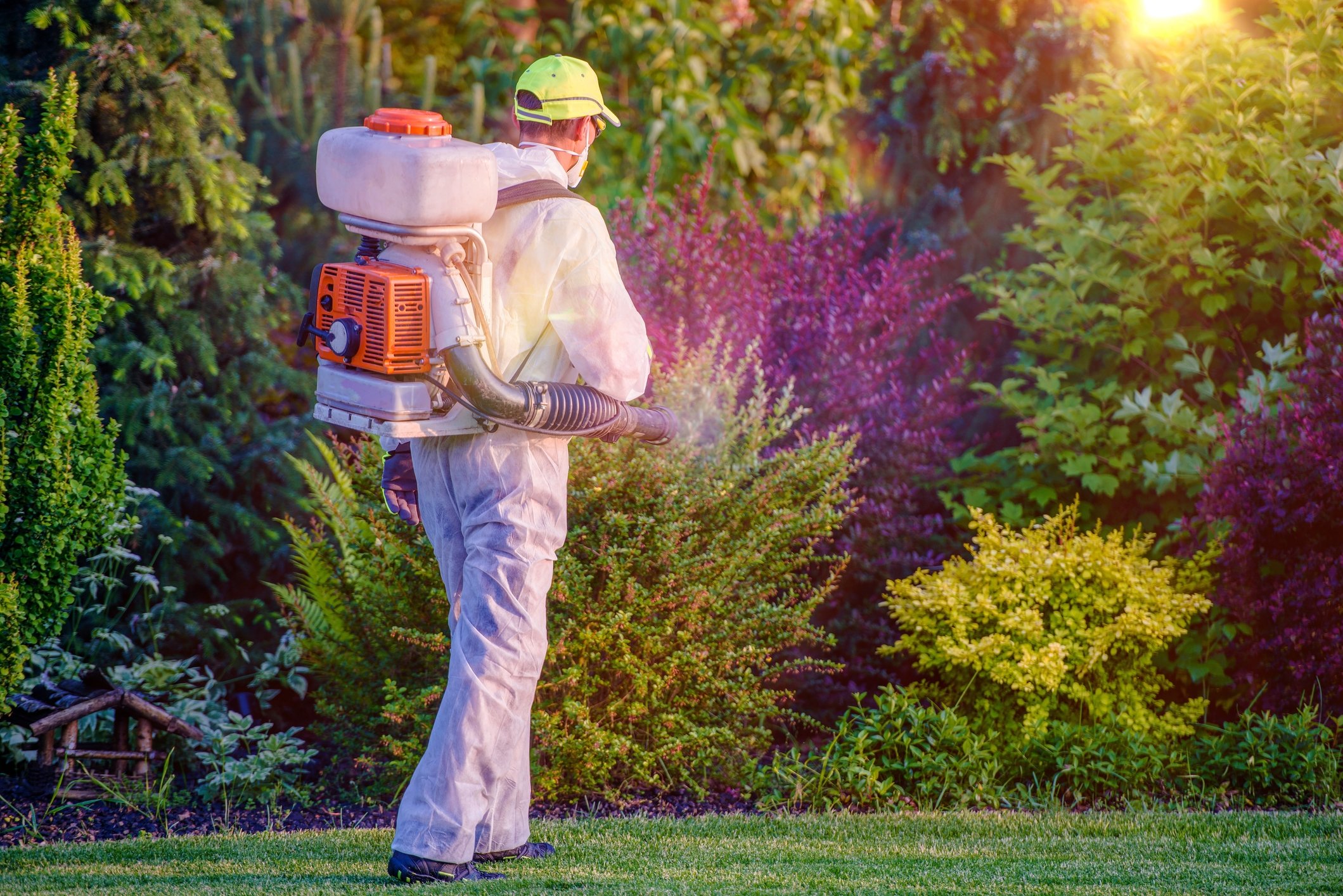
Are you struggling with garden pests wreaking havoc in your greenhouse? Don’t worry; you’re not alone. In this comprehensive guide, we’ll share effective strategies for eliminating these pesky invaders and help you maintain a healthy, thriving greenhouse.
Greenhouse pests, such as aphids, spider mites, and whiteflies, can significantly affect the yield of your greenhouse crops if left unchecked. But fear not! With the proper preventative measures and control tactics, you can protect your plants and enjoy a bountiful harvest. Stay tuned as we delve into practical and environmentally friendly ways to keep these uninvited guests at bay.
Throughout this guide, we’ll provide useful tips and techniques for tackling common greenhouse pests, from using beneficial insects to employing good hygiene practices. So, buckle up and get ready to transform your greenhouse into a pest-free haven where your plants can grow and flourish without any unwanted distractions.
Understanding Greenhouse Pests
As you begin your journey in greenhouse gardening, one thing you’ll need to keep an eye out for is the presence of various pests that can cause significant damage to your precious plants. Here, we’ll help you quickly learn how to recognise common greenhouse pests and understand their behaviours, so you can deal with them more effectively.
Insects: The world of insects is vast, but their small size can sometimes make it difficult to identify them correctly. A few common greenhouse insects include aphids, ants, and scale insects. Keep an eye out for changes in leaf colour, honeydew deposits, and the presence of winged or wingless pests on the undersides of leaves.
Mites: Spider mites are among the most troublesome garden pests you might encounter. They are tiny and can often be found on the undersides of leaves, causing damage by feeding on plant tissue. Keep an eye out for webbing on foliage, yellow stippling, and leaf drop as signs of a mite infestation.
Fungus and mold: Mildew, fungi, and mold come in various forms, including powdery mildew and sooty mold. These conditions thrive in moist and poorly ventilated environments, so be sure to check your plants regularly for signs of these issues, such as discolouration and leaf distortion.
Garden pests: Beetle larvae, caterpillars, snails, and slugs are some examples of larger pests that might find their way into your greenhouse. They are usually attracted by certain plants and can cause extensive damage to foliage, roots, and fruits. Keep an eye out for holes in the leaves, chewed edges, and trails left by slugs and snails.
To keep these pests under control, here are a few strategies that you can employ:
- Regular inspection: Make a habit of frequently checking your plants for any signs of pest activity, paying close attention to the undersides of leaves and hidden areas where pests may be hiding.
- Promote beneficial insects: Encourage the presence of ladybugs, lacewings, and other beneficial insects in your greenhouse by providing hiding spots and pollen sources. This natural form of pest control can help keep harmful insects at bay.
- Physical barriers: Use netting and other barriers to exclude larger pests like birds and butterflies from your greenhouse, helping to protect vulnerable plants from damage.
- Maintain good hygiene: Regularly clean your greenhouse and remove dead foliage, weeds, and other debris that might harbour pests or diseases.
By keeping a watchful eye on your greenhouse and implementing these strategies, you can greatly reduce the risk of pest infestations and ensure a thriving, healthy garden for you to enjoy.
Prevention and Control of Greenhouse Pests
So, you’ve got a lovely greenhouse full of flowers and vegetables, but those pesky pests just won’t leave them alone. Fear not! Here are some preventative measures and control strategies to help you keep your greenhouse pest-free.
First things first, let’s focus on prevention. Maintaining a clean greenhouse environment is key to keeping pests at bay. Regularly remove any dead leaves or decaying plant matter, and sterilise pots and tools. Keep an eye on the temperature and humidity levels in your greenhouse, as pests tend to multiply in warm and humid conditions. Proper ventilation and monitoring of the climate will help combat this issue.
Remember, not all insects are bad for your garden! Attract beneficial insects like ladybirds, parasitic wasps, and hoverflies by planting flowers that they love in or around your greenhouse. In turn, these creatures will help control your pest population by munching away on aphids, caterpillars, and other undesirable bugs.
For pest control, try these strategies:
- Traps: Employ sticky traps or flypapers to catch things like whiteflies and fungus gnats. Hang them near plants susceptible to these pests for maximum effect.
- Water spray: Give your plants a good blast with a hose or a high-pressure water spray. This will dislodge pests like aphids (greenfly) and can be especially effective on tomatoes and peppers.
- Biological control: Introduce natural enemies of the pests, such as predatory mites, to your greenhouse. These helpful critters will consume the harmful pests without causing damage to your plants.
Integrated Pest Management (IPM) is a crucial strategy in achieving long-term pest control in your greenhouse. This includes monitoring and identifying pests, determining action thresholds, and combining a variety of approaches, such as:
- Cultural (e.g. pruning and irrigation)
- Mechanical (e.g. netting and traps)
- Biological (e.g. beneficial insects and parasites)
- Chemical (only when absolutely necessary and used responsibly)
By following these prevention and control strategies, you’ll be well on your way to enjoying a thriving, pest-free greenhouse. Happy gardening!
Frequently Asked Questions
How can I prevent pests from entering my greenhouse?
To prevent pests from entering your greenhouse, it’s essential to maintain its cleanliness. Regularly clean the surfaces, windows, and floors of your greenhouse to eliminate potential hiding spots for pests. Installing plant netting and net screens can also create barriers to stop pests from entering your greenhouse and landing on your plants source.
What are eco-friendly methods for tackling greenhouse pests?
Eco-friendly methods for dealing with greenhouse pests include introducing biological controls like predatory insects such as ladybirds and lacewings that can help control common pests like aphids. Another option is using organic pest repellents like neem oil or garlic sprays. You can also try companion planting, which involves growing plants that repel pests naturally alongside your main crops source.
How do I deal with flies and insects in my greenhouse?
To deal with flies and insects in your greenhouse, ensure good ventilation and air movement as it can limit the population growth of pests. Sticky traps can be used to capture flying insects. For more persistent issues, consider introducing predatory insects like wasps and nematodes that can kill flies and mosquitoes naturally.
What natural predators can help control garden pests?
Natural predators, like ladybirds, lacewings, and hoverflies, can reduce the population of garden pests such as aphids and other harmful insects. Parasitic wasps and nematodes are also beneficial predators in your greenhouse as they target pests like vine weevils and leatherjackets.
How can I maintain a healthy greenhouse environment to deter pests?
To maintain a healthy greenhouse environment, keep it clean and well-ventilated. Remove any dead or decaying plant material, as it can attract pests. Ensure your plants are adequately spaced to promote proper airflow, reducing the chances of disease and pest infestation. It’s also a good idea to regularly inspect your plants for signs of pests to catch and address issues early.
Home Care & Living
How Professional Housekeeping Services Transform Your Space

The ongoing challenge of home cleaning is a universal struggle that many of us face in our daily lives. Juggling work, family, and personal commitments leaves little time and energy to maintain a pristine living environment. However, there is a solution that can transform your home and make your life easier: professional housekeeping services.
Let’s unfold how these services can revolutionize your living space, making it a cleaner, healthier, and more organized place.
Cleaning Routines: Daily, Weekly, and Monthly
Establishing a structured cleaning schedule for different areas of the home is essential for maintaining a consistently clean living environment. By breaking down your cleaning tasks into daily, weekly, and monthly routines, you can efficiently manage the upkeep of your space.
- Daily tasks might include quick tidying, making beds, and wiping down kitchen surfaces.
- Weekly tasks may involve vacuuming, mopping, and cleaning the bathroom.
- Monthly tasks could include deep cleaning, such as washing windows, dusting ceiling fans, or scrubbing grout.
By allocating specific tasks to different timeframes, you ensure that no area of your home is neglected for an extended period. This structured approach prevents the buildup of dirt and grime and makes the cleaning process more manageable.
The benefits of maintaining regular cleaning routines extend far beyond a sparkling home. Consistent cleaning routines contribute to a healthier and more comfortable living space. Daily upkeep minimizes the need for intense cleaning sessions and helps you stay on top of clutter and mess. This not only saves you time but also reduces stress.
Furthermore, a clean home creates a more pleasant atmosphere, enhancing your overall well-being. It’s easier to relax, focus, and enjoy your space when it’s free of chaos and dirt. Regular cleaning also prolongs the lifespan of your furniture and appliances, ultimately saving you money on replacements and repairs.
How Does Professional Housekeeping Services Help You?
The advantages of hiring house cleaning services are numerous and can have a transformative effect on the cleanliness and organization of your home. One of the primary benefits is the time and energy you save.
Professional housekeepers are experienced and efficient, capable of tackling cleaning tasks with a level of expertise that surpasses most homeowners. They can handle a wide range of cleaning challenges, from stubborn stains to delicate surfaces, ensuring that your home looks its best.
Housekeepers are not just cleaners; they are time-savers and experts in the art of cleaning. When you hire professional housekeeping services, you free up valuable time that can be better spent on work, family, or leisure activities. The hours you would have spent on cleaning can now be used for pursuits that truly matter to you.
Moreover, housekeepers bring a level of expertise that comes from years of experience. They understand the best cleaning techniques, have in-depth knowledge of various cleaning products, and are adept at handling different surfaces and materials. This expertise ensures that your home is cleaned thoroughly and efficiently, with attention to detail that surpasses what most homeowners can achieve on their own.
The thoroughness of professional cleaning is another compelling reason to consider housekeeping services. Housekeepers are trained to pay meticulous attention to every detail, ensuring that no nook or cranny is overlooked. They have a keen eye for areas that often go unnoticed, such as baseboards, vents, and under furniture. This level of thoroughness results in a home that not only looks clean, but is genuinely clean and sanitized.
Professional housekeeping services can also tailor their cleaning to your specific needs and preferences, addressing areas that require special attention. Their commitment to thorough and customized cleaning can make a noticeable difference in the overall cleanliness and hygiene of your home, creating a more comfortable and healthier living environment.
Finding the Right Housekeeping Service
When it comes to choosing a reliable and reputable housekeeping service, guidance is essential to ensure you make the right choice. Begin your search by seeking recommendations from friends, family, or colleagues who have had positive experiences with housekeepers. Online reviews and ratings on platforms like Yelp or Angie’s List can also provide valuable insights.
It is important to look for services that are licensed, bonded, and insured, as this indicates a level of professionalism and accountability. Checking if the service performs background checks on its staff can give you peace of mind. Trust and reliability are crucial when inviting someone into your home, and these considerations will help you narrow down your options to reputable candidates.
Several factors should be taken into account when selecting a housekeeping service.
- Cost
- Services offered
- Ask for references from previous clients to get a sense of the service’s quality and reliability.
Choosing the right housekeeping service involves a balance of factors such as cost, services offered, references, and a gut feeling of trust and compatibility with the service provider. By carefully considering these elements, you can make an informed decision that aligns with your home’s cleaning needs and your peace of mind.
Pest Control
Choosing The Right IPM Tools: A Guide For Gardeners

No matter how much you care for your garden, you will likely avoid pest attacks and diseases altogether. Harmful organisms can enter your property from adjacent or neighboring areas and be carried by wind, rain and air currents.
The garden contains lots of different organisms, including plants, insects and earthworms. Fungi and bacteria are also a part of this microcosm. Most of them thrive and live in harmony with each other. However, a few troublemakers induce threatening situations for the rest of the garden.
Traditional pest control methods assume that a good insect is a dead insect, so farmers in the 1960s, for example, tirelessly sprayed pesticides. The problem with this practice is… actually, there are a few things that could be improved. Pesticides can become ineffective over time because the insects develop resistance to them. Spraying exterminates both harmful and beneficial organisms. Chemical products are ruining the environment. That’s where IPM comes into play.
Understanding the Basics of IPM
Integrated Pest Management (IPM) is a method of maintaining a thriving garden in a sustainable and contemporary way. Unlike traditional practices of combating harmful microorganisms, the application of the integrated pest management helps to get rid of pests without harm to nature.
Let’s briefly review the fundamental principles and potential strategies of IPM before selecting the tools.
Identification
Defining a problem is the first step towards solving it. Start by carefully examining all the symptoms of disease or pest infestation. After gathering all the necessary information, use multiple sources to research the problem and learn practical methods to combat it.
Monitoring
Regular monitoring of garden conditions and pest activity enables determining the threat type and monitoring changes accurately. It helps to detect problems early and take effective measures. Records of type, population size, and distribution should also be maintained. All of this helps identify meaningful patterns and trends that will help keep your garden healthy.
Preventing Approach
Prevention is the core of IPM methods. The key to this practice is to stop pests or diseases before the vegetation is damaged. It’s important to choose plant varieties resistant to pests and maintain good hygiene to ensure a healthy garden.
Cultural Practices
Growers can clean their area by removing old crops, infested plants, and weeds that may shelter pests. Proper plant care, such as adequate watering, fertilization, and pruning to reduce plant stress, also falls into this category. Careful selection of varieties resistant to insect damage is one of the most effective ways to plan a garden using cultural control.
Biological Control
Rather than completely eradicating pests, biological control methods aim to maintain manageable infestation levels. This approach in integrated pest management allows for a sizeable natural niche to remain, which nature will always seek to fill. By keeping pests at tolerable levels, predator species have a steady food source while plant damage remains low.
Chemical Control (in a pinch)
IPM is designed to help significantly reduce the use of chemicals. However, from time to time, this measure may be helpful in exceptional circumstances. Pesticides must be used carefully, and choose those that target only a specific pest and do not cause severe damage to the environment.
Choosing the Right IPM Tools
After identifying the problem, analyzing the information obtained through monitoring and exploring possible strategies and options, you can choose tools to get integrated pest management benefits.
Physical Controls
This method is also called “mechanical” control. What specific actions should be taken? You can physically remove pests from your garden using traps, barriers, and tillage. When discussing diseases, this means additional pruning and removal of diseased plants.
Prevention
How do you keep pests from ruining your garden? Choose resistant varieties of plants that are also suitable for your region’s climatic and weather conditions. You can also install row covers or netting to block harmful insects from reaching your crops. Take care of the hygiene of your site by clearing it of debris and weeds that can serve as a home and food for pests.
Biological Control Tools
Ladybugs, lacewings and wasps are beneficial insects that are a must for any garden. You can purchase and release them or take care of attracting them to your site. Soil pests can be controlled by introducing nematodes. Support a variety of beneficial organisms, encouraging habitat diversity.
Chemicals
If pesticide use cannot be avoided, look for low-toxicity solutions that do not harm people or pets to save the lives of beneficial insects in the garden. The manual should be your best friend; don’t ignore it. Spot treatment is also a reliable way to minimize damage to the nature and garden inhabitants.
IPM is a sustainable pest and pathogen management approach that includes several strategies and practices. Choosing the right combination of tools helps control pest and disease problems without harming the environment and the microorganisms that help your garden stay healthy by supporting natural processes.
Design Tips
Modern Victorian Decor: Infusing Traditional Charm Into Contemporary Homes

Blending the ornate details and rich textures of the Victorian style with the minimalistic approach of modern decor offers a unique twist on home interior design. It creates an ambiance that is both nostalgic and contemporary.
Dive in and discover how to create your own modern Victorian decor.
What is a Modern Victorian Decor?
Modern Victorian decor has a unique blend of traditional elegance and contemporary minimalism.
This style takes the sophistication of the Victorian era and pairs it with the simplicity of modern design, creating an aesthetic that’s both charming and practical.
You’ll find ornate details, like intricate moldings and plush fabrics, alongside clean lines and neutral color palettes.
It’s all about balance. Think grandeur without the clutter, and luxury without ostentation. It’s a style that cherishes history, yet embraces the present.
Choosing Victorian-Inspired Furniture

When selecting Victorian-inspired furniture, you’ll need pieces that blend the old-world charm with contemporary aesthetics.
Start with a classic Chesterfield sofa; its tufted design and rich fabric are quintessentially Victorian, but it’s still versatile enough to fit into a modern space. Complement it with a marble-top table or an ornate wooden sideboard.
Don’t forget accessories like a vintage mirror or a brass lamp. But remember, you don’t need to go overboard. The key is balance. Infuse just enough Victorian elements to evoke that vintage charm without making your home look like a museum.
It’s all about creating a space that feels both timeless and fresh.
Incorporating Traditional Colors

After selecting your Victorian-inspired furniture, your next step in transforming your space should be to incorporate traditional Victorian color schemes.
You might immediately think of dark, heavy hues, but don’t be misled. Victorian colors were actually quite diverse.
Earthy shades like olive, brown, and burgundy were popular, but so were lighter tones like sky blue, rose pink, and sage green.
Use of Victorian Patterns and Textures

Victorian-inspired patterns and textures, often intricate and layered, can add a unique depth to your modern home decor. Don’t be afraid to mix floral prints, geometric designs, and plush fabrics.
A damask wallpaper or rug can provide a dramatic backdrop, while embroidered pillows or lace curtains add a touch of elegance.
You can also make it more interesting by complimenting it with a collection of Boleslawiec Polish pottery patterns. The distinctive patterns of these ceramics blend seamlessly with the Victorian aesthetic.
Remember, it’s all about balance. Too much pattern can overwhelm, so use them wisely. Break up dense patterns with solid colors and balance heavier fabrics with lighter ones.
With careful selection, your home can exude both Victorian charm and modern sophistication.
Lighting Selection in Victorian Decor
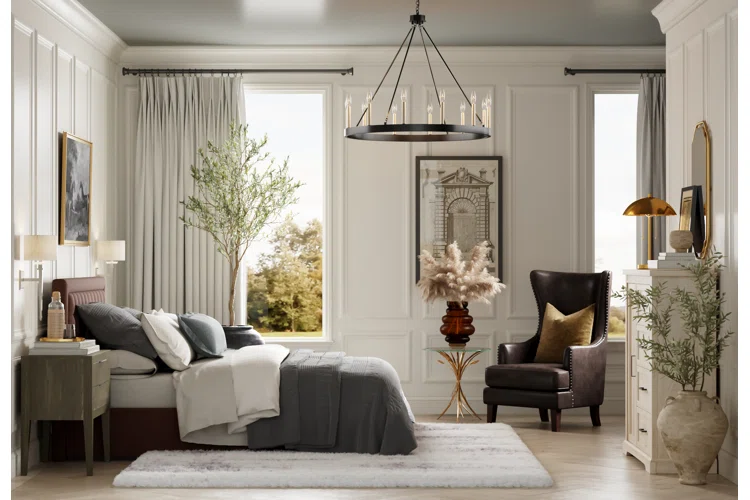
With the right patterns and textures in place, it’s time to cast a warm, inviting glow on your Victorian-style decor with carefully selected lighting.
Lighting in the Victorian era was soft and atmospheric, helping to create a space of gentle elegance.
Opt for vintage-inspired chandeliers or lamps with intricate details. Place them strategically around your room to enhance the richness of your decor.
Look for shades in warm colors and materials like glass and brass for authenticity. The use of dimmer switches can also help replicate the gaslight glow of the period.
But, it’s not just about the fixtures; the placement and intensity of your lights matter too. Balance is key; ensure every corner of your room is well-lit, yet soothing.
Modern Victorian Decor Accessories

Now that your lighting is set, let’s delve into Victorian decor accessories, an essential aspect that can truly bring your modern Victorian decor to life. These details are often what set this style apart.
Start with an antique clock or a gilded mirror, adding a touch of elegance and history. Think intricate picture frames and delicate porcelain vases for a touch of sophistication. Velvet cushions and floral rugs can add texture and warmth to the space.
But once again, balance is key. Don’t go overboard. The accessories should complement your space, not overwhelm it. Be selective, choose pieces that resonate with you and your space.
With these tips, you’ll have a Victorian-inspired space that’s both modern and timeless.
Blending Modern and Victorian Elements

Blending modern and Victorian elements in your decor isn’t as challenging as you might think. The key is balance.
Start with your modern base, then infuse it with Victorian touches. A sleek, contemporary sofa can be adorned with ornate, Victorian-style pillows or throws. A minimalist dining table can be dressed up with an antique chandelier overhead.
In your kitchen, pair high-tech appliances with Victorian-inspired cabinetry or an elaborately framed mirror.
You can add Victorian charm to a modern bathroom with a claw-foot tub and vintage accessories.
And don’t forget your walls; modern art can live harmoniously with traditional wallpaper patterns.
The result will be a unique, stylish blend of old and new that’s truly you.
Final Thoughts
So, you’ve discovered the charm of modern Victorian decor.
By choosing period-inspired furniture, traditional colors, and classic patterns, you’ve infused a sense of history into your contemporary home. Your lighting and accessory choices will add the final Victorian touches.
Blend old and new for a seamless look and transform your home with this timeless, elegant style.
Home Repair
Roof Repair vs. Roof Replacement in Virginia Beach: Which is the Best Option?

Roof repair or replacement is a crucial decision for homeowners in Virginia Beach. The roof is an essential component of any home, protecting it from the elements and ensuring the safety and comfort of its occupants. Over time, roofs can become damaged due to wear and tear, weather conditions, or other factors. When this happens, homeowners must decide whether to repair or replace their roof along with discovering the cost to replace roof in Virginia Beach.

In some cases, a simple repair may be sufficient to fix the issue and extend the life of the roof. For example, if a few shingles are missing or damaged, a roofer can replace them and ensure that the roof is watertight. However, if the damage is more extensive, such as a large hole or significant structural damage, a replacement may be necessary. A professional roofer can evaluate the extent of the damage and provide advice on the best course of action.
Understanding Roof Repair and Replacement
When it comes to maintaining a home, the roof is one of the most critical components. Over time, roofs can become damaged, whether due to age, weather, or other factors. When this happens, homeowners are often faced with the decision of whether to repair or replace their roof.
Roof repair is often the preferred option when the damage is minor. Repairing a roof can be a cost-effective way to address issues such as leaks, missing shingles, and damaged flashing. Roof repair costs can vary depending on the extent of the damage, the type of roof, and the materials needed. In general, roof repairs can cost anywhere from a few hundred to a few thousand dollars.
However, if the damage is extensive, a full roof replacement may be necessary. Full roof replacement involves removing the existing roof and installing a new one. This can be a more expensive option, but it is often necessary when the roof is beyond repair. The cost of a new roof can vary depending on the size of the roof, the type of materials used, and the complexity of the installation. In general, a full roof replacement can cost anywhere from several thousand to tens of thousands of dollars.
When deciding between roof repair and replacement, there are several factors to consider. One of the most important is the age of the roof. If the roof is nearing the end of its lifespan, it may be more cost-effective to replace it rather than continue to make repairs. Additionally, the type of roofing material used can also impact the decision. Some materials, such as asphalt shingles, have a shorter lifespan than others, such as metal or slate.
Another factor to consider is the durability and longevity of the roofing materials. While some materials may be more expensive upfront, they may last longer and require fewer repairs over time. For example, metal roofing is known for its durability and can last up to 50 years or more with proper maintenance.
Choosing Between Repair and Replacement
When it comes to choosing between repairing or replacing a roof, there are several factors to consider. The decision ultimately depends on the owner’s experience, concerns, and budget. A professional roof inspection can also help determine the extent of the damage and provide recommendations for the best course of action.
If water damage, hail damage, leaks, or flashing issues are present, a repair may be possible. However, if the damage is extensive or the roof is nearing the end of its lifespan, a replacement may be necessary. In some cases, insulation may also need to be replaced or added to improve energy efficiency.
Total cost is also a significant factor to consider. Roof repair costs can range from a few hundred to a few thousand dollars, while replacements can cost upwards of $10,000 or more. It is essential to research and compare prices from different contractors to ensure a fair and reasonable price.
Warranties are another consideration. Most contractors offer warranties for their work, but the length and coverage can vary. It is crucial to read and understand the warranty before making a decision.
Roofing Options in Virginia Beach

When it comes to roofing options in Virginia Beach, homeowners have two main choices: roof repair or roof replacement. The decision between the two depends on the extent of the damage and the age of the roof. Here are some factors to consider:
Roof Repair
Roof repair is a good option when the damage is minor and limited to a specific area of the roof. It is also a more affordable option than roof replacement. Local pros such as Quality Built Exteriors and Best Roofing of Virginia offer roof repair services in the Virginia Beach area.
Roof repair may involve fixing leaks, replacing damaged shingles, or repairing flashing. Owens Corning and GAF are two popular roofing material brands that offer high-quality products for repair purposes.
Roof Replacement
Roof replacement is necessary when the damage is extensive, the roof is old, or there are multiple issues that cannot be repaired. A new roof can improve energy efficiency, increase the value of the home, and provide peace of mind.
Chesapeake and Hampton residents can find reputable roofing companies that offer roof replacement services. Owens Corning and GAF are also popular brands for new roof installations.
It is important to choose a reputable and experienced roofing contractor for both repair and replacement services. Homeowners should also consider the warranty offered by the roofing material manufacturer and the contractor.
Conclusion
In conclusion, when it comes to deciding between roof repair and roof replacement in Virginia Beach, homeowners should carefully consider the condition of their roof, budget, and long-term goals for their property. While repairs can be a cost-effective solution for minor damage, extensive damage or an aging roof may require a full replacement.
It is important to work with a reputable roofing professional who can assess the condition of the roof and provide recommendations for repair or replacement. Homeowners should also consider other exterior home improvement projects such as siding replacement or window replacement to enhance the overall appearance and value of their property.
In addition, Virginia Beach residents may also need to address storm damage and other repairs related to carpentry or other areas of the home. It is important to find a reliable network of repair services to ensure that all necessary repairs are completed in a timely and efficient manner.
Overall, by taking a proactive approach to roof maintenance and repair, Virginia Beach homeowners can protect their investment and ensure the longevity of their property.
Design Tips
Seamless Gardening and Maintenance: Elevating Poolside with BA-EDI Exterior Access Doors

Maintaining a beautiful poolside area is important for outdoor lovers. It’s a place of relaxation, enjoyment, and making memories. To keep poolside at its best, efficient gardening and maintenance are essential.
Traditional methods can be time-consuming and challenging. But there’s a solution: BA-EDI exterior access doors. Considered a game-changer, they make poolside maintenance a breeze. This blog will introduce you to these innovative doors and how they can elevate the poolside experience.
The Benefits of Seamless Gardening and Maintenance
A well-kept poolside area isn’t just about aesthetics; it also impacts the functionality and safety of an outdoor space. Seamless gardening and maintenance are vital to enhancing the poolside experience.
Traditional maintenance methods often present challenges, requiring time, effort, and specialized tools. These challenges can deter homeowners from maintaining their poolside areas to their ability. As a result, they may miss out on the full potential of their outdoor space.
Introducing BA-EDI Exterior Access Doors
The BA-EDI exterior access doors are innovative solutions that address these challenges head-on. These access doors are versatile and designed to provide easy access to various components and utility connections around the pool. They can be effortlessly integrated into the landscape, allowing quick and convenient access.
These doors are not limited to one application; they can provide access to pool equipment, such as pumps, filters, and chlorination systems—making maintenance and repairs more efficient. They also offer easy access to the wiring and components of landscape lighting systems, simplifying maintenance and upgrades.
Moreover, the access doors can conceal utility connections or control panels related to the pool or outdoor kitchen, offering a clean and streamlined look while allowing effortless maintenance access.
How BA-EDI Exterior Access Doors Can Elevate Poolside
Discover how BA-EDI exterior access doors can take a poolside to the next level. These innovative doors are about to transform how pool owners or users enjoy outdoor space.
- Effortless Maintenance
Imagine accessing pool equipment without the hassle of disassembling or excavating areas around the pool. BA-EDI exterior access doors enable quick and easy access to essential components, ensuring that maintenance and repairs can be completed with minimal disruption. No more digging or removing large portions of the landscaping.
- Enhanced Aesthetics
Aesthetics play a significant role in the enjoyment of a poolside area. BA-EDI exterior access doors offer a seamless integration into a landscape design. You can customize these doors to match the surrounding materials and seamlessly blend with the outdoor decor. This ensures the poolside area maintains a polished and cohesive look while providing access when needed.
- Safety and Accessibility
Accessibility and safety are paramount when it comes to poolside areas. The BA-EDI exterior access doors are designed with these factors in mind. They provide a safe and easy way to access equipment and connections, reducing the risk of accidents or injuries. These doors also ensure that essential utilities remain easily accessible for maintenance and control.
- Versatility
One of the most remarkable features of BA-EDI exterior access doors is their versatility. They can be used in various applications, catering to different needs around the poolside area. From concealing unsightly control panels to offering a gateway to essential equipment, these doors adapt to your requirements seamlessly.
Conclusion
The BA-EDI exterior access doors are a game-changing addition to a poolside area. They make gardening and maintenance more straightforward and efficient while enhancing outdoor space’s aesthetic appeal. Say goodbye to the hassles of traditional maintenance and welcome a more enjoyable and accessible poolside experience. It’s time to transform a poolside into a pristine and welcoming oasis—perfect for relaxation, recreation, and creating cherished memories.
SPONSORED
Home Care & Living
6 Must-Haves Every Homeowner Should Invest In Their New Home

Purchasing a new home marks the beginning of an exhilarating adventure filled with countless opportunities. Regardless of whether you’re stepping into homeownership for the first time or you’re an experienced real estate enthusiast, there are crucial investments that should always be on your radar when settling into a fresh abode. Let’s explore six must-have investments every homeowner should consider when settling into their new home.
- Home Security Systems: Protecting What Matters Most
Thanks to the latest technological advances, modern security systems offer unparalleled comfort knowing that, whether you’re inside your home or far from it, your loved ones and your precious possessions remain safeguarded. Giving you this peace of mind is priceless.
- Energy-Efficient Appliances: A Win-Win for Your Wallet and the Planet
In our current environmentally aware society, the significance of energy-efficient appliances is steadily rising. These appliances have dual benefits; help lower your carbon footprint and also place more money back in your pocket through reduced utility bills.
Moreover, when you consider replacing outdated HVAC systems with modern, high-efficiency models, you not only gain better climate control but also enhance your savings even further.
- Proper Insulation and Weatherproofing: Comfort and Energy Savings
While it might not be as thrilling as picking out living room decor, putting your money into adequate insulation and weatherproofing for your new home is just as essential. It’s crucial to focus on specific areas – the attic and walls. Here’s another tip, don’t forget to properly seal any gaps in your windows and doors. Proper weatherproofing will not only give your family comfort but save energy as well.
- Landscaping and Tree Care: Beauty and Safety
Improving the visual charm of your new home isn’t solely a matter of appearances; it’s also a concern for safety. Trees that are unhealthy or damaged pose potential risks to your home and your family, making regular tree maintenance and trimming by an arborist from Aurora vital for ensuring both safety and an appealing aesthetic.
In addition to tree care, the significance of landscaping cannot be understated in creating an inviting outdoor environment. Whether you decide to maintain a lush lawn, create a captivating garden, or incorporate hardscape features such as patios or walkways, investments in landscaping can substantially elevate your home’s overall value and enhance its curb appeal.
- A Reliable Estate Plan: Protecting Your Legacy
Although it may not be a physical investment like the ones previously discussed, giving thought to estate planning in Ottawa is a crucial matter for homeowners. Your new home stands as an asset that should find its place in your estate plan. Estate planning serves the vital purpose of ensuring that, in the unfortunate event of your passing, your property and assets are allocated in accordance with your desires.
Seeking counsel from a seasoned estate planning lawyer can prove invaluable in producing a comprehensive plan. Such a plan not only safeguards your home but also extends to secure the financial welfare of your cherished ones. It provides peace of mind, knowing that your legacy and the well-being of your loved ones are safeguarded through a well-considered estate plan.
- High-Quality Flooring: The Foundation of Your Home
The type of flooring you choose sets the mood for your interior design, effectively moulding the ambiance of your living area. Opting for superior flooring options, such as engineered hardwood flooring from Toronto, has the potential to work wonders in transforming your living space while simultaneously boosting your property’s value.
Engineered hardwood flooring seamlessly marries the timeless beauty of wood with the resilience of modern engineering. It presents a luxurious and sophisticated appearance that complements a wide range of interior styles.
The investment in your new home extends far beyond decorating and adding personal touches. By making these careful investments, you’re laying the foundation for crafting a warm, secure, and enjoyable living environment that you and your loved ones can cherish for years to come.
Design Tips
Unlocking Elegance: How Exterior Flush Access Panels Elevate Landscape Design in Outdoor Sanctuaries

One way of elevating landscape design is by creating a smooth and undisrupted architectural flow. It means concealing disruptive irrigation controls and electrical outlets that compromise the outdoor setting’s aesthetics.
Exterior flush access panels are the best solution to hide these components and seamlessly integrate utility components while maintaining the landscape’s design integrity. These access panels completely conceal these elements to create a visually captivating and functional landscape, whether oriental, woodland, or English garden style.
Unlock the outdoor space’s potential and explore how exterior flush access panels transform outdoor sanctuaries!
Incorporating Exterior Flush Access Panels into Landscape Design
Landscape designs are assets that increase the property’s value and create harmonious spaces that merge nature and architecture. Landscapers and architects integrating exterior flush access panels into their designs are revolutionizing outdoor space’s functionality by enhancing the area while granting quick and safe access to construction professionals and service teams when maintaining and upkeeping vital electrical elements.
Design Possibilities, Materials, and Placement Options
Exterior flush access panels such as the XPA exterior flush access panel offer various benefits. Their flexibility allows construction professionals and engineers to maximize their advantages, such as utilizing the panels as concealed storage solutions or customizing them with designs to blend with the architectural elements of the landscape.
Additionally, the versatility of the panels helps them blend with any natural elements of the landscape, whether a stone, wooden, or metallic wall or finish.
Aesthetics and Utility in Outdoor Sanctuaries
Landscape design is an art that balances aesthetics and functionality. Exterior flush access panels excel in ensuring balance. Its paintable frame and panel contribute to the landscape’s overall aesthetics and enhance the area’s utility by elegantly hiding shut-off valves and electrical switches from plain sight.
Practical Tip on Selecting the Best Access Panel
Access panels have several makes and models, and choosing the right one for outdoor use may be challenging. One way to ensure you select the right exterior flush access panels is to determine their purpose beforehand. With this purpose in mind, you can easily find a cohesive, long-lasting board with durable materials and weather-resistant capability.
Installation Tips to Ensure a Functional Exterior Access Panel
The installation process of the exterior flush access panels is easy. Most homeowners and property managers can DIY install it. However, to ensure it effectively protects the components, it must perfectly fit to its installation surface. The firm’s edges must also be weather-stripped to prevent air, dust, and water from entering the panel—reducing the risk of potentially damaging it.
Keeping the Access Panels Highly Functional
Proper maintenance is also vital for the panels to last for years. Homeowners, property managers, and caretakers must regularly check the boards for signs of damage and corrosion.
Regularly clean it with a cloth and mild soap or detergent to remove the dirt without damaging the paint. Lubricate the hinges and locks with silicone-based lubricant for smooth operation and rust prevention. Also, replace the seals when needed to strengthen its weather-resistance feature. Consistent inspection will guarantee they remain functional while preserving their aesthetic appeal.
Wrapping Up
Incorporating exterior flush access panels into landscapes enhances its visual appeal and functionality. These panels integrate utility components such as electrical switches, wires, and shut-off valves to maintain the design’s optical flow and integrity. You can guarantee a visually captivating landscape design that reflects a unique style and personality by hiding these elements.
Unlock outdoor space’s full potential with exterior flush access panels and enjoy limitless possibilities, materials, and placement options—to integrate utility elements and elevate landscape design seamlessly!
SPONSORED
Landscaping
Elevate Your Outdoor Space: Designing a Stunning Landscape with XPA Exterior Flush Panels
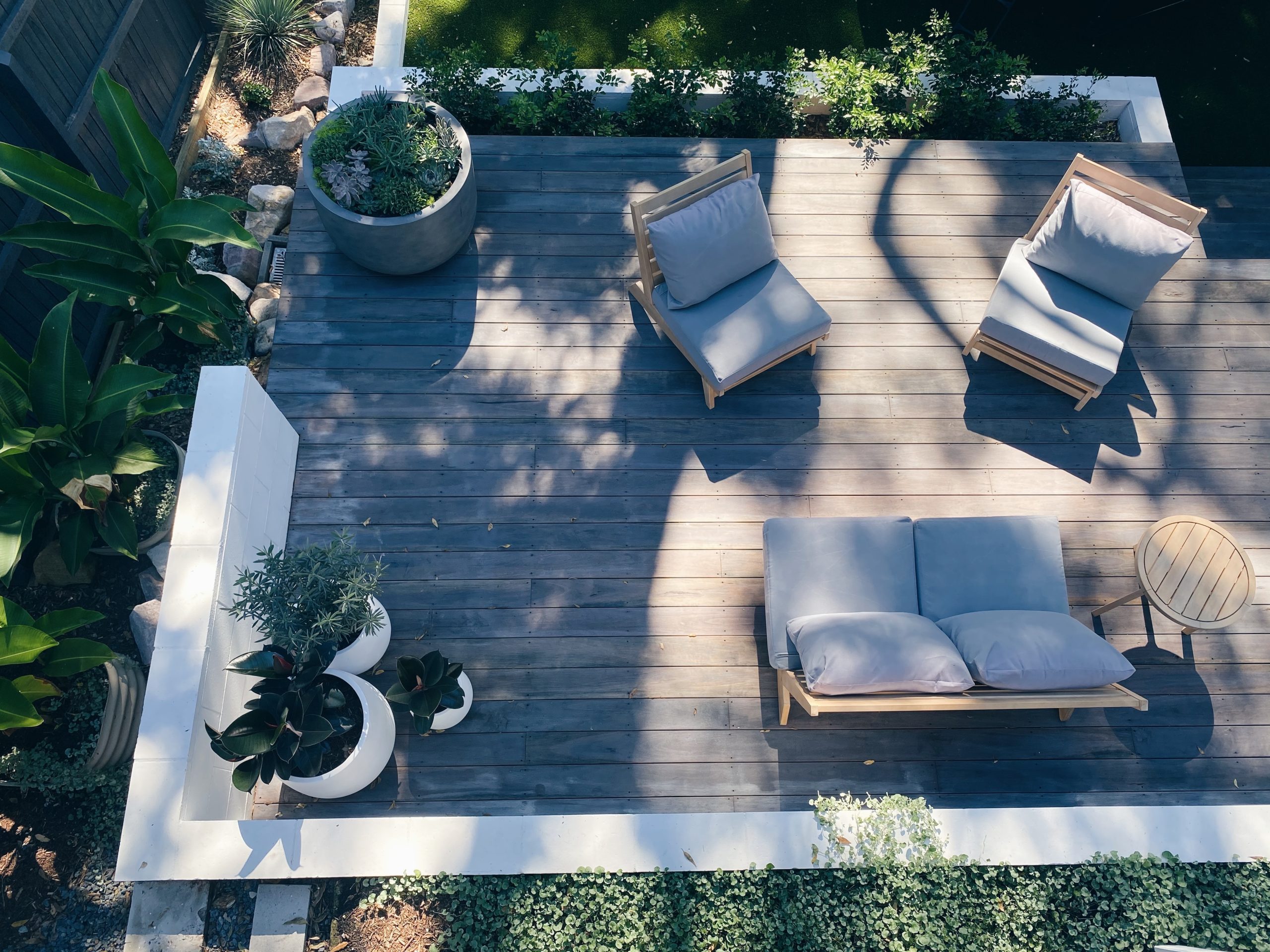
Outdoor spaces have gained significant importance, especially in today’s fast-paced world. They are now more than just regular backyards and gardens.
Outdoor space design and utilization are crucial in enhancing our overall quality of life. One significant element in creating stunning outdoor areas is using XPA exterior flush panels. These access doors not only add aesthetic appeal but also offer practical advantages.
In this article, we’ll talk about the significance of outdoor spaces, delve into what XPA exterior flush panels are, and discuss their numerous benefits.
We’ll also highlight their role in providing peace of mind by safeguarding access to outdoor electrical components, like lights and gas meters.
Lastly, we’ll discuss how landscaping is pivotal in crafting welcoming environments within these outdoor spaces.
Understanding the Importance of Outdoor Spaces in Modern Living
Modern living gives a greater emphasis on outdoor spaces for several reasons:
- Wellness and Relaxation: Outdoor spaces give you a place when you need a timeout from your busy life. They serve as a refuge from daily stressors and allow you to unwind and connect with nature.
- Entertainment and Socialization: They offer the perfect backdrop for gatherings, parties, and other activities, promoting social bonds and fostering community spirit.
- Remote Work and Learning: The COVID-19 pandemic showed us the need for functional outdoor spaces where people can work, study, and stay connected within a safe and open environment.
Overview of XPA Exterior Flush Panels
The XPA exterior flush access panel is a versatile building material that can boost an outdoor space’s aesthetics and functionality.
It is a specialized access panel that blends well into the exterior environment. Made from heavy-duty aluminum with a powder-coated finish, it withstands various environmental conditions. This makes it ideal for outdoor applications.
This access door offers the following key advantages:
- Durability: Because it is made from high-quality materials, an XPA exterior flush panel can withstand harsh weather conditions and daily wear and tear.
- Customizability: These panels come in various sizes, colors, and finishes—allowing you to match any outdoor aesthetic.
- Ease of Installation: These panels are designed for easy installation, whether for fencing, privacy screens, or decorative elements.
- Low Maintenance: XPA exterior flush panels require minimal upkeep, saving you time and effort in the long run.
- Aesthetic Appeal: The sleek and modern design of XPA exterior flush access doors complements various architectural styles, enhancing the overall aesthetic of your outdoor space.
- Security: Lastly, XPA exterior panels provide secure access to outdoor electrical components, water valves, gas meters, and similar system controls. Installing these doors gives you peace of mind by safeguarding them against unauthorized access or tampering.
Protecting Access to Outdoor Electrical Components
One crucial application of an XPA exterior flush access door is its ability to protect access to outdoor utility components, such as outdoor lights and shut-off valves. This is particularly important for safety and functionality.
These panels protect these components from the elements by providing a secure barrier—preventing damage and prolonging their lifespan.
Securely covering access points to outdoor electrical and utility components prevents unwanted tampering, accidents, and damage.
Installing XPA exterior flush panels gives you peace of mind, knowing that your outdoor utility installations remain safeguarded from environmental factors, vandalism, or potential hazards.
Additionally, the discreet design ensures the panels blend seamlessly with the surrounding landscape, maintaining the aesthetic harmony of the outdoor environment.
The Role of Landscaping in Creating a Welcoming Environment
Landscaping is the key to transforming outdoor spaces into welcoming environments, whether for a residential unit or a commercial building. Here are some ways landscaping can enhance your outdoor living area:
- Softening Harsh Lines: Landscaping can soften the architectural lines of buildings and structures, creating a harmonious blend of nature and modern design.
- Creating Focal Points: Well-placed plants, trees, or water features can draw attention to specific areas, creating balance and visual interest.
- Privacy and Screening: Landscaping can work in tandem with flush panels to provide privacy and enhance the overall beauty of the outdoor space.
- Sustainability: Sustainable landscaping practices, such as native plant selection and efficient irrigation systems, contribute to environmental preservation and a greener, healthier outdoor space.
Wrapping It Up
Outdoor spaces have become integral to modern living, offering relaxation, socialization, and productivity opportunities. XPA exterior flush access panels are versatile in designing these spaces— offering durability, customizability, and security. Paired with a well-planned landscape, these panels provide a harmonious and welcoming environment that invites you to make the most of your outdoor areas.
Sponsored Post
General Gardening
The Benefits of Evergreen Trees – Why They’re a Great Addition to Your Garden

Evergreen trees are like the celebrities of gardens. They always stay green, never take a break and know how to put on a show all year. You can witness this performance. Get your very own evergreen and shop evergreen trees at gardenersdream.co.uk because who wouldn’t want to have a piece of this perennial charm?

These botanical wonders are famous for their vibrancy making them the top choice for those who desire year round beauty in their outdoor spaces. These trees will not only add beauty to the surroundings but also provide privacy by forming a dense leafy barrier that remains intact all year round.
One might say that they’re a bit similar to privacy fences. With an extra advantage. They offer protection and habitat for birds and other wildlife. Now let’s delve a little deeper into evergreens and uncover why they are an addition to any garden or landscape.
The Basics of Evergreens
Evergreen trees have a most important place in the world of trees. Unlike trees that shed their leaves in autumn evergreens retain theirs. These trees come in shapes, sizes and colors ranging from needle leaved beauties, to leafy divas. Some people even adorn them with flowers, cones or seeds while others appreciate the textures and colors of their bark.
They are, like the masters of disguise in the plant world, seamlessly blending into any landscape and adding a touch of color throughout the year. Evergreen plants have more to offer than their appeal. They also serve purposes, one such offering the offering of privacy, perhaps even shelter and enhancing the beauty of gardens or parks.
Conifers, a category of evergreen plants known for their shape, often become the focal point in landscaping projects. On the other hand, evergreen shrubs are highly valued for their versatility and ability to maintain their appearance throughout the year.
Why Choose Evergreens?
Evergreens offer a multitude of benefits that last throughout the year:
Winter Charm
During the winter months many other plants go dormant whilst evergreens continue to thrive and keep adding colors and interesting textures to your garden. Moreover these resilient plants also serve as shelters for birds when temperatures plummet.
Shield against Wind and Privacy
Evergreen trees have an ability to provide protection from winds and create privacy screens. This makes them perfect for bordering gardens.
Heroes Of Ecosystems
Evergreen trees are components of ecosystems serving as sanctuaries and food sources for wildlife. They also contribute to the prevention of soil erosion and the purification of air, by absorbing carbon dioxide and other harmful pollutants.
Low Maintenance
Their stunning flowers will not only catch your eye, but will also require some upkeep and they have a certain resistance to many diseases and pests making them an ideal option for individuals who might be looking to create a low maintenance garden that flourishes effortlessly.
Privacy Screens
One of the many good things about them is that they can act as barriers for your garden blocking out any unsightly views and minimizing the noise from nearby roads that may act as a nuisance. They effortlessly blend into your area enhancing its beauty while also providing advantages.
In Conclusion

Don’t overlook the important role evergreens play in maintaining biodiversity! These trees offer fruits. Seeds that support wildlife contributing to the diversity of species, in their own special way. Beyond their appeal they actively absorb particulate matter from the air playing a role in enhancing air quality.
So if you’re looking to infuse year round charm, privacy and eco friendly advantages into your outdoor haven investing in evergreen trees is like securing a VIP ticket to the landscaping show, on earth!
Landscaping
The Importance of BA-EDI Exterior Access Door for Sprinklers and Landscape Lights
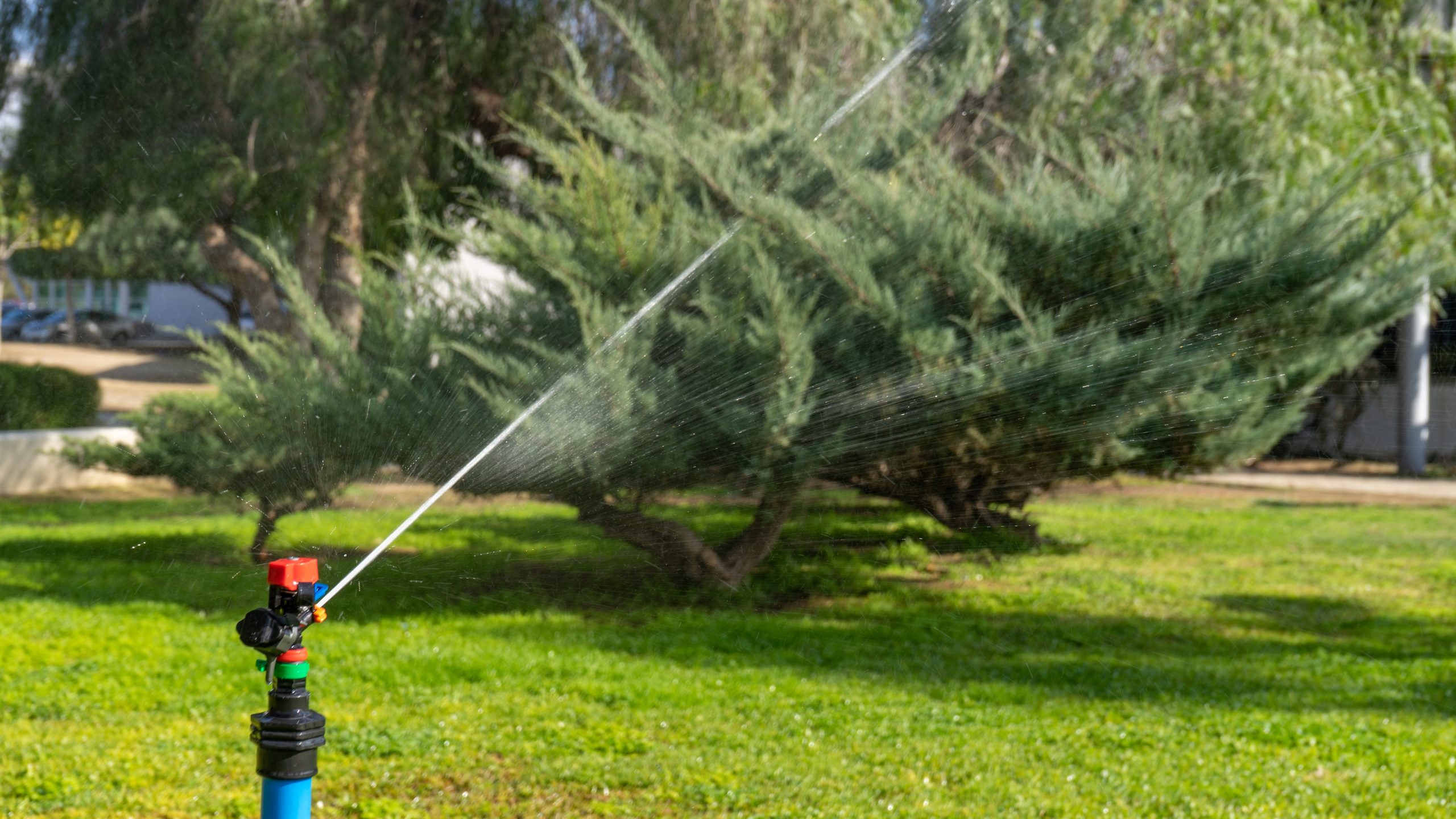
In landscaping, two things are certain: we want our outdoor spaces to look beautiful, and we want them to be safe.
Automatic sprinkler systems and landscape lighting play crucial roles in achieving these goals. But there’s something behind the scenes that often goes unnoticed: access doors. These unassuming panels safeguard our sprinkler systems and lighting from the harsh elements.
In this article, we’ll discuss the vital role of access doors and why they’re a must for professionals in the landscaping and outdoor electrical industry.
Understanding Access Doors
Access doors act as protective shields for your outdoor systems, like sprinkler controls, landscape lighting transformers, and outdoor electrical outlets. They provide easy access to these components while keeping out unwanted visitors like moisture, dust, and other external factors.
Safeguarding Automatic Sprinkler Systems
One of the main functions of an exterior access door in gardening and landscaping is protecting automatic sprinkler systems.
The following are the different ways these unassuming panels keep sprinkler systems safe:
- Keeping Moisture at Bay
One of the biggest enemies of sprinkler systems is moisture. Over time, water can seep into the pipes and components, causing corrosion and reducing efficiency. Access doors offer a protective barrier, ensuring that rain, snow, or sprinkler overspray doesn’t find its way into critical parts of the system. - Easing Maintenance
Regular maintenance is essential for sprinkler systems. Access doors make it easy for professionals to inspect and service systems without digging up the entire setup. This saves time and helps catch potential issues before they become major problems. - Preventing Contamination
Dust, debris, and critters can wreak havoc on sprinkler systems. Access doors act as a barrier, preventing these unwanted elements from getting inside and causing blockages or damage. This helps maintain the system’s efficiency and lifespan.
Protecting Landscape Lighting Systems
The other thing access doors are good for when it comes to landscaping is protecting your garden lighting.
The following are simple ways that exterior access doors safeguard garden lights:
- Moisture Resistance
Outdoor lighting systems are typically exposed to the elements 24/7. Access doors ensure rain and moisture don’t go near vital electrical connections. This extra layer of protection prevents shorts and electrical hazards from happening. This means safer outdoor spaces for everyone. - Durability in Dusty Environments
Dust and dirt can build up on electrical components over time. This accumulation of dirt affects their performance and lifespan. Access doors create a barrier that keeps these particles out, ensuring that your lighting system stays functional for years to come. - Enhanced Accessibility
Access doors make installing, replacing, or repairing lighting systems easier. Professionals can access wiring and connections without digging up the landscape, minimizing disruption and cost.
The BA-EDI Exterior Access Door: Features and Benefits
Choosing the right access door for your outdoor sprinkler and lighting systems requires a reliable and functional solution.
The BA-EDI exterior access door is a product that professionals in the landscaping and outdoor electrical industry can count on.
Let’s take a look at some of its key features and benefits:
- Robust Construction
The BA-EDI exterior access door can withstand the toughest outdoor conditions. Constructed from zinc-coated galvannealed steel, it offers excellent durability—ensuring your access point remains intact and secure, even in extreme weather. - Weather Resistance
This access door keeps moisture, dust, and other environmental elements away from sprinklers and electrical systems. It has a high-quality neoprene gasket that keeps it as airtight as possible. It protects your sprinkler and lighting system components from water and debris, maintaining their functionality and longevity. - Easy Installation
Professionals in the landscaping and outdoor electrical industry will appreciate how easy and simple it is to install the BA-EDI. It comes with pre-drilled holes and mounting tabs, making the setup process on walls and ceilings straightforward and hassle-free. - Secure Latching Mechanism
One of the key features access doors provide is security. The BA-EDI features a secure, tamper-proof internal release latching mechanism. This gives you peace of mind that your outdoor systems are protected from unauthorized access. - Aesthetic Appeal
While functionality is crucial, aesthetics matter, too. The BA-EDI’s clean and streamlined design blends seamlessly with any outdoor landscape, ensuring that it doesn’t detract from your project’s overall look. - Variety of Sizes
The BA-EDI comes in different sizes to accommodate distinct requirements. Whether you’re working on a small residential project or a large commercial installation, you can find the right size to fit your needs. - Customization Options
If you have specific requirements or need a unique solution, the makers of the BA-EDI offer customization options. This flexibility ensures you get the right access door to protect your outdoor systems effectively.
Wrapping It Up
Access doors may not be glamorous, but they’re undeniably crucial for protecting automatic sprinkler systems and landscape lighting. They shield these systems from moisture, dust, and other external threats, ensuring their longevity and functionality.
For professionals in the landscaping and outdoor electrical industry, recognizing the importance of access doors is a key step toward creating beautiful, safe, and durable outdoor spaces.
Sponsored post
Landscaping
Introduction to Landscape Edging: Basics for Beginners

If you’ve ever wondered, “What’s the big deal about landscape edging?” you’re not alone. It’s often overlooked, but it’s a crucial part of any outdoor space. It’s not just about aesthetics; it’s also about practicality and maintenance. Whether you’re a green thumb or a gardening newbie, understanding landscape edging basics is key. So, let’s dive in and demystify this essential gardening skill.
Understanding the Importance of Landscape Edging
You’re probably wondering why garden edging is so important, aren’t you? Landscape edging plays a pivotal role in maintaining the aesthetics of your outdoor space. It creates a well-defined boundary between different areas, such as the lawn and flower beds. This not only enhances the visual appeal but also makes maintenance easier. Without proper edging, your carefully planted flowers and shrubs may get overrun by aggressive lawn grass. Furthermore, edging acts as a barrier, preventing soil erosion and the spread of mulch. It provides a crisp, clean line that adds structure to your garden, making it look neat and organized. So, understanding the importance of landscape edging is crucial for anyone interested in maintaining a beautiful and well-manicured lawn or garden.
Different Types of Landscape Edging Materials
Let’s dive right into the different materials you can use to edge your garden, each with its own unique benefits and drawbacks. Landscape edging can be crafted from an array of materials, including wood, metal, stone, plastic, and brick. Wood lends a natural, rustic aesthetic, though it may decay over time. Metal, particularly steel or aluminum, offers durability and an industrial feel but may rust. Stone and brick provide a classic, timeless look and are incredibly resilient, but they’re also more labor-intensive to install. Plastic is affordable and easy to install, yet it can become brittle and crack under extreme weather conditions. Picking the right material depends on your garden’s needs, your aesthetic preferences, and your budget.
Step-by-Step Guide to Installing Your Landscape Edging
Here’s a step-by-step guide that will help you install your garden border, no matter what material you have chosen. First, mark the area where you plan to install the edging. Use a spray paint or a garden hose to outline the border. Second, dig a trench along the marked area. The trench should be as deep as the height of your edging material. Third, place your edging material into the trench. Make sure it fits snugly and is even with the ground level. Fourth, backfill soil into the trench to secure the edging in place. Lastly, compact the soil using a tamper. Now, you have a professional-grade garden border that will serve as a boundary for your gardening activities.
Maintenance Tips for Your Landscape Edging
Maintaining your garden border isn’t as hard as it seems, especially if you know some handy tips and tricks. Regular inspection is key to keeping your landscape edging in top shape. Look out for any signs of wear and tear or damage, and repair or replace sections as necessary. Cleaning is also essential. A simple wipe down with a damp cloth can remove dirt and prevent the build-up of debris that might cause damage over time.
Another tip is to regularly reassert the border. Over time, edging can become displaced due to weather conditions or natural ground movement. Simply pushing the edging back into place can prevent this. Lastly, consider applying a protective sealant annually to extend the life of your edging. Proper maintenance will ensure your landscape edging remains effective and visually appealing for years to come.
Common Mistakes to Avoid in Landscape Edging
It’s easy to make errors when setting up your garden border, but understanding common mistakes can help you avoid them. Firstly, avoid choosing the wrong materials. Not all edging materials are created equal. Some may not hold up well in your climate, while others may not match the aesthetic of your landscape. Secondly, don’t neglect proper installation. Poorly installed edging can shift, causing your garden borders to lose their shape over time. Thirdly, avoid ignoring your garden’s natural flow. The edging should complement the existing lines of your landscape, not fight against them. Lastly, don’t forget to maintain your edging regularly. Even the best materials can deteriorate without proper care. By avoiding these mistakes, you can create a beautiful and lasting border for your garden.
Frequently Asked Questions
- What Are the Costs Associated With Landscape Edging?
Landscape edging costs vary significantly based on material choice and project scale. For instance, plastic edging is economical, while metal or stone edging are pricier. Professional installation also adds to the total cost.
- Can I Install Landscape Edging Myself or Should I Hire a Professional?
Yes, you can install landscape edging yourself. It requires some effort and time, but it is doable with the right tools and instructions. However, hiring a professional ensures expertise and saves time.
- Is It Possible to Change or Redesign My Landscape Edging Once It’s Installed?
Yes, it is possible to change or redesign your landscape edging after it has been installed. However, the process may be labor-intensive and require certain tools, depending on the type of edging used.
- How Does Weather Affect the Durability of Landscape Edging Materials?
Extreme weather conditions can impact the durability of landscape edging materials. Prolonged exposure to harsh sun, heavy rains, or freezing temperatures may cause materials to fade, crack, warp, or erode over time.
- Can Landscape Edging Help Control Weed Growth?
Yes, landscape edging can indeed assist in controlling weed growth. It creates a physical barrier that prevents weeds from spreading into your garden or lawn, thus maintaining the neat appearance and health of your landscape.
Conclusion
In conclusion, landscape edging is an essential aspect of a well-kept garden. From choosing the right materials to understanding how to install and maintain it, every step is crucial. Avoiding common mistakes will ensure your edging serves its purpose effectively. Remember, a well-edged landscape doesn’t just enhance aesthetics, it also makes maintenance easier. So, don’t underestimate the power of good landscape edging.
General Gardening
Eco-Wonderland: Unveiling the Greenest City

When it comes to environmental sustainability, the modern world is facing a pivotal moment. With growing concerns about climate change and its repercussions, the concept of a ‘Green City’ has taken center stage. Today, we embark on a journey to unveil one of the most remarkable examples of urban environmental initiatives – the Greenest City, a visionary movement that’s transforming a bustling metropolis into an eco-wonderland.
The Rise of Green Cities
In a world where urbanization is on the rise, cities are at the heart of both the challenge and the solution to environmental issues. The idea of a Green City is more than just planting a few trees; it’s a comprehensive approach to urban planning and development. It’s about crafting urban landscapes that coexist harmoniously with nature while embracing sustainability, clean energy, and a commitment to reducing their carbon footprint.
Greenest City Initiatives
One city that has been making significant strides towards becoming an eco-wonderland is Washington, D.C. The capital of the United States has been steadily implementing a series of Greenest City Initiatives aimed at enhancing sustainability, reducing environmental impact, and promoting green living. These initiatives are not only setting an example for other cities but are also improving the quality of life for the people who call the city home.
Washington, D.C.: Leading the Way
Sustainable Transportation
The Greenest City initiatives in Washington, D.C. have been prominently focused on creating an eco-friendly transportation network. The city has invested heavily in developing an extensive bicycle lane network, making it easier for residents and visitors to opt for two-wheeled, non-polluting transportation. This initiative aims to reduce traffic congestion and lower emissions, while promoting healthier and more active lifestyles.
Renewable Energy Revolution
Another remarkable facet of Washington, D.C.’s journey towards becoming a Green City is its commitment to renewable energy. The city has set ambitious goals to increase its reliance on clean energy sources, such as wind and solar power. This shift not only contributes to a reduction in greenhouse gas emissions but also ensures a more stable and sustainable energy supply for the city.
Green Spaces Galore
Green spaces and parks play a pivotal role in the creation of an eco-wonderland. D.C. has been expanding and preserving its green spaces at an impressive rate. The city’s dedication to creating more parks and maintaining its urban forests not only enhances the aesthetic appeal but also helps in mitigating the urban heat island effect and improving air quality.
Recycling and Waste Reduction
The Greenest City initiatives also emphasize responsible waste management. Washington, D.C. has instituted robust recycling programs to reduce landfill waste. This not only conserves resources but also minimizes the environmental impact of waste disposal, all while setting an example for residents to follow suit.
Sustainable Building Practices
The city’s commitment to eco-friendliness extends to its construction and building practices. The Greenest City Initiatives include policies that promote sustainable construction, encouraging the use of eco-friendly materials, and the implementation of energy-efficient building standards.
The People’s Role
While the government plays a significant role in transforming a city into an eco-wonderland, the participation of its residents is equally vital. Green cities need green citizens, and the people of Washington, D.C. have been actively engaged in various environmental initiatives.
Community gardens and tree-planting drives have become commonplace, fostering a sense of shared responsibility for the environment. Educational programs and awareness campaigns further empower the residents to make eco-conscious choices in their daily lives.
The Road Ahead
As the Greenest City initiatives continue to evolve and expand, Washington, D.C. is setting a remarkable example for other cities around the world. The journey to becoming an eco-wonderland is undoubtedly a challenging one, but it is also a journey filled with promise and hope for a sustainable future.
In conclusion, the concept of a Green City is not just a utopian dream but a tangible reality. Washington, D.C.’s Greenest City initiatives are proof that with the right vision, policies, and active citizen participation, any city can transform into an eco-wonderland. As the world grapples with environmental challenges, the example set by D.C. serves as an inspiration for us all, reminding us that every positive step towards sustainability counts in the fight against climate change. It is a reminder that we can turn our urban landscapes into eco-wonderlands, one initiative at a time.
Landscaping
What Are the Cons of Landscape Rocks?

Landscaping rocks have become a staple feature in modern and traditional garden designs. Whether in the form of towering boulders or a crunchy gravel pathway, stones of different sizes and shapes can create a visually dynamic and exciting landscape.
However, as with anything in life, this story has two sides. As stunning as they can be, serious considerations come into play, making homeowners and landscape architects alike rethink the incorporation of rocks into a design plan.
This article will delve into the cons of landscape rocks, ranging from the financial cost, physical exertion, environmental implications, and the potential harm they can cause.
High Initial Cost
Their initial cost is the first and most palpable disadvantage of using landscape rocks. As you’ll find in any guide on landscape rocks, rocks can be a significant financial investment, unlike other ground cover materials such as mulch or organic compost, which are relatively inexpensive. Therefore, this aspect should be carefully considered when planning landscape rocks.
- Budget factor: High quality, particularly eye-catching larger stones or boulders, can be expensive. These individual rocks are costly, but calculating the expense for an entire space can add up quickly, especially when you factor in the cost of delivery and installation.
- Material quality: The price variance can likewise increase based on the quality and type of the rocks. Specialty landscaping rocks, such as lava or rare pebbles, fetch a higher price in the market due to the meticulous way they are harvested and processed.
- Frequent replacement: Although rocks are renowned for their long-lasting quality, this applies only if you’ve invested in the right kind. Thin or brittle rocks, albeit cheaper, may need frequent replacement due to weathering. This only adds to the total cost in the long run, making landscapers wonder if the initial investment was worth it.
Difficulty in Installation and Maintenance
Secondly, landscape rocks, especially larger ones, can be relatively simple to install and maintain. Standard landscaping can be a fun weekend DIY project, but rocks change the narrative.
- Heavy lifting: Landscaping rocks are heavy. It’s just a simple fact. Installing or repositioning them requires not just muscle power but sometimes the use of heavy machinery or professional help.
- Weed problems: If you’ve introduced rocks into your garden as a weed deterrent, you’re in for an unfortunate surprise. Rocks do not prevent weed growth. Seeds often settle in between the gaps, receiving enough sunlight to germinate and enough protection against weeding tools, making this a tricky problem to manage.
Impractical in Certain Conditions
Landscaping rocks sometimes blend seamlessly into certain yard conditions, making them look out of place or causing a disruptive landscaping experience.
- Climate mismatch: Climate plays a tremendous role in dictating the type of landscaping materials used. In cooler climates, rocks might further chill the soil, extending the winter thaw and making it harder for plants to restart their growing seasons. On the other hand, rocks can absorb and re-radiate heat in hot climates, making the surroundings intolerably desirable.
- Plant health: Rocks, significantly sharper ones, can damage plant roots. They can also impede proper drainage, affect the soil pH by making it more alkaline, and rob plants of essential nutrients for growth. They can seriously affect your gardening plants’ health and visual appeal, making rocks impractical for specific landscapes.
Safety and Comfort Concerns
Another significant aspect to consider while working with landscape rocks is the safety and comfort factor.
- Injury risk: Large rocks that are not well secured can pose significant safety risks. The risk can lead to severe accidents and injuries if rocks become unstable, especially in yards where children or pets play.
Walking discomfort: Small pebble-like landscape rocks might look appealing and natural, but they are not the friendliest for walking comfort. They can be severely uncomfortable to walk on, especially for those with mobility issues or for animals with sensitive paws.
Home Care & Living
Bringing Light and Accessibility to Your Space with the Fakro DRF DU6 Flat Roof Access Skylight

Bringing natural light into interior spaces and enhancing accessibility can greatly impact your structure project. Thanks to the fast innovation of today’s technology, roofing construction components like Fakro DRF DU6 flat roof access skylight allow you to accomplish both goals.
As architects, designers, and contractors know, well-placed windows and skylights enhance livability. This roofing tool provides a simple, effective solution that not only invites an abundance of daylight but also opens fully for easy roof access during installation or future maintenance.
Hence, in this blog article, we’ll delve into the most excellent feature of this skylight roof from Fakro, giving you a reasonable basis to rely on this Fakro model.
7 Best-Selling Features of Fakro DRF DU6 Skylight
Fakro is one of the most trusted brands for offering high-quality access door and skylight roof products, and one of its most sought-after models is the Fakro DRF DU6 flat roof access door. Listed below are the seven essential advantages it brings to your small home project:
- Bringing Sunlight Inside: The Fakro DRF DU6 skylight fills your establishment project’s interiors with natural daylight. Its large triple-pane glass panels let in plenty of diffuse sunlight. With this natural light coming in, homeowners and building occupants can ditch interior lighting, particularly during the day. Moreover, adding this skylight can greatly boost mood and wellness, positively affecting their day-to-day productivity.
- Use as Emergency Exit Alternatively: This Fakro flat roof access door type also serves an additional emergency exit purpose. It contains special hinges and gas springs that enable the building occupants to manually open the skylight in case of a fire emergency and keep an 80-degree angle opening, meeting commercial building regulations.
- Withstand Varying Weather Conditions: The fully insulated metal frame and multi-chamber PVC construction of the Fakro DRF DU6 skylight stand firm against extreme weather elements year-round. It comprises a double chamber Low-E, UV filtering glass that insulates argon gas. These powerful features safeguard your purchased flat roof access product from various external impacts and UV rays that can cause the component to turn yellow or degrade over time.
- Ease in Installation: Installing the Fakro skylight is relatively simple. The installation mostly only requires lifting the pre-cut frame and glass panels onto the roof opening and bolting them together. No soldering, additional decking, or complex on-site assembly just to ensure a secure fit. You and your crew members can do it on your own, or you can optionally seek a specialist’s help to attach them for you if needed expertly.
- Stylish Integration: The flawless design of this skylight roof from Fakro integrates immaculately into any roofline without interrupting the smooth surface of the area or looking plain. Its unobtrusive style also permits architects and designers to incorporate the component beautifully in its surrounding environment.
- Energy Saver: The triple-pane glass feature of the Fakro DRF DU6 skylight roof massively reduces heat transfer through the skylight, enhancing its insulation. It saves your homeowner and commercial building clients a significant amount of money on heating and cooling costs year-round.
- Long-Term Warranty Service: A long warranty service time covers your Fakro skylight purchase. The flat roof access door product and glazing include 10-year protection, while the gas springs offer two years. It shields home and commercial establishment owners from expensive repair and maintenance fees for years.
Fakro DRF DU6 Flat Roof Access Door: Your Most Reliable Skylight Roof Companion
The Fakro DRF DU6 flat roof skylight grants your structure project natural daylight, emergency exit functionality, sturdy construction, simple installation, seamless design integration, energy efficiency, and long-term protection from repair costs. Its versatile features and benefits satisfy multiple needs of architects, designers, contractors, building owners, and homeowners alike. Whether you prioritize aesthetics, practicality, energy savings, or low maintenance, this skylight component intelligently addresses key priorities to enhance indoor livability for many years.
Sponsored Post
Design Tips
Eco-Friendly Practices in Modern Plumbing
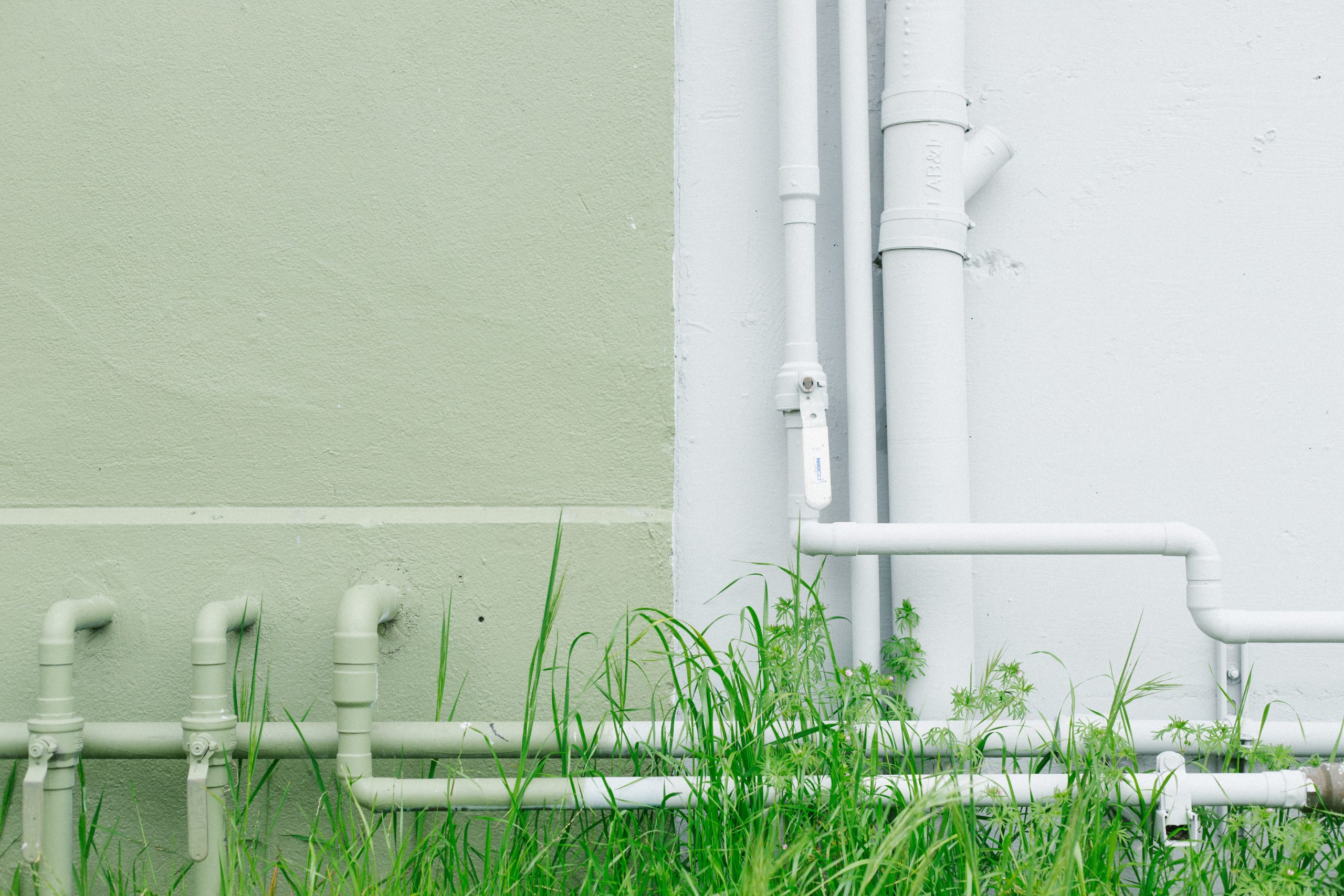
In our ever-changing world, innovative eco-friendly plumbing solutions combat environmental issues. Modern green plumbing blends technical expertise and environmental responsibility.
With climate change and water scarcity concerns rising, learning about sustainable plumbing alternatives is invaluable. This article explores various green practices that conserve water, reduce energy use, and lower your carbon footprint.
Eco-Friendly Plumbing: A Brief Overview
Before diving into specific techniques and equipment, it is crucial for you to have an understanding of what eco-friendly plumbing actually encompasses. As the term implies, eco-friendly means causing minimal harm to the environment.
When applied to plumbing, it usually refers to measures taken to conserve water and energy, limit pollution, promote waste management and reduce the overall impact of plumbing activities on the environment.
The Role of Water Conservation
Water conservation plays a considerable role in eco-friendly practices as retaining one of our most important resources puts less strain on public water supply and wastewater treatment facilities. If you use less water, you’ll pay less on your water bills.
Saving water also means you’re not using as many resources from the environment. Even doing small things to save water can add up to make a real impact on the world when a lot of people do them.
The Importance of Energy Efficiency in Plumbing
Energy efficiency largely involves appropriate insulation and correct size selection for both new and existing pipes. By choosing materials that minimize heat loss or even actively incorporate heat recovery, such as with shower drain systems that preheat incoming cold water, significant energy savings can be made.
Advances in Eco-Friendly Equipment
In recent years, there have been remarkable advances in environmentally friendly plumbing equipment. These include low-flow fixtures, dual-flush toilets, tankless water heaters, and systems for harvesting rainwater or recycling greywater– things you might want to consider incorporating into your home or business.
Understanding Low-flow fixtures
Low-flow fixtures are installed to conserve water by reducing its flow rate. They achieve the same function as their standard counterparts but use considerably less water. This includes low-flow showerheads, faucets, and toilets which can greatly decrease your home’s total water usage.
The Benefits of Dual-Flush toilets
A dual-flush toilet employs a two-button activation system designed to select between partial and full flushes. It is an excellent green plumbing fixture that can significantly reduce your household’s water consumption compared to traditional models.
Tankless Water Heaters
Tankless water heaters heat water directly without the use of a storage tank. They are far more energy-efficient than traditional storage tank heaters as they only heat water when required. This not only saves energy but also ensures a continuous supply of hot water, which is beneficial for larger households.
The Future With Rainwater Harvesting Systems
Rainwater harvesting systems collect and store rainwater for later use. The harvested rainwater can be used for various purposes like irrigation, flushing toilets, washing cars, or even drinking with proper treatment. A well-designed system can significantly reduce your reliance on municipal water supply while conserving this precious resource.
Greywater Recycling Assists Conservation
Greywater refers to the relatively clean wastewater from baths, sinks, and washing machines which can be recycled for uses such as irrigation and flushing. Greywater recycling systems re-route this domestic wastewater and repurpose it appropriately, therefore promoting optimum use of available resources.
Education and Conversion Strategies
Educating people and businesses about the benefits and practicalities of eco-friendly plumbing systems is vital to increase their implementation. It is quite likely that many more people would convert to using green plumbing methods if they understood the potential for utility savings, less waste and lower environmental impact.
The Role of Professional Plumbers
Plumbers play an essential part in promoting and installing green plumbing systems. A professional with a solid understanding of eco-friendly techniques can effectively advocate those methodologies with clients, providing advice and guidance as needed. To verify the expertise of a professional, see reviews on Trustpilot for comprehensive feedback breakdowns.
The Price factor: Perception Versus Reality
One major concern many people have with upgrading their plumbing system to a greener alternative is the perception of a higher price. However, while up-front costs may be marginally higher, the aggregated savings in water and energy bills invariably make up for this initial expense over time.
Legal Aspects of Green Plumbing
There are regulations and laws in place in several jurisdictions requiring new builds and renovations to implement certain green plumbing initiatives. Familiarizing yourself with these rules will not only help you stay legal but also benefit our environment by promoting conservation of natural resources.
Your Positive Impact on The Environment
By implementing green plumbing practices, you are making a significant contribution to preserving the environment for future generations. You’re assisting in reducing greenhouse gas emissions, saving energy, minimizing water waste, and eventually setting a great example for others to follow.
Time For Reflection
In conclusion, adopting eco-friendly plumbing practices provides a promising avenue towards environmental responsibility. When you consider the energy-efficient equipment and procedures available today, it becomes apparent that these contemporary methods are not only beneficial for the environment but also stimulating savings on utility costs.
Design Tips
Integrating Greenhouse Elements into Roofing Design
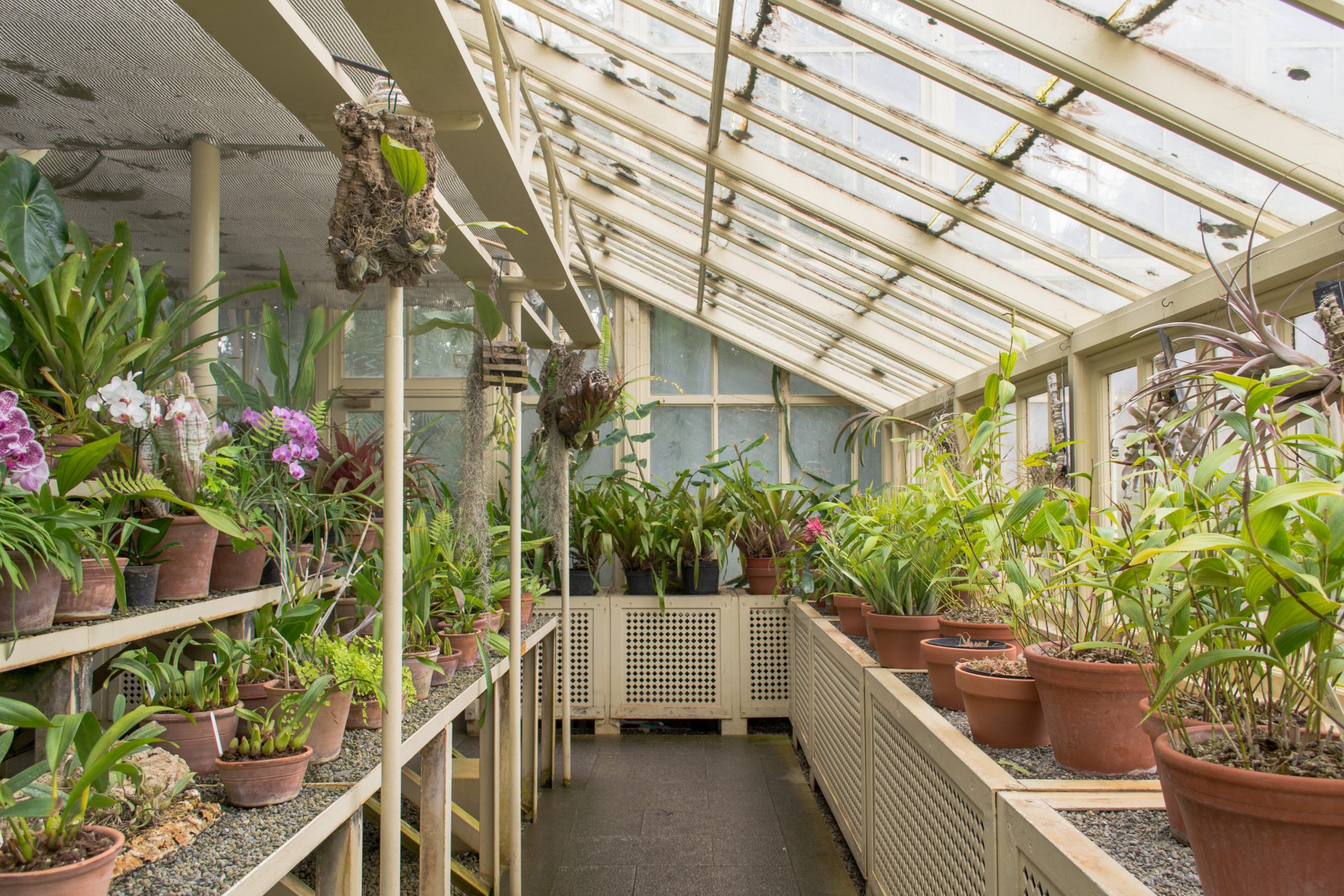
Step onto the future pathway of sustainable living by integrating greenhouse elements into your roofing design. You might be asking, what does that mean? Let’s dissect it. A basic understanding of roofing design combined with the principles of a greenhouse can lead to an array of environmental and economic benefits right above your head.
Understanding the Greenhouse Concept
Dive into the world of greenhouses. In essence, a greenhouse captures the sun’s radiation, using it to create a warmer environment that supports plant growth year-round, despite outside weather conditions.
The same notion can be applied to houses through smart residential roofing services. Imagine roofs performing like greenhouses – conserving energy and contributing towards creating a comfortable indoor climate, regardless of the outdoor temperature extremes.
Breaking Down Greenhouse Elements
Crystalize the thought as you dissect the concept further. It primarily involves transparent roofs, insulation materials, and heat-absorbing surfaces. Transparent materials like glass or polycarbonate allow access to sunlight.
Insulation materials prevent escaping heat while dark, heat-absorbing surfaces collect solar energy during the daytime and release it during cooler periods.
The Science Behind Integration
Integrating these elements into your existing roof is pure science at play. By managing solar radiation penetration and understanding the theory of microclimates, you can implement this concept effectively.
There are plenty of ways to make greenhouses energy efficient and to integrate elements into roofing. Moreover, plants play a vital role in improving air quality, making them an integral aspect of such designs.
Comparative Analysis of Roofing Materials
Your next move is figuring out which materials are best for these setups. Consider the battle between glass and polycarbonate roofs: while the former offers better clarity and longevity, the latter is lighter and safer as it’s virtually unbreakable. Similarly, different insulating materials come with their unique benefits and challenges.
Benefits of Greenhouse Roofs
You’ll find that there’s a list of advantages waiting for you when incorporating greenhouse components into your roofing design. Besides a significant rise in energy efficiency, you’ll notice a decrease in your environmental impact.
When you understand rooftop gardens you will get to enjoy the many benefits associated with them. Your health and well-being may flourish too, thanks to better air quality and regulated indoor temperatures.
Overcoming Potential Challenges
Like every venture, it’s not without its challenges. Fear not though, they’re surmountable. Think about safety aspects, maintenance costs, and managing light penetration. Shatterproof materials can enhance safety and durability while understanding the full extent of maintenance required enables planning for the associated costs.
Innovative Designing Approaches
Forward-thinking designs don’t stop at the basics. Consider integrating solar panels or even cultivating rooftop gardens into your concept. Combine materials to add further insulation or aesthetic appeal. The sky is the limit when it comes to experimenting with designs.
Ensuring Optimal Functionality
A well-functioning roof doesn’t happen by accident. Correct installation techniques ensure longevity while regular maintenance practices preserve its optimum functionality. Over time, making needed upgrades can combat wear-and-tear effects, keeping it efficient and effective.
Regulations and Building Codes
Legalities are part of the process so understanding local laws is essential. Compliance with building codes ensures you’re on the right side of the law. Sometimes, advocating for changes in regulations might just be the way forward, making sustainable living more commonplace.
Future Projections for Greenhouse Roofs
Industry growth hints at future developments that should get you excited. Anticipate technological improvements that will revolutionize greenhouse roofs even more. Demand for such modernized concepts is projected to escalate as individuals like yourself seek more sustainable living options. Modern roofing solutions such as cool roofs reduce carbon footprints.
Additional Considerations
Before you march forward and embrace the future of residential construction, there are a few additional considerations to heed. While all these pros make integrating greenhouse designs into your roof sound enticing, remember it’s not one-size-fits-all.
Geographical Factors
Be mindful of the geographical location of your home. Certain climates may be more conducive to greenhouse roofs than others. A transparent roof in a region with extreme sunshine might lead to overheating concerns while in less sunny regions, you’ll need to extract every bit of sunlight possible.
Energy-efficient roofs are no longer a distant dream but a very viable reality that is rapidly becoming mainstream in residential construction space across the globe.
Financial Outlay
The financial aspect should also factor into your decision-making process. Even though the upfront cost may seem elevated, weigh that against expected energy savings over the life of the roof. A quarter of your heat is lost through the roof.
Forecasting these figures can help make a long-term economic decision. Remember, investing in a greenhouse roof doesn’t just impact you, but also plays a small part in saving the planet for future generations.
Lastly…
Embrace the future of residential constructions and pave a path to sustainable living by integrating greenhouse elements into your roofing design – offering a trifecta of benefits including energy conservation, environmental impact reduction, and overall health enhancement.
Take a step towards making your home a harmonious integration of man-made structures and nature, reflecting the perfect example of sustainability.
Growing Tips
Top tips for any beginner gardener
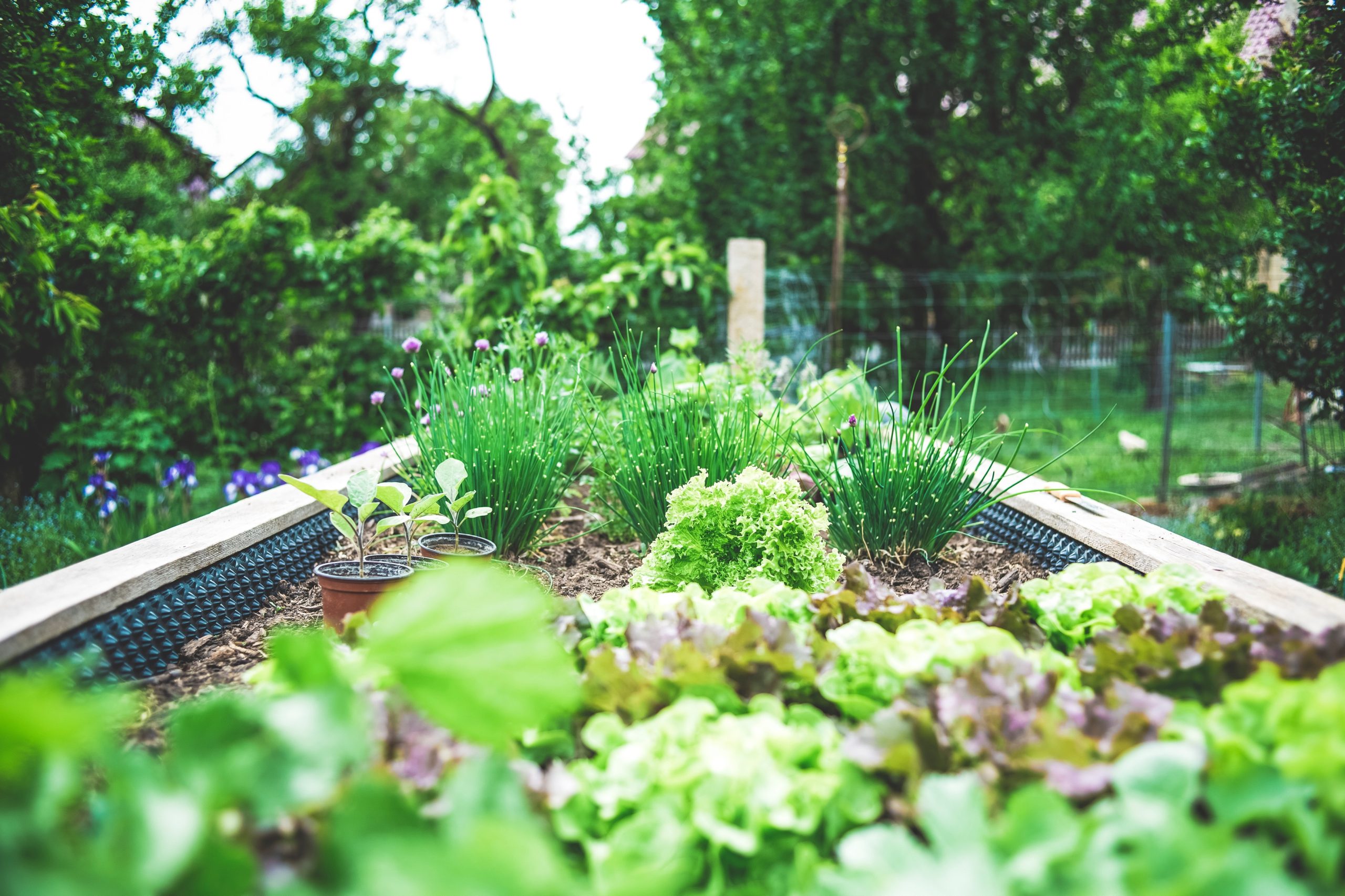
Gardening can be an extremely rewarding practice. It’ll lower your stress levels, provide you with some physical exercise, and allow you to cultivate a space that’s not only great for recreation, but also rich in herbs, fruits and vegetables.
Tips for new gardeners
But if you’ve never wielded a trowel in your life, it can be tricky to know where to start. Let’s look at some worthwhile tips for the gardening novice.
Start small
You can’t expect to main control over a massive and elaborate garden from day one. Don’t bite off more than you can chew: keep your plots small to begin with, until you have the skills and confidence you need to expand. You only need a packet or two of vegetable seeds to get started.
Do your research
There are vast amounts of information out there. Much of it’s available online, but you’ll also find valuable insights in books, and from other gardeners. Get to know the quirks of the plants you’re dealing with, and you’ll be rewarded.
Choose the right location
You might not have much scope to rearrange your garden. But it’s nevertheless important to shift your plants so that they’re getting the optimum sunlight. Hardier plants can be deprioritised in favour of the more fragile ones.
Get your soil tested
Not all soil is the same. In fact, it’s incredibly diverse. By understanding the acidity of your soil, and its composition of minerals and other nutrients, you’ll stand a better chance of troubleshooting any problems you might later run into. Get your soil tested regularly!
Prune and deadhead
Much of the work of gardening comes from removing growth that we don’t want, so that the growth we do can flourish. Dead and diseased branches will take vital resources away from the rest of any given plant: remove them with pruning shears.
Monitor for pests and diseases
Effective gardening means controlling pests. Make sure that you keep an eye out for them. Pest control can be performed using artificial chemicals – or you can use natural methods, like attracting predators, to deal with the problem. Spiders and larger insects are your friends – they’ll tend to eat the smaller ones that are destroying your plants.
Conclusion
Once you’ve got a few years of experience under your belt, your ambitions in the garden will doubtless develop in new and interesting ways. You should always be thinking ahead, since the work you do today probably won’t pay off for several months. Don’t be tempted to put your feet up during winter – by putting in a little work then, you’ll save yourself a lot of work in spring and summer.
Design Tips
Strength and Precision: The Advantages of the BA-MW Welded Aluminum Frame

Access doors and panels such as the BA-MW welded aluminum frame play a vital role in homes and commercial buildings. They protect the structure’s critical components, from the simple electrical switches to the complex HVAC units and plumbing systems, while balancing functionality and aesthetics.
The BA-MW welded aluminum frame offers various advantages from which homeowners, architects, interior designers, and general contractors can benefit. Among these are its strength and precision, which maintain the design’s visual flow and keep the units safe and secure from unauthorized access.
Strength: The Backbone of the BA-MW Access Door Model
The access doors’ strength and durability are as important as their ability to provide quick access. Components and items need excellent protection from damaging environmental elements and accidental impacts.
The BA-MW welded aluminum frame excels in these aspects:
- Strength and Durability – Factors considered when looking for the best access doors for your home, the strength and durability of BA-MW protect the components and reduce service and repair costs. It has high-grade inner and outer frames that are bonded through a special welding process.
- Security – Every home needs to be highly secure. It means all construction materials and elements must always add additional protection to the property to prevent burglary and theft. Installing the BA-MW in your home will give you peace of mind as its strength and durability also enhance your place’s security and privacy.
- Structural Integrity – In addition to its frame and holes, the strength and durability of its materials strengthen the walls and ceiling’s structural integrity.
- Corrosion-Resistant Properties – The BA-MW ‘s corrosion-resistant properties protect it from the effects of harmful and destructive moisture and other damaging agents. It helps prevent premature replacement, making it an ideal access door for homes, commercial buildings, and industrial facilities. With the BA-MW Welded Aluminum Frame anti-corrosion features, you also save time and resources for maintenance and repair needs.
Precision: The Artistry of Access Doors
Blending construction materials, design, and aesthetics in the construction industry is like performing a grand symphony. They must flawlessly blend to create a harmonious flow. With the help of the BA-MW, it becomes easy to integrate these elements.
With its design that manufacturers crafted to flawlessly match its surroundings, the BA-MW access door model’s precision elevates and transforms interior designs into architectural masterpieces. Here’s how it helps homes and commercial buildings create a flawless design.
- Architectural Aesthetics – Whether you install it visibly or hide it behind decors, the access door’s precision and minimalist design complement the room’s overall visual appeal – turning a dull space into a more visually pleasing place.
- Flawless Fit – Regardless of their customizability, these access doors have designs perfectly engineered to fit their installation surface without gaps, misalignment, and hidden elements.
- Smooth Operation – The effortless operation of the access doors enhances the building’s aesthetics with their smooth and seamless opening. Their refined functionality seamlessly integrating into the architectural composition adds to the design’s sense of sophistication and elegance, amplifying the building’s overall aesthetic value.
- Simplified Maintenance – The BA-MW allows service teams to quickly access the building components that are concealed behind the walls—without disrupting the building’s design, ensuring the structure’s visually pleasing look.
- Energy Efficiency – Its frame and panel’s precise measurement create an airtight seal while seamlessly blending to its installation surface. It showcases a sleek and environmentally conscious design, radiating a modern and sophisticated appeal.
Striking the Balance: Access Door that Excels
The BA-MW welded aluminum frame is a dynamic solution that harmonizes functionality and aesthetics while adapting to evolving construction standards. Choose the BA-MW welded aluminum frame if you require an access door for concrete walls and ceilings that seamlessly combines strength, precision, and concealment of essential building systems. Crafted with top-notch materials and reinforced structures, it guarantees outstanding functionality, safety, security, and visually pleasing results.
Home Care & Living
Stress-Relief Through Decluttering: Giving Yourself a Break
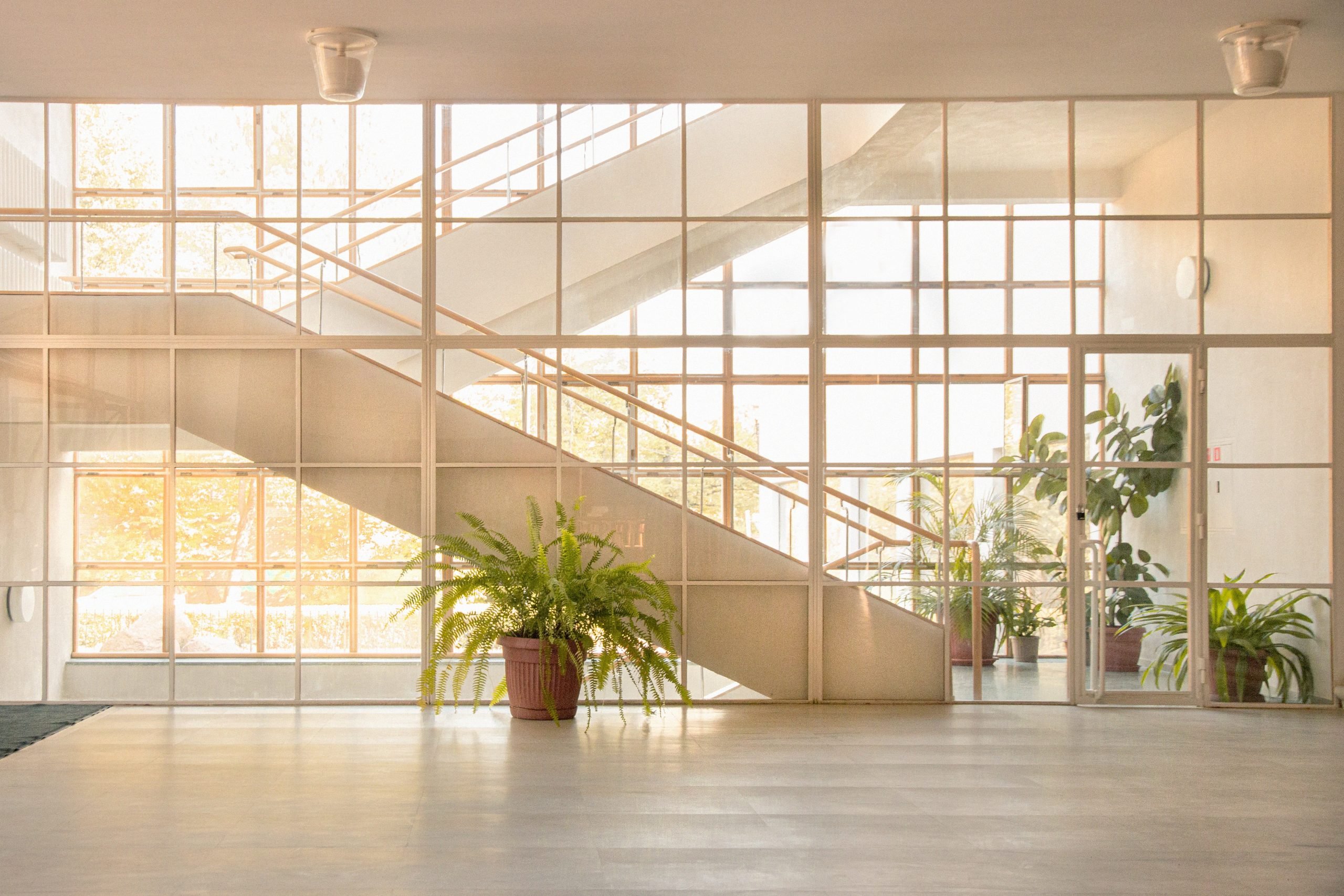
According to a study published in the Personality and Social Psychology Bulletin, a cluttered environment can increase feelings of stress and overwhelm. When our physical space is chaotic, it tends to reflect and amplify our mental state.
Now, you might be thinking, “But I’m not a neat freak! I can handle a little mess.” And that’s true. A bit of clutter here and there won’t send you into a full-blown panic. However, chronic disarray and an overwhelming buildup of stuff can wear you down over time. That’s where decluttering comes in.
Digital Decluttering: A Modern Necessity
Let’s face it; decluttering is no longer limited to our physical space. Our lives are more digital now than ever, and there’s a rising need to declutter our digital space. We browse various social media sites and open different files, and traces of them are stuck on our device history.
Have you ever turned on your device to do something, only to be welcomed by the recent files or apps you opened? It’s easy to become distracted, even forgetting the reason you came there in the first place. And if there’s an interesting movie or file you were running before, there’s a pressure to continue it instead of focusing on whatever you have turned on your laptop to do.
Sometimes, you just need a clean slate. If you use an Android device, it’s easy to just close everything with one tap. As for Mac users, you might want to learn how to clear recents in mac as this requires more than a click. Our smartphones, tablets, and computers often become digital junkyards filled with countless apps, unread emails, and notifications. They’re a breeding ground for stress.
Why Digital Decluttering is Just as Important
A survey conducted by the American Psychological Association found that constantly checking email and social media was a significant source of stress for many adults. So if you’re wondering why that is important, there you have it.
Digital decluttering also means streamlining your digital life. Unsubscribe from unnecessary email lists, organize your apps, and mute those never-ending notifications. The less digital noise you have to contend with, the more mental clarity you’ll enjoy.
The True Essence of Physical Decluttering
Now to the one most of us are familiar with. But physical clutter isn’t just about those piles of old magazines or the boxes of knick-knacks collecting dust in your attic. It extends to your living spaces, your closets, and your workspace.
Imagine walking into a room where everything has its place. It’s clean, organized, and peaceful. Just picturing it brings a sense of calm, doesn’t it?
When you declutter your physical space, you’re not just tidying up; you’re actively reducing visual distractions and creating an environment that promotes relaxation—a break.
Mental Clutter: A Hidden Stressor
Now, let’s talk about the less obvious but equally important aspect – mental clutter. The thoughts and worries that clutter your mind. We all carry this load to some extent, and it can be just as draining as a cluttered room.
The never-ending to-do lists, unresolved issues, and constant mental chatter can leave you feeling exhausted. Declutter your mind by finding ways to unload these burdens, whether it’s through meditation, journaling, or seeking professional help.
The Joy of Letting Go
Decluttering is also about making conscious choices to keep what truly matters. It’s a process of letting go of the excess, physically, digitally, and mentally. As you sort through your belongings and thoughts, you might find a sense of liberation in releasing what no longer serves you.
So, the next time stress starts to creep in, take a step back and consider decluttering. Clear your physical space, declutter your mind, and streamline your digital life. You’ll be amazed at how this simple act of self-care can provide a much-needed break from life’s chaos.
General Gardening
What are the different growing patterns of certain flowers?
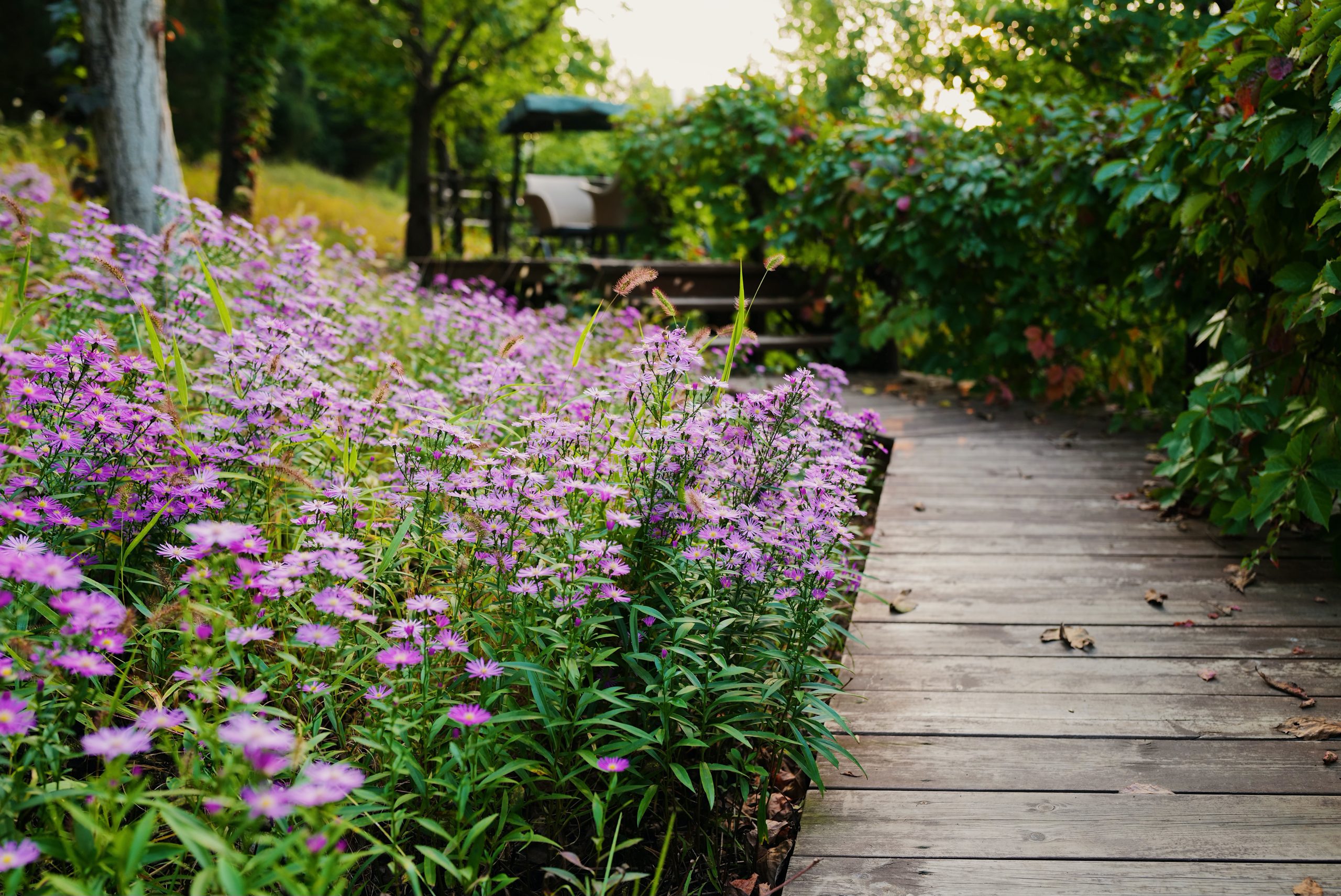
Understanding the correct conditions needed for flowers to grow can admittedly be quite confusing, especially if you’re relatively new to gardening. Some need direct sunlight, some need to be out of the wind and others need a specific rare soil in which to thrive.
This guide will aim to address some of the confusion by breaking down the most common varieties of flower found in gardens across the country, namely annual varieties and perennial varieties. Understanding the different ways these types of flower grow will help you to make the most of their blooms all year round, so here is a short guide to the differences between them and how you can make the most out of them for your garden, ensuring that you are giving them everything they need for a long and fruitful life.
Annual
Annual plants are those that germinate, flower and die in one season alone. They’re not known for their longevity, but there are a few things you can do to ensure that the next round will be even better than the last. Frequently inspect your plants for deadheads and remove them; this increases flower production until the season is over.
The downside of annual plants is they need a lot of care and maintenance. You will need to replant them the following spring, but you’ll find that they’re a great addition to your garden and the fact that they don’t stick around for long only makes them more special.
Perennials
Perennials are a much hardier breed than annuals. These species have evolved to withstand cold temperatures and can be seen throughout the year. Think forget-me-nots, larkspur, geraniums and lavender. They can tolerate exposure to light and frost in equal measure, meaning that once they’re planted in your garden, they’re here to stay.
What’s more, perennials are way less maintenance in terms of water consumption and generally don’t need a lot of water once they’ve taken hold in your garden. Perfect for unpredictable temperatures and all kinds of weather conditions, perennials seem to have been made for the UK.
Biennials and combination
Beyond annual and perennial varieties of flowers, there also exists some species which operate on a biennial basis, meaning that they require two years to complete the same life cycle as a typical annual flower. Some varieties of flower such as sweet peas, for example, even exist in both annual and perennial varieties, meaning you can enjoy their scent and colour at any time of year. The annual varieties are climbers known for their fragrance, whereas the Lathyrus latifolius perennial variety has little to no scent yet will make a reappearance in your garden every spring.
So, depending on what you want from a plant or flower, whether it be beauty and scent or longevity, now you know which to choose and how to care for it. Happy gardening!
Home Care & Living
How to Choose the Right Type of Glass for Double Glazing

If you’re considering double-glazing your windows and doors, you probably know all about its benefits. Lower energy consumption, noise reduction, condensation control, thermal insulation, and so on.
But double-glazing isn’t as simple as calling a contractor and getting the job done! There are a few factors to consider. Most importantly, you’ll need to choose the right type of double-paned glass for your home and requirements.
There are four options to choose from, each with its pros and cons. Let us tell you how to pick the most suitable one.
Types of Glass for Double Glazing
Most contractors use four types of glass for double glazing. Here’s what you should know about each type.
Clear Float Glass
Clear float glass is most traditionally used for double-glazed windows. It’s made by floating molten glass or molten tin; hence, the name.
This glass is incredibly clear, making it ideal for those who prefer natural light. While it is surprisingly affordable, clear float glass isn’t an energy-efficient option. So, it won’t do much to slow the heat transfer on colder days.
Low-E Glass
Low-emissivity glass is coated in a thin, invisible material made from metal oxides. As a result, the glass emits low thermal energy levels, where it gets its name.
This option is best for those who rely on double glazing to guarantee a warm home on cold days and a cool home during the summer. The low-E coating reflects most of the heat away from the house. That’s what makes it an energy-efficient option for lower heating bills.
Tempered Glass
Tempered glass is known for its safety and durability. With tempered glass double-paned windows and doors, you won’t need to worry about broken windows and intrusions. Even when it does shatter, it breaks into round, harmless pieces.
Tempered glass also has good thermal stability. While it’s not the most energy-efficient on our list, it does make a difference.
Laminated Glass
Lastly, laminated glass is another type known for its safe and shatterproof nature. The glass is bonded with transparent polyvinyl butyral (PVB) or ethylene-vinyl acetate (EVA), giving it its strength.
If you’re double-glazing your windows for noise reduction, laminated glass is the way to go. The interlayer of PVB and EVA dampens the sound waves before they reach the inner pane. Laminated glass also prevents long-term UV damage.
Factors to Consider
How do you know which type of double-glazing glass is right for your home? Here are some factors to keep in mind while making your choice.
Energy Efficiency
If energy efficiency is your main concern, consider U-Factor and R-value metrics. Glass types with lower U-Factor and higher R-value will be more energy efficient in the long run.
With these factors considered, low-E and laminated glass definitely take the cake. They slow the heat transfer rate, reflect heat away, block UV rays, and maintain an optimal internal temperature. By doing so, they lower your home’s energy consumption.
Safety
On the other hand, those who prioritise safety should consider glass safety standards and codes. Luckily, tempered and laminated glass meet those standards with ease. They’re shatter-resistant, making it nearly impossible for someone to break in.
In rare cases, they may shatter, but the glass shards won’t be harmful or sharp. Plus, they’re fire-resistant!
Noise Reduction
Many homeowners install double-glazed windows to reduce the noise coming from traffic, sirens, or simply loud neighbours. If that’s your concern, too, consider the acoustic properties of the glass.
Laminated glass has an interlayer of PVB and EVA, which absorbs all sound waves. This glass type can be ideal for bedrooms where you want minimal noise intrusion. Of course, the same can’t be said about clear float glass.
UV Protection
It’s no secret that prolonged UV exposure can damage your furniture and all other belongings. Plus, it just makes your home unnecessarily hotter! To avoid that, opting for glass types with UV-resistant coatings or laminated layers is better.
In that case, laminated and low-E glass windows will be your best bet. They reflect harmful UV rays away from your home.
Conclusion
Choosing the right glass for your double-glazed windows is hardly a one-size-fits-all decision. Above anything else, you’ll need to consider what double-glazing benefit matters most to you. If you’ve read our guide, you can confidently call your contractor and enjoy a warmer, quieter, safer home!
Indoor Gardening
Can you use your conservatory as a greenhouse?
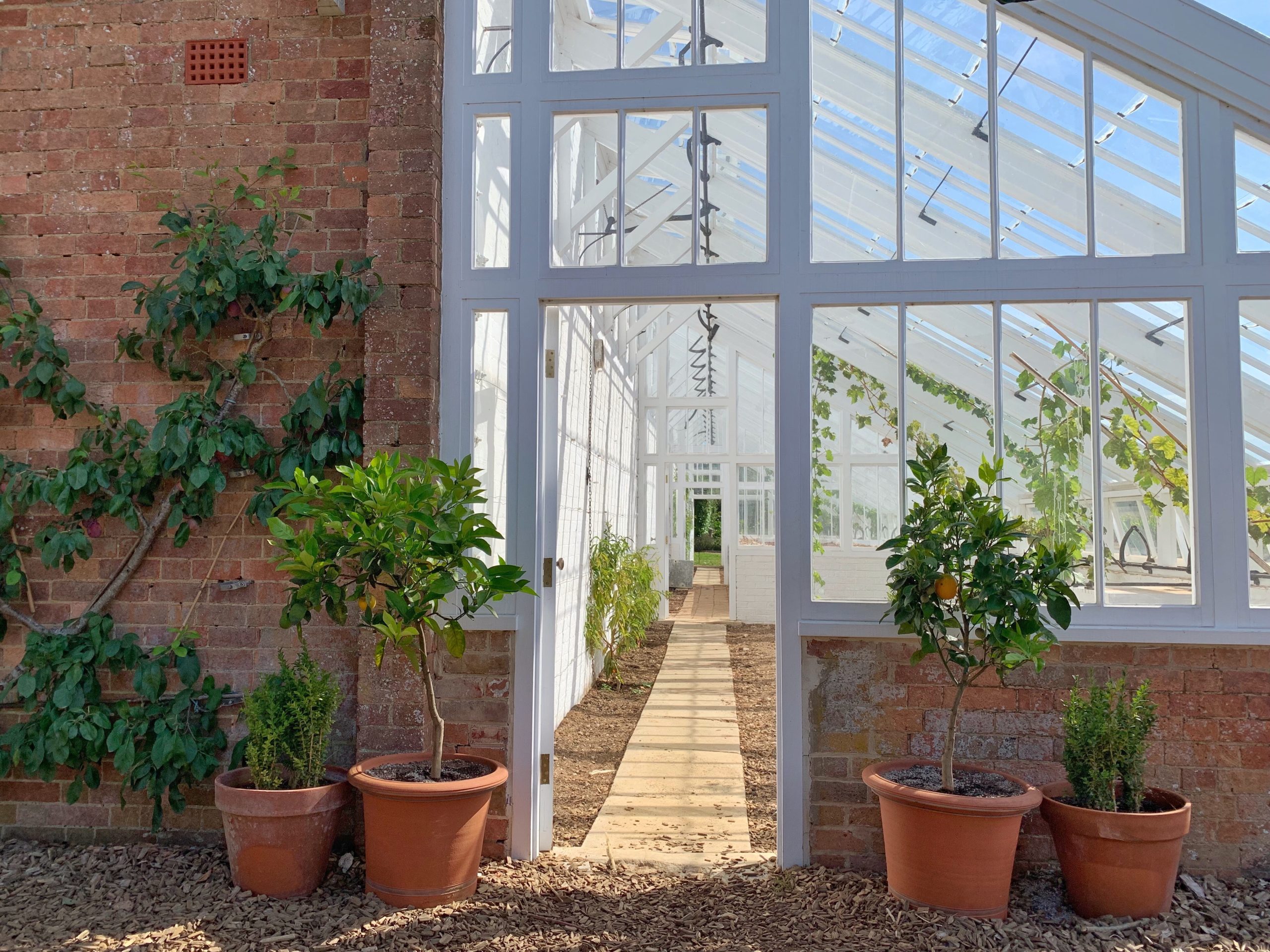
If you have a home conservatory, you may wonder if you can use it as a greenhouse. After all, both spaces are designed to let in plenty of natural light and provide a warm, comfortable environment for plants to grow.
However, it’s important to remember that a conservatory is not designed to be a greenhouse. While both spaces have similarities, they also have important differences. A greenhouse is designed specifically for growing plants, with features such as adjustable ventilation, temperature control, and shading systems.
On the other hand, a conservatory is designed as an extension of your home, with features such as double-glazed windows, insulation, and heating systems. So, while using your conservatory as a greenhouse is possible, you will need to make some adjustments to ensure that your plants thrive in this space.
Before you start filling your conservatory with pots and soil, there are a few things to consider:
Temperature
The first consideration is temperature. Conservatories are designed to be warm and comfortable, but some plants may have better environments. Some plants require cooler temperatures, while others prefer warmer temperatures.
If you want to use your conservatory as a greenhouse, you must find a way to regulate the temperature to suit your plants’ needs. One option is to install a ventilation system. This will allow you to control your conservatory’s temperature and humidity levels, ensuring that your plants have the ideal growing conditions.
Lighting
Another consideration is lighting. You may also need to install shading or blinds to prevent your plants from getting too much direct sunlight, which can be harmful. While conservatories are designed to let in plenty of natural light, more is needed for all plants.
Depending on the types of plants you want to grow, you may need to supplement the natural light with artificial lighting. This can be achieved with grow lights, which provide the ideal light spectrum for plant growth.
Watering
Watering is another important consideration. While conservatories are designed to be watertight, you must ensure that your plants are getting the right amount of water.
If you have high-maintenance plants that require regular watering, you may need to install a watering system to ensure that they are getting enough moisture. You will also need to consider drainage, as excess water can cause damage to your conservatory.
Space
Finally, you will need to consider the space available in your conservatory. While filling every inch of space with plants may be tempting, you need to ensure that they have enough room to grow. Overcrowding can lead to poor air circulation, which can cause problems such as mould and disease.
Remember, all of these changes will increase your overall conservatory costs, so make sure you set a budget before turning your conservatory into a greenhouse. You should also keep track of your energy usage, as installing new lighting and ventilation systems may increase your energy bills.
Home Care & Living
The Low-Maintenance Garden: A Must-Have for New Homeowners
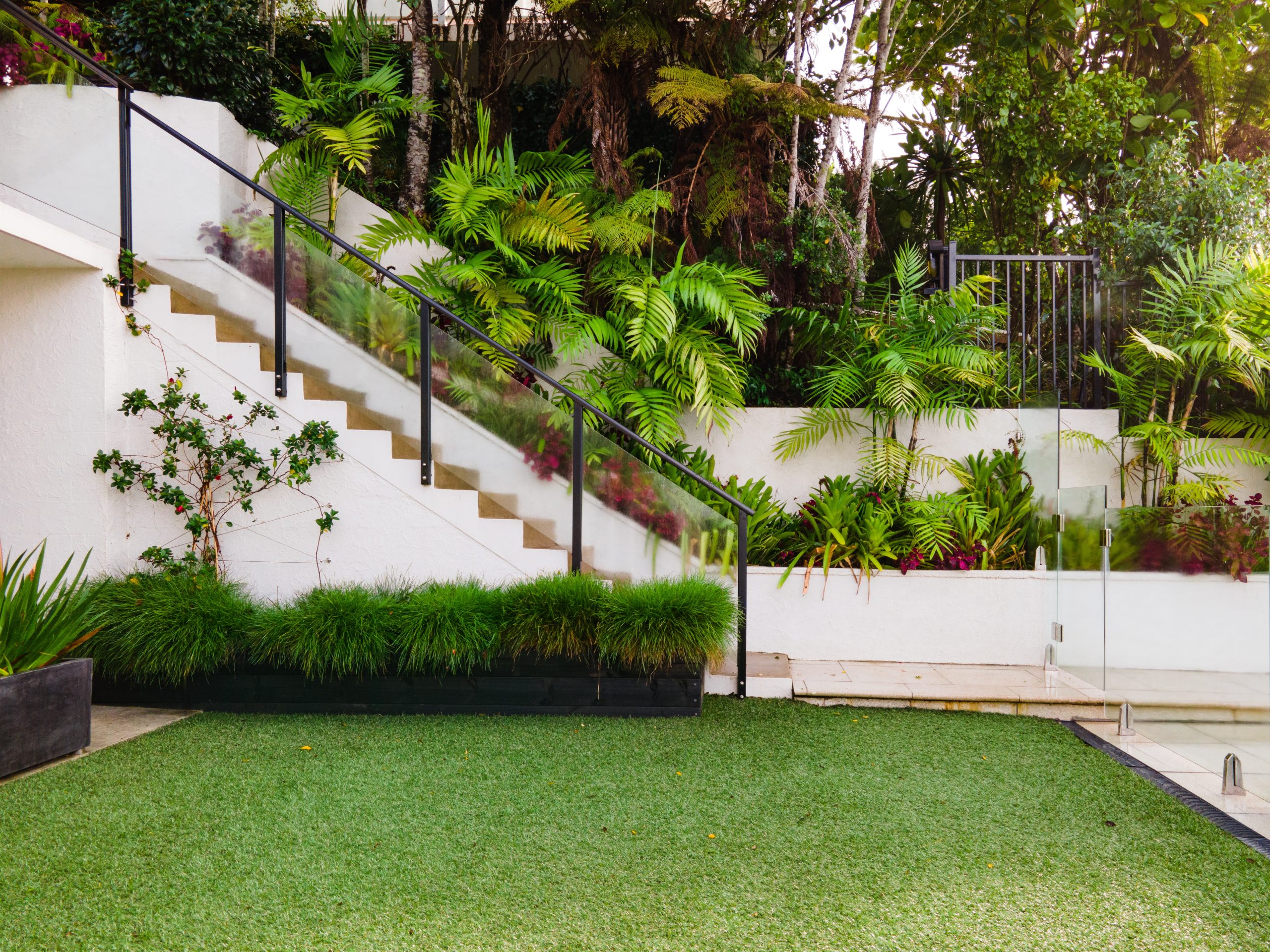
Having a garden, or access to one, is a small luxury that many of us are lucky to possess. According to recent government data, around 85% of British households enjoy access to a garden or outdoor space – though, it is only when you own your first home that you truly gain stewardship over an outdoor space of your own.
Owning your first home is an extremely exciting life milestone, and one which brings a great deal of rewarding opportunities. In shaping your new home to match your own aesthetic philosophies, you can truly create a space for yourself, including your garden. But herein lies the rub: not all of us are particularly green-fingered.
Understanding the Low-Maintenance Garden
A garden can bring a great deal of joy to a home – particularly the blank canvas of a new-build home in a brand-new neighbourhood. But the work required to get it to such a place, and then again to maintain it, can be a little too much for some. Still, a reluctance to spend valuable time and energy on a garden shouldn’t be cause for an outdoor space that doesn’t spark joy. Enter the low-maintenance garden.
The low-maintenance garden is, essentially, what it says on the tin; it is a garden space that will thrive without regular human intervention. Beautiful gardens can be judiciously sculpted using the right plants and landscaping, for the betterment of your home and without requiring weekends upon weekends of digging and potting.
Choosing the Right Plants
Fundamentally, a low-maintenance garden needs low-maintenance flora. Gardens are often hard work owing to the specific demands of beautiful but non-native flowers and plants. Choosing native plants is the first step to creating a hardwearing garden, as the climate itself will no longer be a major factor in your garden’s health. Drought resistance is another helpful quality for these plants to have, to help them survive the longer dry summers we are expecting to have; cistus and fremontodendron plants are colourful and hardy options.
Strategic Placement of Hardscaping and Features
Arguably the lowest-maintenance aspects of your garden, though, will be the hardscaped elements. That is, your patios and decking, which won’t need more than a seasonal clean to keep their form. But too much hardscaping can utterly remove the character from a green space. Blending lawn and patio space with flowerbeds, and incorporating verticality through raised decking, can help retain character while introducing a higher ratio of hardscaping to organic areas.
Long-Term Sustainability and Low Maintenance
The low-maintenance garden has previously received a poor reputation in the media, having come to be defined by a new iteration of the astroturfing trend. Artificial grasses and concreted gardens are an offensive sight, but also environmentally harmful. True low-maintenance gardening is anything but, as native plants provide a habitat for local fauna. Even hardscaped elements can be rendered environmentally-friendly, with permeable paving (coupled with a sustainable irrigation system) allowing rainwater to actively sustain all flora in your new, beautiful garden.
Home Care & Living
Rubbish Removal: The Secret to Greener Gardens
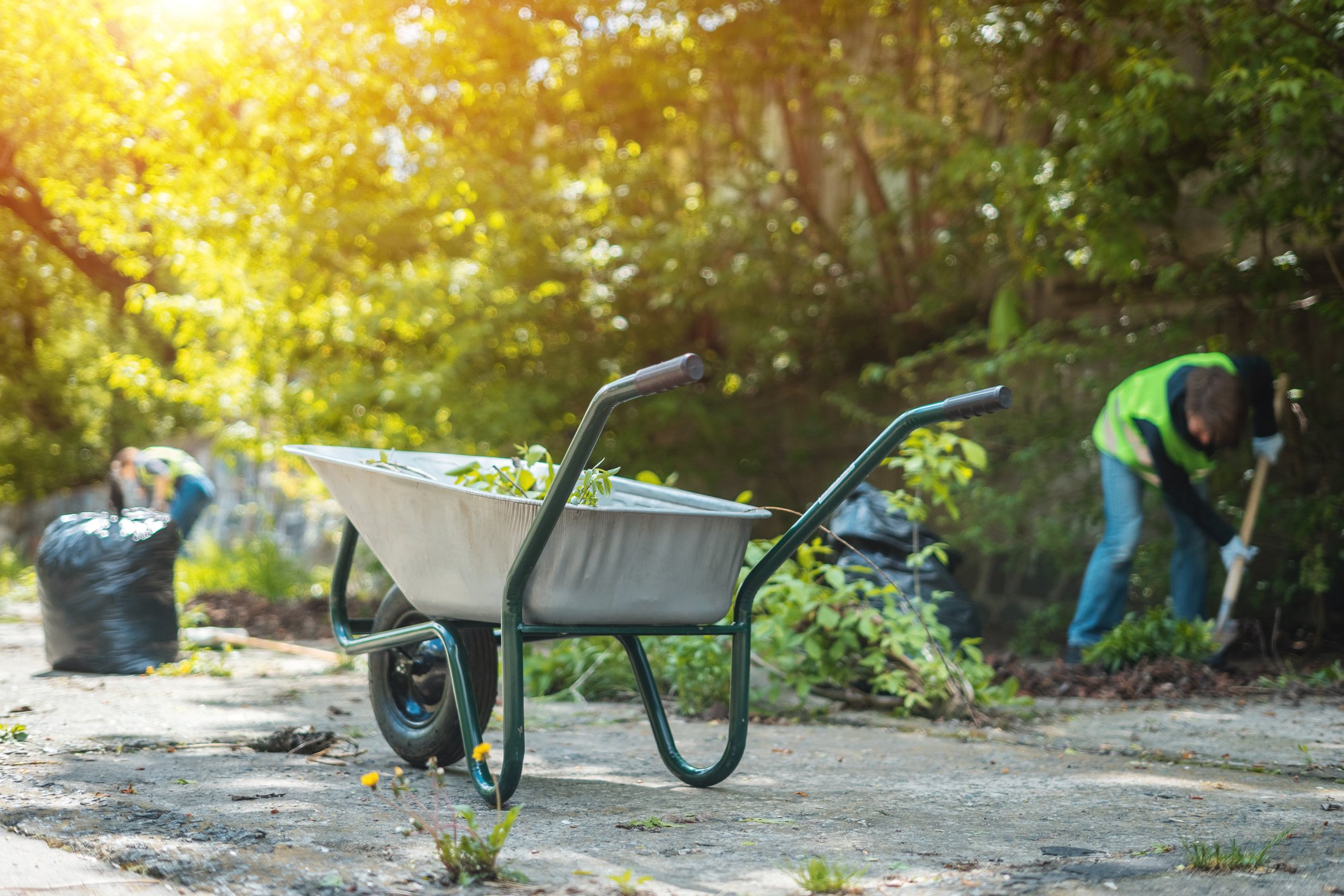
Your dream garden reflects hues of flourishing blooms and the tranquility of a verdant lawn. Yet, reality intrudes as waste accumulates, casting a shadow over this green sanctuary. Fear not! The secret to regaining your picturesque haven lies in effective rubbish removal strategies.
Rubbish Removal Basics
Encounter various types of waste such as leaves, twigs, grass cuttings, or general household trash cluttering your garden. It’s essential first to understand and acknowledge this diverse waste accumulation. Budgeting is important too if using professional services. Click here for affordable removal solutions that are instrumental to initiating this transformation
With numerous forms of waste to tackle, it can seem overwhelming initially. However, arming yourself with suitable tools for trash management is essential. Different kinds of compost bins, garden sacks, and sturdy gloves come into play.
Time Management in Clearing Trash
It is vital to allocate scheduled periods for cleaning along with gardening work. This strategy will keep the productivity meter ticking high without battling the stress of overworking.
Greener Garden Tips
Gradually unveil those vibrant greener garden secrets, beginning with compost creation in mind. Organic compost is born out of yard debris and green kitchen waste like vegetable peels and coffee grounds, the secret ingredient.
Mulching indeed holds significant importance in the context – it aids in improving soil fertility while keeping weed growth under control. With dry leaves, tree bark, or newspapers at hand – voila! You’ve got quality organic mulch ready!
Building a Sustainable Garden
Plan thoughtfully with sustainable measures acting as undercurrents when piecing your garden together. Opting for plants native to your locality makes them easy to maintain and less prone to turning into weed-infested plots.
Non-organic Waste Strategies
Regard glass, plastic, and metal objects as potential warriors rather than mere useless elements for your gardening gear; watch these inanimate objects come alive when put to use as flower pot stands or even creative décor pieces. Through a little bit of upcycling, unloved and unwanted items find a new lease of life.
Water Systems Efficiency
An efficient watering system lessens water wastage while effectively serving your plants’ hydration needs. Drip irrigation systems or concepts like rainwater harvesting emerge as promising options here.
Critters Management
The critters that add charm might metamorphose into pests if left unchecked – they raid beneficial compost or wreck the young plants you lovingly nurture. A robust ecological plan resolves pest issues without resorting back to trash-producing mechanisms like plastic traps or toxic chemical usage.
The Role of Seasonality
This journey will involve you understanding how seasonality holds weight in optimum gardening practices; spring cleaning sweeps out winter decay once summer shoots up; winter workouts involve strategies during colder months to maintain cleanliness standards.
Eco-Friendly Rubbish Disposal Practices
Recycling rightfully requires more than just segregating items; sometimes municipal council programs offer free pickup services for specific types of garden waste. Donation-driven gardening drives can find new homes for unneeded flower pots or metallic scraps that find their way through artistic installations preventing undesired landfill pile-ups.
Laws Around Littering
Staying updated about local littering laws encourages adherence to rules ensuring any unwelcome disruptions don’t mar peaceful weekends spent tending to the lush green beds.
Garden Design & Rubbish Removal Elements
Designing an outdoor space must encompass clever trash management elements like concealed doors that hide unsightly bins within compound walls or installing recycling units right where you generate most waste.
Alternatives Traditional Rubbish Removal Techniques
Switching traditional bags with biodegradable ones causes less harm and could manage unpleasant smells better from decomposing organic matter. Seek homemade organic solutions employing common household ingredients against the war on stubborn pests!
Community Engagement Greening Gardens
Neighborhood cleanup campaigns foster communal harmony around a shared goal – clean surroundings nourishing greener landscapes. Showcasing school eco-initiatives helps propel younger minds toward embracing sustainability protocols from the early stages itself.
Embracing Mindful Practices
Rubbish removal should not merely be viewed as a task but essentially as a mindfulness practice in your journey towards greener gardens. Every piece of garden and green waste you redirect, every scrap you recycle, contributes to the wellness of your backyard and consequently the health of the planet.
Impact of Small Changes
Never underestimate small changes, they aggregate into significant transformations with time. A tidier garden today means more room for plants tomorrow and reaping benefits in terms of pleasing aesthetics.
Creating Habitual Actions
Make rubbish removal a habitual part of your gardening routine – segregate, compost, recycle, and repeat. Run these processes periodically until they become second nature in your gardening schedule.
These everyday actions are the key to unlocking that perfect green garden dream into perceivable reality; at first glance may appear simple but hold substantial influence in reshaping and bringing your garden back to life.
Conclusion
In essence, navigating through rubbish removal intricacies reveals the secret behind more vibrant gardens – garden waste handled rightly could be transformed from a daunting task into an integral element of sophisticated lifestyle practices.
General Gardening
Four Unique Garden Themes

Your garden space should ideally be an extension of your indoor living space, especially during summer. As such, it should look the part. But if you’ve recently been on a trip to your local garden centre, perhaps in search of inspiration, then you might have been struck by just how similar everything looks.
Sure, the slightly weather-beaten beachouse aesthetic is certainly en vogue right now – but what if you’d prefer to stand out, with a more distinctive look? Let’s take stock of a few options.
Vintage Tea Party Garden
What could be more quintessentially English than a garden tea party? All that’s required is a little bit of vintage furniture, and a few teacups and saucers. You might also use your crockery to plant a few choice flowers. Delicate blossoms like roses, lavender, and daisies all tend to work nicely. Build everything around a bespoke tea station, that you can use regularly.
Fairy Tale Garden
The best gardens can generate an experience that genuinely qualifies as magical. This should be a place where you feel comfortable telling a fairytale or two. A reading nook, along with a few inspiring sculptures of gnomes and other fantastical beasts, should provide plenty of inspiration. The addition of a few choice outdoor lights can help you to take things even further!
If you’ve got small children to entertain and inspire, then this is a style that might appeal even more. Just make sure that your storytelling is on par with your gardening.
Cottage Garden
Even if you don’t live in a cottage, you can recreate the same charming vibe through your choice of plant. Ideally, everything should feel slightly overgrown and filled with life – but not quite to the extent that you feel irritated by the controlled chaos. In practice, ironically, it often requires an ongoing effort to make something look just a little bit untamed and neglected.
Use a varied mix of flowers, shrubs, and herbs for best results. Delphiniums, lavender, and roses all work nicely. Accent with one or two decorative elements. Rustic fences, vintage bird feeders, and a cast-iron decorative bicycle might all look the part, especially if they’re partly obscured by verdure.
Tropical Paradise Garden
If you’d like to bring a dose of the tropical into your outdoor living space, then you’ll want to cultivate the right combination of plants. This means things with large, eye-catching leaves and flowers. Select your accent furniture around this theme, too. Bright colours, bamboo, tiki torches, and hammocks might all be worthwhile. Bamboo, as well as evoking the tropical, also has the advantage of being extremely sustainable. So, you can recline in your hammock and soak in the good vibes with a clear conscience.
General Gardening
Several Benefits Of Echeveria Plants And Many More
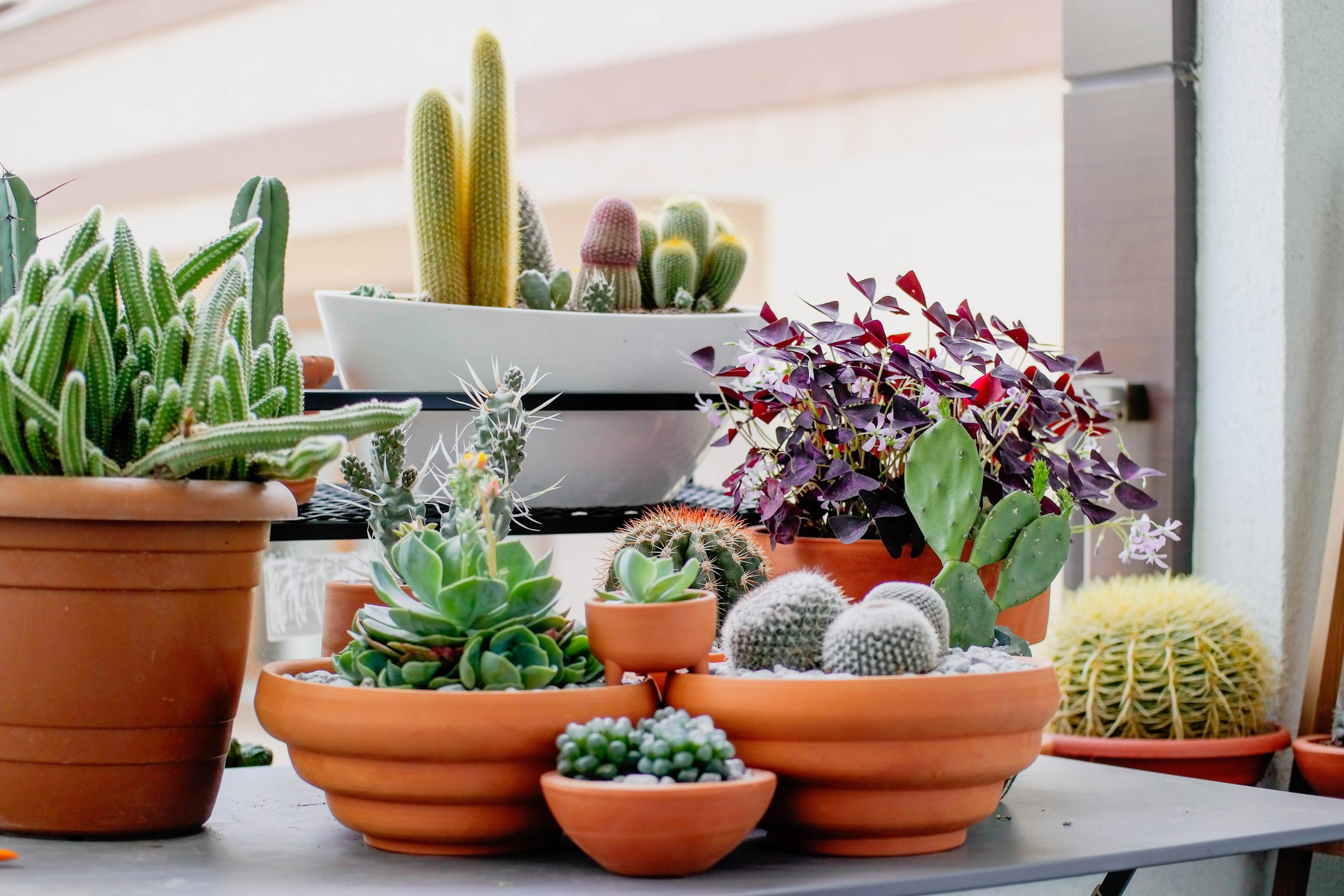
Hello plant lovers! In this blog, we will talk about Succulents of the genus Echeveria, which are known for their amazing appearance and adaptability. Growing Echeveria plants at home isn’t a big deal anymore. You can grow Succulent echeverias outside in containers or with usual landscape plants in areas that are warm, and they are best as indoor houseplants in any temperature. You can grow Succulent echeverias outside in containers or with usual landscape plants in areas that are warm, and they are best as indoor houseplants in any temperature.
Origin and Natural Habitat
The semiarid regions of Mexico and other regions of Central America are the natural habitat of these beautiful little perennial succulents. Also, they require very little care. Additionally, they grow very well in any environment that has a uniform temperature, plenty of sunlight, and soil that drains properly.
Appearance
Echeverias, which are found only in Mexico and Central America, are very famous among the most aesthetically pleasing of all succulents. Evergreen, they produce beautiful rosettes of soft leaves that often take the appearance of roses with plump petals, ruffled lettuce or water lilies.
Home Grow Preparations
If you buy Echeveria as houseplant, you have to create low-maintenance box arrangements, rock landscapes, and other different types of arrangements that have a variety of leaf forms, colourful foliage, textured blossoms, and other characteristics.
Growing Benefits of Echeveria Plants
Echeveria plants have many amazing benefits in addition to their attractive appearance. It has some of the best air purifying properties, ability to stand against dryness, and even well-being benefits. Let’s take a deeper look into it!
- Easy care with low maintenance: Echeveria is a versatile plant because it can thrive in almost each kind of environment, whether indoors or outdoors. These cute plants are hardy survivors and are native to desert environments, and they happily take up the problems of plant care that occur as a result of neglect. So, if you love gardening but frequently forget to water your plants, you might find that Echeveria is the plant for you to grow. If you hydrate your Echeveria plants infrequently but thoroughly, the plants will be able to store water in their thick, spongy leaves and stem of the plant to be well-supplied with water until the next time you water them.
- Remain Hydrated even in desert gardens: Readers, if you belong to an area that has difficulty retaining water, you must go for Echeveria plants to offer colour and diversity to enhance the beauty of the garden. If you live in an extremely hot and dry environment, you can consider Echeveria because they perform really well as a bedding plant or ground cover thanks to its low water requirements. These plants are a fantastic complement to xeriscaping projects, which make use of plants that can survive in dry conditions in order to conserve water.
Xeriscaping Projects: A xeriscape is an ideal low-maintenance garden that relies on long-term watering and can typically thrive with only the moisture provided by natural rainfall. Because it requires very little (if any) fertilizer and very little trimming and upkeep, Echeveria thrives in a xeriscape that has been properly created. - Clean and improve air quality: As we all know plants make oxygen with a process called photosynthesis. All kinds of plants produce oxygen that is very helpful in the process of air purification. This process removes carbon dioxide and harmful gases from the air while also making oxygen. Let’s have a look at this NASA Clean Air Study that was carried out towards the end of the 20th century. According to the findings of this study, plant species that have a wide soil surface area such as Echeveria and other spiky succulents are more effective at cleaning the air than plants with a lot of leaves.
- Good for health and well-being: Gel that comes from echeveria plant is best for offering medicinal and physiological benefits in the herbal medicine field. You can treat warts and wounds with gel because it helps dissolve and soften the growth. Cut a leaf in half and place the cut side over the wart or corn for the night. Soak the wart or corn in hot water for several minutes before removing it. It is possible that the gel, on its own, could help with the discomfort and itching caused by bug bites and stings, as well as coming into contact with other insects, etc. People also witness to cure a sore throat by gargling with a mixture of gel and water. In order to treat mild rashes and other inflammations, you can use this gel with lard and use it externally.
Echeveria Plants Are Best In Every Way!
Echeveria plants are a big compliment for every succulent gardener’s collection due to their many benefits like resistance to dryness, easy care, versatility, and unquestionably good aesthetics. This is especially important to keep in mind for inexperienced gardeners or those who usually forget things. If you are a lazy plant parent with a black thumb, you can easily create a beautiful, pleasant, and satisfying landscape with Echeveria!
Home Care & Living
Whole House Water Systems: Understanding the 1, 2, and 3 Stages
Navigate the complexities of whole house water systems. Discover the differences between 1, 2, and 3-stage systems for comprehensive water treatment
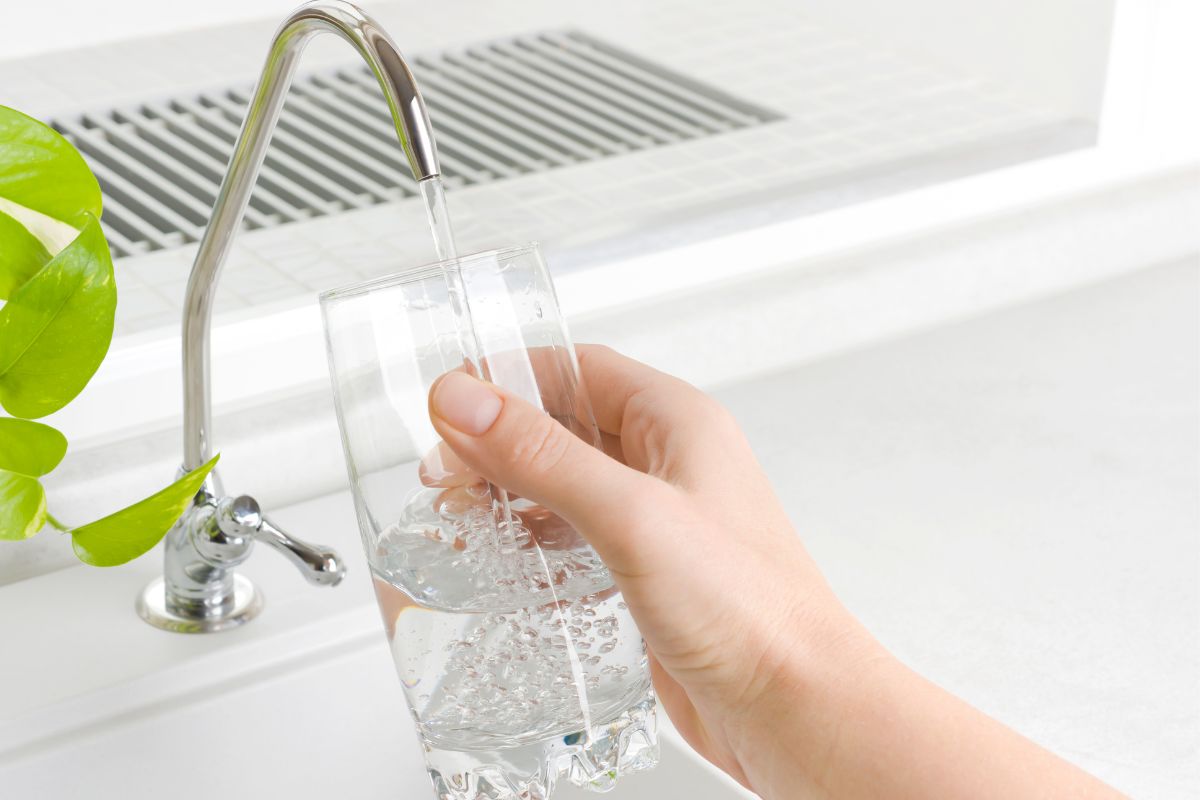
Water in our homes isn’t just about quenching thirst; it’s a hug in a glass, a caretaker of our well-being. Every drop you sip must be pure, refreshing, and free of any impurities or off notes. That’s the promise of a whole house water system.
But how does the Whole House Water System work? What are the filtrations stages involved?
In this guide, we’ll explore water filtration stages and break down the significance of each filtration kit — from the 1-Stage 20″ system that removes chlorine and odors to the 3-Stage 20″ cartridges that rid your water of particles like sand, dirt, silt, and rust. Let’s begin.
Understanding the Basics of Whole House Water Systems
A whole house water system is a comprehensive filtration and purification solution designed to ensure the quality and water safety improvements of the supply in your home. Installed at the main water line entry point, it includes a cartridge design evolution that serves as the first wall of defense against a wide range of impurities and contaminants that may be present in your liquid.
One such example is the 1-Stage 20″ Whole House System, which employs a specialized coconut shell carbon block filter cartridge within a 20” filter housing. This is complemented by a mounted bracket and a complete installation kit. The 1-stage systems effectively eliminate chlorine, organic compounds, odors, and fine particles, ensuring that the water you consume and use has a pure, refreshing quality.
Delving into the 2-Stage 20″ Whole House System

This innovative system introduces advanced filtration materials designed to further enhance your water quality. It effectively eliminates chlorine, odors, organic compounds, and both larger and finer particles.
Operating through a meticulous two-stage process, the system offers intensified safeguarding by expertly addressing sediment concerns, such as sand, dirt, silt, and rust, during the initial stage.
Expanding on the fundamental principles of the 1-Stage home water treatment, the second stage incorporates a cutting-edge granular activated carbon (GAC) filtration process. The carbon filtration advancement targets organic compounds, chemicals, and remaining odors, ensuring that your water not only looks clean but also tastes and smells fresh.
By addressing both chemical and physical contaminants, the 2-Stage systems provide a more holistic approach to water purification, resulting in a noticeable improvement in water quality throughout your household.
The Comprehensive 3-Stage 20″ Whole House System
This advanced filtration technology is the pinnacle of tapwater purification. It incorporates three distinct water system stages, each serving a specific purpose in delivering the purest and healthiest water possible to every corner of your home.
- Sediment Filtration: This crucial step targets and eliminates larger particles such as sand, dirt, silt, and rust that might be present in your water supply
- Granular Activated Carbon (GAC) This next-gen water purification medium absorbs organic compounds, chemicals, and remaining odors that can affect the taste and odor of your water. The result is not just visually clear water, but water that is refreshingly crisp and free from any unpleasant smells or flavors.
- Carbon Block Filtration: Using a specialized carbon block filter cartridge, this advanced purification method adds another layer of purification to remove lingering impurities like chlorine, VOCs, and other harmful substances from your water. The result is high-quality water at your faucets, thanks to a thorough filtration process.
- Bonus Pre-Filter for Extended Longevity: For water quality enhancement and efficiency of 3-Stage Systems, FilterWay’s Aquaboon offers a bonus: a reusable spin-down pre-filter. This first defense captures dirt, sand, and rust, thereby prolonging your cartridge lifespan by preventing clogs and saving you maintenance time and costs.
Comparing the Systems: Which One is Best for Your Needs?
Each home filtration system offers distinct advantages based on its stage configuration and purification capabilities.
| 1-Stage 20″ Whole House System | 2-Stage 20″ Whole House System | 3-Stage 20″ Whole House System |
| – Removes chlorine, odors, and organic compounds. – Ideal for basic purification needs. – Enhanced water taste and odor. – Suitable for homes with minimal particle contamination. | – Includes sediment filtration (sand, dirt, rust) in addition to 1-Stage features. – Comprehensive purification for improved water quality. – Addresses both chemical and physical contaminants. – Enhanced water taste, odor, and clarity. | – Advanced, multi-stage filtration that incorporates sediment, GAC, and carbon block filtration. – Maximum purification for superior water quality. – Eliminates chlorine, VOCs, and more impurities. – Includes added specialty cartridge benefits like the pre-filter. – Offers the freshest, cleanest water at every tap. |
When making a water system selection, make sure to consider factors such as your local water quality, specific contaminants, and your desired level of filtration.
Maintenance and Longevity: Getting the Most Out of Your System
Regular maintenance is crucial for optimal whole house water systems function. Specific care is needed for each system to maintain filtration performance metrics, so ensure to change cartridges every 6 to 12 months and inspect for leaks.
Also, regularly check filter conditions and pressure gauges for filtration efficiency. Routine specialty cartridge maintenance will enhance performance, extends system life, and ensures ongoing clean water delivery. These steps safeguard your investment and household well-being.
Making the Right Choice for Pure Water
It’s essential to choose a whole-house water system that matches your household’s needs. Whether it’s the 1-Stage, 2-Stage for added protection or the comprehensive water treatment solution of the 3-Stage system, your decision directly affects your home’s water quality. Consider local water conditions, contaminants, and your taste preferences for an effective and sustainable filtration method.
Remember, the journey doesn’t end with a specialty cartridge installation. Regular maintenance, such as timely cartridge replacements and routine checks, ensures the longevity and optimal performance of any of your chosen filtration technology trends. Safeguard your investment, and by extension, the health and comfort of your household, through these simple yet vital steps.
Greenhouses
Your checklist for greenhouse maintenance

From vegetables to fruit, reports show that demand for greenhouse produce has fuelled a surge in sales. This comes in light of climate change, which is impacting crops grown outdoors. The consistency and stability of greenhouse produce means that business is booming.
Maintaining greenhouses is an important factor in this success. It can help to ensure the success and health of produce grown in this environment. Fortunately, maintenance doesn’t have to be overcomplicated. Once you have the systems in place, it’s a fairly repetitive process.
Regular cleaning
As with a large part of maintenance, cleaning is key. It removes dirt and algae that could compromise the amount of light that gets into the space. You should keep the interior and exterior clean to allow maximum light to enter your greenhouse. Keep an eye out for pests and any diseases that may spread across the greenhouse and deal with this as soon as possible. Infected plants should be isolated to help with this.
You should also look out for plants that need repotting to help with root growth. Well-draining soil mixes suited to certain plants can be used to help them thrive. Plus, you should regularly prune and train plants so that they’re kept in good condition to help with growth.
Temperature and ventilation
Unsurprisingly, the temperature is an important factor to consider. The optimal temperature for most greenhouses is 18°-24°C (64°-75°F). This should be monitored and adapted accordingly. Use fans and make sure there’s sufficient ventilation so that produce doesn’t overheat in hot weather. You can even invest in automated temperature systems to help with this.
Humidity and shade management
Alongside temperature, maintaining the correct humidity levels is key so that you can accommodate plants that prefer different levels. Electrical systems that use industrial transformers and other devices to generate electrical power may be required to help achieve this. On a more simple level, you can create shade using cloths and other equipment to adapt to the light intensity. This is particularly important during the hottest part of the day. Sometimes, misting systems are used to help with this.
Irrigation and watering
Striking a balance when watering produce is essential to avoid under-watering or over-watering. Technology can help. Drip systems, automated irrigation systems, and soaker hoses are brilliant tools to use in your greenhouse on a large scale. Remember to monitor soil levels as well, so that you can adapt your watering systems where needed.
Fertilization
Using the correct fertilizer means that produce will receive the correct nutrients to help them flourish. Slow-release fertilizer is commonly used to help with this, as well as liquid fertilizer, depending on what your plants will benefit from the most.
Record keeping
Keeping records of when you plant and fertilize your produce can be a helpful method of tracking progress. This will help to shape timeframes that can be used as guides going forward. You could also track when you apply pest products so that you can minimize the amount added going forward.
Landscaping
The Advantages of Using Treated Timber in Landscaping Projects
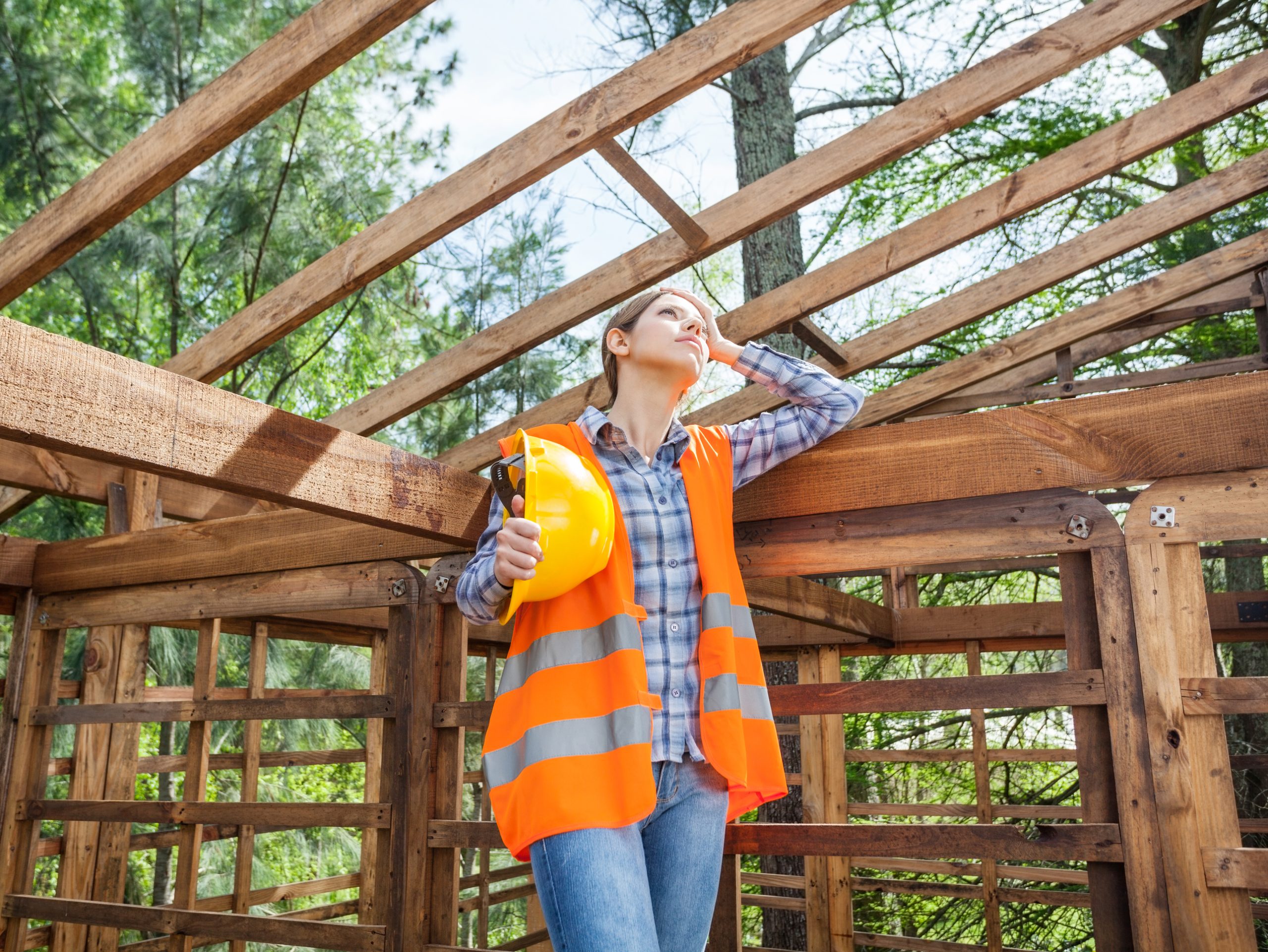
Landscaping is a vital aspect of renovating a home. With seven in eight of us having access to a garden, the importance of green spaces is by no means lost on property developers. Indeed, a good garden can have real impacts with regard to property value and first impressions amongst viewers.
But choosing how to approach a landscaping project will naturally differ from renovator to renovator, and from taste to taste. Material considerations are paramount here, informing as they do the aesthetic and budget of the finished garden. Treated timber is a strong and often underrated contender for outdoor structures, but why is it advantageous to use?
Durability and Versatility
First and foremost, treated timbers are purpose-made to be hard-wearing. They lend themselves well to outdoor applications, on account of being moisture-resistant and hostile to the growth of decay-abetting microorganisms. These timber products are treated with chemicals that prevent the growth of fungi and help support wood fibres for longer. As such, they are primed to survive shifts in weather and temperature, making for longer-lasting superstructures.
Not only are treated timbers durable, but they are also versatile. Wood as a material suits a wide variety of practical applications, being an easy material with which to work. This is to say nothing of its aesthetic value, wherein even bare treated timbers can be used to great effect for the visuals of a given landscape design.
Pest Resistance
Treated timbers have numerous advantages over untreated timbers. We’ve already discussed how the chemicals with which they are treated prevent the ingress of moisture and fungi; the same can also be said for pests and insects. Burrowing insects like termites and carpenter ants can wreak havoc on the structural stability of a finished design, be it a pergola or a raised bed. The chemicals in the timber are a deterrent for these insects, ensuring that the structures you build retain their integrity for far longer.
Environmental Friendliness
One of the major benefits to designing landscaping projects around the use of treated timber is environmental in nature. Building materials have a significant impact on the environment, both in terms of local ecosystems and carbon emissions. With regard to the latter, concrete – a common landscaping material – can be extremely pollutive as a material, and unkind to flora and fauna to boot. Timber, however, is a sustainable and renewable resource. Less carbon emissions are a produced in the processing of timber, and more timber can be grown in its place.
Cost Friendliness
Finally, utilising wood products in the place of metal or stone can have positive implications for a given landscaping budget. Timber is cheaper than these materials, and can achieve similar goals dependent on design. As such, a landscape idea can be realised for dramatically less than it might be with other materials – with aesthetic and environmental positives to boot.
Design Tips
Enhancing Home Value: The Timeless Appeal of Gardens and Green Spaces
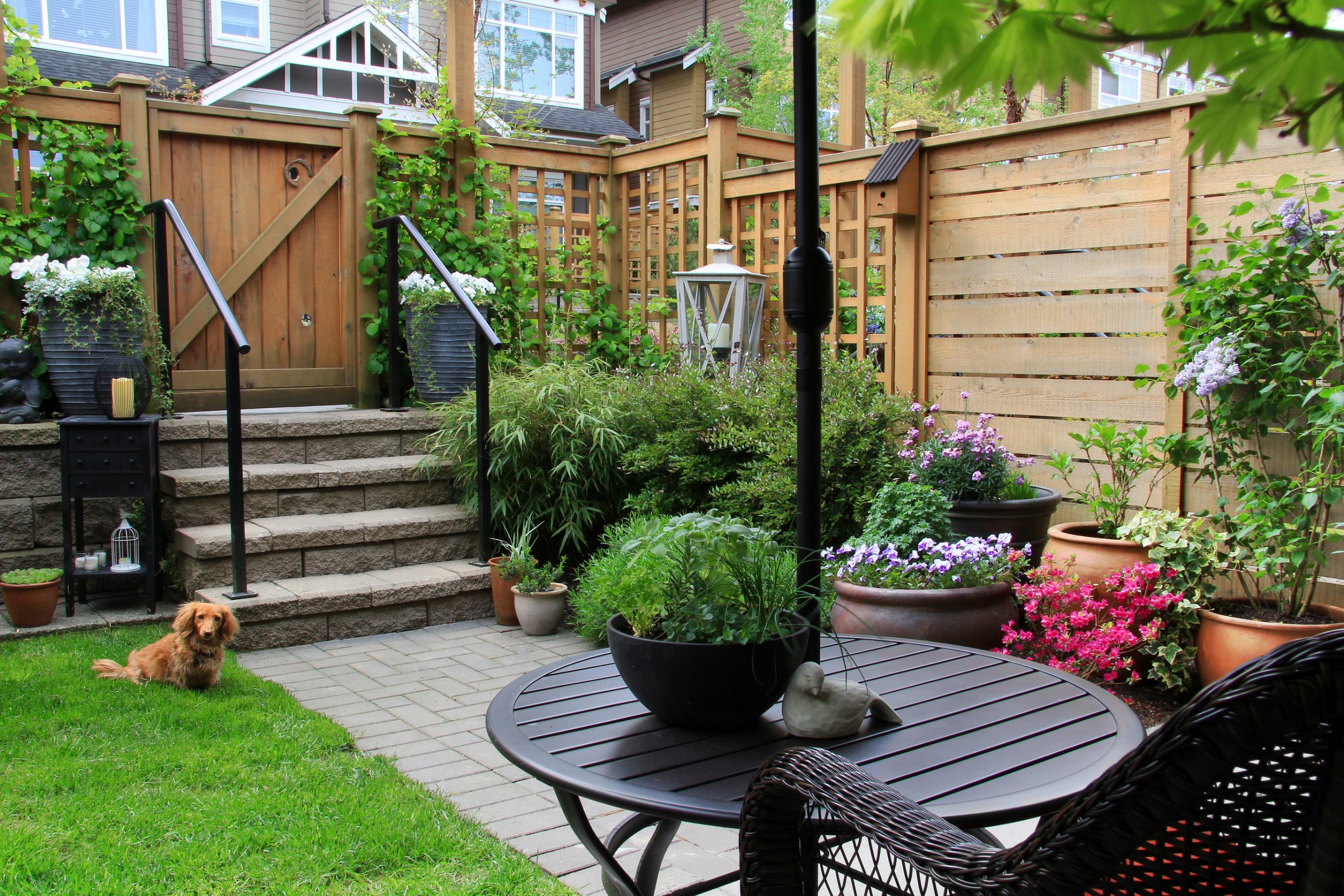
The property market is a difficult market with which to engage at present, as property values face a precipitous decline against high rates of interest. Homeowners with a view to rent or sell are naturally looking for ways to improve the value of their property, but the endeavour is more important now than ever. An oft-overlooked area for consideration or development is the garden; seven in eight UK homes have access to a garden, but what is it about them that generates value?
‘Kerb Appeal’, and First Impressions
The most obvious way in which green spaces enhance a home is aesthetically. It cannot be argued that a well-kept garden is a beautiful thing; not only can residents find value in looking out on their garden, but neighbours and visitors benefit from a verdant space in the neighbourhood.
The aesthetic value of gardens also brings about tangible value. As a landlord, it is in your best interest to keep a garden well so as to attract renters to the neighbourhood; in certain circumstances, landlord insurance can also cover the value attached to a garden, as with trees and furnishings. Investing here is wise, as first impressions can make a serious difference.
Increased Market Demand
That kerb appeal, and the value of those first impressions to the sale process, have their own knock-on impacts in a much wider sense. Communities with accessible gardens and green spaces become more in-demand for buyers, as they attract more attention overall; expectations for a property with ample space grew during the coronavirus pandemic, and continue to affect the relative value of homes across the UK. With this in mind, a good garden can add serious value to a property – both financially and with regard to market trends. This is where Portsmouth’s leading estate agent can provide invaluable assistance.
Expanded Living Spaces
As touched upon earlier, the pandemic-era ‘race for space’ saw more households and prospective buyers seeking to leave urban areas and smaller properties, in favour of homes with more living space and total square footage. This accounted for a general desire to leave built-up areas, and for a new desire amongst working households for at-home office spaces.
The role of green space in this shift has been understated, especially when it comes to the functional addition of usable living space. Gardens are not just aesthetic additions and can be crucial to the expansion of living space in numerous ways. Patios and outdoor living spaces are becoming more popular, while many are using their garden as the location for a separate office structure, removing the professional from the personal and creating a pleasing environment in which to work.
Energy Efficiency
Another criminally underrated manner in which gardens add tangible value to property comes in the form of energy efficiency. Trees and hedges are, in effect, natural insulators. They protect properties from both wind and sun, with positive seasonal impacts with regard to domestic energy usage. Air conditioning usage is reduced via natural shading of properties, while hedgerows close to the external walls provide an additional layer of heat insulation.
Home Repair
Home Remodelling on a Budget: Ideas That Work Wonders
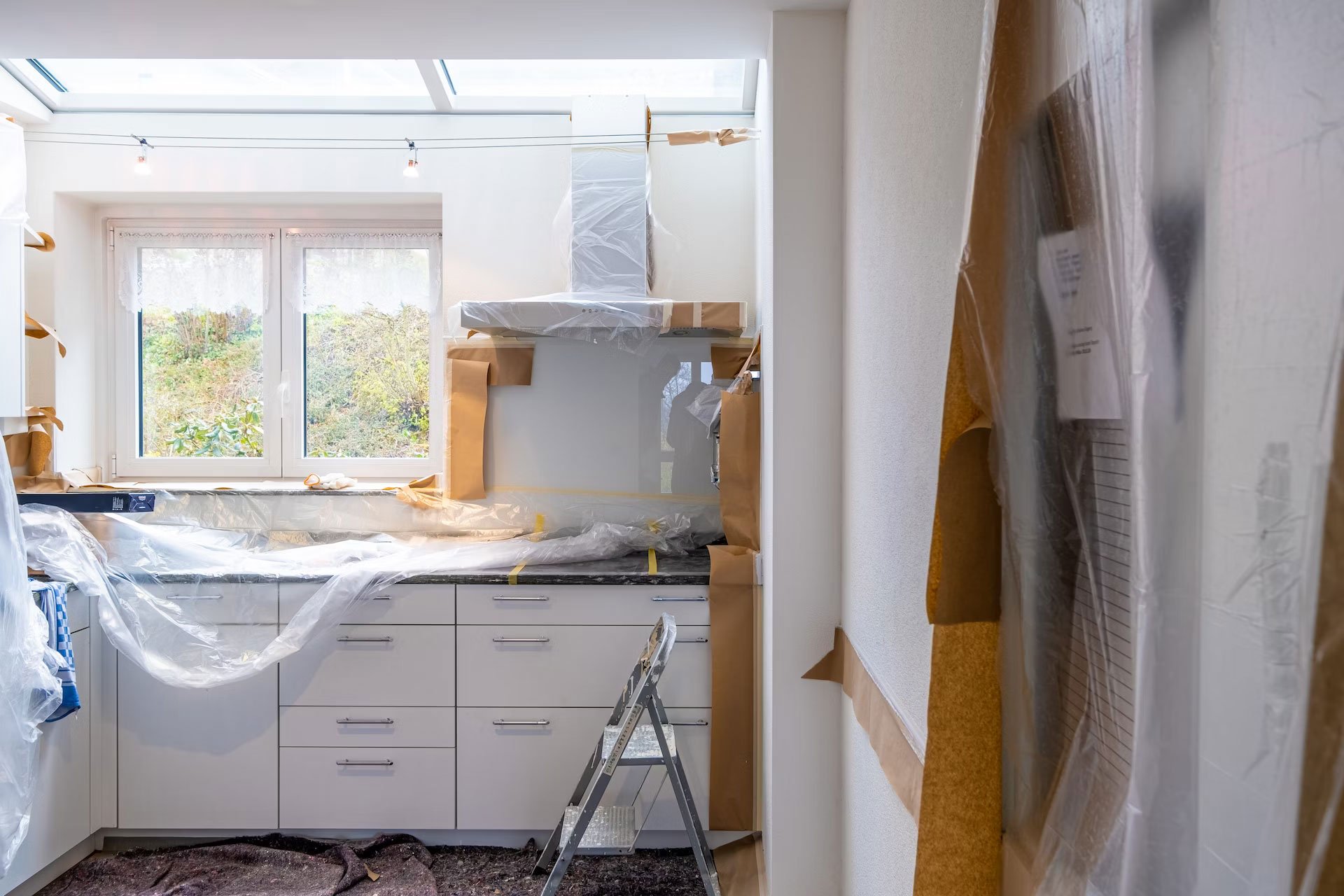
No homeowner thinks that their home is merely bricks and mortar! Instead, it serves as a canvas for their style—a beautiful reflection of their choices and thoughts. However, as time passes, the usual wear and tear can cause the house to lose its shine and beauty.
At such moments, most homeowners yearn for a refreshing change! The allure of a remodeled home with enhanced functionality and modern upgrades is undeniable. Yet, concerns of the associated costs often dampen the enthusiasm. An interior remodel might typically cost anything between $1,200 and $4,700, and some projects can be even more expensive.
But fret not! Even with a tight budget, your home renovation need not break the bank. There are useful and smart home renovation hacks that ensure your home gets a new look without compromising your savings
Budget Home Remodel Ideas
Through a well-thought-out home renovation plan, homeowners aim to bid farewell to their drab spaces and welcome a new version of their homes. To accomplish this within a budget, it is essential to contact an interior designer and seek their ideas and expertise.
Since interior designers are experienced in both budget-friendly and upscale home renovation projects, they can provide ideas that work whether you want a simple refresh or a complete image makeover. Additionally, they can turn your vision into reality by executing one affordable idea at a time.
Allison Jaffe highlights that homeowners seek ways to express themselves through home remodeling. One must tap on to unique and creative ways to reclaim the space as their own. Therefore, the role of an interior designer is to intuitively tune in to the ideas and thoughts of the homeowner, understand their needs, and devise contractor-friendly plans to approximate their vision.
Now that you have decided to renovate your home within your budget, the following ideas can work wonders:
- Re-Do the Old Front Door
The front entrance of your home can either make or break an impression! It can either invite more people to your house when done right or draw a shabby impression, if not in good condition. Does your front door need work? If so, no need to get a new one. Instead, you can add a fresh paint coat or new hardware to it. Even a spruced-up trim works!
It’s easy to repaint the old door and upgrade its accents. Easy and affordable renovations go a long way in enhancing the overall appearance. Also, don’t just stop at that. Give a good scrub to your home’s exterior by using a garden hose, soap, and a robust brush. A power washer can expedite the process. As for the cost, expect anything between $20 and $50.
- Get a Chic Stair Runner
Any visitor who walks into your house will notice the stairs first. Hence, you can’t afford to have untidy treads. You can think about purchasing a modish stair runner to give the space a fresh and inviting look. To bring on an array of vibrant colors, bold-colored and striped runners are a smart choice.
On the other hand, if you prefer a more understated look and don’t want to go over the top, opt for a classy neutral weave or a thick pale pile stair runner. In terms of cost, you can expect to spend a few hundred dollars for the same.
- Repair the Thermostat
Often a home renovation will demand that you look into some essential repairs, such as ensuring that the thermostat works correctly. A malfunctioning thermostat is frustrating when you are aiming for the correct indoor climate, which also impacts the way people feel when they are in your house.
Also, a correct temperature controller is essential for improving HVAC system effectiveness. At times, you may wonder why my thermostat is not working? If so, you need to check the signs for malfunctioning and get it remedied at the earliest.
Air Ace Heating & Cooling states temperature malfunction is an indication of thermostat malfunctioning. When temperatures change rather rapidly, the thermostat is not working correctly. Unresponsive buttons and blank screen spotting are other signs that suggest it’s necessary to correct the device and consider it as a part of your home renovation.
- Refresh Bathroom Floors
Retiling will prove to be costly for your bathroom. An affordable option by which you can get a similar updated look is to paint the current floor. Today, you can select from several paint shades and stencil designs that are within your budget and are easy to implement. It will cost you around $65.
- Get New Curtains
Window treatments transform the overall look of your house. Choose the affordable pre-made models to install it fast. You can get a chic curtain rod for $6 and a couple of curtain panels for $25. If the windows aren’t of the standard size, you can check out the adjustable no-sew drapes and use them with double-sided fabric tape.
Conclusion
Transforming your home on a budget is more than a mere possibility; instead, it’s a delightful adventure waiting to be embraced. Throughout this journey, we have discovered that with resourcefulness and creativity, even the simplest changes can work wonders. From repurposing and DIY projects to seeking the expertise of interior designers, we have explored a range of solutions to revitalize living spaces without straining your finances.
As you embark on your remodeling journey, remember that the essence of a home lies in the love and care you invest in it. So, stay determined, but keep an open mind. Using these ideas you can renovate your home within your budget and create a lasting impression on all.
General Gardening
Mastering Lawn Care in Lancaster County: A Guide to Riding Mowers

Choosing the best lawn mower for your needs can seem like quite the task. Unless you’re a landscaper, you likely aren’t aware of just how many styles of mowers exist these days. You have your traditional manual push mowers, your walk-behind mowers, and your stand-on mowers. Then you have riding mowers and even robotic lawnmowers! Not to mention the different styles, brands, and attachments you can get that need to be compatible.
The style of lawn mower you choose will depend heavily on the size of your yard and your comfort during spring and summer weather. Today, we’re going to look specifically at riding mowers to help you choose the best options for your Lancaster County property.
Advantages of Using a Riding Lawn Mower
Each style of mower has its pros and cons. Riding mowers tend to be one of the more popular choices these days, for good reason. For one, they can cover a lot more ground in a fraction of the time than a push or stand-on mower. They’re also safer; most riding mowers have a kill switch under the seat. If you leave the seat, it powers off.
Sometimes we aren’t thinking clearly in an emergency. For a dramatic example, if you see your kid heading for a collision with an oncoming vehicle, it’s no surprise if you dart out of that seat and run to catch them with no thought for the ignition. You can rest easy knowing your lawnmower will stop itself.
Additionally, the blades are harder to access and most riding mowers have a ‘blow chute’ that directs any debris coming out of it, from grass clippings to small stones. These won’t be jumping up to try and drill a hole in your jeans anytime soon.
Another great benefit to riding mowers is that they’re accessible to a larger number of homeowners. Now, they aren’t perfect— people with disabilities may have issues driving one. But they are great for people with mobility issues who can’t stand for the entirety of their lawn or shove around a heavy mower on their own. It’s also great for seniors who are still active but looking to reduce their risks, especially in lawn care.
Most riding mowers also have more options than manuals, pushes, or stand-ons. They come with mulching options, bagging options, and more. You can easily adjust speed and blade height to get the healthiest cut for your lawn. And, let’s be honest, some of those seats are pretty darn comfortable, especially when you’re having to be out in the heat of summer doing yard work.
Choosing the Right Riding Mower
One of the major cons of riding mowers? All the choices! It can easily get overwhelming when you want to look at riding lawn mowers for sale. You have different styles, cut widths, and features to explore. Let’s take a quick peek at some of the options.
Riding Mowers, Garden Tractors, and Zero-Turn Mowers
The first differentiation is mowers versus garden tractors. Your standard riding mower will have a pretty simple design and use a steering wheel or two handles to control turns. Their attachments generally involve bagging, leaf disposal, aeration, seeding, dethatching, etc.
On the other hand, you have garden tractors. These tough guys use powerful engines and heavy-duty transmissions. They also work with more ground engagement, like a drag harrow or a plow. If you have several acres, you may need a more powerful machine like a garden tractor.
Both can generally handle hitching to pull other equipment around and some form of snow removal.
Next, we have what’s called a ‘zero-turn’ mower. A zero-turn is closely related to the standard riding mower with one big difference: maneuverability. These mowers are popular for their sharp pivot abilities and front caster wheels. Zero-turn mowers can easily navigate obstacles in a lawn, from planter circles around trees to the decorative farm equipment you planted your spring flowers in.
These use a pair of lap bars or levers instead of a steering wheel to give you more precision control. They have a good forward speed and can get close to landscaping features without causing damage, cutting back on your need to use an edger.
Riding Mower Transmissions
There are three major styles of transmission in today’s mowers: manual, auto, and hydrostatic.
Manual transmissions for riding mowers offer you a range of set speeds to choose from; you don’t need to stop or clutch to switch between them. Automatic tends to rely on its gas pedal for your speed, much like an automatic car will. If you have solid foot and ankle mobility, it’s a good choice for if you need to change your speed often, like slowing down for obstacles. If you don’t, the manual offers a more stable speed that just needs a shifted lever to change.
Then you have hydrostatic. These work a lot like automatic transmissions, except you don’t have belts. Instead, fluid transfers power from the engine to the wheels. This gives you a smoother ride and also tends to require less maintenance, extending the life span. Of course, these benefits come with a price tag to match.
Other Features and Options
Once you know what style and transmission fits your needs and budget, you can start thinking about other features:
- Cut width: how wide a strip the mower cuts per pass. The more acreage you need to cover, the wider inch cut you’ll want to find.
- Deck wheels: these help you maintain a consistent cut over uneven terrain. If your yard isn’t very smooth, look for a model with more deck wheels to avoid gouging your lawn.
- Comfort features: some mowers have cup holders, while others have rubber foot pads. While this may not be a priority for some folks, it can make mowing more manageable for others.
- Maintenance features: check out what your potential mower requires or offers for oil changes, fuel, or grease fittings for easy maintenance.
- Resistance to damage: if you’re worried about brushing up against obstacles or training the next generation of mower, such as kids or grandkids, consider a riding mower with a bumper or brush guard. Other mowers have thick-gauge steel to resist damage better.
Maintenance Matters
Whatever features you decide to go for, it’s important that you keep up with maintaining your mower. This includes proper storage, winter prep, and overall engine maintenance. Make sure you thoroughly read the manual for any tips and tricks, or talk to someone at your local garden store or where you’re shopping for the mower. Make sure the standard maintenance for a model is something you can handle with your time and budget or something you can afford the maintenance plan on.
Mowers are a heavy investment; make sure you get the most life out of yours by thoroughly considering all the features available and keeping up with maintenance.
Greenhouses
8 Unique Tips To Make Your Pennsylvania Greenhouse Stand Out
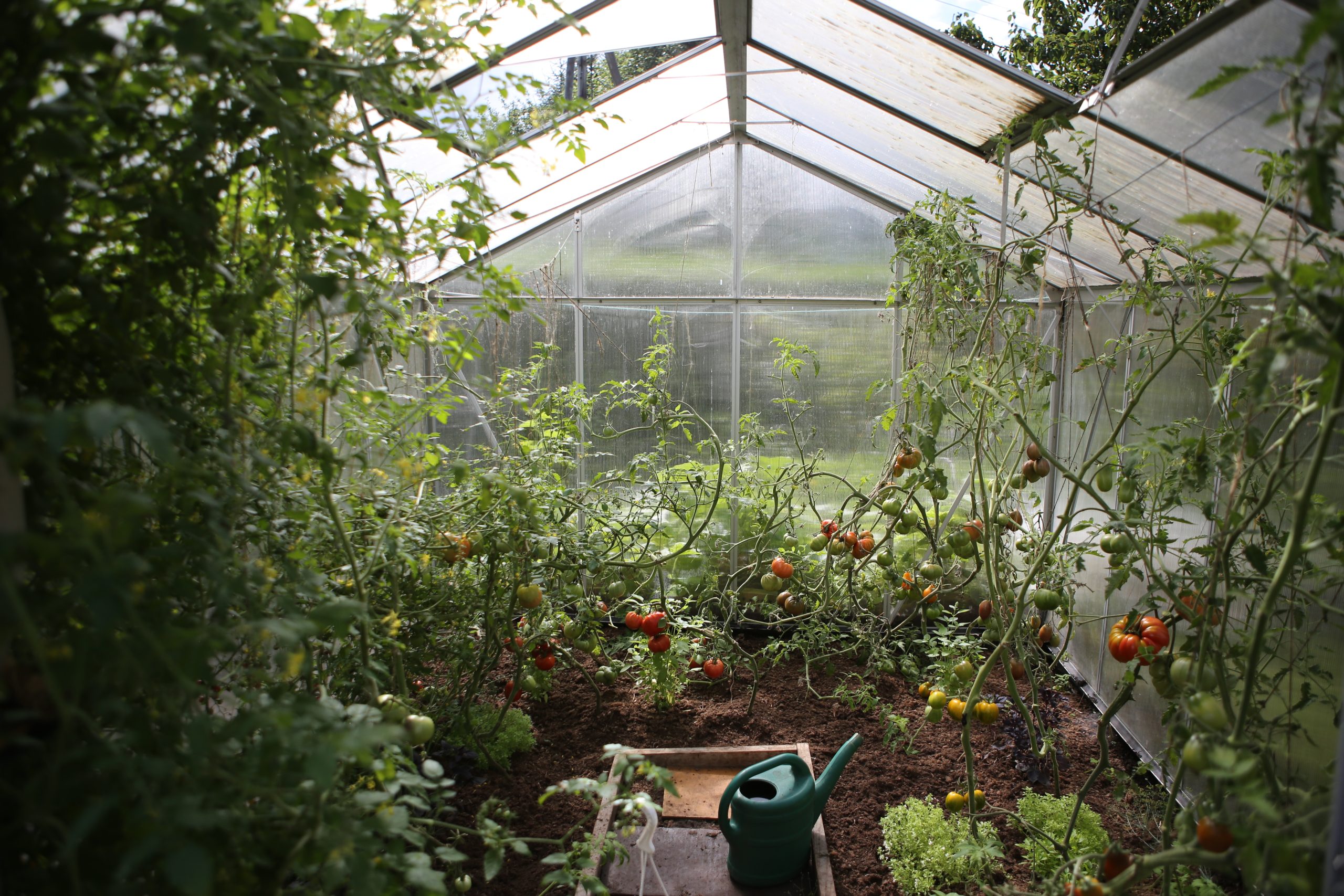
Adding a greenhouse to your home design offers many benefits, including a place to protect your plants and flowers. A greenhouse doesn’t need to be aesthetically pleasing, it just needs to be functional. However, designing your greenhouse to be nice-looking can boost your home’s curb appeal and give you somewhere to sit back and relax.
We have compiled a few unique tips to make your Pennsylvania greenhouse stand out.
Make a Blueprint Before Planting
Start with a plan or blueprint so you know the size of the greenhouse you need, plus where everything goes. Use this blueprint to map out where each plant will go, including what types of planter boxes you’ll need. Be sure to include a storage area for all the topsoil, mulch, seeds, and upkeep equipment you’ll need and want nearby.
Choose the Best Location For Your Greenhouse
In addition to considering size and flower types, you’ll want to choose the best location for your greenhouse. If you already have a greenhouse, consider if it’s in the best location or if you want to begin the process of moving it. In most cases, the best location for your greenhouse is in the south or southeast part of your yard.
This allows the greenhouse to get ample sunlight, which can help your flowers and plants grow faster and bigger. The good news is that smaller greenhouses are typically easy to move without having to disassemble.
Add Pops of Color To Make It Stand Out
Greenhouses don’t have to be green. Adding pops of color to your greenhouse can give it a unique vibe. Paint the walls vibrant colors of red or orange, and add a few matching-colored planter pots. For a consistent design, match the vibrant colors of your greenhouse walls to some of the flowers in the garden. You could also add color using shade clothes or LED lights. You could also use colorful furniture or workspaces to create a vibrantly colored greenhouse.
Choose Premium Growing Materials
Stocking your greenhouse with premium growing materials, including soil and mulch, makes it easier to give your plants the nutrients they need to thrive. The specific materials you’ll need vary, depending on the flowers and plants you want to grow. However, organic mulch and nutrients are a few must-have items to add to your materials list.
Incorporate a Sitting Area For Working and Relaxing
Few things are more peaceful than sitting back and relaxing amongst the beauty of your greenhouse labors. A small bench or chair in the middle of your greenhouse makes it easier to prepare potters and plant trays while also allowing you to enjoy the beauty. Some greenhouse owners have even gotten creative with their sitting areas. Repurpose a few used tires as a quaint sitting area. Add a small booth for a cafe feel.
Upgrade the Floors For a Low-Maintenance Greenhouse
You can choose simple stone flooring or go with something more vibrant, like flagstone and natural stone materials. Upgrading your greenhouse’s floors helps keep them clean and mud-free. A nice stone material can also give your greenhouse a modern design. Whatever floor design you choose, ensure it has ample drainage and a weed barrier. This will also make it easier to keep your greenhouse clean.
Add Lighting to the Greenhouse
If your greenhouse is equipped with electricity, you can run lights to it, allowing you to garden late into the night. You can also use heat lamps to help your flowers and plants thrive. Heat lamps are also useful during colder weather in Pennsylvania. With the right lighting, you can continue gardening all year long.
LED lights are a great energy-efficient option, as are solar-powered lights that don’t have to be plugged in to use them. Fluorescent lights are a good option for seeds and greens. For a unique design, consider a vintage chandelier hanging from the center of the greenhouse.
Create a Romantic Ambiance
Give your greenhouse a romantic ambiance with candles and string lights. Add a bistro set that will become your favorite destination for date night or a morning cup of coffee. Decorative displays made from flowers or colorful vases will also give your greenhouse a unique design. Spend a few weeks checking out garage sales to fill your greenhouse with vintage decor.
A backyard greenhouse can be as basic or artistic as you want. Create a blueprint ahead of time so you can plan the exact flowers and plants you want. Then, get creative and personalize your greenhouse to fit your design preferences with fun, vibrant colors, and ample, native flowers. You’re sure to learn as you go, eventually creating a beautiful garden.
General Gardening
Implementing Eco-Friendly Plumbing in Your Home Garden

So, you’ve heard about this concept – eco-friendly plumbing, but what does it truly entail? Well, in the simplest of terms, it’s a philosophy focused on developing and integrating plumbing systems that are gentle to Mother Nature.
How, you ask? It champions judicious use of water, staunchly opposes wastefulness, and embraces natural gifts such as rainwater. Choosing eco-friendly plumbing isn’t just a charitable act for our Earth’s wellbeing – it also rewards with substantial savings on your water bills over a period. Not only do you uphold the health of our planet, but your wallet breathes easier as well.
Importance of Eco-Friendly Plumbing
In today’s world, the significance of adopting sustainable practices is unquestionable. The importance of implementing eco-friendly plumbing in your home garden stems from concerns around environmental conservation and sustainability.
Each drop wasted or unnecessarily used adds up, contributing to the increasing global crisis of water scarcity. However, with green plumbing systems, you can play your part in alleviating this severe problem.
If that’s not enough to sell you on eco-friendly plumbing, consider the positive impact it has on your surroundings. Your garden will flourish with more natural modes of watering while cutting down on unnecessary water usage aids the overall environment. More than just a trendy method to save money, eco-friendly plumbing becomes an investment in a cleaner, greener future.
Different Eco-Friendly Plumbing Systems
Now that we’ve explored why green plumbing is integral, let’s delve into the different types of eco-friendly plumbing systems you can integrate into your home garden.
One popular choice is greywater systems. These utilize wastewater from your showers, tubs, washing machines (minus toilet water) and channel it for use in your home garden. Another efficient system is rainwater harvesting where rainwater collected from roofs gets stored and used later for watering plants or even indoor use after proper treatment.
Tankless water heaters are also gaining popularity due to their energy efficiency. Unlike traditional heaters requiring tanks to store hot water constantly, these heaters heat up the water instantly when needed – eliminating energy wastage.
Steps for Implementing Eco-Friendly Plumbing
So now that you are motivated and ready to make your transition towards green behavior, how can you implement eco-friendly plumbing? You must first evaluate your current system before identifying the most suitable green solution for your specific needs.
Once determined, work with professionals to install these systems because they need professional expertise for proper setup. You might want to learn more about dansplumbing.com.au offerings relating to eco-friendly solutions if you are unsure about where to start or which options would best suit your circumstances.
Maintenance of Eco-Friendly Plumbing System
Just like any traditional installation system requires maintenance to ensure its effective functioning, so does an eco-plumbing system. Regular checks and timely adjustments if necessary can prevent major breakdowns or inefficiencies in the future.
In case you are uncertain about handling maintenance tasks yourself, don’t hesitate seeking professional help for ensuring smooth operation of your newly installed green systems.
The Role in Water Conservation
Eco-friendly plumbing plays a crucial role in alleviating today’s pressing concern about water conservation at all levels – personal, community, national and international.
By reducing waste at an individual level through efficient practices or utilizing systems such as efficient showerheads or dual-flush toilets we contribute substantially towards lessening demands on global freshwater resources.
Financial Savings from Green Plumbing
These eco-friendly practices clearly present distinct environmental advantages. But another consequential positive outcome is the significant reduction in utility bills. When these systems and practices are widely adopted, we can witness a collective reduction in financial expenditures across households nationwide.
Seeing this practical benefit not only incentivizes more homeowners to embrace sustainable methods for future installations but also encourages them to upgrade existing systems to ones with higher efficiency levels.
Eco-Plumbing: A Rewarding Investment
If you’re thinking about the cost involved in installing eco-friendly plumbing, remember that it’s an investment for the future – not just for your property but also for the environment. The initial expenses may seem considerable, but over time, the collective savings on utility bills far outweigh the starting costs.
Reaping Benefits Beyond Conservation
Apart from conserving precious resources and saving money, incorporating environmentally friendly plumbing practices in your home garden also contributes to improving the overall quality of life.
It opens up avenues to cultivate a healthier living space and nourishes greener environments crucial in today’s urban landscapes. Further boosting this initiative are numerous government incentives encouraging homeowners to adopt these practices.
In Conclusion
Embracing green changes in our everyday lives, particularly in our cherished home gardens, isn’t merely an exercise in being eco-aware. It’s a rewarding endeavor – yielding both considerable monetary economies and nurturing healthier natural habitats.
Jump on the bandwagon of a greener tomorrow with eco-plumbing. Make bold moves towards safeguarding our planet’s health and beauty by making clever, environment-friendly choices that we can all significantly reap benefits from.
Hydroponics
Hydroponic Gardening: Utilizing Filtered Water for Optimum Growth
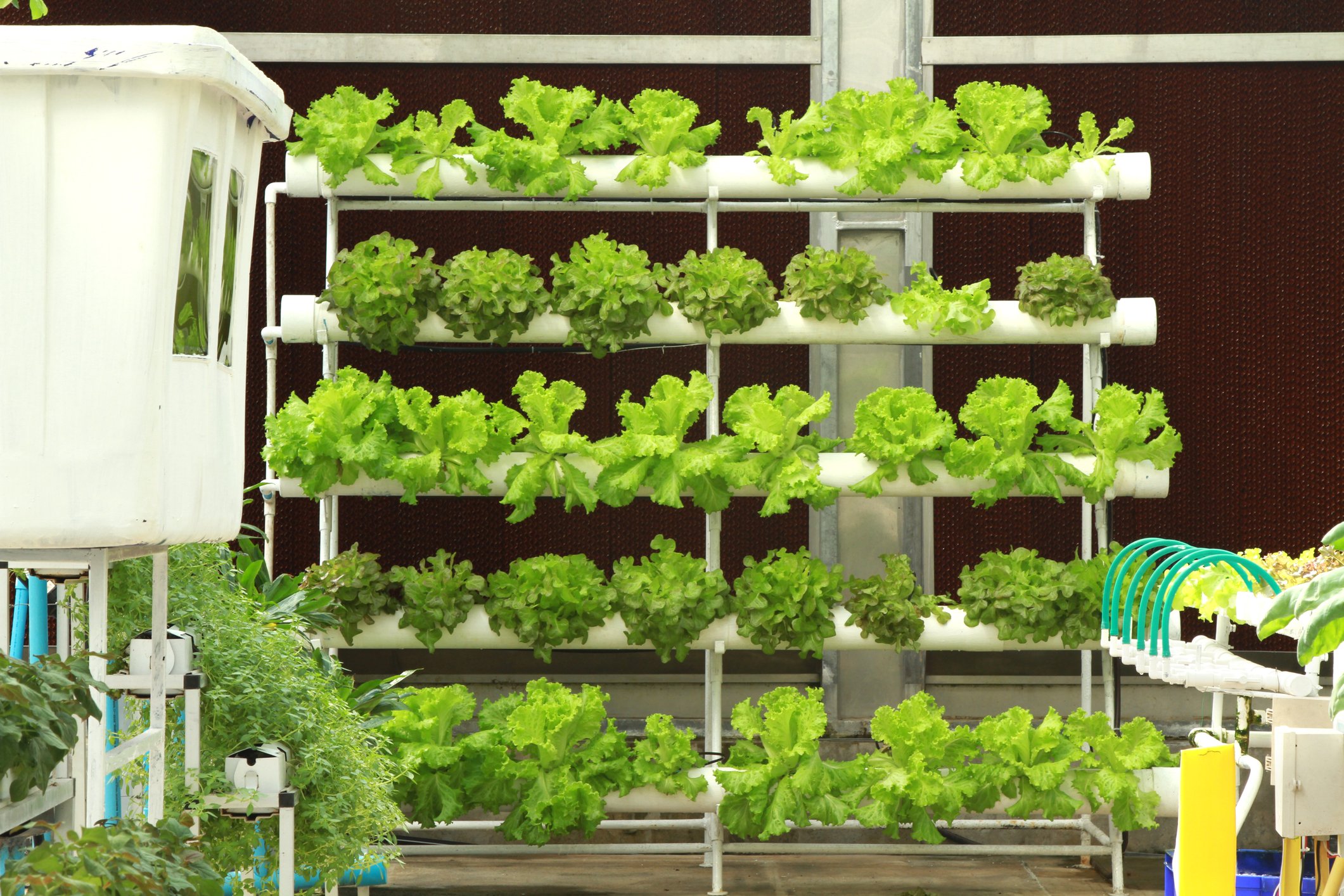
In an evolving world where sustainability is paramount, you might find yourself drawn to different ways of nurturing green life. Hydroponic gardening is one such method, utilizing technology and innovative techniques to grow plants in water-rich environments without relying on traditional soil-based methods.
This technique offers exponential growth potentiality, more control over the plant’s health, and ultimately, a higher yield. As the cornerstone of this approach is water management, understanding its quality is fundamental.
Defining Hydroponics: Basic Overview
You’re probably wondering what hydroponic gardening entails in its entirety. Simply put, hydroponic gardening refers to a soil-less cultivation process where plants receive nutrients directly from mineral nutrient-infused water solutions.
This method eliminates the need for typical terrain-based growth and provides you with total control over your harvest’s nutritional intake.
Role of Water: Comprehensive Perspective
In hydroponic gardening, water is far more than merely a plant’s lifeline; it’s the essential conduit of vitality. Envision each ounce of hydration your plants receive, ferrying crucial nutrients directly to them. Mind-bending, right?
But there’s more! This nutrient-rich elixir needs to be untainted and pure constantly. A mind-boggling condition, yes, but utterly essential in this mysterious yet enthralling world of hydroponic plant nurturing!
Furthermore, water acts as the conductor between the essential nutrients and the plant roots—a clear path without any obstructions catalyzes optimal growth and healthy yields.
Importance of Filtered Water: Detailed Discussion
While water is crucial to hydroponic agriculture, it’s not just any water that does the trick—it’s important to use filtered water. With filtered water, you eliminate the likelihood of harmful substances sullying your ecosystem or stunting your plant growth. Impurities could interfere with nutrient uptake or even cause disease within your green population.
Indeed, filtered water lays the foundation for optimum growth. So don’t hesitate – go ahead and visit filtap.com.au — they proffer some practical solutions that’ll filter out harmful impurities from your water sources.
Filtered Water and Optimum Growth: Analysis
Using clean filtered water makes nutrients readily available for absorption by plant roots resulting in optimum growth. Your hydroponic farm will appreciate the absence of impurities that could block or limit nutrient uptake channels leading right into healthier leaf color, better flowering, fruiting and generally overall improved plant health markers.
Techniques for Utilizing Filtered Water: Exposition
The eco-friendly feature stands out about this technique for using filtered water within your strategy-focused endeavor. Adopt filtration systems which effectively remove chlorine residue from tap water sources or utilize reverse osmosis systems which accommodate bigger-sized farms serving larger quantities of plants; whatever works best given the circumstances!
Benefits and Potential Issues: Deliberation
The positives of hydroponic farming are numerous, primarily featuring amplified growth rates and augmented yield sizes. However, like all other things, there exist potential pitfalls too.
Incorrect nutrient mixing can damage the delicate roots, while failures in the pump system may lead to roots drying out, causing irreversible harm. Yet, staying mindful and alert can ensure that triumphant results are achieved more times than not.
Global Trend Perspective: Broad Insight
Internationally, the rising interest and concern about sustainable farming methods have globally tilted the scales in favor of hydroponics over conventional farming techniques.
The reasons stretch beyond those mentioned earlier and include environmental considerations such as reduced land utilization, considerable carbon footprint reduction, and less reliance on nature’s unpredictable factors like weather variations or pest invasions.
This shift has made sustainable urban farming technologies the epicenter of global discussions, primarily aimed at ensuring food security in heavily populated metropolitan areas.
Case Studies : Real-World Scenarios
There are numerous real-world success stories that underline the efficacy of well-managed hydroponic systems. These include small hobbyist initiatives blossoming into commercial businesses yielding sustainable financial gains.
Universities all around North America have begun partnering with private industry peers, initiating studies that illustrate the value of ensuring reliable food sources and diminishing environmental impacts.
Several non-profit organizations promote urban farming technologies in densely populated urban centers with the dual aim of alleviating poverty and providing access to affordable, nutritious food right within city limits!
Future Outlook: Predictive Evaluation
The surge in worldwide adoption of this efficient growing method is set to open doors to numerous potential improvements. These enhancements promise to augment the already sizable product yields.
The future might witness AI-integrated platforms educating cultivators about the exact nutrient concentrations needed for individual plant requirements.
Additionally, sensor technology could be integrated into monitoring systems, promptly detecting nutrient deficiencies and prompting preventive measures before any harm comes to the plants.
Other developments could include planter boxes designed with nano-tech membranes to hold nutrient-rich liquids, eliminating pump-based distribution and considerably reducing maintenance and replacement costs. Indeed, there are stimulating prospects on the horizon!
Wrapping it Up: The Power of Hydroponics
Using clean, filtered water in hydroponics offers significant benefits like a controlled environment and efficient fertilizing. As we move forward, innovative technology promises to transform this field even further. Join this movement towards a greener future where traditional cultivation constraints no longer limit us.
Greenhouses
Preventing Water Damage in Your Home Garden and Greenhouse
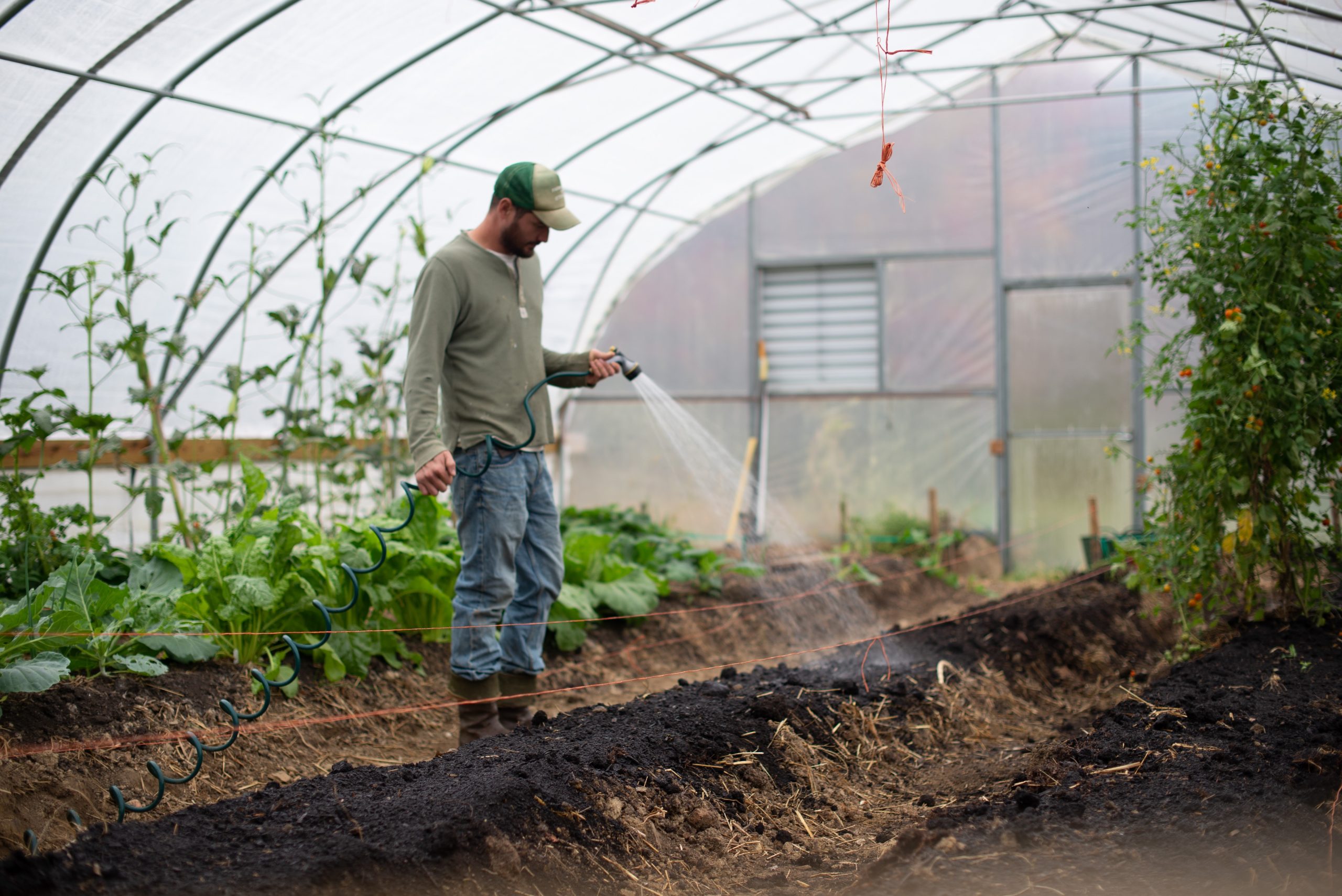
As a dedicated gardener, maintaining your garden or greenhouse’s health is vital. Yet, water damage, a silent threat, can jeopardize your hard work if unnoticed. Understanding its causes and managing it effectively can prevent such disasters.
Understanding Home Garden Issues
Water damage in your beloved home garden can be a stealthy adversary. It often begins its intrusion slowly and subtly, expressing itself through seemingly minor changes that might initially go unnoticed.
Perhaps you’ve spotted yellow leaves or witnessed certain plants wilting despite being properly watered. These could be early warnings of water damage, birthed from overwatering or substandard drainage.
Overwatering is a common trap that ensnares numerous unsuspecting gardeners. It’s a simple misconception to associate more water with more growth, but the reality sings a different tune. An overflow of water can stir up a storm of root rot, accelerate soil erosion and ultimately usher in the downfall of your prized plants.
On the flip side of this coin is inadequate drainage. If your garden’s soil is not draining efficiently, water starts to pool, giving rise to issues akin to overwatering – like root rot and potential plant diseases.
Identifying Greenhouse Water Problems
Greenhouses are typically more controlled environments than outdoor gardens but they are not immune to water problems. Common issues include condensation build-up on walls or ceilings, leaking roofs or pipes, and poor irrigation systems.
Condensation build-up can create a humid environment which is perfect for mold and mildew growth. Leaking roofs or pipes not only waste precious resources but can also create pools of standing water which leads to root rot.
Subpar irrigation systems could become a bane for your greenhouse, either drenching your plants with excess water or denying them equal distribution of this vital resource. This imbalance paints a picture of some parts of your garden doused and others parched. Such inconsistent watering conditions pose a challenge for your plants to flourish and might even set the stage for disease or demise.
Effective Water Management Techniques
Initiating your journey to prevent water damage in your cherished home garden begins with a seemingly simple question – how thirsty are your plants really? It’s a fascinating fact that different varieties of greenery desire varying amounts of hydration. So, arm yourself with knowledge by conducting thorough research before you settle on a watering rhythm.
An additional, quite potent strategy is to enrich the quality of your earthy canvas. How? By introducing organic materials like compost or manure into the mix. This magical addition not only gives a nutritious boost to your foliage but also works wonders in reforming the soil structure, thereby paving the way for superior drainage and a well-balanced moisture retention system.
And if you’re dealing with areas haunted by inadequate natural drainage, don’t fret! You can bring back harmony by introducing raised beds into your garden or laying down a well-designed drainage system which will act as reigns, keeping excess moisture in check.
Implementing Greenhouse Water Controls
To prevent water damage in a greenhouse, regular maintenance checks are crucial (click here for a detailed water damage checklist). Ensure roofing material is intact without cracks where leaks might form; check piping regularly for signs of leakage; regularly clean gutters to avoid blockage that could result in flooding; assess whether condensation build-up is excessive – if it is, consider investing in a proper ventilation system.
Your irrigation system should distribute water evenly across all plantings without oversaturating certain areas. Consider using drip irrigation systems which provide slow, steady watering directly at the root level reducing risk of overwatering.
Regular Maintenance and Inspection
Preventing water damage requires regular maintenance and inspection of both your home garden and greenhouse. Keep an eye out for early signs of trouble such as wilting leaves or mold growth on walls. Regularly inspect the physical structures like walls, roofs and pipes – fix any found leaks immediately.
Also be proactive with seasonal weather changes – prepare beforehand for seasons with heavy rainfall by ensuring proper drainage systems are in place; during drier periods adjust watering schedules accordingly so as not to stress plants with too much hydration.
Mitigating Water Damage When It Occurs
At times, even with your topnotch efforts, water damage might still find a way. But don’t let panic set in – it’s far from the apocalypse. Swift and apt measures taken can help restrain the damage and potentially be the knight in shining armor for your plants.
First, assess the extent of the damage. If it’s minimal, cut back on watering and improve drainage in the affected area. For more serious cases involving mold or rot, you may need to remove and replace the affected plants and soil.
Regularly inspect your garden and greenhouse for early signs of water damage as early detection is key in managing any potential problems. By staying vigilant, you’ll be able to maintain a vibrant and healthy garden and greenhouse.
Wrapping It Up
Preventing water damage requires understanding potential issues, improving soil quality, maintaining structures, and preparing for seasonal changes. This safeguards plant and infrastructure longevity, ensuring optimal growth conditions.
Greenhouses
Integrating Electrical Safety in Your Greenhouse Setup
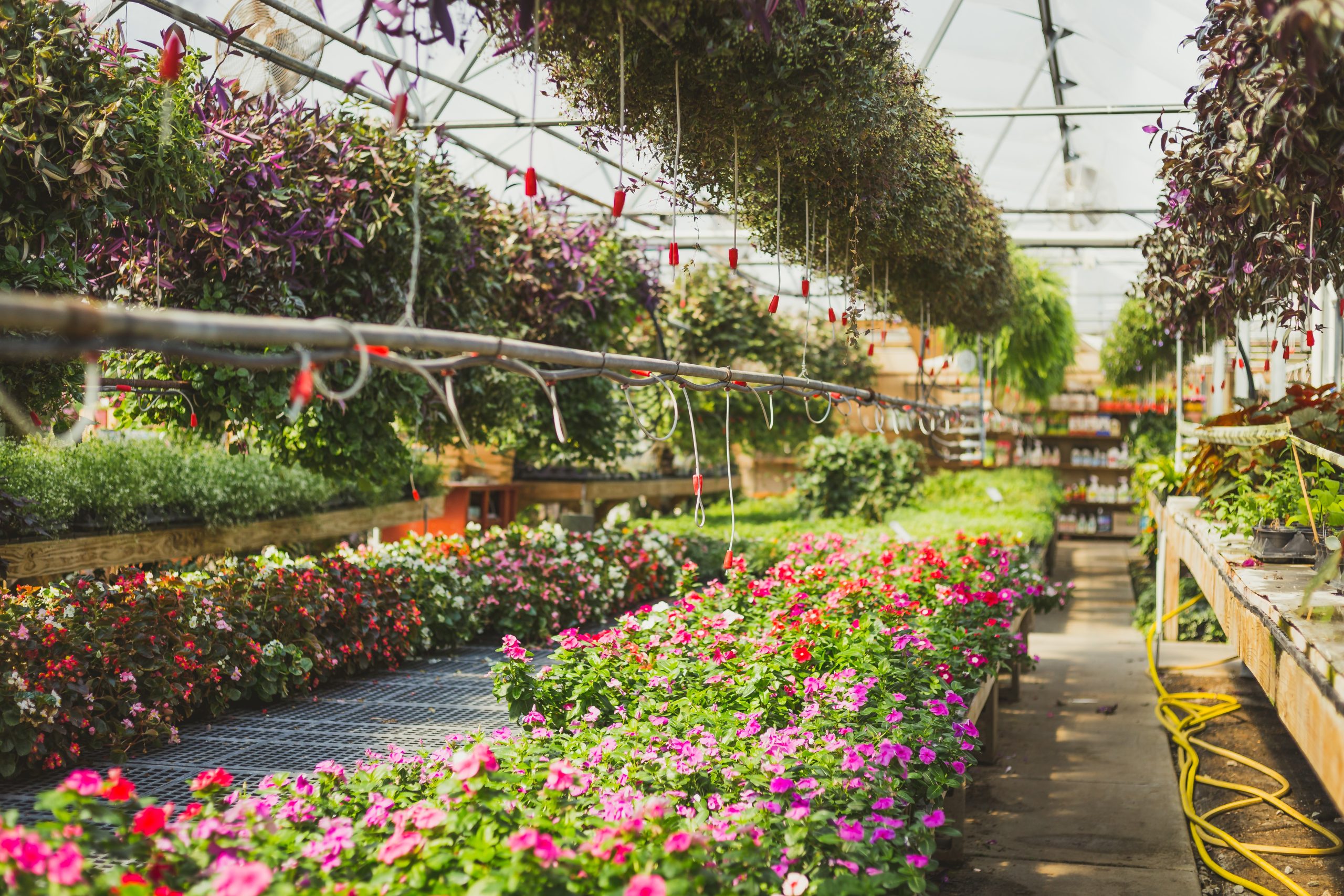
Understanding the importance of safety in your greenhouse setup should be a top priority. You’re well aware that a safe environment not only means prolonged sustainability of your plant growth but also guarantees your own safety and that of anyone who has access to the greenhouse. In this regard, while you keenly tend to your growing needs for light, temperature control, ventilation, and watering solutions, there’s a crucial factor you must underscore – electrical safety.
Fundamentals of Electrical Safety
Before taking the first steps towards integrating electrical safety in your greenhouse setup, it is paramount that you grasp the basic principles. As you know, greenhouses make use of several electrically powered systems.
Knowing how each system works and potential inherent risks are integral to creating a safe environment. This means understanding concepts such as grounding, circuit protection and isolation, safety cut-outs among others.
Arguably one of the significant prerequisites would be understanding the importance of grounding in your greenhouse electrical system. Grounding generally provides a path of least resistance which unwanted electricity can follow into the ground hence safeguarding human lives and equipment.
Additionally, incorporating circuit breakers or fuses into your design is non-negotiable. These paraphernalia interrupt or break an electrical circuit whenever excessive electrical current is detected hence preventing incidents like fire hazards or short-circuiting due to overload.
Remembering safety cut-outs can save you from unfortunate incidents as these basically switch off electrical power in times of irregularities such as when part of the body accidentally comes into contact with live wires.
Benefits of Electrical Safety
The benefits associated with implementing sound electrical safety measures in setting up your greenhouse cannot be overstated. Integrating these measures goes beyond just complying with local regulatory standards; it is significantly about preserving human life and property.
By practicing proper electrical safety measures, you can prevent accidents related to electrocution and fires caused by faulty wiring or overloading circuits. Furthermore, by protecting your various electronic devices from power surges or other failures, you extend their lifespan thus allowing for greater efficiency and longevity.
Integrating Electrical Safety Measures
So how do you integrate all this knowledge on grounding systems, circuit protections and safety cut-outs? Here’s where this electrician comes into play! Professional electricians have years of training and expertise under their belt making them perfect facilitators in the intricate task of perfectly fusing together all these elements harmoniously for maximum output.
Challenges in Implementation
Like any creative process aiming for perfection, integrating electrical safety into your greenhouse doesn’t come without its unique set of challenges. Perhaps one main deterrent could be cost implementation issues surrounding investment in quality equipment structure redesigns might spring up.
Another hurdle could be gaining sufficient knowledge on technical jargon; however, procuring services from credible professionals always serves to iron out such creases.
Case Studies on Integration
You don’t have to take our word for it – industry case studies support embracing a comprehensive approach toward electrical safety integration within greenhouse operations. There’s compelling data endorsing robust designs that interweave fail-proof configuration strategies used all over vastly benefitting owners through minimized mishaps resulting in property damage avoidance alongside enhanced efficiency from prolonged equipment health.
Electrically Safe Greenhouse Future
Looking ahead foresee a future where every greenhouse owner spares nothing short ensuring paramountcy regarding electricity-induced disasters prevention due completely eliminating instances wiring faults overheating issues caused inadequate ventilation other components including transgressing laid-out guidelines by regulatory bodies committing their full efforts towards creating healthy safe spaces both for plants themselves but also humans involved throughout maintaining these spaces live thrive.
Strategies for Electrical Safety Enhancement
With insights collected, it’s pertinent to devise strategies that serve your greenhouse’s need for electrical safety enhancement. Be it discerning a wiring overhaul or integrating advanced automation, these final pivots are vital to ensure your greenhouse’s seamless functioning, growth and sustainability.
Leverage Technology
The digital era brings forth technologies from simple timers for lights and watering systems to sophisticated sensor-controlled mechanisms. Embrace these smart systems as they remarkably streamline operations. Plus, they bring in critical safety benefits like fault detection and overload prevention.
Regulatory Compliance
While establishing electrical safety measures in your greenhouse setup, always keep local regulations at the forefront. Adherence builds a compliant system, but more than this legal stance, it reinforces holistic security within the framework of standard guidelines known best to protect human life and property.
By implementing these strategic steps, you affirm an unwavering commitment towards electrical safety in your greenhouse space. In doing so, you bestow upon yourself the peace of mind from substantial risk reduction while presenting an environment thriving on consistent growth made possible by the seamless fusion of technology-meets-safety.
Conclusion: The Essential Safety Balance
In wrapping up recall beginning discussion noting balance between successful unfettered plant growth alongside ensuring human life alongside property preservation obtains most focus while treating subject matter surrounded integrating effective existing working conditions while observing electricity usage within your greenhouse setup.
DIY Projects
Transforming Garden Waste: Eco-Friendly Strategies

In this age of skyscraping landfills and ever-rampant pollution, it becomes crucial that you embrace an eco-friendly lifestyle. From your home to your garden, every area can contribute towards a cleaner and greener planet. This article addresses one such area, often overlooked, but having immense potential – your garden waste.
The Issue With Garden Waste
An abundantly growing garden is indeed a sight to behold and relish. Yet, it brings with it a common dilemma – what to do with the ensuing garden waste? Every season cycle, every pruned foliage, every change in your landscape layout leads to a pileup of twigs, leaves, branches, or grass clippings.
If these heaps are left ignored or if not taken care of appropriately, they become contributors to land and air pollution. Now imagine the possibilities if you choose eco-friendly practices for managing your garden waste.
Types Of Garden Waste
Before delving into green waste management strategies, understanding the different types of garden waste can prove beneficial for you. Primarily there are three categories – Green waste comprising lawn clippings, leaves, and plant trimmings; wood waste includes branches and pruned offshoots; and finally, soil and rubble from construction or layout alterations come under the third category.
Impacts On The Environment
Each unattended heap of leaves or branch stack does more harm than might initially seem apparent to you. When decomposing in landfill sites without sufficient oxygen supply, green garden waste gives out methane – a greenhouse gas much worse than CO2. Likewise, burning wood waste results in smoke releasing harmful particulates into the air that we breathe.
Wise Gardening Choices
Now that you are aware of your garden’s potential environmental impacts let’s adopt some easy practices right at gardening level to minimize waste generation. Embrace native plants as they require less raking due to their harmony with local climate conditions. Similarly choosing perennials or annuals leads to less digging and replacement thus controlling soil and rubble waste.
Nature-Friendly Plant Disposal
While discussing eco-friendly gardening practices it’s unavoidable for things like immediate junk removal in Melbourne not to come up since they offer comprehensive eco-focused solutions which should definitely be considered by budding environmentally conscious individuals like yourself.
The benefits gleaned from using these services disprove old ways of practice as they aim for efficient use of resources while minimizing planetary harm.
Employ Composting Techniques
Composting offers a magical solution where your green garden waste transforms into nutrition for your plants! Your kitchen food scraps paired with shredded green garden wastes decompose over time to enrich soil fertility.
Practicing Green Mulching
Applying shredded leaves or grass trimmings provide a protective layer around plants retaining soil moisture and regulating temperature fluctuations while also preventing weed growth.
Creating Wildlife Habitats
Your wood wastes like larger pruned branches can serve as cozy shelters for birds or small mammals assisting local biodiversity.
Implementing Worm Farming
Vermiculture involves worms consuming organic wastes while generating nutrient-rich worm-manure contributing towards robust plant growth.
Building A Garden Incinerator
When designed appropriately according to local environment standards, small incinerators serve as handy tools for disposing woody plant debris like diseased tree trimmings thereby limiting chances of disease spread.
Community Composting Programs
You can tie up with local community groups encouraging collective composting thereby propagating compounded benefits towards reducing landfill burden.
Government Regulations And Support
Many local authorities supply compost bins at subsidized rates which you can avail, promoting your move towards eco-friendly gardening practices.
Achieving Zero-Waste Goals
By incorporating these strategies so far discussed not only are you efficiently managing your garden’s aesthetics but also achieving a zero-waste goal!
Choosing Eco-Friendly Products
While adopting eco-friendly waste management practices, it’s essential to also consider the products you use in your garden. Opt for natural fertilizers over synthetic ones. Chemical-based products not only harm the soil’s natural fertility but can also leach into groundwater, causing environmental harm.
Adopting Sustainable Designs
The design of your garden plays a significant role in determining the amount of waste that is generated. Integrating permaculture principles, such as utilizing every inch of space effectively, can minimize waste production. You can create beds in circular or spiraling shapes rather than classic rows to make efficient use of your garden area.
Raising Awareness and Encouragement
Your efforts towards transforming garden waste don’t have to be solitary ones. Encourage your friends, colleagues and neighbors to adopt similar practices.
By having a dialogue with others about such changes and by showcasing the effective and beautiful results yielded from these strategies, you’re not just transforming your own garden but you could potentially inspire an entire community to align their lifestyle with nature-aiding practices.
Your Green Thumb Contribution
Every step taken towards transforming how you manage your garden waste contributes significantly towards nature conservation from curtailing pollution levels to enhancing soil productivity through natural means instead of chemical laden artificial substitutes! So roll up those sleeves and get started on making Mother Earth breathe easier!
General Gardening
Household Waste Management for Gardeners

Navigating the path of sustainable living is no easy feat; each action, each decision carries a significant environmental footprint. As the world pivots towards green consciousness, adopting effective household waste management tactics has never been more essential.
Learning to smartly manage your household waste not only reduces landfill loads but opens up numerous loopholes to facilitate garden growth and improvement. If you’re in pursuit of a quick waste disposal service right on your land, all while aiding in the sustainable growth of your plants – then this article serves as your comprehensive guide.
Understanding Household Waste
Every average household generates an array of waste types – paper, plastic, metal, glass, and organic material. Each has its disposal method and potential for eco-friendly recycling or composting. Understanding these differences pivots you towards more considerate disposal habits and uncovers options for reutilizing various wastes as nourishment and care for your garden.
The Gardener’s Perspective
As a gardener, you likely possess an inherent affinity with nature, aspiring to cultivate life amidst the soil while embracing earth’s raw beauty. Yet, gardening is so much more than nurturing plants; it’s a call for sustainable living, responsible resource consumption and efficient waste management.
Identify Recyclable Waste
Sorting household waste into recyclable and non-recyclable components sets a strong foundation for efficient waste management practices. Observe what originates from your daily habits. Is it biodegradable? Can it serve other purposes once its primary use is over? Asking such questions can increase awareness about recyclables in your home and divert substantial amounts from landfill contributions.
Composting Techniques
Kitchen scraps like fruit peels and vegetable leftovers make suitable feedstock for compost heaps. Composting these organics enriches garden soil structure while enhancing its capacity to sustain plant life robustly. By moderating temperature conditions and turning compost piles regularly, you allow microorganisms to degrade organic matter effectively.
Benefits of Organic Fertilizers
Utilizing homemade compost as organic fertilizer furnishes myriad benefits for your garden flora. It reintroduces nutrients into the ground and helps conserve soil moisture. Moreover, fostering beneficial soil organisms promotes natural pest resistance within plants.
Responsible Usage of Chemicals
Prudent use of any chemical agents like pesticides or weed killers further champions sustainable gardening endeavors. Being mindful of application dosages limits potential runoff into water bodies – safeguarding natural ecosystems while preventing groundwater contamination.
Green Gardening Equipment
Considering sustainability even when selecting tools amplifies a gardener’s green impact. Opting for manual tools reduces dependence on power-run machinery that contributes to greenhouse gas emissions.
Disposing Non-Recyclable Waste
For hardcore non-recyclables like certain plastic types that offer no fertile benefits lest contamination threats – opting for designated recycling programs eases the disposal process.
Sustainable Water Management
Encouraging rainwater harvesting techniques or reuse of greywater from households ensures optimal water usage in gardens – bolstering resource conservation efforts whilst conserving municipal supplies.
Environmental Legislation for Gardeners
Adhering strictly to local environmental codes pertaining to gardening activities ensures that local ecosystems retain their integrity despite cultivation activities.
Successful Households’ Experiences
By examining testimonies from fellow gardeners who’ve incorporated household waste into successful gardening routines can provide valuable insights on real-life application scenarios besides encouraging first-hand trials.
Sustainable Pest Control
When it comes to pest control, the option of reaching for an easy spray bottle filled with insecticides can be tempting. Such chemicals, however, carry a harsh environmental footstep and can even prove detrimental to your garden’s biodiversity in the long haul. Consequently, adopting sustainable methods of keeping pests at bay becomes paramount.
Upcycling Garden Accessories
You don’t need to make frequent trips to garden supply stores for ornaments and accessories when you are armed with creativity and upcycling. Old boots, broken pots, or even buckets can serve as unique potting options adding a whimsical touch to your green spaces. Used tires double up as planters while discarded pallets can reinvent themselves as innovative vertical garden structures.
Creating a Pollinator Garden
In the garden ecosystem, pollinators such as bees, butterflies, and birds play a pivotal role – they promote increased flowering and fruit production besides contributing to overall plant health. Creating an inviting setting for these tiny troopers can transform your garden into a vibrant hub encouraging pollination and contributing positively to the local ecology.
Water Conservation Practices
Watering your garden judiciously can conserve precious water resources. Adopt techniques such as drip irrigation, which reduces water wastage by directing it to the plant roots. Additionally, mulching around plants helps reduce water evaporation and thus saves water usage. An intelligent choice of plants with low-water requirements contributes positively to conservation efforts while also reducing maintenance needs.
Conclusion
Embracing effective solid waste management practices provides a unique breadth for reinventing conventional gardening wisdom while transforming regular chores into meaningful environmental actions. By recognising the merit in simple strategies like composting kitchen scraps or conserving water resources, you contribute tangibly towards environment preservation over time.
General Gardening
Integrating Efficient Irrigation Systems in Your Garden
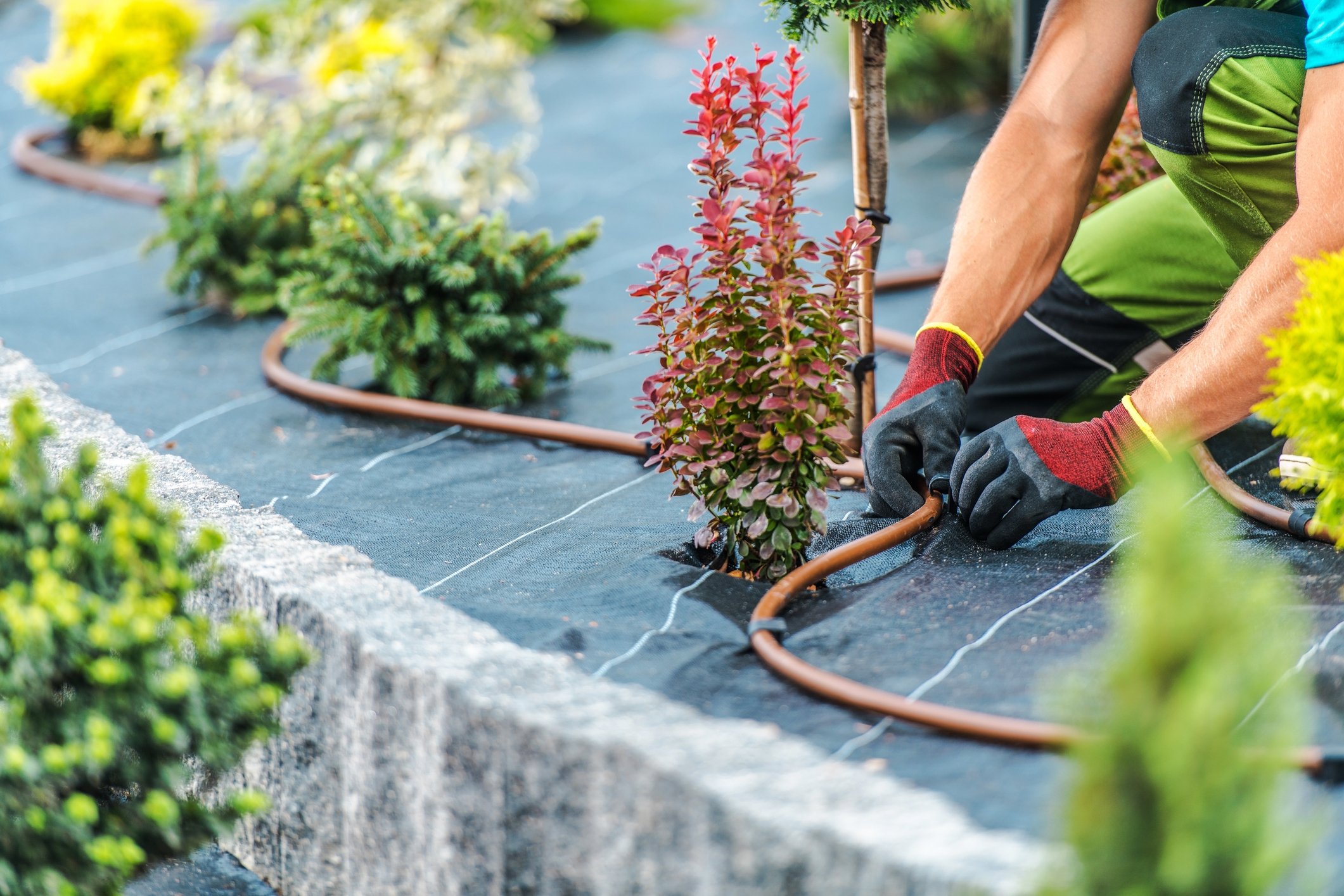
Imagine your private Eden blooming with vibrant flowers and succulent fruits — all beneath the brilliant hues of a sunlit sky. This vision of bountiful growth depends directly on something seemingly elementary, yet absolutely vital: efficient watering.
The lifeline for your plants requires a delicate balancing act between overindulging them and unintentionally starving them of their key ingredient, water. The answer lies in understanding irrigation systems and how to integrate them efficiently within your garden.
The Concept of Efficient Irrigation
When you enter the realm of efficient irrigation, you step into a world where water conservation meets proficient horticulture. These two entities intertwine so closely that overlooking one would imperil the other.
Through efficient irrigation methods, you not only contribute to preserving one of Earth’s most valuable resources, water, but also create an environment for your plants to thrive and produce at their optimum levels.
One place that understands this intricate relationship well is Ferguson’s Plumbing. Check out their latest projects on Instagram: @fergusonsplumbing where they’ve innovatively merged conservation practices with healthy plant growth strategies in various garden designs.
Types of Efficient Irrigation Systems
Before tackling the integration process, fully familiarize yourself with the types of efficient irrigation systems available on the market. From simple hose-end irrigation systems to elaborate drip irrigation setups, each system brings unique features tailored to specific needs and garden configurations.
Take drip irrigation systems as an instance. Famous for their water-saving prowess, these systems deliver water directly to plant roots as slowly as a ‘drip.’ Thus avoiding wastage through runoff or evaporation – a common issue with conventional watering methods like sprinklers.
Designing Your Efficient Irrigation System
An efficient irrigation system design takes into consideration three primary aspects: Garden size and shape, plant water needs and soil type. Each plays a crucial role in determining which type of irrigation system would best suit your garden. Categorizing your flora according to their water demands can help customize watering schedules while examining the soil type assists in determining its capacity for water absorption and retention.
Implementing the Irrigation Setup
Once a suitable design has been established based on these considerations, it’s time to move towards implementation. Proper setup installation ranges from easy DIY methods to complex professional installations depending on the type chosen.
Like any system implementation, correct calibration is vital to ensure optimal results – too much or too little pressure can significantly affect efficiency and plant health.
Maintenance and Troubleshooting Guide
Just installing an efficient system is not enough; regular maintenance ensures long-term performance while troubleshooting common issues keeps it running seamlessly. An integral part of this entire practice involves being able to identify potential problems before they escalate into significant issues that may compromise efficiency.
Evaluating the Cost and ROI
Besides having environmental implications, these innovative solutions also offer financial benefits that translate into savings in the long run, despite initial costs incurred upon installation. The idea here is that every drop saved with an efficient irrigation system ultimately results in fewer dollars spent on excessive water use.
Future Trends in Efficient Irrigation
With sustainability taking center stage in contemporary dialogues around environmental preservation, expect agriculturally-inspired tech advancements improving water usage further while promising major breakthroughs in successful horticultural practices.
Embracing the Digital Revolution
However, it’s not just about conserving water or getting your plants to bloom. There’s an additional interesting stride humankind is taking towards modernizing this process further – the digital revolution in efficient irrigation systems.
Smart irrigation controllers and sensors have begun to storm the gardening market, standing out with their ability to intuitively adjust water usage according to weather and soil conditions. This reduces manual intervention requirements drastically while ensuring optimal water distribution.
Applying a High-tech Approach
Wireless soil moisture sensors are another high-tech advancement gaining traction – capable of relaying real-time data directly to your smart device, helping you manage watering schedules effectively. They accurately read how much water your plants need by measuring water-presence levels in the soil, eliminating estimation errors and enhancing efficiency.
Creating a Personalized Garden Oasis
More than aiding in conservation and ease of use, these high-tech advancements can be integrated into creating a personalized garden oasis that is uniquely yours, promoting a harmonious coexistence between technology, nature and the human desire for green spaces.
The Irrigation System Future
Furthermore, these advancements give a glimpse into the future of gardening and efficient irrigation systems. Expect a seamless integration of technology into natural spaces, making garden maintenance simpler and more intuitive. This progression paves the way for sustainable growth while nurturing an environment built on conservation and meaningful interaction with nature.
Conclusion
Embarking on this journey isn’t simply about making improvements at home; it’s stepping up as a responsible member of society caring for global issues like water scarcity and environmental stability alongside fulfilling aesthetic desires for a beautiful flourishing garden – showing how personal delight can be conscientiously aligned with environmental stewardship.
Hydroponics
Optimizing Hydroponics: Harnessing Water Tanks for Garden Efficiency

Hydroponics, the high-tech gardening method enabling year-round growth regardless of location, has become a mainstay in urban farming. An indispensable part of this system is water, and heavy-duty steel water cartage tanks play a key role in this area, offering durable storage to maintain fresh and clean water. Let’s explore more about optimizing hydroponics using these tanks.
Understanding the Basics: What is Hydroponics?
Hydroponics is growing plants without soil. Replace soil with a nutrient-water solution delivered directly to plant roots, and you’re engaging in hydroponics! The beauty of this method is that you’re in full control over the conditions of growth – pH levels, nutrients concentration, light exposure and more – creating an ideal environment that encourages robust growth.
A Closer Look at Water Tanks in Hydroponics
In a typical hydroponic system, water tanks are pivotal components. These tanks serve as reservoirs storing the nutrient solution that gets circulated around your system. They come in various sizes and materials but one stands out for those who prize longevity – heavy-duty steel water cartage tanks.
Essential Components of an Efficient Hydroponic System
Optimizing your hydroponic garden means ensuring each part functions optimally for a seamless operation. Sure enough, water tanks play a crucial role but remember there’s more to consider – from grow lights ensuring appropriate light exposure regardless of whether it’s day or night to nutrient solutions providing precisely what your plants need to thrive.
Water Quality and Its Effect on Plant Growth in Hydroponics
It’s not just about having water; the quality matters too when it comes to hydroponic systems. Healthy plant growth depends heavily on clean, uncontaminated water loaded with essential nutrients. Using reliable storage like steel water cartage tanks helps you maintain this standard consistently.
Optimizing Water Usage: Key Strategies for Hydroponics Farmers
Let it be known that with hydroponic systems, optimizing isn’t limited to choosing good-quality equipment like trustworthy steel tanks; it extends to efficient water usage too! Employing strategies like regular monitoring and real-time adjustment of factors such as nutrient concentration can see your garden bear fruitful results.
Environmental Impact of Hydroponics
Many naysayers may argue that hydroponic gardening requires more inputs compared to traditional techniques – but you’ll know better! With smart strategies optimized around sustainability – using energy-efficient grow lights or designing systems around high-quality durable tanks – you can maintain resource-friendly practices.
Implementation of Water Tank Optimization in Hydroponics
Despite sounding technical, savvy growers across various spectrums have successfully implemented optimization techniques within their systems. From commercial farmers investing in quality steel tanks benefiting from consistent yields all year round to home growers enjoying pesticide-free greens grown right in their living rooms – there’s proof aplenty!
The Importance of High-quality Equipment
Simply put, quality equipment is a valuable investment in your hydroponic system. Each piece you choose, from lighting to nutrient solutions and indeed, the storage tanks, plays a crucial role in determining the overall success of your garden.
Among these, water tanks often hold the spotlight since they act as the reservoir of nutrients required for healthy plant growth and survival. Opting for reliable heavy-duty steel water cartage tanks can reassure you of longevity and a consistent supply of clean water.
Maximizing System Efficiency
Beyond choice of equipment, keenly considering ongoing monitoring and maintenance is also central for maximizing system efficiency in hydroponics. Regular checks ensure the nutrient solutions are balanced, pH levels are optimal, and water quality remains high throughout the cycle – especially necessary when optimizing water tanks specifically.
Adapting Based on Feedback
Moreover in hydroponics, flexibility is virtuous. It allows you to tweak processes based on feedback from your plants. Be ready to adjust light hours, enhance nutrient concentration or perform comprehensive cleanses on your steel tanks whenever necessary.
Decoding the Hydroponic Water Cycle
Just as nature has its water cycle, so does a hydroponic system. However, in hydroponics, this cycle is much more controlled. It begins with the water in your storage tanks being infused with essential plant nutrients. This nutrient-rich solution is then delivered to your plants’ root systems. Post nourishment, the unused water is returned to the tank for re-circulation. In this cycle, your heavy-duty steel water cartage tanks serve as pivotal reservoirs and recirculators, ensuring your plants never lack nutrient-rich water.
Light, Temperature and Water in Hydroponics
Optimizing your hydroponic garden involves perfecting a delicate balance between light, temperature and water. While light and temperature influence photosynthesis and growth rate respectively, you use water as both a hydration source and transport medium for nutrients. It’s crucial then to ensure that your heavy-duty steel water cartage tanks are always filled with clean, nutrient-rich water- ready for use when needed.
The Future of Hydroponics with Optimized Water Tanks
To wrap up, start your optimization journey today. It’s about small, conscious changes – picking durable equipment like heavy-duty steel water cartage tanks and refining your gardening practices. By doing so, you not only improve your hydroponic system’s efficiency but also contribute to the future of tech-driven urban farming.
Design Tips
Enhancing Indoor Gardening Experience with Clean Rugs

Embrace the green realm within your living space. Welcome to the world of indoor gardening, a haven of verdant life that pulses, thrives, and flourishes right under your roof. Amid this bountiful enclave of leafy serenity, every surface matters – especially the ground beneath.
Understanding Indoor Gardening
To grasp the essence of indoor gardening, first delve into what makes it so appealing. With nature contained within four walls, you have the power to cultivate your choice of plant life in an accessible, controlled environment. It’s more than just a home improvement project; it’s an extension of yourself – a testament to your nurturing spirit and personal aesthetic tastes.
Impact on Indoor Environment
Indoor gardening is not only aesthetically pleasing but also helps to regulate your home’s atmosphere. Plants can cleanse the air by absorbing toxins while adding beneficial humidity and releasing oxygen. However, maintaining such harmony requires a clean, clutter-free environment conducive for growth. Here’s where an overlooked detail in many residences comes into play — your rugs.
Clean Rugs Significance
Rugs are more than just ornamental floor coverings; they are essential parts of your interior decor functioning as design elements and comfort providers alike. Clean rugs not only contribute to the overall visual appeal but also aid with indoor air quality regulation that plants love. A clean rug absorbs excess moisture while trapping dust particles – thus creating an optimal atmosphere for your indoor plants to thrive.
Linking Indoor Gardening with Rugs
Have you ever visited rugwashspecialist.com.au? This specialist underscores the crucial connection between lovely rugs and flourishing indoor gardens. A clean rug complements your indoor garden visually and environmentally. When these two elements blend harmoniously, they help create a tranquil space radiating with innate natural beauty inside out.
Enhancing Garden Experience
Imagine strolling through plush green growths barefoot on soft, clean rugs beneath you — that’s not just indoor gardening; that’s an elevated experience! High-quality rugs come with dense fibers capable of absorbing ambient noise leading to a quieter home – sublime for those early morning yoga sessions or meditation surrounded by greenery. By maintaining cleanliness in these textile oases on the floor, you can experience serenity amidst rich greenery at its best!
Tips for Maintaining Clean Rugs
Maintain the vibrancy of your rugs for reliable service over time by vacuuming routinely which will combat dust build-up effectively. For deeper cleaning needs involving stubborn stains or odors, professional cleaning services are often recommended. They will ensure thorough cleansing without causing any unintentional harm which DIY methods could potentially inflict.
Expert Advice
Experts recommend utilizing sparingly yet effectively placed rugs around high-traffic areas in indoor gardens such as near seating arrangements or garden entryways. These targeted placements will aid in preventing accidental dirt spread while maintaining a pleasant look overall. Seek professionals who specialize in all types of carpet treatments including organic cleaning solutions for better safeness towards plants.
Maintaining Rugs amidst Indoor Gardening
Creating a balance in maintaining cleanliness, especially for rugs amidst indoor gardening, requires tact and a conscious effort. Watering plants, shed leaves, and dirt can all potentially tarnish the pristine condition of your rugs. Therefore, it’s vital to integrate caring for both – ensuring proper watering techniques for plants that minimize spillage and routinely cleaning the rugs to prevent any build-up.
Efficient Techniques for Cleanliness
In addition to habitual vacuuming and professional cleaning services, adding protective layers like rug pads can prove effective. These pads not only provide extra cushioning but also offer protection against potential water spills or dirt from the plants above.
The fruits of diligent care are manifold – thriving plants, a clean rug providing a sense of tranquility and an overall heightened aesthetic appeal in your living space. The key lies in mastering this yin-yang relationship where both these elements not only coexist but complement one another to enrich your overall indoor gardening experience.
Aesthetically Uniting Rugs with Indoor Gardens
Pairing the themes of your rugs and indoor plants can seamlessly bind your home décor together. By using the nature-inspired patterns or colors on your rug, you can contrast or complete the green spectrum dominating your indoor garden. This unification not only benefits you aesthetically but also psychologically, inspiring a deep sense of calmness prevalent in nature’s lap.
The process of integrating a clean rug with diverse indoor greenery is an artistic balancing act that infuses your surroundings with unparalleled charm. Understanding how these seemingly different elements influence each other to create a harmonious living space is fundamental for any indoor gardening enthusiast.
In Conclusion
Cultivating an oasis indoors invites tranquility into one’s living space, turning it into a sanctuary amongst lush foliage and serene undertones resonated by clean rugs underfoot. Your beautiful indoor garden deserves equally pristine surroundings where every element distinctly sings a song of aesthetic harmony and environmental wellbeing — so do you.
DIY Projects
Which Table is Better to Choose for Studying at Home

Reading at home is something you must do if you are a student. To study successfully, you should have a dedicated reading space. In particular, having the right furniture is helpful to your education. Depending on your preference, there are several desks to choose from. Likewise, the location of the studying area and its size may constrain your choices. In this article, you will learn about the table options for studying at home.
Traditional Study Table
If you are looking for a generic table for home study, a traditional desk should be your first choice. In general, this item has a tabletop with space for a laptop, papers, books and other studying materials. In addition, this desk may have shelves or drawers for storage, making it easy to store and access educational materials. Unlike other furniture, a traditional desk is functional yet easy to use. Therefore, it offers a workspace that makes studying at home easy, with minimal distractions. There are also other ways to simplify your educational journey. You can use the TopEssayWriting platform to boost your academic performance. This platform offers students access to essay-writing services at a decent rate.
Standing Table
Sitting for a long time may not be appropriate for you. In such a case, you may want to get a standing table. This desk is pretty popular due to the health benefits associated with its use. With a standing desk, you can read, write, and perform other academic activities while on your feet. The best part of using this furniture is its adjustability. You can manipulate the desk’s height, switching it from standing to sitting. Therefore, using this furniture gives you flexibility. Furthermore, it improves blood circulation and enhances postures. If you prefer to stay active while acquiring an education, you should consider getting this furniture.
Folding Table
A folding table offers you several benefits that standard and standing tables do not. In particular, this desk is suitable if you have space limitations. As a compact and lightweight item, this desk can fit into any space. Plus, it makes storage easier. Therefore, you can use this table in any location within your house. Once you are done, you may store it away and prevent cluttering your space. Beyond studying, this foldable furniture can serve several secondary purposes. As a result, you may store it in the trunk of your car and take it everywhere you go.
Multifunctional Workstation
In some cases, you may need more than just a simple reading table. A multifunctional workstation may be your best option if you want an integrated learning experience. In most cases, a multifunctional workstation offers multiple features, which include:
- Storage compartments;
- Bookshelves;
- A bulletin board;
- A whiteboard.
Using this furniture should significantly enhance your productivity and organization. It also eases access to study materials. In addition, this workstation is ideal if you study while having a remote job.
DIY Table
Study tables come in different sizes, shapes, and configurations. However, you do not always find the right desk for you. In particular, if you love doing things with your hands, you should consider building a DIY desk. Crafting a desk helps you personalize a suitable workspace according to your tastes, preference, and the space available to you. In addition, you can handpick the materials you want to include in the finished product. Apart from developing a personalized workspace, the DIY table comes with a reward for accomplishment. However, you must carefully consider support when crafting this furniture, as you would not want it to give way due to inadequate reinforcement.
Conclusion
The studying table you choose may depend on your preference and several other factors. A traditional desk is predictable and easy to use. However, a standing desk gives you the option to study while on your feet. If you have limited space at home, consider getting a folding table. On the other hand, a multifunctional workstation gives you access to multiple options. Finally, a DIY desk may be your best option if you prefer creating a personalized tabletop. Whichever desk you choose, make sure it’s comfortable and matches your needs.
About the Author
Ruby Reginald decorates homes for a living and dabbles in online writing. She runs a business for home decoration and renovation. In addition, Ruby creates content for several platforms.
General Gardening
The Most Common Garden Privacy Mistakes and How to Avoid Them
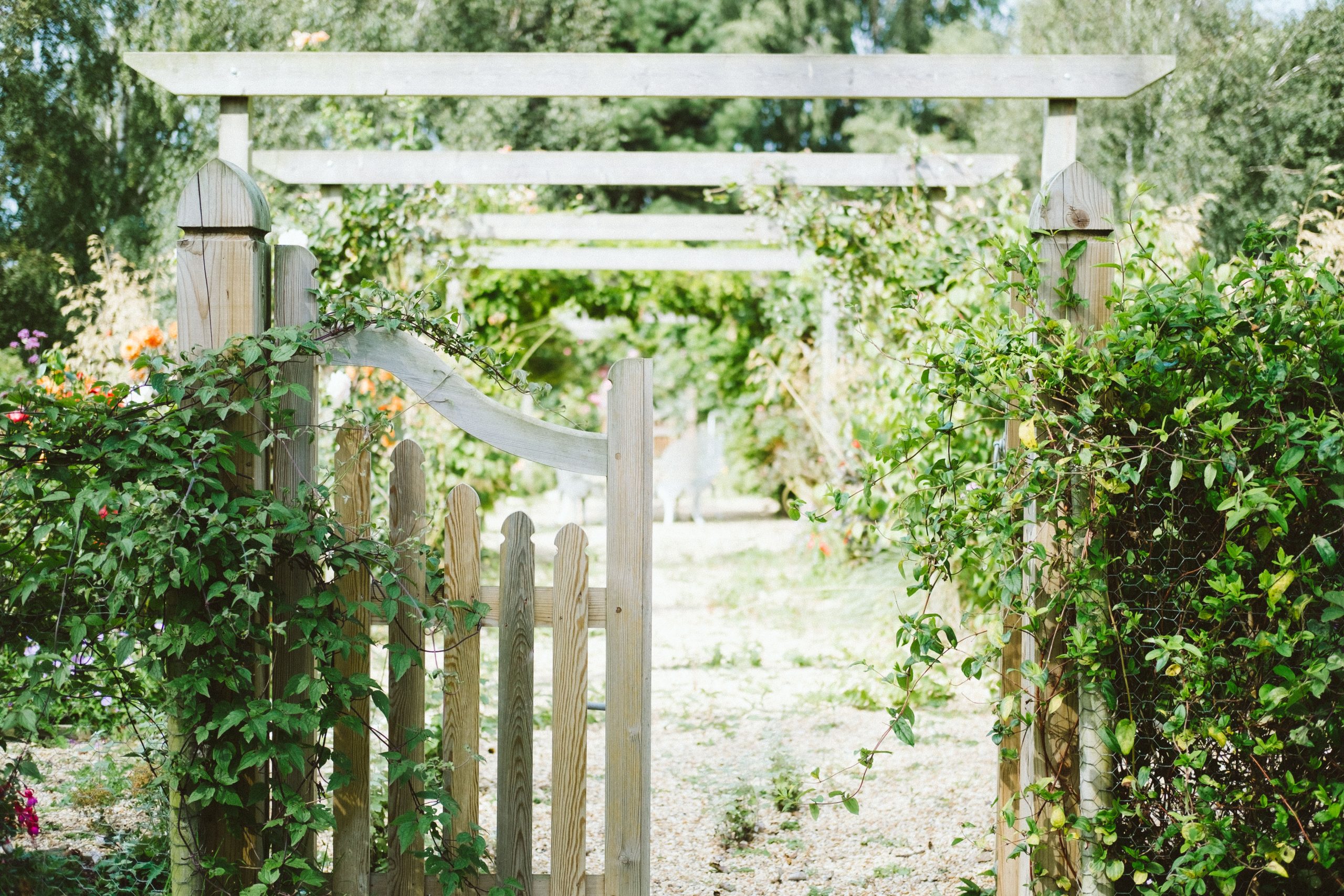
Most people want their backyard space to be private. However, the attempts often result in unexpected mistakes that could be more attractive and can lead to neighbour disputes. With a well-designed and maintained garden, you can avoid these issues as long as you know them and take an open, considerate approach to privacy. Before undertaking any landscaping project, check local laws and regulations for appropriate garden structures or fencing. Finally, discuss your landscaping ideas with your neighbours and ask for their opinions.
Make Sure You Don’t Make These Garden Privacy Mistakes
Some methods of backyard privacy can lead to some problems.
Among these issues is the possibility of neighbour disputes and a less-than-stylish yard. You must avoid the following mistakes to get the most out of your garden privacy ideas.
Ignoring Local Regulations and Neighbours’ Opinions Before Starting Your Landscaping Project
Before making significant privacy changes to your backyard, you should communicate with your neighbours. Be aware of local regulations, homeowners’ association rules, or any legal restrictions that may apply. If you discuss your intentions beforehand, you can avoid misunderstandings or disputes due to changes impacting their property or blocking their view.
Communicating can also help maintain positive relationships and address any future concerns they may have. For example, respect the boundaries of the fences you share with them and consider the potential noise pollution your privacy garden solution may cause. Furthermore, you should know the legal requirements in your locality. It would help if you did not ignore planning and building permissions to avoid expensive consequences and legal issues.
You Are Giving Little Importance to Aesthetics and Design
Keeping your outdoor space private is essential, as is maintaining a well-designed and attractive garden. You want to avoid blocking the entire backyard with a fence, so consider how landscaping elements like trees and shrubs can help create natural privacy.
Avoid prioritising it to the extent that your garden becomes visually unattractive or blocks natural light, for example. Incorporate well-maintained fences, trellises, or plantings that offer privacy and enhance your garden’s overall beauty and style. To help with that, consider installing a breathable barrier made of lattice or a trellis. These materials can provide privacy without completely blocking sunlight from entering your backyard. It is best to avoid implementing privacy measures that look out of place or contrast with the surrounding landscape. Consider materials, plants, and structures that are natural and harmonious with the environment. If it is difficult, you can always look for professional landscaping assistance.
Using Inappropriate Plants
Selecting the right plants is another key to creating privacy in your garden. One of the biggest mistakes you can make is to increase your garden’s privacy by planting tall trees along your boundary. Avoid plants that overgrow and damage your neighbour’s property. Instead, try planting shrubs or evergreens that are dense and low-growing. Such plants will create a natural barrier without blocking out light or the view of the sky. Also, it will provide a softer look and feel to your outdoor area.
Moreover, use hedges instead of wooden or metal fences to achieve a natural look in your garden. You can use them to fill gaps between fences or walls and add visual charm to your green space.
Suppose you hire professional gardeners for your project. In that case, they should assess the garden’s perimeter and recommend sturdy fencing or screening options that match the desired level of privacy while enhancing its aesthetic appeal.
Neglecting Maintenance
Maintaining your privacy is crucial for avoiding neighbour disputes and keeping your garden good-looking. Overgrown hedges, fences in disrepair, or neglected structures can create an unsightly appearance and annoy your neighbours. To prevent that, regularly trim bushes, repair walls, and ensure your privacy elements are well-maintained to preserve their functionality and visual appeal. If you don’t have the time, consider opting for solutions with lower maintenance requirements.
Choosing Unsustainable Plants to Create a Privacy Screen
Neglecting to plant for privacy strategically is another common oversight. Remember that not all plants are suitable for creating a garden screen. Like the Japanese maple, slow-growing trees will take considerable time to grow and become a substantial barrier. Evergreen varieties are particularly beneficial as they offer year-round privacy. Expert gardeners can suggest suitable plants that suit specific garden conditions, such as sunlight, soil type, and available space.
Additionally, climbers like ivy or trellis-trained plants can cover walls or fences, adding an extra layer of privacy. In addition, you can research fast-growing shrubs and hedges. However, don’t choose sparse or prone-to-disease plants, as these plants require more maintenance and could lead to more issues.
Choose varieties suitable to your local climate, soil type, and light conditions. Also, consider the direction and strength of the winds in your area and select plants that can withstand them accordingly. This action prevents the wind from sweeping them away.
How Expert Gardeners Can Help You With Your Privacy Project
With the help of the right garden design experts, you can achieve privacy in your backyard without issues. Professional landscapers can also advise choosing plants for privacy and aesthetics, considering your area’s climate. Furthermore, they can help you install a fence after checking with your local council for the maximum allowed fence height. As you already know, not paying attention to local regulations is one of the mistakes to avoid. Moreover, professional gardening services can help you quickly create a beautiful and secure outdoor area if you’re in a rush.
Conclusion
You can create a private and serene outdoor space by avoiding these common garden privacy mistakes. Regarding factors such as fencing, strategic planting, maintenance, noise reduction, and lighting considerations will ensure that your garden remains secluded and provide a tranquil retreat.
It doesn’t matter what garden privacy features you choose, whether a fence, barrier, trellis panels, or something else entirely; consider the aesthetics and functionality. Use existing colours and materials to harmonise with surrounding landscaping. You can create your green, peaceful place to enjoy the much-needed solitude by avoiding all those mistakes.
Design Tips
How to Keep Up with Your Studies While You Are Renovating Your Home
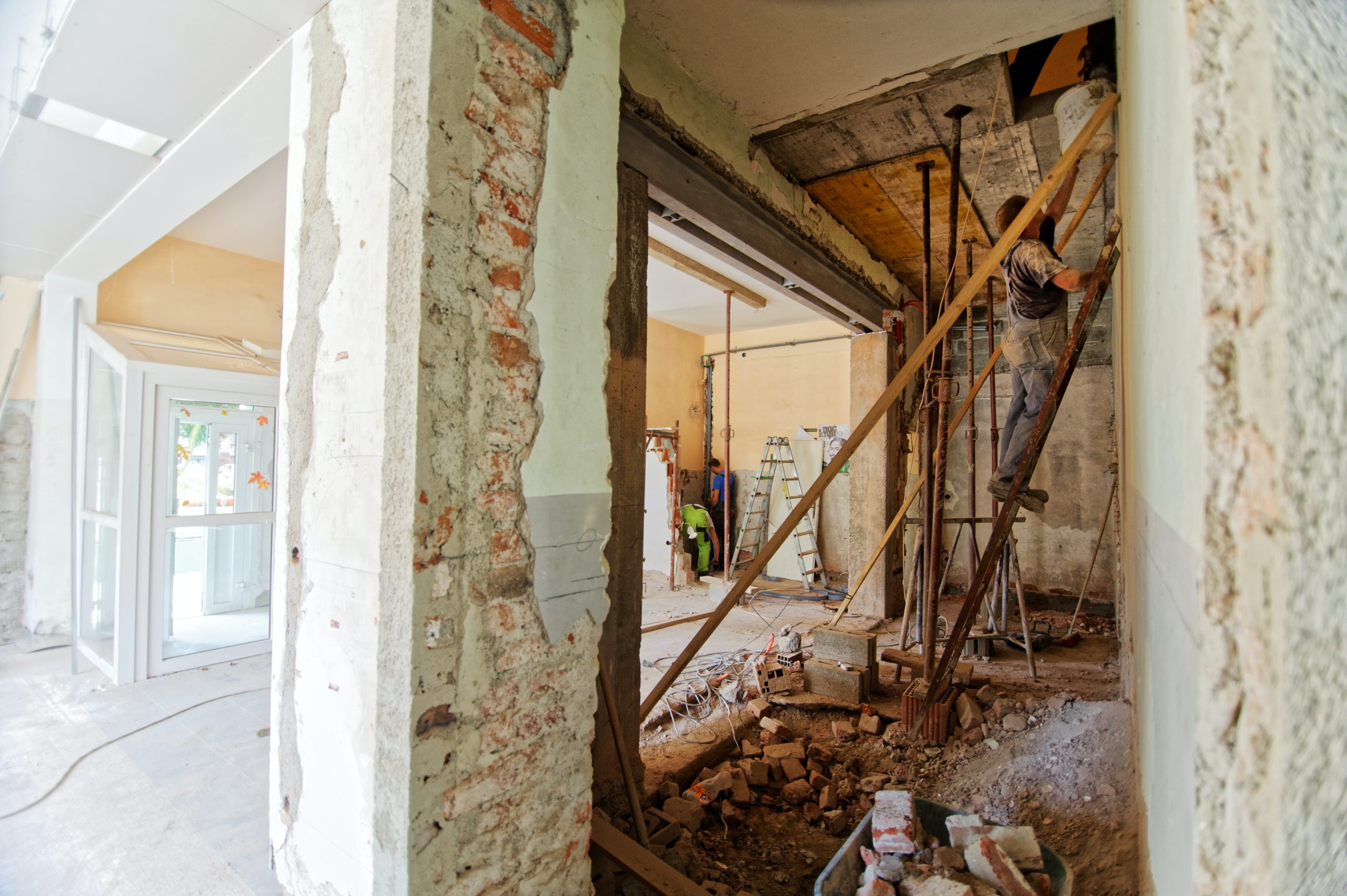
Renovating your home is something you should embark on periodically. It helps keep your surroundings in good condition. Also, it may be necessary to remodel your home if you have mold or insect infestation. Regardless of the reason for remodeling, reinventing your house can be challenging if you are in school. Nonetheless, combining the two tasks is not impossible. In this article, you should learn how to keep up with your studies while renovating your home.
Create a Combined Schedule
Remodeling your home while enrolled in college requires comprehensive scheduling. To achieve this, you should itemize the objectives and deadlines for studying and renovation projects. Next, you should break down renovation activities into smaller tasks, which may include:
- Flooring;
- Insulation;
- Painting;
- Furniture assembly.
Assign realistic slots for individual tasks while considering study commitments. Developing a functional schedule should give you the time and flexibility to remodel your home without neglecting your education.
Prioritize Tasks
Task prioritization is as crucial as a functional schedule. It lets you work on tasks that need immediate attention by allocating the required time accordingly. Therefore, if you have an exam in a few days, you should prioritize reading until after the assessment. Similarly, if you need to install insulation before winter hits, schedule this task as required.
Create a Learning Area
Renovating your personal space can leave your home disorganized. This living condition can negatively impact your learning process. To prevent this from happening, you should create a dedicated learning area that is quiet and free from the chaos of remodeling. Doing this reduces interruptions and increases productivity.
Minimize Distractions
In some cases, you may need to study while work is in progress in the house. As such, it may be challenging to concentrate on learning with the sound of equipment in the background. However, noise-canceling headphones can come in handy in this situation. Alternatively, restructure your study time by reading during the night and sleeping during the day.
Optimize Study Routine
If you must optimize your learning routine to successfully renovate your home while in school, taking advantage of flexible study methods can be advantageous. For instance, you can take breaks to review reading materials while painting or flooring. In addition, intelligent use of digital resources like online platforms and mobile apps should give you access to flexible learning materials.
Utilize Time
The best way to balance between studies and renovating your home is to utilize your time. You must optimize the time you spend studying and remodeling your house by minimizing distractions. Likewise, you should ensure you give each task the focus it requires for visible results. Therefore, if it is reading time, eliminate smartphones and other devices that may derail you from your target.
Ensure Effective Communication
If your renovation activities are negatively affecting your studies, speak to your instructors or professors about it. Your educator may cut you some slack by extending deadlines by a few days. If you are lucky, you may receive invaluable advice that helps you better manage the tasks.
Delegate Tasks
You may not always be available to handle remodeling projects and keep up with your studies all by yourself. As such, you should consider delegating the tasks to a friend or family member. Better yet, if you have the resources, consider hiring a professional. If you are a student nurse while renovating, the best nursing essay writers review should give you access to the best writing service. This review offers the pros and cons of each professional writer. Doing this helps you concentrate on your studies while your home gets a facelift.
Conclusion
You can juggle between studies and renovating your home by creating a combined schedule and prioritizing tasks. Furthermore, creating a learning area helps you minimize distractions. In addition, ensure you optimize your study routine to get the best out of your reading times. Effective time utilization can also be helpful. Finally, delegating tasks helps you focus on your education. It also lets you concentrate on other aspects of your personal life.
About the Author
Ruby Reginald is a professional home decorator and avid writer. She runs an agency specializing in renovations and redesigns. Furthermore, Ruby loves writing informative content on the intersection of her interests.
General Gardening
Steps to starting your first Garden
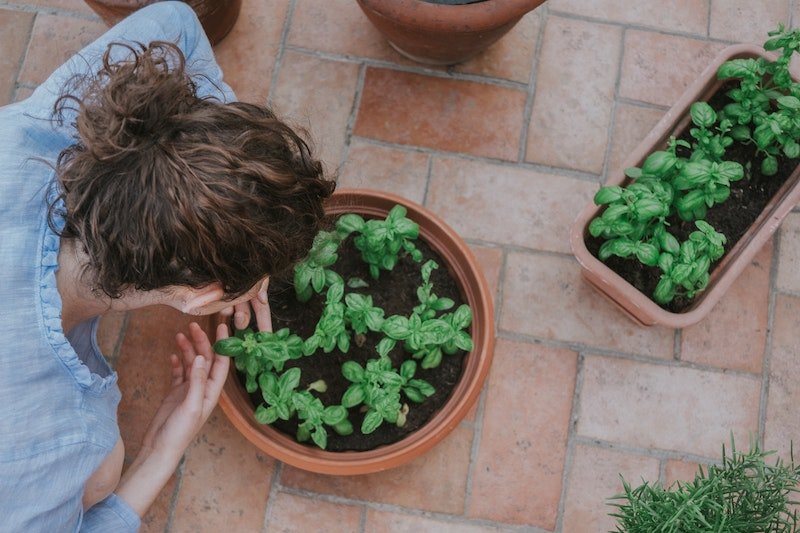
Starting your garden could be a rewarding experience mentally, emotionally, and physically. Seeing your hard work bearing fruit gives you a sense of accomplishment that’s difficult to match.
However, the excitement could soon be overshadowed by the effort you need to put in. It may seem a bit daunting if you are just starting and don’t know all the ins and outs.
So, to help ease your adventurous beginning, learn the steps to start your very first garden in this article.
Step 1: Select the Right Place for Your Plants
When you begin your gardening project, the first thing to ensure is the right place for your plants. Choosing a place that gets at least 5 to 6 hours of sunlight daily is essential for properly growing your plants.
In addition, pick a spot where it will be easier for you to water and cater to the plants. Protect your plants from high winds, as they can hinder their growth and prevent pollinators.
Step 2: Decide the Type of Plants
Once you have selected the right spot, your next step is to decide what type of plants you want for your garden. You have plenty of options, such as herbs, flowers, vegetables, and more.
The type of plants you choose will determine the care you need to provide to help your garden flourish. Trying things out and knowing what will work for you is always good. So, start small and gradually increase the number of plants.
Step 3: Get Your Soil Working
Nutrient-rich soil is always the best option for your garden plants. You can ensure that the plants you choose are compatible with your soil by quickly researching the internet. In fact, you can start by examining the soil’s texture.
Most soil that easily crumbles and can be shoveled without a lot of effort is good for garden plants. Certain soil types, like clayey or rocky, may not be suitable for all plants.
However, you can improve the quality of your soil by mixing organic compost made with tea, vegetable waste, egg shells, etc.
Step 4: Gather the Essential Gardening Tools
Gardening tools will make your project easier and less time-consuming. So, you must grab the essential tools, sites such as Cleanflow carry hoses and outdoor tools, to make everything go smoothly.
Keeping tools like pruning scissors, spades, trowels, and garden forks handy will make things easier, as you will need them often.
They help with digging soil, cutting off dead parts, preparing the soil, breaking clumps, watering, and weeding unwanted plants in your garden. All these will make your plants look amazing and well-groomed.
Step 5: Make a Well-Planned Design for Your Garden
Having a plan in place for the arrangement and placement of your plants in the garden can help you prepare for what is to come next. While planning, you must consider appropriate spacing between the plants so they don’t compete for nutrients, sunlight, and water.
This will also prevent the spread of disease if any of your plants get affected. In addition to all these, putting labels on the plants can help you identify them. Moreover, keeping up-to-date with the progress of each plant helps with learning what works for them.
Step 6: Learn the Right Way of Planting
You must take extreme care while planting seeds and saplings in the soil. If you put them too deep or too shallow, they may not grow as intended. The ideal depth for planting is considered to be 3 to 4 times the diameter of the seed.
So if yours is 1 mm, sow them 4 mm deep. Saplings should be planted with their roots in the soil and the entire shoot outside. Before placing the sapling, loosen the soil a bit and dig a hole that can fit two of the same sapling, but place only one.
Once done, place the sapling while slowly covering the roots with soil until they are fully covered. Once planted, water the seeds and saplings.
Step 7: Keep a Check on Pests and Diseases
Plants are attractive not just for humans but also for pests and microbes. Your plants are especially susceptible to them if they have deficiencies and are weak. So, keeping a check on them can make your gardening project a success.
You can use home remedies to prevent them. These can include neem oil, dish soap and water drops, garlic, etc. You can also use plant compounds to evade bugs. Keeping your plants well-nourished and watered can prevent most diseases.
Wrapping Up
Starting a garden is a great way to reduce stress and bond with nature. It can make you feel relaxed and calm, and help release feel-good hormones. Gardening is not difficult if you take the right steps to prepare and plan the project. Follow the steps mentioned in this article and consult a gardener or a nurse for more details.
Health & Wellness
Why Should You Have THESE Plants to Improve Your Studies?

Before we start, let’s make it clear that no plants will be able to study instead of you or will magically make your grade book look perfect. It will take some effort on your behalf to make it happen because plants always pay back to those who show genuine care. What you might not know is that all plants have a therapeutic effect that is known by healthcare specialists and those who have spent years gardening. Therefore, history shows us that there are specific plants that can actually improve your cognitive skills and make you feel less exhausted, thus improving your studies in a significant way.
Why Should You Have THESE Plants to Improve Your Studies?
– Lucky Bamboo.
According to the studies that have been presented by the people behind American Horticultural Therapy Association, it serves as a secret to positive energy and even good luck. As a plant that does not require much light but still asks for regular watering, it is a great decoration for any student’s room. While it may not be able to speed things up for you, you can consider GrabMyEssay as a great solution instead. Now, when you have Lucky Bamboo around, things will improve as well as it will help you to keep smiling and make it through!
– Jasmine Plant.
Serving as a beautiful, sweet-smelling flower that you can keep in your room if you have the space or outside of your window in a special space, you will enjoy a sweet fragrance that will help you to calm down and have a nice sleep when it is warm outside. Studies show that jasmine helps to remove stress and eliminate anxiety. It also serves as a great problem-solving plant as it helps to concentrate and learn more about flexibility. Numerous legends about this plant also talk about good luck, so if you are getting ready for an exam, you must consider it as one of the secret tricks!
– Rose Plant.
It is not surprising that roses belong to the most popular flowers worldwide. One of the reasons for that is related to the improvement of a person’s focus, which is essential when it comes to studies. Even when you have roses in your room or visit a rose garden as you take a walk outside, it instantly helps to feel the beauty and relax your mind. It is just like it melts all the challenges and provides a way to see things clearer. As a result, it also helps to increase productivity and think beyond the proverbial box.
– Orchids Plant.
If you are looking for something that is visually impressive or you want to have something that would bloom literally all the way through the year, it’s hard to find a better choice. Orchids are truly beautiful, and the colors alone can make a positive difference in your life. It is a plant that will instantly cheer you up and capture all the positive energy to share it with you. The orchids are known as mood boosters, which is why they often have them placed in academic facilities. Think about adding it to your study space, and you will instantly feel much better and will come up with excellent assignment ideas.
The Psychological Effect
Another reason why most plants will be able to improve your academic life is the improvement of concentration and focus that happens as the antioxidants are being released, as more oxygen means that more toxins are eliminated. As the atmosphere of peace and safety is created, students are able to feel much better and less anxious as plants provide them with a special environment. While it is always perceived as a medical effect, it is also a psychological matter as plants help to create a positive outlook and establish so important connection to nature.
BIO
Ruby Reginald loves spending time in her garden as she takes care of every plant she has and does her best to learn more. As an educator, she believes in the strong therapeutic effect of plants and gardening for learning. Follow Ruby to learn how to make your studies more creative and find inspiration.
Design Tips
What Plants Are Better For Students To Put In Their Workplace?
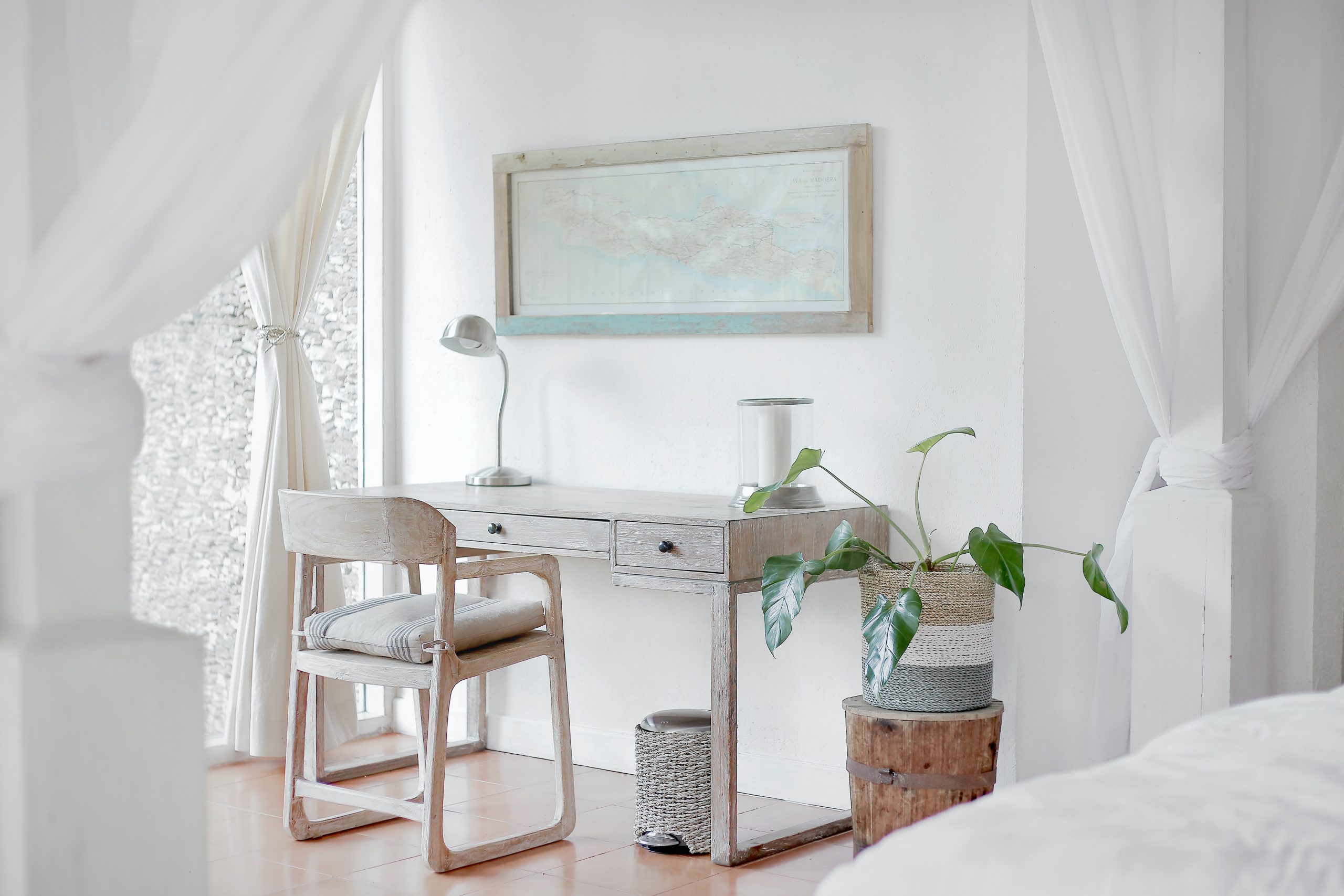
A big part of being a student is studying. To learn effectively, it helps to have a good workspace. As you might be aware, there are many factors that contribute to academic success, but one of the most crucial ones has to do with having a conducive environment for studying. Good lighting, an airy space, and comfortable chairs are some of the things to consider when designing a workspace. However, in this article, we’ll be focused mainly on plants. Not only do they serve an aesthetic purpose, but they also help to liven up a place, improve air quality and reduce stress. However, with so many plants in existence, it can be hard to decide on the best one. So, in order to make the decision-making process easier, we’ll be reviewing some of the best plants for students, so make sure to keep reading to learn more.
6 Plants That Students Should Put In Their Workplace
Here are six plants that are perfect for students to put in their workplace:
- Snake Plant
- Aloe Vera
- Spider Plant
- English Ivy
- Peace Lily
- Bamboo Palm
- Snake Plant
At the top of our list is the snake plant, and for good reason too. This is a low-maintenance plant, which means you don’t need to worry about its care constantly. It can survive in low-light environments and doesn’t need frequent watering. These resilient plants can go as much as two weeks without water, which helps when a student likes to travel.
- Aloe Vera
This plant has both physical and medical appeal. For one, it’s small and simple, making it easy to place anywhere in your workspace. On the medical side of things, this plant is great for skin care. The gel from this plant can hydrate the skin and treat eczema. Also, this trusty plant helps reduce air pollutants, which, if you stay in a busy city, can be an amazing benefit to enjoy.
- Spider Plant
Another air-purifying flora is the Spider plant. It’s a tough vegetation that can survive in different light conditions. It gets its name from the number of its leaves and how they are shaped. Unlike the insect that inspired its name, this plant is completely harmless. It’s simple to grow, but you can easily get one at your local flora shop.
- English Ivy
The English Ivy is perfect for students that deal with allergies. It has been shown to help remove mold spores in the air, which makes it great for improving the air quality in any workspace. It can also be used to relieve skin infections such as eczema and acne, to name a few. Greenery around the house also contributes to better sleep. Other things also helping students sleep better are free academic resources like profile essay topics, which take you one step closer to writing a compelling essay. There are copious online essay examples to choose from, which is great if your creativity is at a low.
- Peace Lily
Aside from their well-known air purifying properties, this plant has been proven to help reduce stress based on its calm and soothing appearance. It’s also low maintenance and prevents the formation of mildew. Make sure to check your local stores for one next time you are shopping.
- Bamboo Palm
These plants are great for adding that nice tropical touch to your workplace. They are easy to maintain and can survive in different light conditions. Also known as monkey palms, their long thin leaves resemble that of the animal. They can grow up to 12 feet tall, so you might want to keep them on the floor next to your study table.

Wrapping Up
Adding a plant to your workplace has more pros than drawbacks. Yes, you will have to care for it, but there are many low-maintenance plants like the ones shared in this article. Also, you stand to benefit from air purification, calmness, and in some cases, skin treatment as well. Considering these cool properties, it’s time to visit your local plant nursery!
Author’s Bio
Ruby Reginald is a freelance writer passionate about nature. She enjoys walking in the park and relaxing after a hard day of work. Ruby enjoys the calming effect of plants, among other benefits that they bring. When she isn’t writing, you can find Ruby hanging out with friends or watching a movie.
Home Care & Living
Versatility and Practicality Unveiled: Cendrex AHD Flanged General Purpose Panels for Seamless Access Solutions

In the world of seamless access solutions for commercial buildings, Cendrex AHD Flanged General Purpose Panels reign supreme. These panels offer unparalleled convenience, durability, and aesthetics, making them the top choice for discerning commercial builders. Let’s explore why Cendrex should be your go-to manufacturer for access solutions.
Versatility and Practicality
Cendrex AHD Flanged General Purpose Panels excel in both versatility and practicality. Designed to adapt to diverse environments, these panels seamlessly integrate into any infrastructure, commercial buildings, institutional facilities, or residential properties. No matter the project, Cendrex panels effortlessly provide access to concealed areas. Their versatility allows commercial builders to rely on Cendrex panels for all their access needs, regardless of the project scope or location.
Ease of Installation
One of the standout features of Cendrex AHD Flanged General Purpose Panels is their ease of installation. Commercial builders appreciate the simplicity and efficiency of mounting these panels. Unlike other access solutions requiring specialized tools or complex machinery, install Cendrex panels using basic tools such as a screwdriver, caulking gun, marker, and utility knife. This streamlined installation process saves valuable time and effort, enabling builders to focus on other critical aspects of the project.
Sleek Design
Aesthetics plays a crucial role in commercial spaces, and Cendrex understands this well. The paintable panels of their access doors seamlessly blend with the existing color and design scheme of walls or ceilings. This flexibility allows property owners to customize the panels, creating a cohesive and visually pleasing environment. By following the installation guide carefully or seeking assistance from construction professionals, builders can ensure proper sealing to prevent air and water leaks that could compromise occupant health. With Cendrex panels, commercial spaces can combine functionality and visual appeal seamlessly.
Durability and Longevity
Commercial builders value access solutions that can withstand the rigors of daily use and provide long-lasting performance. Cendrex AHD Flanged General Purpose Panels deliver exceptional durability and longevity on this front. Constructed with high-quality materials and precision engineering, these panels last for years, even in demanding environments. By investing in Cendrex panels, commercial builders can have confidence in the reliability and durability of their access solutions, saving on future repairs and replacements.
Cost-Effectiveness
In today’s competitive construction industry, commercial builders always seek cost-effective solutions without compromising quality. Cendrex AHD Flanged General Purpose Panels fit the bill perfectly. These panels not only offer affordability but also provide long-term cost savings. With their durability and minimal maintenance requirements, Cendrex panels eliminate the need for frequent repairs and replacements, reducing overall costs in the long run. By choosing Cendrex panels, commercial builders can enjoy cost-effective access solutions that deliver value for their investment.
Trusted Manufacturer
Cendrex has earned a solid reputation as a trusted manufacturer in the industry. With their unwavering commitment to quality, advanced manufacturing techniques, and top-grade materials, Cendrex consistently delivers access solutions that meet and exceed industry standards. Builders can rely on Cendrex to provide exceptional quality and reliable products backed by excellent customer support. Commercial builders can have peace of mind by choosing Cendrex as their access solution provider, knowing they are partnering with a trusted manufacturer.
Conclusion
Cendrex AHD Flanged General Purpose Panels offer commercial builders the ultimate access solution. With their versatility, ease of installation, sleek design, durability, and cost-effectiveness, these panels are the perfect choice for any project. By trusting Cendrex as your manufacturer, you ensure access to solutions that exceed expectations and deliver long-lasting value. Choose Cendrex for your access needs and experience the difference for yourself. With Cendrex panels, commercial builders can enhance their projects’ functionality, aesthetics, and overall success.
DIY Projects
Make a Splash at Home: A Comprehensive Guide to Choosing Your Dream Pool

Thinking of a Splash fills you with excitement. Having a pool in your home is everyone’s dream because it’s loved by everyone, such as children or even adults. A pool is a place where adults also behave like children and play there. It is full of excitement to play and have a good time with your family in a pool. It is a guide that will help you choose the best of your dream pool.
Choosing and installing a pool on your property is not an easy task. There are several important steps involved, from finding a perfect location in your property to choosing its size. Some considerations are there that you should keep in your mind while planning and installing your pool. Let’s dive into the article to choose your dream pool.
5 Pool Designs to achieve your dream
If you have not yet planned for a pool in your home, then it’s high time to plan because summer days are ahead, and we are providing you with five top ideas to explore your dream pool and install it.
Fountain Design Pool
You can design your pool with a fountain in the middle with a mushroom-like design so that if you get tired of swimming, you can sit there too, and it will also enhance the look of your pool, or if it is too sunny and you are getting tanned you can use that place for shade. Or else you can create three passageways at the end of the pool from where the water will flow regularly.
Organic Atmosphere Design Pool
You can also plan your pool near your garden area, and you can plant your garden in such a way that your pool gets a natural look and design it in an organic atmosphere. You can also plant a thuja tree around your pool to give it a natural look, or else you can plant any tree or plant you like.
Square Design With Mixed Tiles
You can also have your pool square shape with mixed tiles. For a calming effect, in the pool deep, you can install mosaic tiles. You can also mix the borders of the pool’s exteriors with the clay tiles. You can mix along with a brick patio and terracotta shingle to add a warm and contrasting mixture to your pool.
Step Design Pool
You can also design the step-pool in the yard according to your choice. Here with a step-pool, you will easily get into the pool by stepping on the step forward. If you have small children, then this design is best for you.
Resort Design Pool
You can also make a pool like the resorts have, or in other words, you can say that you can make your dream pool inspired by the resort. It is everybody’s dream to have a pool resort. You can make any irregular shape or oblong-shaped pool with stonework on the border of the pool.
Key Factors To Remember
Before making or installing a pool in your lawn area, some important factors are there that you will have to keep in mind. In this section, we will discuss all the factors which you will have to remember. Let’s go through it.
Overhead Wires
Look for the overhead wires if any kind of wire is running overhead where you are planning to install the pool. It is an important factor that you will have to keep in mind to prevent any kind of dangerous accident.
Check Underground Utilities
Before planning and installing a pool, it is essential to check whether there are any underground utilities. In the installation of the pool lot of digging is being done, and the presence of underground utilities can cause serious issues in installation.
Existing Terrain
The ground requires a totally flat area to install a pool. If the place you have selected for installation is not flat, then you will have to grade the land and also have to add retaining walls to make your pool differentiate it from your neighbor’s land.
Local Setback Requirements
YOu have to check the local setback requirements, which means checking the amount of space between your pool and your property line. The setbacks can affect the size of your pool, so do check whether these requirements are fulfilled before moving forward with installation.
Nearby Water Bodies
You will also have to check whether there is any lake, pond, or river near your house pool’s location because pools cannot be installed in the range of 100 meters of any lake, pond, or river.
Alleviation on your Property
You will have to verify whether there is any alleviation on your property or not because alleviation on your property can cause issues while installing the pool on alleviated land. You will have to make sure that the land you are using for installing your dream pool is alleviated free.
Conclusion
In conclusion, everyone gets excited as they listen to the name of their own pool because it is a place where a person is comfortable and relaxed and also becomes a child and behaves like children. If you have children, then it is compulsory that you take care of the depth of the pool for children’s safety because younger ones get excited too fast for the pool but they do not take care of their safety, which you will have to do as an adult.
So, start installing a pool and enjoy a memorable time with your family!
Home Care & Living
Exploring the Benefits of BA-AID AluLight Access Doors: Lightweight and Durable Solutions for Easy Access

In both commercial buildings and residential properties, easy access is crucial. It allows maintenance and repair teams and authorized personnel to quickly reach the most important areas where construction professionals and engineers hide the building’s vital components.
Say goodbye to heavy doors with complex security mechanisms. With the BA-AID AluLight Access Door, reaching these areas becomes effortless. Its innovative design transforms how we approach critical building spaces—ensuring functionality, efficiency, and convenience for authorized individuals.
Discover the various benefits of BA-AID AluLight Access Door and why it is essential to the construction and architecture industry.
What is BA-AID AluLight Access Door?
The BA-AID AluLight Access Door plays a crucial role in the construction industry. It is a gateway to hard-to-reach areas that typically conceal essential building components, such as HVAC systems, plumbing units, ductwork, and cables and wires.
It is a cost-effective and lightweight solution designed with ergonomics in mind. Constructed from durable materials like 20 ga/1mm aluminum and fixed hinges, this access door ensures safety and security when installed in interior or exterior parts of the building.
8 Key Benefits of the BA-AID AluLight Access Door
- Uses Lightweight Materials
In the construction industry, access doors installed in areas such as walls must be lightweight for the installation surface to hold them and efficiently prevent access doors from falling and causing injuries to building occupants.
Their lightweight materials also facilitate easy accessibility for individuals of varying ages and abilities, particularly during emergencies. Opening and closing the door requires minimal effort, ensuring quick and efficient access when needed.
- Smooth Operation
The materials used in the BA-AID AluLight Access Doors play a crucial role in their operation. With high-quality materials, these doors are designed to minimize friction and resistance, ensuring smooth and effortless maneuverability. This feature also allows for a seamless user experience without the risk of jamming or difficulties in operation.
- Value Engineering
The BA-AID AluLight Access Door is an economical solution that provides high-end functionalities. Its quality, cost-effective door performs similarly to its counterparts through its streamlined structural design that promotes quality, security, and safety.
- Versatility and Flexibility
Another essential feature of the BA-AID AluLight Access Door is its versatility and flexibility in design and application. These access doors are customizable, which you can easily configure and integrate into any innovative architectural design while keeping their structural integrity intact.
- Longevity and Durability
Although it uses lightweight materials, manufacturers engineer the BA-AID AluLight Access Door to be highly durable. Its 20 ga/1mm aluminum is robust enough to withstand accidental impact and different weather conditions, reducing the need for frequent tech visits, repairs, and replacements.
- Reduced Wear and Tear
The aluminum construction of the access door minimizes its impact on the components and surrounding structures, reducing wear and tear and relieving stress on the installation surface. This ensures a longer lifespan for the door and contributes to the overall durability and longevity of the entire system.
- Enhanced Safety
The BA-AID AluLight Access Door has contributed excellently to the construction industry. It enhances the safety protocols in multiple ways.
First, it promotes safety installation. Second, the minimal strain on the installation surface also minimizes the impact of the access door on the walls, reducing the likelihood of structural failures. Lastly, the lightweight aluminum material is impact resistant, which further enhances the safety measures of the building.
- Adaptability and Future-Proofing
The adaptability of the access solutions is a key factor in increasing the property’s value. It allows property owners and managers to easily upgrade their building’s designs while ensuring that the access solutions remain highly functional.
Conclusion
The BA-AID AluLight Access Doors offer a range of impressive benefits, making them an invaluable asset in the construction and architecture industries. With their lightweight materials and structural integrity, these doors provide authorized personnel and service teams with safe and effortless access to concealed components—ensuring a seamless user experience.
Experience the versatility and flexibility of the BA-AID AluLight Access Door, an economic access solution that prioritizes quality and security. Embrace its benefits and elevate your building’s accessibility, efficiency, and safety.
Landscaping
How to choose the perfect style for your garden
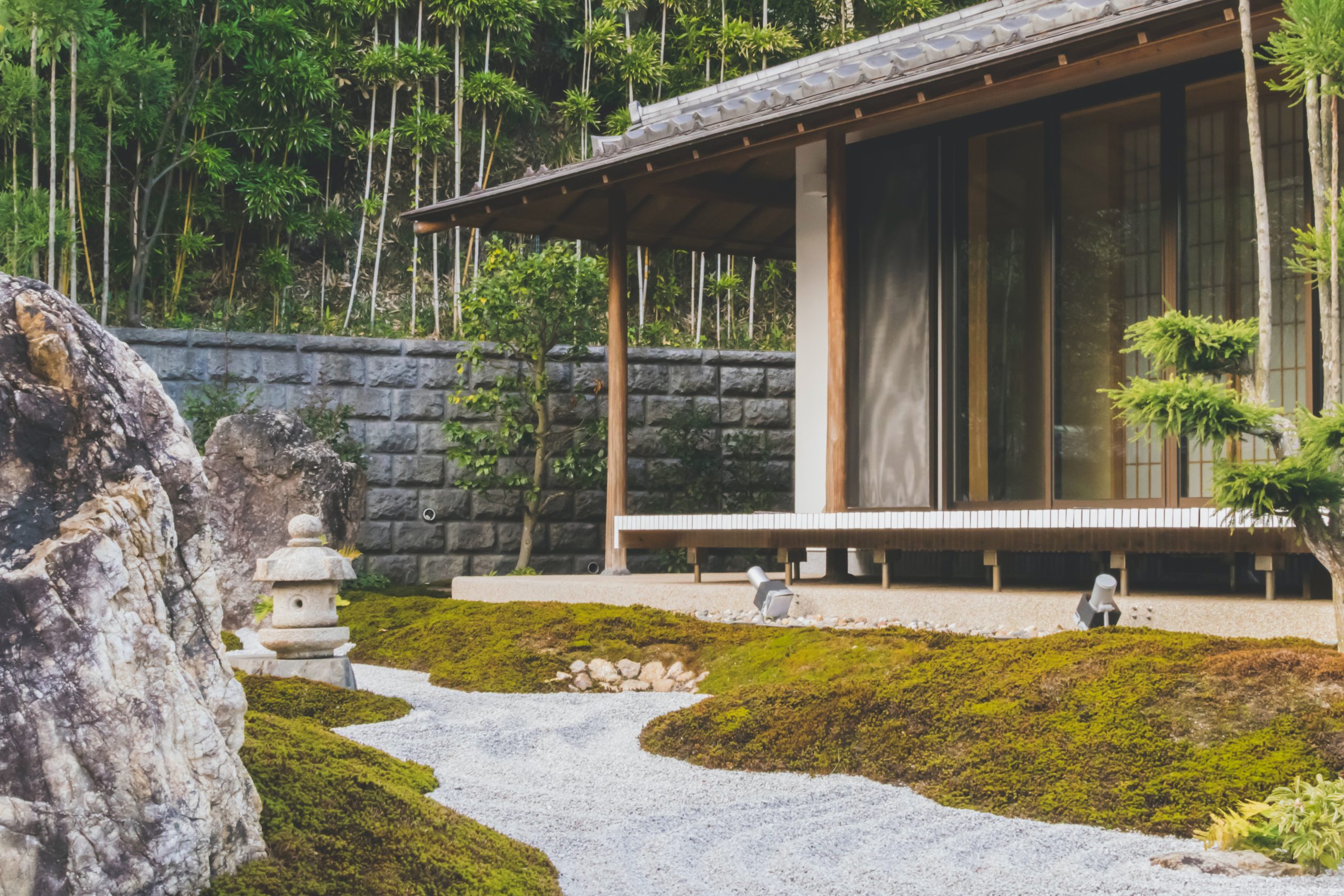
Worried you’re not getting the most from your garden space? Still haven’t found the perfect style to suit your little plot of outdoor land? There are various garden styles just waiting to be discovered, with designs changing based on the overall aesthetic you want to achieve. If you’re wanting to give your garden a little makeover, keep reading for some of our favourite garden styles, including how you can transform your space into something straight out of a Pinterest board!
English Cottage Garden
Truly emblematic of the cottagecore trend, the English Cottage Garden is known for its romantic and informal charm. With overflowing flower beds, climbing plants and heaps and heaps of colour, while high impact, this garden style can also be high maintenance so isn’t for the green-fingered faint-hearted! However, if you’ve got loads of time on your hands, this super-rich floral paradise may be the perfect style for you.
Zen Garden
If you’re a fan of more minimalist decor, a Zen Garden might be perfect for you. Inspired by design principles from Japan, zen gardens focus on creating a serene and private atmosphere, making the most of features like:
- Rocks (including large ones to create a cohesive zen design)
- Gravel
- Screening
- Water
- Plants (typically bonsai, ferns, mosses, swarf conifers and Japanese maples)
Mediterranean Garden
Mediterranean Gardens are great for those that don’t have tons of gardening time on their hands. This style is inspired by the landscapes of Mediterranean regions and invokes warm colours both in the flora and fauna, and in the man-made furniture. Think colourful throws, fun textures, and outdoor cushions as vibrant as the flowers surrounding them.
Contemporary Garden
The Contemporary Garden style puts modern design principles at the forefront. It’s all about viewing the “big picture” and creating an outdoor arrangement that looks natural and not fake. Simple geometric lines should be used as the base for the design, for example, squares, circles, rectangles and other shapes that intersect and interact well with each other. Three things to keep in mind: minimalism, functionality, and clean lines.
Wildlife-Friendly Garden
If you’re focused more on the practicality of your outdoor space than its aesthetic, consider a wildlife-friendly garden. These gardens are all about helping continue the life cycle of the natural world – which makes them great for introducing native British plants like corn mint, or wild garlic! The key to creating a wildlife-friendly garden is to simply let it be, so put those hedge trimmers down and trust nature to do its own beautiful thing…
Looking to revamp your garden but not sure where to start? Why not use these garden styles for inspiration. Pretty soon, you’ll be able to share your own outdoor space as inspiration for a Pinterest mood board!
General Gardening
Do-It-Yourself vs. Professional Lawn Care in Berry Hill
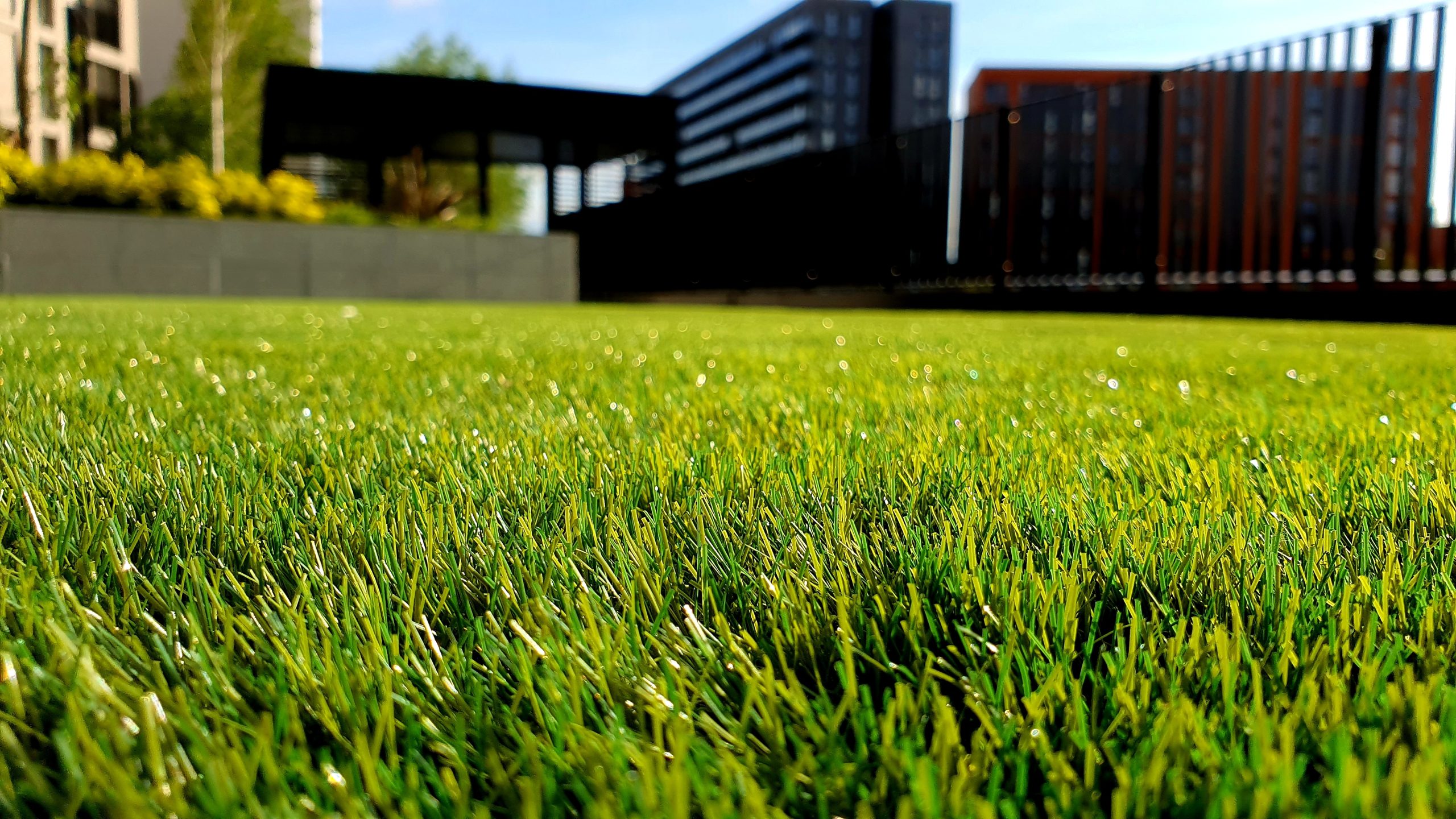
In the suburban community of Berry Hill, TN, homeowners have a range of options when it comes to caring for their lawns. Some homeowners may choose the do-it-yourself approach, taking on the responsibility of lawn maintenance themselves. This may involve tasks such as mowing, watering, fertilizing, and weed control.
However, a significant percentage of homeowners in Berry Hill opt for professional lawn care services. These homeowners recognize that professional lawn care is an investment in their property and can contribute to the overall aesthetic appeal of their homes. Studies have shown that homeowners’ choice for the type and intensity of lawn management depends on their desired lawn quality and their willingness to invest in professional services.
The Importance of Regular Lawn Maintenance
To ensure a vibrant and visually appealing yard, it is imperative to engage in consistent lawn upkeep. This entails performing various tasks such as maintaining an appropriate grass height through regular mowing, providing sufficient water for hydration, and supplementing the soil with essential nutrients by applying fertilizers. By diligently carrying out these maintenance practices, homeowners can foster the growth of a thriving lawn that enhances the overall aesthetic appeal of their property.
These tasks require knowledge and expertise to ensure proper care for the lawn. Professional lawn care services in Berry Hill have the expertise and experience to provide these services effectively. Their knowledge of the local climate and soil conditions allows them to tailor lawn care practices accordingly.
Furthermore, professional lawn care operators have access to specialized equipment and technology that may not be readily available to homeowners. This advantage allows them to achieve optimal results in terms of grass color, weed control, and overall lawn quality.
Understanding Different Types of Lawn Care Services
In Berry Hill, TN, professional lawn care services offer a range of options to cater to homeowners’ specific needs. Here are some common types of lawn care services available.
Lawn Mowing
Professional lawn care services often include regular lawn mowing as part of their offerings. This involves cutting the grass to a desired height, typically recommended based on the type of grass and local climate conditions. Regular lawn mowing is crucial in maintaining a neat and well-maintained appearance for the yard.
Lawn Fertilization and Weed Control
In addition to regular mowing, professional lawn care services in Berry Hill also offer fertilization and weed control treatments. These services play a vital role in promoting healthy grass growth and preventing the invasion of weeds, which can hinder the overall appearance and health of the lawn.
Lawn Irrigation
Another important service offered by professional lawn care operators is irrigation. Maintaining proper hydration for the lawn is essential for its health and vitality. Professional lawn care operators can assess the specific watering needs of the grass and implement irrigation systems or schedules to ensure optimal hydration.
Lawn Aeration and Overseeding
To promote healthy root growth and address compacted soil issues, professional lawn care services may offer lawn aeration. This process involves creating small holes or slits in the soil to allow air, water, and nutrients to penetrate deep into the roots. Professional lawn care operators may also provide overseeding services. Overseeding involves spreading additional grass seeds over the existing lawn to improve density and fill in bare patches.
Choosing the Right Lawn Care Service in Berry Hill, TN
When making a decision about which lawn care service to hire in Berry Hill, TN, homeowners should take into account their individual requirements and personal preferences. The desired quality of the lawn and the budget available will both factor prominently in determining the most suitable option for professional lawn care services. It is crucial to consider the level of competence and knowledge possessed by the professionals who maintain lawns as well.
It is crucial for homeowners to inquire about the qualifications and certifications of lawn care service providers in order to guarantee their expertise and competency in managing lawns. Additionally, it is advisable for homeowners to also ask about the methods and products employed by Berry Hill’s lawn care services.
Conclusion
Investing in the array of services provided by lawn care professionals in Berry Hill, TN, encompasses various aspects such as eliminating weeds, nurturing with proper irrigation techniques, and promoting healthy growth through aeration and overseeding.
By opting for professional assistance in maintaining their lawns, homeowners can guarantee both the physical well-being and visual allure of their outdoor spaces. This reasoned decision to seek expert advice not only ensures that any unwanted plant intruders are kept at bay but also creates an environment where lawns flourish aesthetically.
General Gardening
Creating a Cottagecore Garden is Easier than You Think: Here’s How
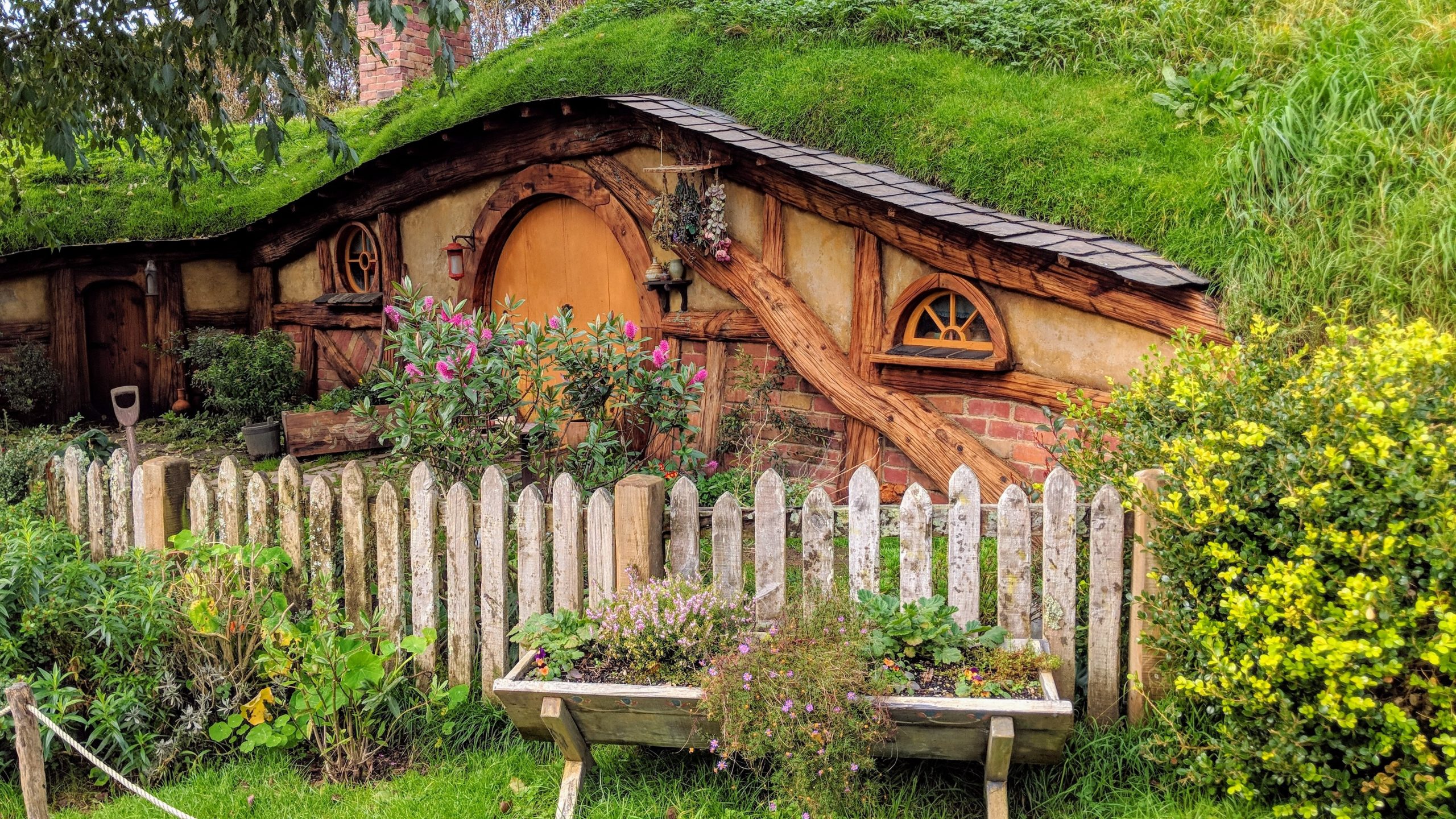
Picture this – An English-style country cottage adorned with roses against the backdrop of a clear mid-morning sky and a field of sun-kissed flowers. The door is striking and welcoming, leading up to a cabinet of vintage china pieces and rooms decked with antique furniture, neutral linens, reclaimed wood works, woven wicker baskets, and flowers of all possible kinds and colors.
Does this look like a place you’re nostalgic for; but have given up all hopes of finding? Thankfully, such idyllic scenes are not just reserved for your grandmother’s “life on the farm” anecdotes. The Cottagecore aesthetic, as dubbed by modern folks, is making a serious comeback to offset the despair of urban living.
Described as a “homage to a simple life,” Cottagecore interior design and gardening aesthetic are based on rural self-sufficiency and everything picturesque. Since Cottagecore gardens are slightly different in layout from their traditional counterparts, modern homeowners shy away from incorporating them into their home scheme. Some believe such a garden aesthetic is only suitable for those with large patios and yards.
The Discover Britain Magazine debunks these myths, stating that Cottagecore-themed gardens were popular among poor cottage dwellers and aristocratic property owners. Meaning, anyone can introduce this theme’s whimsical elements into their garden. This article provides insight into how you can create a Cottagecore garden akin to the famous English folklore.
What Can You Plant in a Cottagecore-themed Garden?
Cottagecore gardening was not started just for the aesthetics (at least not for the poor cottage dwellers). The aristocrats used these gardens to display botanical ornateness, but the rest of the English countryside grew vegetation for sustenance, along with wildflowers, grasses, and trees. The primary aim was to not disturb nature or tame it. So, you can grow the following in your Cottagecore garden –
- Lots and lots of flowers – Most English cottage gardens were a melting pot of colors and textures, often rendered by flowers. Perennial shrubs were the most common, followed by wildflowers and vines.
- Aromatic Herbs – If you can’t grow proper vegetables due to space crunch, try planting flavorful herbs like thyme, cilantro, rosemary, lemongrass, or sage. These will add a lovely touch to homecooked meals and align well with the sustenance aspect of the Cottagecore garden.
- Fruit Trees – If your garden space allows the square footage, and you have the patience of a saint, consider planting fruit trees like apples, mangoes, guavas, and oranges.
- Bushes and Ornamental Grasses – Need something interesting to fill visual gaps and spark four-season interest? Consider wispy bushes and ornamental grasses that add unparalleled texture. These include feather reed grass, fountain grass, little bluestem, switch grass, and blue oat grass.
Setting up a Cottagecore Garden Layout
While traditional landscaping leans towards taming the shrubs and trees, sometimes even towards fanciful topiary, English countryside Cottagecore gardens are all about allowing nature to run its course. You can call the shots through a concrete garden plan, but the rest is left to the whims of the planted foliage. Here’s how to go about it –
1. Start by Mapping out Your Garden
The first step in setting up a Cottagecore-themed garden is to walk outside and envision the final look (as far as possible). This should help you answer some important questions –
- Do you wish to see more flowers or just greenery?
- Will there be a single pathway or multiple, interconnected ones?
- Would you like a separate relaxation spot, and will there be space for one?
- Will the roadmap offer easy access to garden maintenance?
Maybe take a sketchbook and pencil along to make your plans visual and concrete. If you wish to introduce pathways, line them with pebbles or add stepping stones that bring out the Cottagecore theme in a vivid manner.
2. Decide Which Flowers and Plants Will Go Where
Once the basic layout is ready, the next step is to decide which plants and flowers you want and where. The best way to exude a charming Cottagecore feel is to have a juxtaposition of greens and flowers.
As for the varieties, you can stick to the plants and flowers that are native to your area. However, if possible, include popular English foliage, such as poppies, delphiniums, and foxgloves. Other vibrant flower choices include bellflowers, daisies, geraniums, irises, lavenders, and peonies.
3. Get Your Supplies and Review it All
Once the planning part is over, next is the execution. For this, you will need proper gardening tools and supplies. Make a list of the flowers, plants, tools, planters, potting mix, and manure that you will need.
Both for indoor and outdoor gardening, the scope is limitless as you can choose among garden beds, permaculture, rock systems, and traditional pots. Crescent Garden believes that a mix of small, large, and different shapes of pots will enhance the whimsical appeal of the garden. You can even choose self-watering pots for moisture-loving plants.
Once you’ve purchased and reviewed all supplies, place the flowers and plants in the desired alignment to check whether you like the layout. Allow sufficient space between plants, but also fill visual gaps using succulents and phlox.
4. Take Advantage of Mulching
If you consider the soil to be a cake, mulch is the icing or topping. Mulching is the process of adding a protective layer of organic material, dried leaves, or wood chips to prevent soil erosion and encourage moisture retention.
It will prevent weeding and protect your plants from drying out in summer and freezing in winter.
Décor Ideas for Wholesome Country Vibes
Do you crave the ‘Anne of the Green Gables Meets Bucolic Dreamland’ aesthetics for your garden, but are not sure how to achieve it? Well, the elements are simple and when brought together, will seamlessly exude a folksy mystic vibe.
1. Install a Summer House
Ah! Just imagine the feeling of walking into a shabby-chic wooden summerhouse humbly sitting in the midst of your English garden where you can allocate time to yourself. With plenty of rustic windows, the natural light invites you to bask in its glory or try your hand at hobbies like art, music, and reading.
The perfect vintage summerhouse would feature antique furniture, natural materials, wooden armchairs, a hammock (if you please), and lots of antique trinkets that transport you to the bygone era.
2. Hang Macramé Plants
The macramé trend, or the art of knotting rope to create fanciful hanging decorations, is not a newfound idea. In fact, it has resurrected from the 1970s as homeowners are creating stunning macramé pots to hang from the ceilings.
The use of ropes gives this look a Cottagecore vibe. You can hang these in your living room, kitchen, bedroom, and even the patio or the summerhouse. The best botanical beauties for macramé pots include the Boston fern, satin pothos, button fern, and tradescantia.
3. Consider Having a Fanciful Trellis
Is the English Cottagecore aesthetic ever complete without a trail, arch, or lattice of flowers? Thankfully, it’s super easy to create one without breaking the bank. While you can opt for a basic wire mesh display, the Cottagecore vibe comes out best through a wooden pergola.
The most common yet appealing look is that of an archway lined with (fragrant) flowers opening up to the patio or separating the summerhouse area from the rest of the garden. Some of the top flowers for this setup include clematis, honeysuckle, sweet pea, rose, star jasmine, and wisteria.
4. Don’t Forget the Signature Fountain!
Whether your patio features a detailed Cottagecore theme, a manicured one, or a pathway framed by stones and pebbles, it will stay incomplete without the signature English fountain.
The ideal model would be a tiered fountain surrounded by potted hydrangeas and other colorful flowers. Even small stone fountains can become the focal point as their cascading waters produce the calming effect needed to soften the formal symmetry.
5. Add the Touch of Wrought-Iron Benches
Given the Cottagecore theme, you can choose wood or stone benches that feature some carvings. But, the only design that is truly transportive is the ornate, antique cast-iron benches still resting in some Victorian parks today.
These benches are easy-to-install and weatherproof; plus, sitting on one of them while gazing at the birds flocking to drink from the fountain will have you enjoying your personal ‘Bridgerton’ moment!
Time to Gild the Lily?
Is your current garden or patio brimming with life already, but you’re just looking to switch to the English Cottagecore era? Even if you’re not starting from scratch, the above-mentioned tips and décor ideas will work for you.
The only difference might be in terms of the plants and flower arrangement. In case you’re already happy with the setup, there’s no need to change the placement right away. You can do that when it’s time to change the plants’ soil (which may be sooner for some than others).
Simply try to create room for whimsical elements that breathe ‘cottagecore’ into the aesthetic theme. Finally, plant a whole lot more flowers; after all, can one ever have too many flowers, especially in the gardens of the English countryside?
Home Care & Living
The Magic of Mirrors: How Mirror Wall Fountains Enhance Your Interior Design

Interior design is not just about setting up furniture and decorating your space with pretty objects. It is about creating an atmosphere that personifies one’s personality while being elegant and welcoming. One way of achieving this is by incorporating mirror wall fountains into your decor. Fortunately, Soothing Company carries one of the most extensive collections of mirror wall fountains. And in this blog post, we’re going to explore why adding one of these elegant pieces to your interior design is a great move.
Reflect Natural Light for Ambiance
Reflecting natural light is a powerful tool for enhancing the ambiance of any interior space. By strategically placing mirror wall fountains in an area that receives natural light, you can create a stunning visual effect that adds depth, brightness, and warmth to the room. When the water flows through the wall fountain, it creates a mesmerizing dancing light that reflects off the mirror surface, creating a tranquil and soothing environment.
The use of natural light is a crucial element in interior design, and mirror wall fountains have the added benefit of amplifying and reflecting that light, enhancing the overall aesthetic appeal of the space. With the right placement, mirror wall fountains can transform any area into a charming and peaceful oasis.
Visually Expand Small Spaces
It can be frustrating when your design vision outstrips the constraints of your home’s square footage. But with strategic planning and the right design elements, you can visually expand those small spaces. One of the easiest and most effective ways to do this is with a mirror wall fountain. These beautiful decorative features will create an illusion of depth and space, making even the smallest room appear larger and more open.
Additionally, the tranquil sound of water flowing can help to create a calming atmosphere in the space, further enhancing its appeal. The magic of mirror wall fountains is their ability to add both aesthetic beauty and practical functionality to your interior design.
Create a Sophisticated Statement Piece
The enchanting design and mesmerizing water flow of these fountains are sure to captivate the attention of guests and become a focal point of the room. To create an even more stunning effect, consider choosing a fountain with a unique shape or intricate design. This will make the fountain not only a source of relaxation and ambiance but also an impressive work of art. The right mirror wall fountain can elevate any space from ordinary to extraordinary, making it a worthwhile investment for anyone looking to enhance their interior design.
Reflect Unique Water Patterns
The use of mirror wall fountains as a decorative element in interior design is not a new concept, but it is still an effective one. Specifically, the ability of these fountains to reflect unique water patterns is a key feature that adds an extra layer of visual interest to any space in which they are installed. The sight and sound of moving water is already powerful decorative tool, but when combined with the reflective qualities of a mirror, the impact is amplified. The mirror surface in these fountains can also play with lighting and shadows in intriguing ways, providing a dynamic visual experience that changes throughout the day.
Enhance the Sound of the Water
Water is a soothing and rejuvenating element that can elevate the ambiance of any space. Adding a mirror wall fountain to your interior design not only enhances the visual appeal of the space but also has the added benefit of enhancing the sound of water. From a soft trickle to a rush of water, the sound of flowing water can create a peaceful atmosphere and reduce stress in your daily life.
With mirror wall fountains, the sound of water is amplified and reflected throughout the space due to the reflective properties of the mirrors. The result is a serene and tranquil environment that evokes a sense of calm and relaxation. Whether used in a home or professional setting, mirror wall fountains can enhance the overall experience of the space with the sound of water.
Low Maintenance and Easy Cleaning
Unlike other water features that require constant cleaning and upkeep, mirror wall fountains are relatively easy to maintain. The smooth surfaces of the mirrors can be easily wiped clean with a damp cloth, and cleaning the fountain itself is a simple matter of regularly changing the water and cleaning the pump.
Additionally, the use of mirrors in the design of the fountain can create the illusion of a larger space, reflecting and maximizing the natural light in a room. This means that not only are mirror wall fountains attractive, but they can also be a practical addition to any space, making it easier to keep your interior design looking its best.
Customizable to Fit Any Aesthetic
One of the many advantages of mirror wall fountains is their versatility in enhancing any interior design. These fountains are customizable to fit any aesthetic, allowing them to seamlessly integrate into your home’s decor. Whether your style is traditional or modern, mirror wall fountains come in a variety of shapes, sizes, and finishes to fit your needs.
Additionally, a wide range of materials, from copper to stainless steel, can be used to create the fountain’s structure, providing even more flexibility in the design process. This ensures that mirror wall fountains can enhance any room’s ambiance and aesthetic without sacrificing functionality. You can choose a mirror wall fountain that complements your existing decor or opt for a bold statement piece that sets the tone for the room.
Elevate Your Interior Design Game
Not only do these fountains provide a stunning visual display, but they also create a calming ambiance that can enhance any room in your home or business. The addition of flowing water and soft lighting creates a soothing atmosphere that instantly elevates your space, making it more inviting and relaxing for both visitors and occupants.
Mirror wall fountains come in a variety of sizes, styles, and materials, making it easy to find the perfect fit for your space. Plus, their versatile design means they can be incorporated into a wide range of interior design styles, including modern, rustic, and classic. With the magic of mirrors, a mirror wall fountain has the power to transform your space, adding a touch of elegance and sophistication to any room and creating a memorable experience for all who experience it.
Conclusion
Mirror wall fountains are a truly versatile and stunning addition to any interior. With the ability to create an intriguing focal point, add a sense of spaciousness and light, and even purify the air in your home, these unique fountains offer a host of benefits for your space. Whether you opt for a sleek and modern design or a more traditional and ornate model, the magic of mirror wall fountains is undeniable. So why not consider incorporating one of these mesmerizing features into your own home?
General Gardening
4 Tips for Creating a Cottage Garden
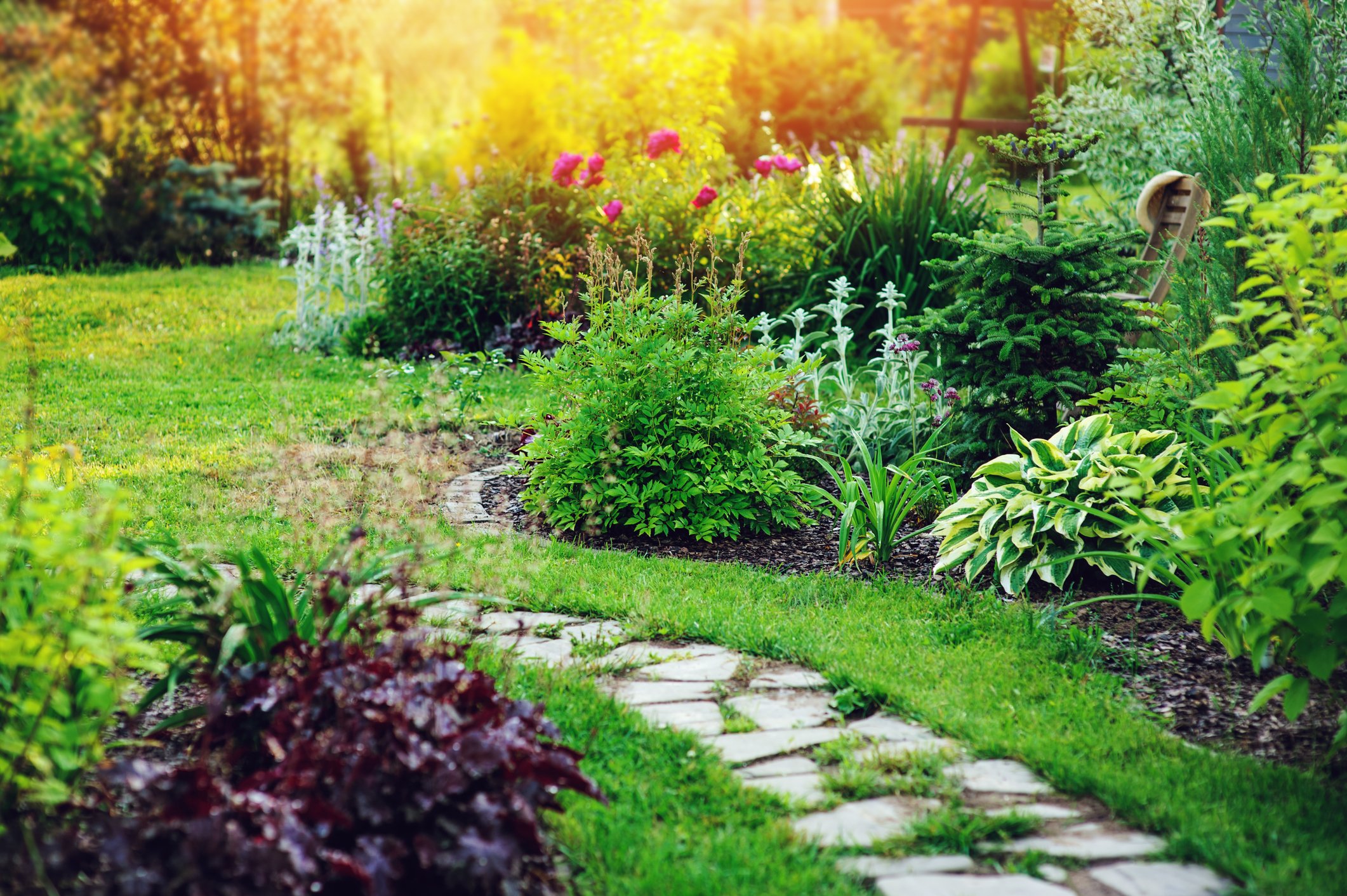
If your tastes run more to a look that’s wild, unplanned, and low maintenance rather than precise and orderly, a cottage garden might be perfect for you. With origins in England, cottage gardens tend to be informal and dense. The tips below can help you start to create one of your own.
Have a Budget
Cottage gardens are not unplanned, but they are much more casual than formal English-style gardens. One element of it that you absolutely do need to plan is your budget. It can be easy to quickly drop quite a lot of money on plants, supplies, and additions such as a picket fence, a pergola, or other structures to add interest or for flowers to climb. Fortunately, since the aesthetic is a rustic one, you can use reclaimed materials, but you’ll still need to know how much money you can spend to start. If you are short on cash, one way to pay without plastic is with a personal loan. Your own bank may offer loans, or you may be able to find a lender online that you are eligible to borrow money from.
Consider Hardscaping
You may want to include such items as a fence, an arbor, a trellis, or more natural features, such as boulders, as backdrops or to set off your plants. It’s a good idea to start with these and build around them rather than to try to introduce them later. Think about whether you want to have seating as well and where you’d like to place it. You may also want create one or more pathways through the garden. These can be made of gravel, woodchips, concrete, or even grass, although keep in mind that the grass will need to be mowed. Curving pathways will be lower maintenance than straight ones and will contribute to the informal aesthetic.
Pay Attention to Soil
If you want to bring your garden back to life, you need to think about your soil in two different ways. First, it’s a good idea to have it tested first to make sure that it’s rich and healthy. If it isn’t, you need to work on improving its quality. Second, think in terms of having no soil visible. This is one of the elements that distinguishes a cottage garden from its more formal English garden counterpart. Trailing ground cover and the boulders mentioned above can add texture.
Look for Hardy Plants
There are several criteria that are important for most people who plant cottage gardens. They usually want plants that are traditional looking even if they aren’t traditional. Fragrant, romantic plants in pastel colors are frequently used in this type of design. You may want to strive not just low maintenance plants, in looks, but a design that is actually easy to care for. Romantic, traditional looking plants can also be hardy, so try to choose varieties that you don’t have to fuss over. Exactly what varieties these are will vary based on where you live, but some varieties of rose are much more disease resistant and easy to care for than others.
Home Care & Living
For Upscale Style and Comfort, Consider Adding a Residential Elevator to Your Home

Residential elevators have become increasingly popular in recent years as homeowners seek to improve the functionality and convenience of their living spaces. Elevators provide an array of benefits, including increased accessibility, enhanced property value, and greater convenience for residents. In this article, we will explore why residential elevators are a good addition to a home, why someone would decide to install an elevator, and the different types of residential home elevators, with particular focus on pneumatic elevators.
Why are residential elevators a great addition to a home?
Residential elevators offer many benefits that make them a valuable addition to any home. First and foremost, they improve accessibility, allowing individuals with mobility issues or disabilities to move freely between floors. Elevators can also make it easier to transport heavy items, such as furniture or groceries, up and down stairs. This can be especially beneficial for older adults or individuals with physical limitations.
While much of the discussion around residential elevators is about those with disabilities, this addition can provide greater comfort and convenience for residents regardless of their ability or age. Rather than having to climb stairs every time they need to move between floors, residents can simply step into the elevator and be transported effortlessly to their desired destination. This can be especially appealing for individuals with large homes or multi-level properties, as it can save time and energy while also improving overall quality of life.
Lastly, another advantage of residential elevators is that they can increase property value. In fact, installing an elevator can add significant value to a home, making it a wise investment for homeowners who plan to sell in the future. This upgrade doesn’t often make the lists of top renovations, but that isn’t because it’s not highly appreciated by the right buyer; rather, it’s because a residential elevator is a highly specialized renovation that may not even be considered by homebuyers. However, once they realize how convenient and exciting a residential elevator can be, this addition will certainly boost a home to the top of any buyer’s shortlist for their purchase.
What types of residential elevators are available?
There are several different types of residential elevators available on the market today, each with their own unique features and benefits. One type of elevator that has gained popularity in recent years is the pneumatic elevator.
Pneumatic elevators are a type of vacuum elevator that use air pressure to transport passengers between floors. They are typically designed with a clear acrylic cylinder that allows passengers to see the outside environment as they move between floors. This can be a visually stunning and unique experience, and it adds an extra layer of safety for those who have curious pets or children that might wish to give the elevator a try.
This newer elevator type is also highly efficient and easy to install, making them a popular choice for homeowners who are looking for a quick and hassle-free installation process. They are typically powered by a small electric motor and can be installed in as little as one day, depending on the complexity of the installation.
Another benefit of pneumatic elevators is that they are highly energy-efficient. They use significantly less energy than traditional hydraulic elevators, making them a more environmentally friendly and cost-effective option for homeowners. Additionally, pneumatic elevators do not require a separate machine room or shaft, which can save space and reduce installation costs.
Pneumatic elevators also have a small footprint, making them ideal for homes with limited space. They can be installed in small closets or other areas where traditional elevators would not fit, making them a versatile option for homeowners with unique layout requirements.
However, it’s important to note that pneumatic elevators may not be the best choice for individuals with certain health conditions, such as claustrophobia or sensory processing disorders. The enclosed cylinder and the movement of the elevator may cause discomfort for some individuals.
Other types of residential elevators include cable-driven elevators, which are powered by cables and counterweights, and hydraulic elevators, which use hydraulic fluid to power the elevator car. Each type of elevator has its own unique benefits and drawbacks, and homeowners should carefully consider their needs and preferences before deciding on a specific type of elevator.
Final thoughts
Residential elevators offer many benefits that make them a valuable addition to any home. They provide increased accessibility, enhanced property value, and greater comfort and convenience for residents. Pneumatic elevators, in particular, are a popular choice for homeowners due to their efficiency, ease of installation, and small footprint. Any homeowner interested in adding this unique home element should carefully consider the needs and preferences of the household before deciding on a specific type of elevator. With the right elevator, homeowners can enjoy improved quality of life, increased property value, and enhanced aesthetics.
Indoor Gardening
Mastering Indoor Gardening: 10 Effective Ways to Raise Humidity in Your Grow Tent

Maintaining the proper humidity level in a grow tent is crucial for the healthy growth of plants. When the humidity level is too low, plants may become dehydrated, their leaves may wilt and become discolored, and they may not grow as quickly. On the other hand, if the humidity level is too high, the plants may be at risk for mold and other fungal diseases. In this post, we will discuss various ways to raise the humidity in a grow tent.
Why Raising Humidity in the Grow Tent?
Humidity refers to the amount of moisture in the air, and different plants require different levels of humidity to thrive. In a grow tent, where the environment is controlled and isolated, it’s essential to maintain the ideal humidity level to promote healthy growth and prevent issues such as wilting, yellowing, and dryness.
Low humidity can be particularly problematic for plants that originate from tropical or humid environments. These plants require higher humidity levels to simulate their natural habitat and thrive. Conversely, plants that prefer drier environments may suffer if the humidity level is too high. Maintaining the appropriate humidity level can also help to prevent the spread of pests and diseases, as many of these thrive in dry conditions.
In addition to supporting plant growth, humidity can also play a role in controlling temperature. High humidity can make the air feel warmer, while low humidity can make the air feel cooler. This can be particularly useful in cooler climates, where it may be necessary to raise the humidity level to maintain a warm and inviting environment for your plants.
Use a Humidifier
One of the most effective ways to raise humidity in a grow tent is to use a humidifier. Humidifiers work by releasing water vapor into the air, which can increase the humidity level. There are several types of humidifiers available on the market, including ultrasonic, evaporative, and steam humidifiers. Ultrasonic humidifiers are the most popular choice for indoor gardening because they are quiet, efficient, and easy to use. They work by using high-frequency vibrations to create a fine mist that is released into the air.
Create a Humid Microclimate
Creating a humid microclimate around your plants can help to raise the humidity level in your grow tent. One way to do this is to place a tray of water near your plants. As the water evaporates, it will increase the humidity level in the surrounding area. You can also place a wet towel or sponge near your plants to create a similar effect.
Water your Plants More Frequently
Watering your plants more frequently can help to increase the humidity level in your grow tent. When you water your plants, the excess water evaporates into the air, increasing the humidity level. However, be careful not to overwater your plants, as this can lead to root rot and other problems.
Use a Misting System
A misting system is another effective way to raise humidity in a grow tent. A misting system works by spraying a fine mist of water over your plants, which can increase the humidity level. Misting systems are available in both manual and automatic versions. Automatic misting systems are more expensive but are also more convenient, as they can be set up to mist your plants at specific intervals.
Use a Humidity Dome
A humidity dome is a clear plastic dome that is placed over your plants to create a humid microclimate. The dome traps moisture and increases the humidity level around your plants. Humidity domes are particularly useful for seedlings and young plants, which are more sensitive to changes in humidity.
Add Plants that Increase Humidity
Some plants are naturally good at increasing humidity levels. Adding plants like ferns, spider plants, and peace lilies to your grow tent can help to raise the humidity level. These plants release moisture into the air through a process called transpiration.
Seal Your Grow Tent
If your grow tent is not sealed properly, it may be difficult to maintain a high humidity level. Air leaks can allow moisture to escape from your grow tent, decreasing the humidity level. To seal your grow tent, use duct tape to seal any gaps or holes in your tent.
Use a Hygrometer
A hygrometer is a tool used to measure the humidity level in your grow tent. By using a hygrometer, you can monitor the humidity level and adjust your humidifying methods accordingly.
Increase the Temperature
Increasing the temperature in your grow tent can also help to raise the humidity level. As the temperature rises, the air can hold more moisture, which can increase the humidity level. However, be careful not to raise the temperature too high, as this can damage your plants.
Use a Water Fountain
A water fountain can be a decorative and effective way to increase the humidity level in your grow tent. The water in the fountain evaporates into the air, creating a humid microclimate around your plants. Additionally, the sound of running water can also help to create a relaxing environment for your plants.
Conclusion
To sum up, there are many effective ways to raise the humidity level in a grow tent. Using a humidifier, creating a humid microclimate, misting your plants, and adding humidity-loving plants are just a few of the methods you can use. It’s important to monitor the humidity level in your grow tent using a hygrometer and make adjustments as needed to ensure that your plants are healthy and thriving. With the right tools and techniques, you can maintain the ideal humidity level in your grow tent and enjoy a successful indoor gardening experience.
General Gardening
Best Fruit Trees for Springfield (Southwest) Missouri

Choosing the best fruit trees for Springfield, Southwest Missouri requires you to know several things.
These include the types of pests found there, the growth rate of the tree, the common diseases and how hardy the trees are for the local weather.
Despite all the challenges of severe winters and hot humid summers, Missouri still remains one of the best places to grow several types of fruit trees. As a homeowner, nothing gives more joy than mixing a fruit salad with ingredients from your own trees.
Here are the top fruit trees that do well in Springfield, Missouri:
1. Apple Tree
This all-time classic fruit that is loved by all people tops the list of many of the fruit trees recommended for Springfield in Missouri. The best varieties for this area are the Granny, Red Delicious, and Honeycrisp.
Missouri gets cold springs and fall seasons, and many fruit trees cannot withstand this. But the apple tree thrives in such weather. It has been known to flower and fruit in the snow of late spring.
Apple is also fairly easy to grow, since it does well in all types of soil. It also grows well without needing water, fertilizer, or too much pruning.
Please note that this does not mean you grow your apple blindly. You still need to work with a certified tree expert to know where to grow it in the yard. For instance, it won’t grow very well in poorly drained soils.
Apple is also vulnerable to mold and blight attacks.
2. Peach Tree
Peaches do very well in the high humidity and the heat of Missouri summers. If you don’t have a big yard, growing peaches is perfect because they grow vertically rather than horizontally. A peach tree can grow up to 15 feet high but only spread out for 2 to 3 feet.
It is a fast-growth fruit tree and you can start harvesting fruit in a maximum of 2 years, or less after planting.
There are some disadvantages to growing the peach tree in your home. It does not grow well in cold weather. If the temperature falls under 10 degrees during winter, the trees can die.
Peach trees are also vulnerable to mold and blight in winter or in summer.
3. Pear
Visit your local tree nursery and ask whether they have pear trees that you can grow in your home in Springfield.
The pear fruit is starchy, juicy and sweet. It makes a perfect natural treat for later summer and early fall in some cases, because that is when its fruit ripens.
This fruit tree withstands the cold, hot or humid weather very well. But if you live in a windy place, support the pear trees with posts to keep them growing straight.
The pear trees will do well in pots and other constrained growing situations. The only time a pear fruit tree will not do well is when it is planted in wet soil.
If this tree is attacked by aphids, it might not recover.
4. Plum tree
The hardy, insect-resistant plum fruit trees are perfect for Missouri. They thrive in the heat and one tree can produce many pounds of fruit. The plum fruity has a tart taste. It is used for making different types of jellies and jams.
The plum fruit ripens in summer. It is most productive after a warm winter and spring. There are some downsides to the plum tree though. They take too long to mature and give fruit. From the time of planting, the plum tree can take up to 6 years before it starts fruiting.
During this time, the tree requires regular care and maintenance to protect it from squirrels, deer and rabbits.
5. Cherry tree
The cherry tree is short and it is not too wide. It is a good fruit for summer and the cold seasons because it does well in the cold and the heat. One tree can give you up to 50 pounds of fruit.
While the tree is fairly resistant to cold weather, if the winters are too cold, it can die. It also detests wet weather, so if there are persistent rains in summer, it might die.
Apart from this, the only other problem is that when the fruits ripen, the birds will flock to your home. Protect the cherry fruit with netting.
6. Fig tree
Of all the fruit trees in this list, the fig tree is the most pest and insect-resistant. It is also one of the easiest trees to grow. It requires watering once a week only.
Since there are many species of the fig tree, consult an expert to know the best variety for Springfield. If this tree is exposed to very cold winters, it becomes stunted and its productivity is affected.
So that the growth of the tree is not affected, grow it in a pot. You can leave the tree outside in summer, spring and fall and bring it indoors during winter for protection.
Conclusion
These are just a few of the fruit trees that you can grow in Springfield in Missouri. Others include Mulberry, lemon and apricot.
Giving your fruit trees good care is important because the weather in Springfield is unpredictable. Therefore, if the tree can grow in a pot, plant it in a large one. If the cold weather becomes too severe, you can bring it in.
Choose trees that require little care and maintenance such as the plum, and the fig tree. The winters can get severe in Springfield, so choose a fruit tree that is winter-resistant.
General Gardening
How to bring your garden back to life
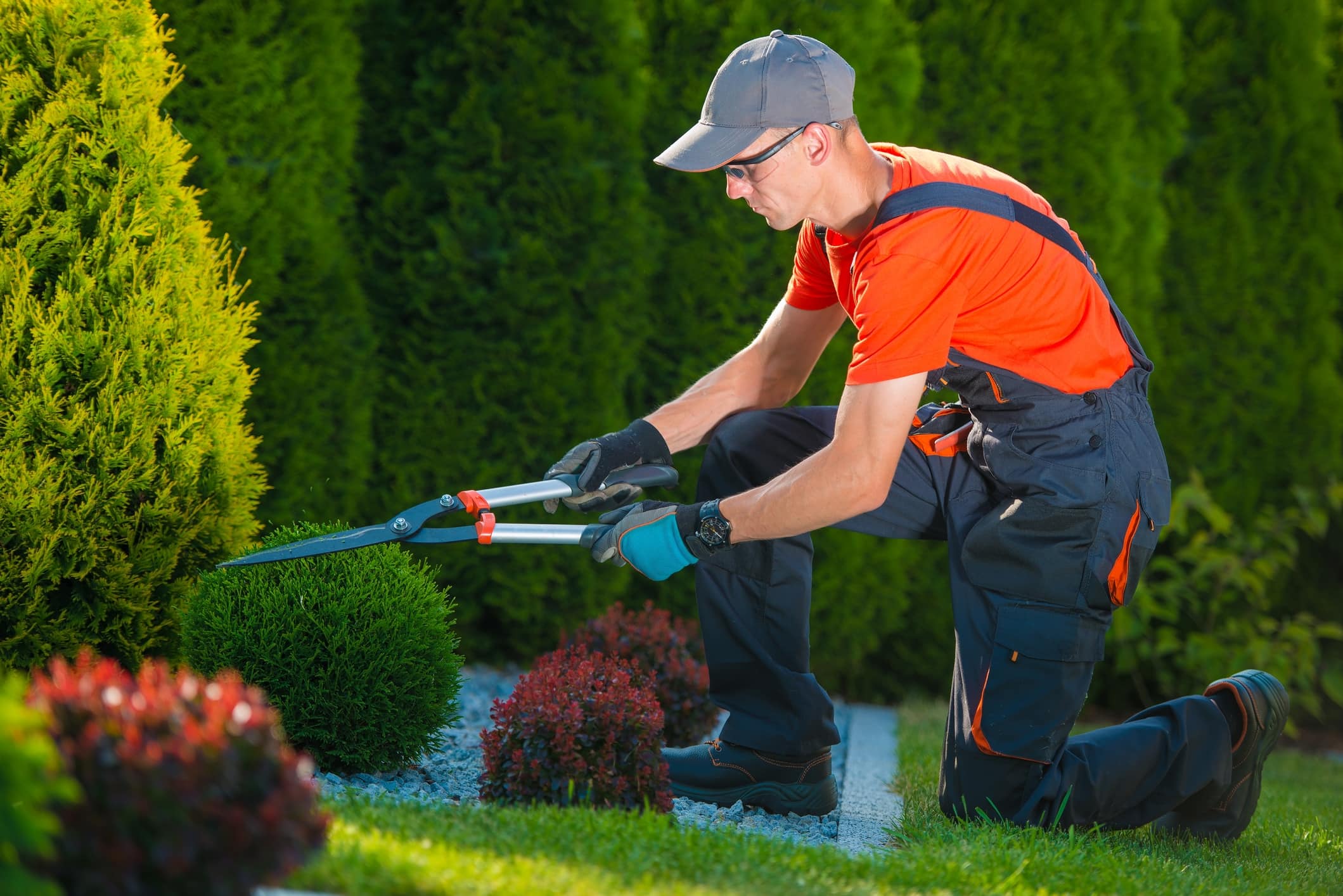
As the season transitions, there seems to be a change in the air. The trees are sprouting green leaves and the birds are singing loudly. It is enough to bring back memories of walking through green meadows and relaxing with friends. However, when you turn to look at your garden, you may be dismayed to find a bleak and weathered thing looking back at you. If you haven’t kept up your garden maintenance during the winter, then it may be looking worse for wear. Not to worry though. Here are just a few tips that will help you bring your garden back to life for the summer.
Equipping yourself right
Before you even begin planning what you are going to do with your garden you need to make sure that you have the right gardening tools. It is pointless coming up with all of your grand ideas only to find that your rake is broken, and your trowel is rusty. Make sure to invest in some reliable equipment that will help revive your garden. Gardening is hard work, but it can be made so much easier with good quality and correct tools.
The Topiary
One way to give your garden an instant fresher look is to trim your topiary and make it look well-managed and maintained. Most topiary grows quite quickly as the weather begins to get warmer. You should make sure that nothing is living in the trees and then you can begin molding them to your desired shape. Make sure that when you are pruning them, you instigate the shape you want them to take otherwise they will grow out of control rather quickly.
The Patio
You likely haven’t been taking care of your patio through the winter months. It will have picked up a lot of dirt and debris. However, this does not mean that you need to replace it. Even if there is a horrible layer of grime and algae building up. All you may need to do is pressure wash and weed it. A pressure washer will take away all that build, and you can just push it toward a drain. Not only will this brighten your garden, but it will make it safer.
Trim the lawn
This is one of the simplest ways to make your garden look well-maintained and organized. However, if you have a large garden, this is no easy task. Once the soil has begun to dry out from all of the wetness of winter then you should be able to mow the grass much easier. It will be quite a shock to see just how much comes off. One tip that gardening experts encourage is to do this in layers. Start with a medium to high setting and then on your next mow move to a lower one.
Reviving your garden
There are lots of different ways to bring your garden back to life, but it is important not to get overwhelmed. Take it in stages. But you should start early in the spring so that in the summer you can make the most of your garden.
Pest Control
8 Best Pest Control Advice When Buying a New Property

When buying a new property, it is important to consider the issue of pest control. Pests such as rodents, termites, ants, and cockroaches can cause significant damage to your property and be a source of discomfort and health risks. To help you ensure that your new property is free of pests, here are 8 best pest control advice to consider:
- Give the property a thorough inspection
Before buying a property, it is crucial to conduct a thorough inspection to identify any existing pest problems. Hire pest experts, like rat control services from Toronto, to inspect the property and provide you with a report.
This report should identify any existing pest infestations, the severity of the infestations, and recommended treatment options. Armed with this information, you can make an informed decision about whether to proceed with the purchase or negotiate a better price to cover the cost of pest control.
- Check the building’s history of pest control
Find out if the property has a history of pest control measures. If pest control was conducted in the past, it is important to determine the effectiveness of these measures and whether they were successful in eradicating pests.
Knowing the history of pest control can help you identify any recurring pest problems that may require ongoing treatment. You can ask your real estate agent from Ajax to provide the history of the property for you.
- Inspect the surrounding area
The surrounding area can have a significant impact on the likelihood of pest infestations. For example, if the property is near a garbage dump or a stagnant body of water, it may attract pests such as rats, cockroaches, and mosquitoes.
Inspect the surrounding area for any potential pest hotspots and take steps to mitigate the risks, such as clearing bushes and debris, covering garbage bins, and draining stagnant water. You can hire pest control experts from Collingwood to thoroughly inspect the property for you.
- Seal up any entry points
Pests can gain access to your property through small cracks, gaps, and holes. Inspect the property for any entry points that pests may use to enter your home and seal them up.
This includes sealing gaps around doors and windows, repairing cracks in walls, and covering vents and chimneys.
- Keep the property clean and clutter-free
Pests thrive in dirty and cluttered environments. To reduce the risk of pest infestations, keep the property clean and clutter-free.
This includes regularly cleaning surfaces, vacuuming floors, and clearing clutter from cupboards and shelves. To avoid attracting pests, store food in airtight containers and regularly dispose of garbage.
- Install pest control devices
Installing pest control devices can help prevent and detect pest infestations. For example, installing fly screens on windows and doors can prevent flies and mosquitoes from entering the property.
Installing rodent traps and bait stations can help control rodent infestations while installing termite bait stations can help detect termite activity.
- Use pest control treatments
If pests are identified during the inspection, it is important to use effective pest control treatments to eradicate them. This may include using insecticides, baits, and traps. It is important to use these treatments safely and according to the manufacturer’s instructions.
- Regularly inspect and maintain the property
Regularly inspecting and maintaining the property can help prevent and detect pest infestations. This includes checking for signs of pest activity, such as droppings and damage to property, and taking appropriate action if pests are detected.
Regular maintenance, such as repairing leaks and cracks in walls, can also help prevent pests from gaining access to the property.
It is crucial to prioritize pest control when buying a property. Identifying and addressing any existing pest problems early on can save you from costly repairs and potential health risks down the line.
Taking the necessary steps to prevent pest infestations will help ensure that your home remains pest-free. When buying a property, be sure to consider pest control as a crucial aspect of the purchase process. Remember, early prevention is important to maintaining a safe and healthy living environment.
General Gardening
5 Tips For Selecting The Right Fountain Pump

Fountains are a beautiful addition to any garden or backyard. They bring a sense of tranquility and ambiance to your outdoor space. One essential component of a fountain is the pump. The right pump can make all the difference in your fountain’s overall aesthetics and functionality. However, with so many options available, choosing the right one can be daunting. That’s why we’ve compiled this guide with five tips to help you select the right fountain pump for your needs. Whether you’re a seasoned fountain owner or a beginner, these tips will help you make an informed decision and ensure your fountain runs smoothly for years. So, let’s dive in and explore the world of fountain pumps!
Tip #1: Determine The Flow Rate And Head Height Of Your Fountain
The first step in selecting the right FountainTechPumps fountain pump is to determine your fountain’s flow rate and head height. The flow rate refers to the amount of water that flows through the pump per minute. The head height refers to the vertical distance between the pump and the top of the fountain. These two factors are critical in determining the size and power of the pump that you need. When choosing a pump, it’s important to find one that can handle your fountain’s flow rate and head height. A pump with too little power will not be able to circulate enough water, while a pump with too much power will waste energy and create too much turbulence. To determine the flow rate and head height of your fountain, measure the fountain basin’s diameter and the fountain’s height. Then, use a fountain pump sizing chart to determine the appropriate pump size. Once you have determined your fountain’s flow rate and head height, you can look for pumps that meet those requirements. Be sure to consider the size and type of your fountain when selecting a pump from our company FountainTechPumps.
Tip #2: Consider The Size And Type Of Your Fountain
The size and type of your fountain will play a significant role in the type of pump you should choose. If you have a small fountain with a simple design, you may only need a small submersible pump. However, you may need a more powerful pump if you have a larger fountain with multiple tiers or waterfalls.
When considering the size and type of your fountain, it’s important to consider the overall design and aesthetics. You want to choose a pump that will function well and complement your fountain’s look. For example, if you have a modern fountain with clean lines and a minimalist design, you may want to choose a pump with a sleek and simple design.
Another factor to consider is the type of water feature you have. Some fountains have a single stream of water, while others have multiple streams or waterfalls. If you have a fountain with multiple streams, you may need a pump with multiple outlets to accommodate each stream.
Tip #3: Choose The Right Material And Durability For The Pump
The material and durability of the pump are also essential factors to consider when selecting a fountain pump. Most pumps are made from either plastic or metal, each with its advantages and disadvantages. Plastic pumps are generally less expensive and lighter in weight, but they may not be as durable as metal pumps. Metal pumps are more durable but also more expensive.
When choosing a pump, it’s important to consider the environment in which it will be used. If your fountain is in an area with harsh weather conditions, such as extreme heat or cold, you may need a more durable pump. Look for pumps designed to handle harsh conditions and made from high-quality materials.
Tip #4: Look For Energy-Efficient Fountain Pump

Another important factor to consider when selecting a fountain pump is energy efficiency. An energy-efficient pump will save you money on your energy bills and reduce your carbon footprint. When shopping for a pump, look for models with a high energy efficiency rating, such as Energy Star-certified pumps.
In addition to choosing an energy-efficient pump, you can reduce energy consumption by using a timer to control when the pump runs. This can help you conserve water and energy while maintaining your fountain’s beauty and functionality.
Tip #5: Check For Additional Features And Maintenance Requirements In Fountain Pump
Finally, when selecting a fountain pump, it’s important to check for any additional features or maintenance requirements. Some pumps may come with built-in filters or UV clarifiers, which can help keep the water in your fountain clean and clear. Other pumps may require more maintenance, such as regular cleaning or replacement of parts.
Before purchasing a pump, read the manufacturer’s instructions and warranty information. This will help you understand maintenance requirements and ensure you can properly care for your pump. Additionally, be sure to choose a pump with a warranty, so you can know that you’re protected if anything goes wrong.
Conclusion
Choosing the right fountain pump is essential for ensuring your fountain looks and functions at its best. By following these five tips, you can select a pump that perfectly fits your needs and environment. Remember to consider the flow rate and head height of your fountain, the size and type of your fountain, the material and durability of the pump, energy efficiency, and any additional features or maintenance requirements. With the right pump, you can enjoy the beauty and tranquility of your fountain for years to come.
General Gardening
Which Are the Еasiest Vegetables to Grow (and How to Grow Them)

Have you ever considered taking up gardening? It is a wonderful activity and hobby for many. It beautifies your surroundings and provides a vast plateau of health benefits. It’s a great way to get some exercise, reduce stress and even boost your vitamin D intake.
In this article, we will show you the many benefits of gardening, what you need to get started and which are the easiest vegetables to grow as a beginner.
The Many Benefits of Gardening and Why It’s Great
Gardening is a fantastic way to get outside, enjoy the fresh air and soak up some sunshine. It is also an excellent form of exercise that can help you burn calories, build strength, increase flexibility and improve cardiovascular health. Not to mention that it can also be a great way to spend time with family and friends or just to enjoy some peaceful time alone.
In addition to the physical health benefits, it has been proven to impact your mental health positively. Numerous studies have shown that spending more time with nature helps you avoid stress and anxiety. It also improves mood and even reduces the risk of dementia.
Taking up gardening indirectly boosts your vitamin D intake. You can bask in the sun’s rays by spending time outside in your garden. Of course, always make sure to wear sun-safe gear, such as a hat and sunglasses. Needless to say, during the more extreme heat, you should also apply sunscreen to avoid burns.
What You Need to Get Started on Your Gardening Journey
If you’re looking to get started in the wonderful world of gardening, there are a few things you’ll need to get yourself in advance:
- Gardening gloves – A good pair of gloves will help protect your hands from cuts, scratches, and dirt. Moreover, nowadays, you can find some pretty fancy in stores that will add some more fun to your hobby.
- Watering can or hose – Water is essential for plants to thrive, so having a watering can or hose to keep them hydrated is a must. You need to consider the size of your garden and the type of plants you want to add before choosing the best option.
- Soil – Good soil is crucial for healthy plants. You can buy it at a gardening store, or you can make your own by using compost. Remember that you need to have healthy soil, so your plants can be healthy too. Additionally, you should check what type of soil the plants you want prefer before buying any.
- Seeds or seedlings – Whether you get them online or from the gardening store, it’s best to start with plants that are easy to grow. A fantastic way is to collect seeds from plants you already have access to, like tomatoes. You can also ask friends and family to give you some of theirs.
- The perfect place – Finally, you’ll need to choose a spot for your garden. The ideal location in your garden has a lot of sunlight. You’ll also need to ensure the area is well-drained so your plants don’t get too wet.
Once you have the essentials, you must decide what type of beds you want for your garden. You need to decide this before the planting process. Of course, there are a few options to consider:
- Pots – if you have limited space in your garden, pots are the ideal solution for you. They come in all shapes and sizes, providing much-needed flexibility for your crops. Many common plants grow well in pots, such as tomatoes, lettuce, beans, peppers and radishes.
- Raised beds – If you have a more spacious garden, then raised beds are ideal for you. They are a very cheap option that makes for a great weed barrier. The downside to raised beds is that they are not easily movable, unlike pots.
- Directly in the soil – This is the traditional method of growing vegetables, which has been used for centuries. To make this method work, you must first till and amend the soil.
- Tilling – Tilling is relatively straightforward nowadays as you can borrow or rent a tiller, making the work much easier. Before you add any soil amendments, consider testing your soil to check what it needs. An advantage of sowing directly in the soil is that it’s ideal for companion planting.
The Easiest Vegetables to Grow
Gardening is supposed to be fun. Yes, we can grow our food, which is part of our survival skills, but it must be fun. Along with that, growing vegetables is not that hard to do. Many vegetables are pretty easy to be grown and require little gardening maintenance. Some of these are:
- Tomatoes – They are an excellent choice for beginners as they are easy to grow and produce a lot of fruit. They thrive in warm weather and look beautiful in your garden. Moreover, there are a lot of different kinds in different colours and flavours you can try to grow.
- Leafy Salad Greens – The easiest varieties to look after indoors are spinach, kale, and arugula. It takes them about 30 days to grow, and they do not require special attention. They prefer warm weather and grow best at 15.5°C. In no time, you will be able to create the perfect salad for your healthy diet.
- Zucchini – This is a fast-growing vegetable that is easy to grow and produces a lot of fruit. They need 6 hours of direct sunlight each day, so choosing a sunny spot is vital.
- Carrots – Carrots are very space-efficient as they don’t require much room to grow. They do, however, require deeper soil than other veggies. Like salad greens, they are
cool-tolerant and thrive at around 60° F(15.5°C).
- Radishes – They are one of the easiest vegetables to grow and can be harvested in as little as four weeks. They do not require much sunlight. What you need to take into consideration if you decide to grow radishes is that you need to leave enough space for their bulbs to grow.
Conclusion
In conclusion, gardening is a great way to get out into the sun, exercise, and improve your overall health and well-being. It doesn’t require a lot of equipment, and you can start with easy-to-grow vegetables. So, grab your gloves, trowel, watering can, soil and seeds, and start your gardening journey today!
Solar Power
How can the effects of climate change be mitigated?

Climate change will affect us all and it’s important to consider how climate change will have wide reaching consequences for generations to come.
This article investigates how the effects of climate change will affect all of us and what measures we can take to mitigate the effects of climate change.
What is climate change mitigation?
Climate change mitigation refers to actions taken to limit climate change by either reducing greenhouse gas emissions or removing those gases from the atmosphere.
Mitigation actions can include using new technologies and renewable energies, making existing equipment more energy efficient, and ensuring carbon sinks continue to absorb carbon and remain intact.
What are some strategies to mitigate climate change?
Climate change mitigation strategies include retrofitting buildings to make them more energy efficient; adopting renewable energy sources like solar, wind, and small hydro; helping cities develop more sustainable transport such as bus rapid transit, electric vehicles, and biofuels; and promoting more sustainable uses of land and forests.
Celestial Green Ventures looks at the benefits and drawbacks for some of the solutions for climate change mitigation and adaptation.
Retrofitting
Retrofitting can help to improve the energy efficiency of homes, reduce fuel bills and create comfortable even temperatures all year round as well as helping to eliminate draughts.
There are plenty of challenges when it comes to retrofitting. Whether it’s the social and income divide, or a lack of funds, policy, trust, and experts to carry out the work, it’s still an uphill struggle to bring retrofitting to the fore, regardless of any climate change commitments.
Renewable Energy
The main benefit of renewable energy is that renewable energy sources will not run out.
Examples of renewable energy sources are solar power, wind power, bioenergy and hydroelectricity. The most important difference between renewables and fossil fuels, is that renewable energy sources provide an infinite source of energy.
Why invest in renewable energy?
Renewable energy is reliable, as opposed to fossil fuels which are always subject to disputes and wars between countries. Renewable energy is also environmentally friendly as they use natural sources for energy generation and can therefore be considered clean.
Although renewable energy technologies can cause some emissions, overall, they are minimal and certainly lower than generating traditional fossil fuels.
There are also the economic benefits too as renewable technologies can create many jobs. This is especially important in some poorer regions. In fact, this is an emerging job market that can empower people in many parts of the world.
Renewable energy can help reduce turmoil in global energy prices, therefore helping to make the global energy market more stable.
What are some of the challenges related to renewable energy?
Unfortunately, most natural forces are strongly dependent on the weather conditions. Therefore, it is advisable to utilise a mix of sustainable power sources, to maximise the production of power across multiple inputs.
Another challenge regarding renewables is the initial cost and investment required for implementing them is high. The initial cost for renewable energy solutions is disproportionately high and sometimes unaffordable, in comparison with how much energy would be produced.
Celestial Green Ventures PLC is extremely aware that renewable energy requires significant resources to harness nature’s energies but this can present numerous challenges to providing the world with cleaner energy.
Sustainable Travel
Transportation is one of the largest contributors to climate change. By choosing sustainable travel methods, you can significantly help in the mitigation of climate change.
There are many benefits to sustainable transportation. Whether it be the benefits to your health, the Earth, the community or even financial benefits, sustainable travel can be better for them all.
Why is sustainable travel good for the planet?
Sustainable travel emits less pollution. Transportation accounts for nearly 24% of greenhouse gas emissions in the United Kingdom.
However, about 82% of those emissions come from personal vehicles. Buses and trains only account for a mere 6% of greenhouse gas emissions, making these modes of transportation much greener than cars and vans. Additionally, sustainable travel also promotes good health because it reduces emissions and air pollution.
A further benefit is that as people choose sustainable transportation over driving themselves, leading to a decrease in congestion and lower emissions.
Celestial Green Ventures PLC recognises that the main disadvantage of implementing a sustainable travel infrastructure to any city or town is the initial cost and disruption.
Biofuels
Fuels that have been extracted from plants and crops are known as biofuels. Of these, the most commonly extracted and used one is Bioethanol or simply Ethanol and Biodiesel.
It is blended with gasoline and can be used as an alternative fuel for your car. Plant-based fuels come from renewable sources, can be grown anywhere and have lower carbon emissions as compared to fossil fuels.
Biofuel is made from renewable resources and relatively less-flammable compared to fossil diesel. It has significantly better lubricating properties.
Some things that biofuels are made out of include:
- Manure
- Waste from crops
- Other farming by-products
- Algae and plants grown specifically for biofuel.
Why are biofuels important in terms of economic security?
Economic security is also an interesting opportunity brought to light due to the increased demand for biofuels. Not every country has large reserves of crude oil.
For these countries that don’t have the natural crude oil resources, importing the oil puts a huge strain on the economy. If more people start shifting towards biofuels, a country can reduce its dependence on fossil fuels.
Some of the disadvantages of using biofuels are that even with all the benefits associated with biofuels, they are quite expensive to produce in the current market. Biofuels also promote the use of fertilisers and consume vast amounts of water to produce the crops.
Growing these crops can also lead to other problems such as monocultures and potential food shortages. With the attractive yield for growing biofuel friendly crops this may sway farmers away from growing other crops we use for day to day food consumption.
What are some land-use strategies for mitigating climate change?
Nature-based solutions are recognised as being able to contribute significantly to the mitigation of climate change.
Land use strategies include sustainable forestry practices, reforestation and avoided deforestation actions.
These actions also help to conserve biodiversity within these areas which is a further positive consequence from implementing these mitigation actions.
What are some policies that will implement change?
The Paris Agreement is an example of policy change to help mitigate climate change and to avoid dangerous climate change.
The agreement sets out the global framework for limiting global warming to well below 2° C and to limit the increase to 1.5° C.
195 countries signed the Paris Agreement in 2015 agreeing to these targets. The expectation was that keeping to the Paris Agreement, the risks and impact of climate change would be significantly reduced.
Conclusion
Celestial Green Ventures recognises that climate change is the most significant problem facing the world.
Global warming is increasing day by day and it cannot be ignored. If we continue the current trajectory, our world will face undesirable consequences.
Celestial Green Ventures PLC is concerned the expected effects of climate change could seriously compromise the ability of the agriculture sectors to feed the world, and severely undermine progress toward eradicating hunger, malnutrition and poverty.
It is now as important as ever to focus on the mitigation of climate change, both individually and collectively.
Home Repair
3 Repair Services You’ll Need
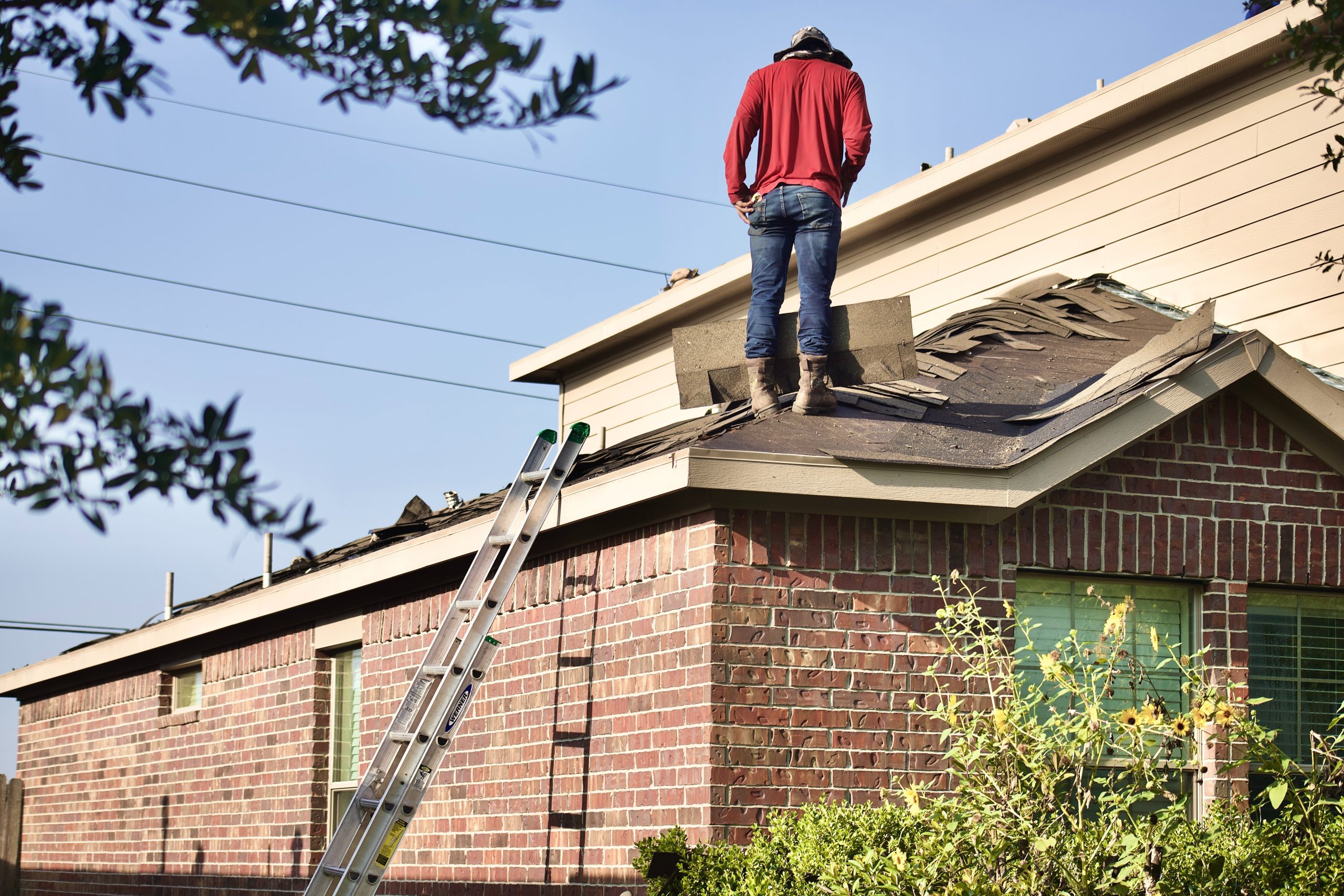
As a homeowner, it can be tough to keep up with the repairs in your house. As soon as you fix one thing, another thing breaks!
Some repairs are more necessary than others. You’ll also find that certain things in your home need repairing quite frequently, while others might only need completing every few years.
Instead of stressing yourself out with trying to complete all of your home repairs by yourself, why not leave it to the professionals? Repair services enable you to relax and ensure that your belongings and structures are fault-free at all times.
Let’s take a closer look at which repair services are worth your investment.
- Accessory Repair Services
Ornaments and accessories can easily break, especially if they’re made out of fragile materials like glass, porcelain, and metal. You might be able to temporarily repair your large accessories, but it’s a lot harder to fix the smaller, more intricate pieces.
You can get repair services for all kinds of ornaments and accessories, including clock repair and antique repair services. These services should be relatively inexpensive and quick. You can have your accessories fixed and back in your hands within a few hours.
- Roof Repair Services
Broken or loose tiles can fall from your roof and cause injuries or even fatalities. That’s why fixing or replacing roof tiles is essential as soon as you notice this issue.
It’s unsafe to attempt roof repairs by yourself if you’re not qualified to do so. Although it’s cheaper to fix broken roof tiles or replace missing ones as a DIY project, it’s safer and easier to hire a professional to carry out the hefty task of repairing a roof.
Roofing professionals will fix and replace your tiles within a day or two, depending on how many are broken or missing. They might also be able to offer additional services to prolong the lifespan of your new tiles.
- Kitchen Appliance Repairs
You probably use your kitchen appliances every day of the year, and they can quickly wear away.
Over time, they could start to lose their energy efficiency, which increases your energy consumption and your bills. They can also become faulty and create a health and safety hazard that puts you and your family at risk.
Common signs of kitchen appliance wear and tear include:
- The device overheats when you use it
- You hear strange noises when the device is operating
- Your food is spoiling in your fridge or freezer
- The plug sparking when you plug your appliance into the socket
If you notice any of the above signs, get in touch with a nearby appliance repair company or contact your manufacturer to see if they can complete the repair under your warranty. Appliance repair services ensure that your kitchen gadgets work efficiently and are completely safe for daily usage.
Home Care & Living
Maximizing Your Living Space: Why Junk Removal Services are a Must

As time goes by, it’s easy for things to accumulate in our homes, taking up valuable living space and creating clutter that can be both physically and mentally challenging to deal with. Limited living space and clutter can make even the most spacious of homes feel cramped and uncomfortable. However, using a professional junk removal service, you can take control of your living space and create a more comfortable and functional home. In this article, we’ll explore the benefits of maximizing your living space, the challenges of clutter, how junk removal services can help, and how to get started.
The Benefits of Maximizing Your Living Space
More space in our homes makes us feel less cramped and more comfortable. But maximizing your living space can provide even more benefits than physical comfort. When surrounded by clutter, it’s hard to focus and be productive. But when our living space is organized and functional, we can better focus on the tasks, reducing stress and anxiety.
The Challenges of Clutter
Clutter can create physical challenges in our living space, including tripping hazards and difficulty moving around. It can also create emotional challenges, like stress, anxiety, and embarrassment. For many people, clutter can be a significant source of stress, leading to feelings of overwhelm and frustrated.
How Junk Removal Services Can Help
Junk removal services can help alleviate clutter challenges by providing professional sorting and removing unwanted items. These services handle all sizes, including heavy and bulky items like furniture, appliances, and electronics. Plus, they can dispose of your unwanted items in an eco-friendly manner, helping to reduce your environmental impact.
How to Get Started
If you’re ready to take control of your living space, the first step is to assess your home and identify problem areas. This might include rooms that feel cramped or cluttered or areas that are difficult to move around. Once you’ve identified these problem areas, you can sort your belongings into categories, making it easier to decide what to keep and eliminate.
Next, contact a reputable junk removal service to get started. A good junk removal service will provide a consultation and estimate so you know what to expect before they begin the removal process. They’ll also provide a final clean-up and inspection, ensuring your home is clean and clutter-free.
The Junk Removal Process
When you hire a junk removal service, the process typically begins with a consultation and estimate. During this phase, the service will evaluate your belongings and provide a quote for the removal process. Once you’ve agreed to the estimate, they’ll begin the removal process, carefully sorting and removing your unwanted items.
After removing all your unwanted items, the junk removal service will provide a final clean-up and inspection, ensuring your home is left clean and clutter-free.
Maintaining a Clutter-Free Living Space
Developing organizational systems that work for you is important to maintain a clutter-free living space. This might include using storage containers, labeling items, or designating specific areas for different items. Additionally, it’s important to regularly go through your belongings and remove anything that is no longer useful or necessary. You can prevent clutter from building up again by consistently purging unwanted items.
Finally, it’s important to practice mindful consumption habits, only bringing new items into your home that you truly need or will add value to your life. Doing so can avoid unnecessary clutter and create a more peaceful and enjoyable living environment for yourself and your family.
Conclusion
Junk removal services can be a valuable investment for anyone looking to maximize their living space and create a clutter-free home. With the help of professional services and a commitment to the ongoing organization and clutter prevention, you can enjoy the benefits of a spacious and functional living environment. Contact a reputable junk removal service today to start your journey toward a clutter-free home.
Pest Control
Why Are Mosquitoes So Dangerous?

You might be surprised to hear that mosquitoes are the deadliest animal in the world. Yes, you read that right! Those pesky flies cause over 725,000 deaths every year, most of which are due to malaria.
Most of us know to avoid mosquitoes wherever possible, and it’s common knowledge that they carry a parasite called malaria. However, these pesky flies can carry much more than a single parasite. They also transmit viral diseases, including Zika, West Nile, yellow fever, and dengue.
In countries where mosquitoes are prevalent, it’s not uncommon to enter a home and see insect repellents or mosquito fogging systems, especially during summer where bugs seem to be everywhere. Many people also invest in professional mosquito fogging services to keep their homes pest-free.
Let’s take a closer look at what happens when a mosquito bites you and how these pesky flies can transmit diseases to humans.
What Happens When a Mosquito Bites You?
Learning about how mosquitoes transmit diseases can make it easier for you to keep yourself and your loved ones safe.
There are three different types of mosquitoes (Anopheles, Aedes, and Culex) that exist across the world, and each one carries different diseases. It’s only female mosquitoes that bite humans and such blood because they need this blood to supply nutrients for their eggs so that they can propagate.
A female mosquito can sense when a human is nearby by detecting the infrared (heat) waves that we emit from our skin as warm blood moves through our arteries and veins. They can also pick up on unique human scents.
When a mosquito punctures your skin with two tubes, one of which draws blood and the other of which injects an enzyme into your blood. This enzyme contains anti-coagulant proteins that prevent your blood from clotting, so they can enjoy a continuous flow of blood into their tube until they’re full.
The anti-coagulant proteins that a female mosquito injects into your skin can cause a small allergic reaction that leads to an itchy, red bite.
How Do Mosquitoes Spread Diseases?
It’s not just a raised, itchy bump that mosquitoes leave after they bite you; they might also infect you with a parasite or virus.
You can never be sure whether a mosquito is infected when it bites you, which is why it’s essential that you protect yourself from them as much as possible.
When an infected female mosquito injects its anti-coagulant proteins into your bloodstream through its saliva, it can also deposit parasites or viral particles. Inside your body, the parasite or virus can multiply and grow and may cause serious side effects or even death.
The most common diseases that a mosquito transmits include:
- Chikungunya
- Dengue Fever
- Malaria
- West Nile Virus
- Yellow Fever
- Zika Virus
In the United States, West Nile Virus is the most common virus spread by mosquitoes.
How Do You Stop a Mosquito Bite from Itching?
Usually, mosquito bites don’t require any treatment, and they will resolve by themselves after a few weeks. However, if you’re experiencing excessive itching, swelling around the bite, or additional symptoms, like ongoing headaches, you’ll need to take action.
It’s best to avoid itching the bite as much as possible to prevent breaking the skin and risking infection. You might benefit from applying topical creams, which you can get from your healthcare provider, to soothe the swollen area around the bite.
Keep the bite area clean by washing it with soap and warm water each day. You might also want to cover it with a plaster or bandage to reduce the risk of infection and stop you from scratching the area.
Some of the recommended treatments for mosquito bites include:
- Aloe vera
- Antihistamines
- Chamomile tea
- Honey
- Hydrocortisone
- Oatmeal
How to Protect Yourself From Mosquitoes and Mosquito-Borne Diseases
Taking the right steps to prevent yourself from getting bitten by mosquitoes will reduce your risk of nasty bites and potential diseases. Here are some great things that you can do to protect yourself from those pesky flies:
- Avoid traveling to areas of the world where mosquitoes are prevalent (usually countries around the equator where the weather is humid)
- Keep your skin covered up as much as possible
- Wear thick clothing so mosquitoes can’t bite through it
- Surround yourself with protective netting when sleeping
- Use protective screens over doors and windows
- Invest in a mosquito fogger to rid your garden of these pests
- Avoid going outside during dusk and dawn when mosquitoes are out in full force
General Gardening
Why Should You Consider Planting Spring-Planted Bulbs in Your Garden?
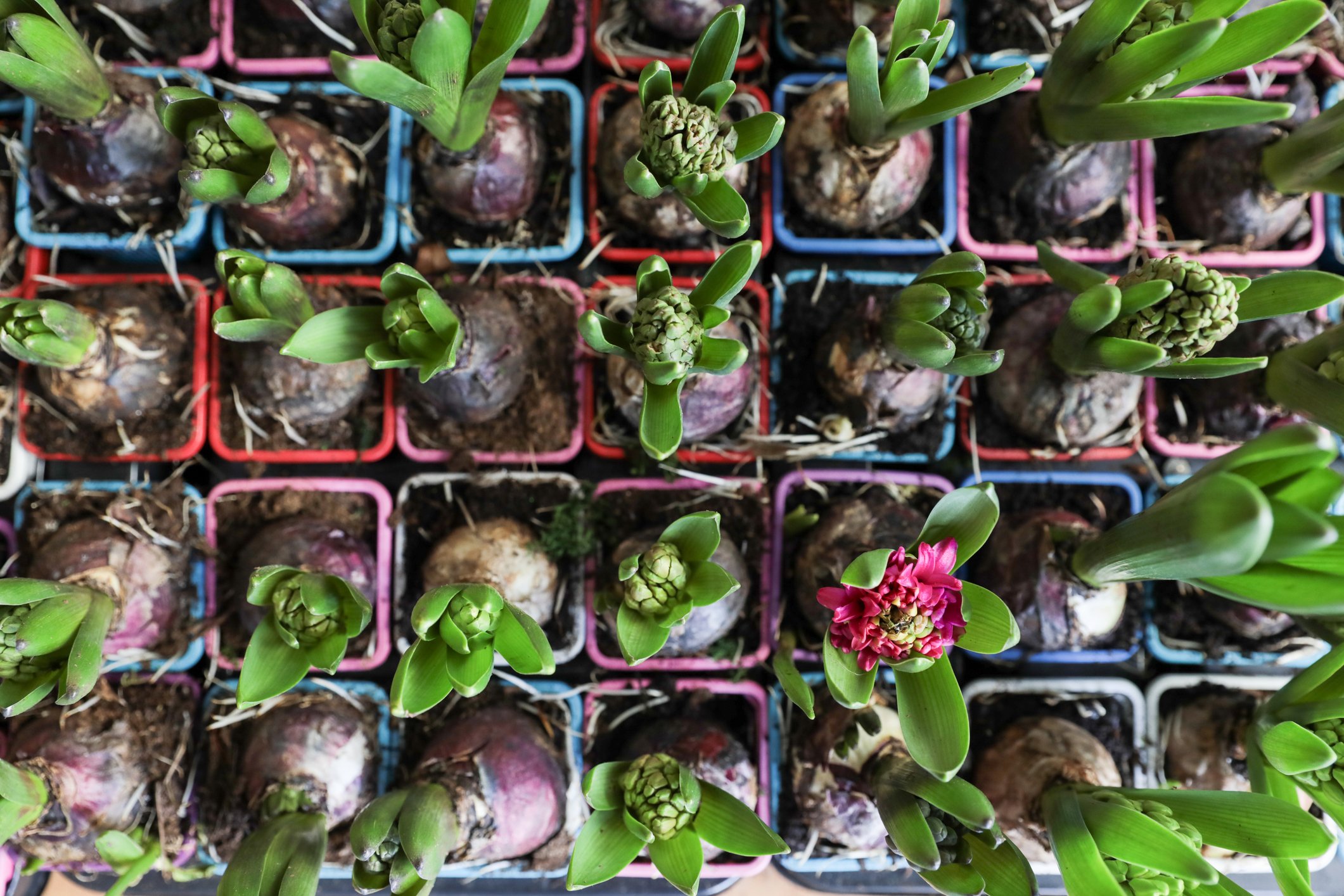
Spring is a great time to plant bulbs in your garden! Not only do they add a pop of color, but they also provide a number of benefits. In this blog post, we’ll outline the benefits of planting spring planted bulbs in your garden. We’ll discuss what bulbs are, what flowers come from bulbs, how to plant them, when to plant them, and how to care for them. So, go ahead and plant some spring-planted bulbs in your garden this spring!
What Are Spring Bulbs?
Do you love the beauty and colors of springtime? If so, then you should consider planting spring bulbs in your garden. Spring bulbs are a popular type of flower that is planted in the springtime. They come in many different colors and are known for their beautiful blooms. Not only do they add beauty to your garden, but they are also easy to care for.
When selecting spring bulbs for your garden, it’s important to choose ones that look good together and have a variety of colors. Some of the most popular types of spring bulbs include tulips (a yellow bulb), daffodils (a blue or purple bulb), crocuses (a white or multicolored bulb), and hyacinths (an orange or yellow flower). When selecting which ones to plant, it’s best to choose a mixture so that your garden looks colorful throughout the year.
What Flowers Come from Spring-Planted Bulbs?
There’s no better way to add color and brightness to your garden than by planting bulbs. Not only are they easy to care for, but they also come back year after year. When choosing which bulbs to plant in your garden, it’s important to consider what flowers you want them to produce. Some common bulbs you can plant include tulips, daffodils, hyacinths, and crocuses. All these bulbs will produce beautiful flowers that will add a touch of color and brightness to your garden. You can also choose to plant other types of bulbs, such as grape hyacinths or lily-of-the-valley bulbs. These plants produce smaller flowers but are very fragrant.
The Advantages of Planting Spring-Planted Bulbs
Do you love the look of brightly colored flowers in your garden, but you don’t have the time or energy to tend to them? Planting spring-planted bulbs is a great way to add color and interest to your garden without any of the work. Bulbs are easy to care for and require very little maintenance—all you need is some water and sunshine. Plus, bulbs can be planted in a wide variety of locations, including in pots and containers. This makes them perfect for adding interest to any area of your garden.
Another advantage of planting bulbs is that they are relatively inexpensive. You can buy a large container of bulbs for just a few dollars, and they will last for many years with proper care. Plus, bulb plants are relatively easy to transplant if you ever want to move them somewhere else in your garden. Last but not least, planting bulbs is a great way to add color and brightness to your garden all year long!
How to Plant Spring Bulbs?
Color is one of the most important factors when it comes to garden design, and spring-planted bulbs are a great way to add some extra color to your landscape. Not only are they beautiful on their own, but they also provide a wonderful contrast against the cooler colors that will be in season during the summer. Spring-planted bulbs are easy to plant and care for, and there are a variety of different varieties available that will perfectly complement your garden.
When Should You Plant Spring Bulbs?
With the arrival of spring, it’s time to start thinking about planting bulbs in your garden. There are a variety of beautiful bulbs that can be planted in the spring, and they’re easy to care for, making them a great choice for someone who wants to add color and interest to their yard without much effort.
Consider the season when deciding which bulb to plant in your garden. Spring-planted bulbs will typically bloom earlier than bulbs planted in the fall, so make sure you choose the right one for your garden. There are a variety of different types of spring-planted bulbs to choose from, so find one that will fit well into your landscaping. With a little planning and effort, you can have a beautiful garden that blooms all year.
How to Care for Spring-Planted Bulbs?
Spring is a wonderful time to plant bulbs in your garden. Here are a few tips on how to get started:
First, be sure to research which types of bulbs work best for your garden and climate. Some popular choices include tulips, daffodils, hyacinths, and crocuses. Once you’ve selected the bulbs you want to buy, purchase them in advance so that you have plenty of time to plant them in the ground or in pots.
Once you have your bulbs home, it’s time to take care of them! Make sure that their soil is moist but not soggy – this is crucial for bulb growth. Water them regularly during dry weather, and be sure not to overwater them, as this can damage their roots. When the flowers start blooming, cut the stems close to the ground so that the bulb will continue flowering indoors. After the flowers fade away (usually around mid-March), allow the foliage (orchids tend not to shed their leaves) to die back naturally. Enjoy your beautiful spring-planted bulbs!
In Short
Spring bulbs are a great way to add color and life to your garden. Planting these bulbs will provide you with beautiful flowers throughout the spring and summer. Bulbs are easy to care for and can be planted in almost any type of soil. Be sure to plant your bulbs in the fall so that they have time to establish themselves before the first frost. With a little love and care, your spring bulbs will thrive and bring you enjoyment for years to come.
Landscaping
Green Thanks: The Perfect Succulent Teacher Gift
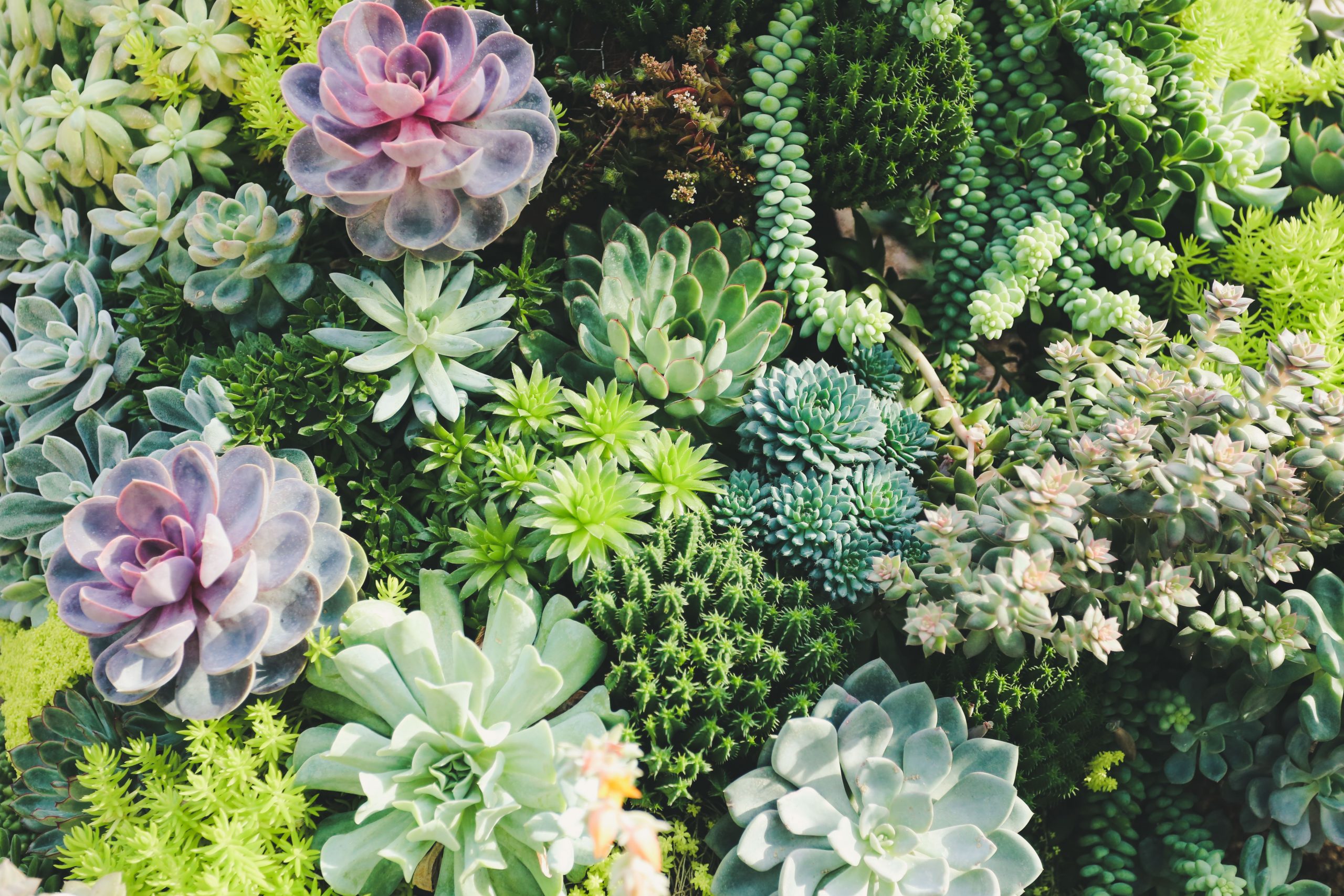
Teachers play a vital role in shaping the next generation’s minds, and it’s essential to show them an appreciation for their hard work and dedication. One of the best ways to do this is by giving them a meaningful and thoughtful gift. A succulent is perfect for a teacher’s gift because it represents growth, resilience, and a love for nature.
Succulents are low-maintenance plant that requires little care, making them an ideal gift for busy teachers. They are also easy to grow and come in various shapes, sizes, and colors, so you can choose one that suits the recipient’s taste and style.
Moreover, succulents can help create a relaxing and peaceful environment in the classroom, which is beneficial for both teachers and students. They can also be used as educational tools to teach students about botany and the environment.
Choose a planter matching the recipient’s decor or a personalized planter designed explicitly for assistance to make the gift even more personal. You could also include a handwritten note or card to express your appreciation and gratitude.
It’s also important to consider the recipient’s level of gardening experience when choosing a succulent teacher gift. For example, for those new to gardening, you could opt for a beginner-friendly succulent that is easy to care for and requires minimal attention. On the other hand, for more experienced gardeners, you could choose a more challenging variety that will provide a sense of purpose and accomplishment.
Finally, remember to include care instructions with the gift. A succulent care guide or a simple set of instructions can help ensure that the plant thrives and provides comfort and joy for years to come.
Another advantage of giving a succulent as a teacher’s gift is that it’s a sustainable and eco-friendly option. In today’s world, choosing environmentally conscious gifts that don’t harm the planet is becoming increasingly important. Succulents are grown in minimal soil and water, making them a low-impact choice.
Additionally, succulents can also serve as a reminder of the teacher’s impact on the student’s life. As the plant grows and thrives, it can symbolize the growth and positive impact the teacher has had on the student. Furthermore, as the succulent grows, it becomes a constant reminder of the teacher and the memories shared.
Furthermore, succulents can be a great way to bring a touch of nature into the classroom. A well-maintained succulent can not only improve the aesthetic of the school, but it can also contribute to the overall mood and atmosphere of the room. A green, thriving plant can make a big difference in the mood and well-being of students and teachers alike.
Another aspect to consider when choosing a succulent teacher gift is its versatility. Succulents can be used in various settings, from the classroom to the home, making them a flexible and practical choice. For example, they can decorate a desk, a window sill, or a living room.
Finally, succulents make great gifts for any occasion, not just for teacher appreciation. Whether it’s a holiday gift, an end-of-year present, or a farewell gift, succulents are a versatile and practical choice that will surely bring a smile to the recipient’s face.
Moreover, when giving a succulent teacher gift, you can also personalize it to make it more meaningful. For example, you can write a heartfelt note or even attach a small tag with a message to the plant. You can also choose a specific type of succulent with special significance or meaning. For example, the jade plant, known as the “money tree,” is said to bring good luck and prosperity. On the other hand, the aloe vera plant is known for its healing properties, making it an excellent gift for a teacher who has positively impacted your life.
Another idea is to include a small planter or pot with the succulent or even decorate the pot with colorful paints, markers, or stickers. This not only makes the gift more appealing but also adds a personal touch to the gift. You can also include care instructions with the plant, so the teacher knows how to care for it properly.
Additionally, you can give a group gift, where each student contributes a succulent or some money towards the present. This shows the teacher how much the class appreciates them and creates a fun and collaborative experience for the students.
Finally, succulent teacher gifts can also be given with other presents. For example, you could give a gift card, a bouquet, or a box of chocolates along with the succulent. This shows the teacher how much they are appreciated and gives them a range of gifts to choose from, making the experience even more enjoyable.
Conclusion
Succulent teacher gifts are an excellent way to show appreciation and gratitude to the teachers who have positively impacted your life. They are a sustainable, personalizable, and versatile gift that can be given on any occasion and is sure to bring joy and comfort to the recipient. So, consider giving a succulent teacher gift to show your gratitude and appreciation and help positively impact their life.
Home Care & Living
Bring The Outdoors Indoors With These Top Tips

With current décor fashions trending towards vibrant, playful, and trendy, bold colors and the romanticized outdoor lifestyle are the hot topic.
As Gen Z are decorating their own apartments and Millennials are rethinking the ideas they had in their twenties, décors are changing. Evolving trends are pointing towards a sheer love of life. The outdoor lifestyle, the cottage-core décor, and growing your own plants, have all become focuses of students and call center workers everywhere.
Décor Tips for an Outdoor/Indoor Apartment
If you’d like to jump on the outdoor/indoor lifestyle trend, then here is sound advice on how to create it. Whether you live in a one bedroom or a ten bedroom, here is how you create that lifestyle without living in an RV.
Elevate your outdoor/indoor apartment with strategic decor tips that blur the boundaries between spaces, creating a harmonious living environment. Introduce versatile furnishings like a modular sofa, and if you’re wondering how to keep a modular sofa together, explore its interlocking mechanisms or consider additional securing methods to ensure a seamless and inviting seating arrangement.
Décor Tip #1: Go Green
This year looks set to bring the splash of bright green back into our lives – and our apartments. There are shades of green that never go out of fashion, such as emerald and teal. This season, you are right on trend if you explore the depths and layers of this often overlooked color. The idea of this style focuses on last years’ sudden surge in popularity for plants as décor. Accentuate those plans by choosing from shades of green couches, cushions, curtains, and focus pieces.
Décor Tip #2: Add the Plants
Once you have your décor suitably green, bring in the plants and let them add further depth to your interior design. Easy to maintain houseplants that require minimal water mixed with cacti and a few colors are all you need to create a wonderful, jungle-like feeling. You could hide animal ornaments throughout the room to help entertain any kids in the household.
Décor Tip #3: Upcycle Other Fabrics
Adding upcycled soft furnishings to a room is an idyllic way to decorate without actually doing much. A new set of cushion covers sewed from an old blanket makes as big an impact as moving the furniture around. Stick to one color with multiple textures, but don’t mix too many patterns. You should create a layered feel to the room which increases your sense of depth and space when you walk into it. You have to carefully curate these layered fabrics and slightly different shades to avoid making the room feel too busy.
Décor Tip #4: Look for Connections Between Spaces
A fantastic way to blend your outdoor time with your indoor time is to take the space in your home where the two connect and swap elements around. Try a weatherproof couch close to your garden gate or door. Add one or two key pieces of retro furniture and some ivy or honeysuckle to engulf them. Use trellis panels on your walls and fences to blend the areas together. Finish with all-glass doors and addition plants around your interior hallway.
Further Advice on Making Your Home Au Natural
There are a dozen other little ways that you can make your house feel less constrictive. Look at replacing plastics with sustainable materials. Think about tote bags made from hemp, bamboo products and plain old wood. Natural helps keep the tone of the room outdoor themed. Even if you don’t like the color green.
General Gardening
5 Tips to Grow the Perfect Garden

Everyone wants a perfect garden, but not everyone knows how to get one. There are a lot of variables to consider when growing a garden, and it can be overwhelming for even the most experienced gardener. With these five tips, you’ll be well on your way to having the perfect garden in no time.
Start With Good Soil
A healthy garden starts with good soil. Unfortunately, not everyone is blessed with naturally fertile ground. Good soil will provide the nutrients your plants need to grow strong and healthy. You’ll want to ensure it has a good mix of minerals and organic matter.
You can test your soil to see what nutrients it’s lacking and then add in any needed amendments. Hiring an experienced Environmental Site Assessment (ESA) team to analyze your soil quality is also a good idea. They will ensure that you comply with local, state, or federal regulations. Soil that is free of contamination and adequately balanced will give you the best chance of success and protect you from potential legal issues.
Water Your Plants Regularly
Proper watering is essential for any healthy garden – too much or too little water can be disastrous. Garden plumbing Irrigation systems are especially helpful in maintaining consistent and even moisture levels throughout your garden. You can also install a rainwater harvesting system to help you save money on water bills and conserve more water for your plants.
Choose Plants That Are Suitable for Your Climate
Before you start planting, make sure you research what plants will thrive best in your geographical area. Not all plants can withstand the same weather patterns and temperature variations, so it is crucial to choose wisely. You can check with your local garden center or consult an expert to determine which plants will work best.
Protect Your Plants From Pests
Insects and other pests can wreak havoc on even the healthiest of gardens if left unchecked. Whether it’s rabbits munching on your vegetables or aphids sucking the life out of your roses, pests can quickly ruin a healthy garden. However, you can take a few simple steps to protect your plants from these pesky invaders.
One of the best ways to keep pests at bay is to choose naturally resistant plants. For example, marigolds repel many common garden pests, including rabbits and deer. Another effective method is to create a barrier around your plants using netting or chicken wire. This will block pests from being able to reach your plants, and it can also help to deter birds from eating your fruits and vegetables.
Have the Right Tools
You need the right tools in order to grow a perfect garden. From spades and hoes to rakes and trowels, having the right tool for the job can make all the difference in your garden’s appearance.
You only need a few basic skills to get started, but if you’re serious about getting professional-looking results, investing in higher-quality tools is worth the extra cost. You’ll also want to ensure you have a good supply of gloves, kneeling pads, and other personal protective equipment to keep you comfortable while you work. With the right tools, you’ll be on your way to growing the perfect garden in no time.
Growing a perfect garden takes dedication, knowledge, and the right tools. By following these tips, you can give your plants the best chance of success and create a beautiful garden that you can be proud of. With patience and practice, soon, you’ll have a lush landscape that will bring joy to you and your family for years to come.
Home Care & Living
How to Build a Strong Relationship: A Few Useful Tips

Building a relationship is often thought of as a way to get more from your partner. But, in reality, it’s more about building yourself and getting ready for a strong and serious relationship. Here are some tips for improving your love life.
Establish a life of your own
Let us start by saying that no one is doomed to have a bad relationship because they don’t have a life of their own. But if you’re in a relationship with one of the ukrainian women for marriage and want that relationship to last, building a life outside of it is vital.
You don’t have to be totally independent—you’re not going to move out and live alone suddenly—but it’s important to maintain an identity outside of your relationship, especially early on when the novelty of being in love is still fresh. Your partner should support this goal; if he or she doesn’t, that might signal that this person isn’t right for you in the long term.
This means having friends and family who love and support you (and vice versa) and hobbies that are part of your identity. Attend events where people know you as a person, not someone else’s partner.
Be appreciative
One simple way to show your significant other that you care is by being appreciative. It’s easy to take things for granted, but if you want to build a strong relationship, be sure to pay attention to the little things and be grateful for them.
There are plenty of examples of things that deserve appreciation:
- a partner who does the dishes;
- someone who makes dinner for you after a hard day at work;
- or even just having someone listen when you need it most.
Being appreciative of these things is an easy way to show someone how much you value them in your life.
Learn to listen carefully
It’s more than just hearing the words. Listening is a skill that can be learned. Try to pay attention to how the other person speaks, their tone and speed of speech, as well as their body language. If they seem agitated or confused, ask them questions so you can better understand what they are trying to say.
It’s not always easy to listen to someone and hear them, especially when you have something else on your mind, but if you want your relationship to grow stronger, stay focused on what they’re saying rather than what you think or feel about it at first glance.
Show respect
Respect is the foundation of a relationship. To build a strong bond with someone, it’s crucial to acknowledge their feelings and opinions as valid. If you disagree with them or don’t like what they’re saying, keep your thoughts to yourself until they’ve finished speaking. Also, avoid interrupting them in the middle of a sentence or making fun of them for things like their accent or speaking style. Instead, be polite and understanding when they’re talking to let them know that their thoughts have value in your eyes—not just yours, but anyone else who’s listening too!
If possible, try not to criticize them either; while constructive criticism can be helpful if done correctly (i.e., at an appropriate time and in the proper manner), most people will just get defensive if criticized right off the bat. So, try presenting any concerns you have about something first before bringing up any faults that could potentially cause conflict later on down the road!
Conclusion
A relationship is not only about flowers and gifts, compliments and dates, intimacy, and living together. A strong union is built on shared values, respect, and mutual support. So, one of the approaches to building a relationship with a partner is to build a strong friendship with them.
Developing a lasting and fulfilling relationship is like building anything else: it takes time and effort. But the payoff is well worth it! A strong relationship can provide joy, stability, and meaning in your life. We hope that the above recommendations have shed light on this matter and that you are going to be happy as a couple! Good luck!
General Gardening
Preserve The Taste of Summer: A Guide to Harvesting and Storing Tomatoes
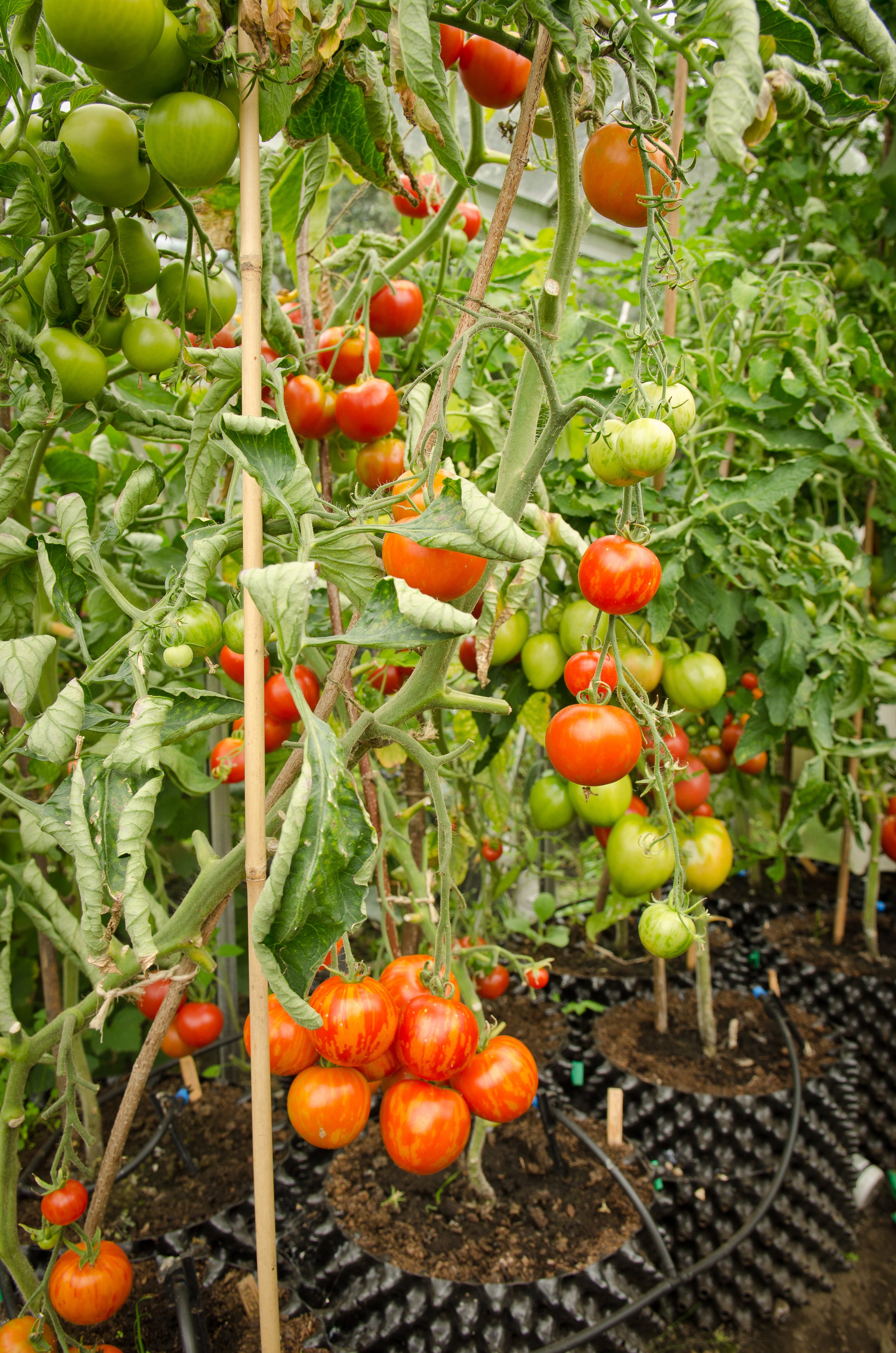
If you’ve ever tasted a perfectly ripe, juicy tomato right off the vine, you know there is nothing quite like it. Tomatoes are a summertime staple and bring so much flavor to the table. To keep your tomatoes as fresh and delicious as the day they were harvested, it’s important to understand the best techniques for harvesting and storing them.
In this post, we will share tips on how to harvest tomatoes like a pro and store them the right way so that you can enjoy the taste of summer all year long.
- The Perfect Time to Harvest
Harvesting tomatoes at the right time is essential for maintaining their flavor and freshness. Tomatoes are ready to be harvested when they have reached a deep red color, but there are other signs to look out for. If the tomato has softened slightly and the stem begins to crack, this indicates that it is time to harvest.
Make sure to also check for any discoloration, bruising, or spots; if these are present, the tomato is not suitable for harvesting. When you harvest tomatoes, make sure to use a gentle touch, as they can easily be damaged.
It is important to pick them at their peak ripeness. This will ensure that the flavor of the tomatoes is retained and that they remain fresh for longer periods of time. Consider picking several tomatoes over the course of a few days, so that you can enjoy them in their optimal condition.
- Gently Remove the Fruit
Harvesting tomatoes is a delicate process that requires care to ensure the tomatoes stay fresh and delicious. To start, identify which tomatoes are ripe and ready for harvesting. When you set out to harvest tomatoes, look for tomatoes that have a deep red color and are slightly soft to the touch.
Once you’ve identified which tomatoes to harvest, handle them with care to avoid bruising. Gently grasp the tomato in your hand, and rotate it back and forth while pulling lightly until it comes away from the vine. Avoid pulling or jerking the tomato, as this could cause damage to both the fruit and the vine.
When harvesting tomatoes, use both hands whenever possible to help protect the fruit and make sure they don’t slip out of your grip. Placing the tomato in a shallow basket or a bucket is also helpful to prevent any accidental drops.
- Rinse Them Off
Once you have harvested your tomatoes, you will need to rinse them off. This is an important step in preserving the freshness and taste of your tomatoes. Start by filling a large bowl with cool water.
Place your tomatoes in the bowl and let them soak for a few minutes. This will help remove any dirt or debris that may be stuck to the tomatoes and ensure that your tomatoes are free from bacteria or other contaminants that could affect their taste or safety.
- Let Them Air Dry
Once you have harvested the tomatoes, it’s important to let them air dry. Place them in a single layer on a countertop or cutting board and allow them to sit for one to two days before storing them. This will help reduce any excess moisture and will prevent mold from developing.
If your tomatoes are a bit too ripe or soft, you can cut them up and turn them into sauces, salsas, and other delicious recipes!
The Best Way to Store Tomatoes
If you own a garden or have been to one where tomatoes were grown, you would understand how satisfying and fun it is to harvest tomatoes. Harvesting tomatoes can be a rewarding experience, and one of the best ways to ensure that you get the most flavor out of your tomatoes is to harvest them properly.
Once you have harvested your tomatoes, it’s time to move on to the next step: storing them.
Storing tomatoes in the right conditions is essential for maintaining their flavor and texture. To do this, tomatoes should be kept at room temperature, out of direct sunlight, and on a flat surface in a single layer. The best place to store them is in a dark, dry location, such as a pantry or cupboard.
Do not place them in the refrigerator, as this will cause them to lose their flavor and texture. For optimal freshness, store tomatoes in small batches and check them every few days for signs of spoilage.
While you are at it, if you notice any soft spots, mold, or other signs of decay, discard those tomatoes immediately.
Conclusion
Harvesting tomatoes is one of the joys of summer. When done right, you can ensure that your tomatoes stay fresh and flavorful for longer. Now that you know how to properly harvest tomatoes and store them, you can enjoy the taste of summer all year round!
General Gardening
5 Ways To Keep Garden Tools In Top Condition
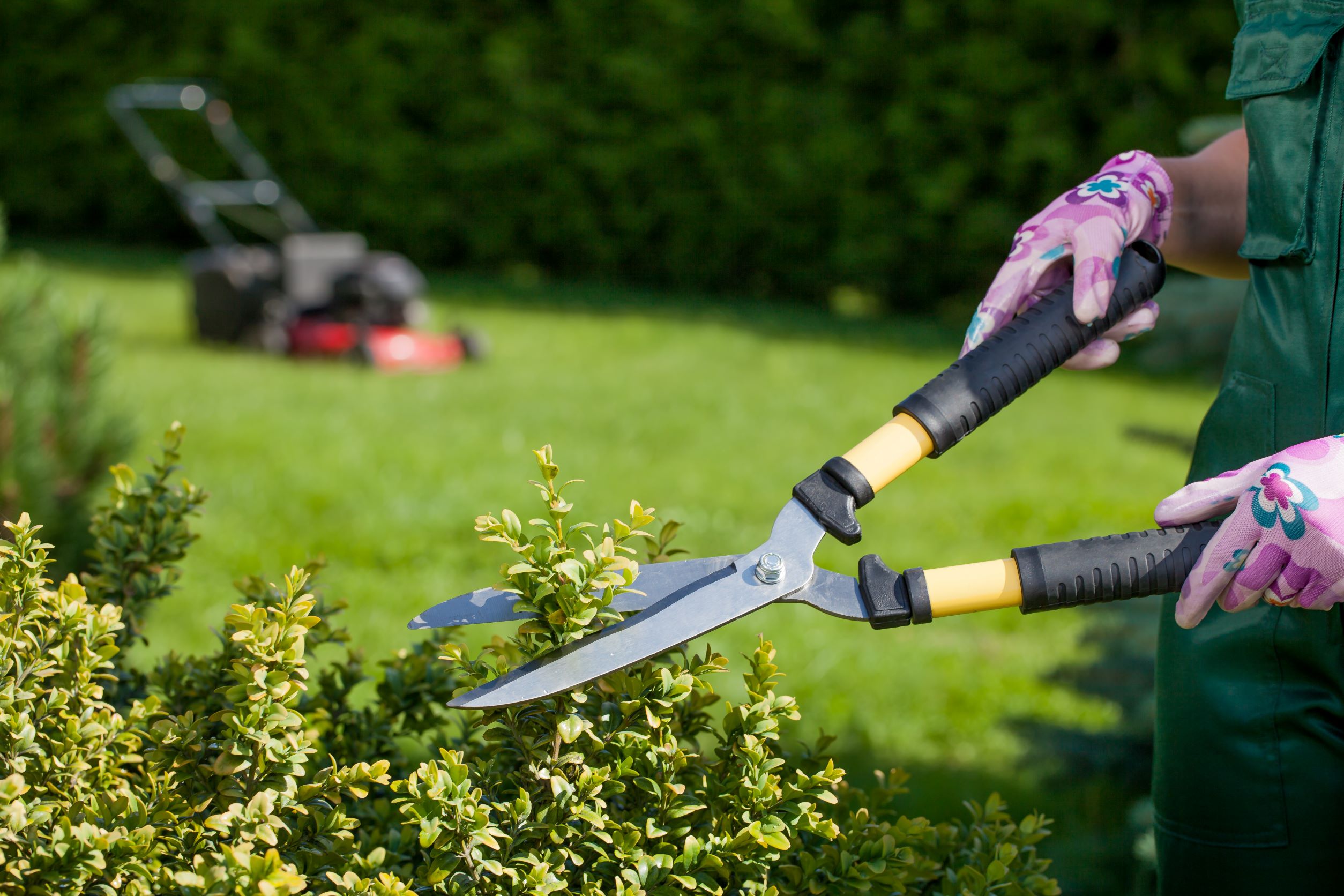
Garden tools are essential tools any homeowner should have. These tools are necessary if you have a yard or a garden at home. Some people genuinely enjoy tending their gardens. But only some appreciate the art of gardening. Nevertheless, if you’re an avid gardener, you probably know the importance of maintaining your garden tools.
Maintenance is essential if you want your equipment to last as long as possible. It isn’t something that’s particularly taxing with garden tools. However, discipline is crucial to staying on top of maintenance. While you should aim to buy quality tools because they’re usually durable, understand that you still need to maintain them properly.
Different kinds of maintenance are required for garden equipment. Most tools must be cleaned, sharpened, or lubricated to remain in good condition. It’s fair to say that staying on top of maintenance isn’t always easy. It is nonetheless significant. Fret not. Below is a guide to help you keep your garden tools in top condition.
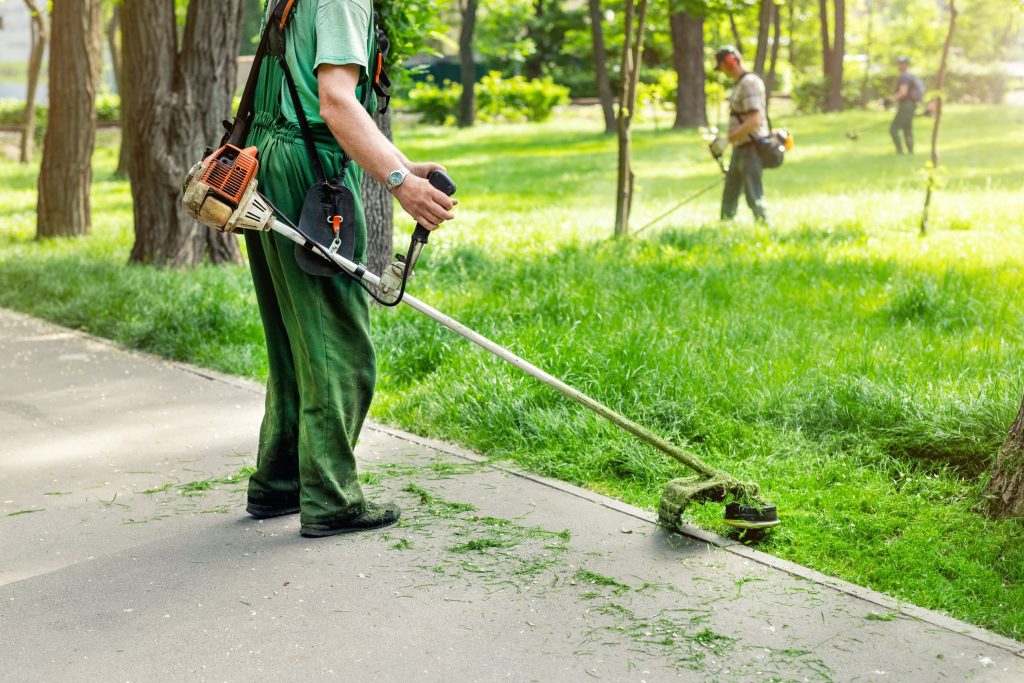
- Store Tools In A Cool, Dry Place
It is best to keep your tools in cool, dry places. It keeps your tools from rusting over time. You should also avoid leaving your garden tools outside, where they get rained on. It is a common mistake some people make. It would help if you also kept an eye out for damp soil, which can cause rusting. So, before storing your garden tools, be sure to clean them. So, it would be best to keep them somewhere safe and dry, like a storage box. Outdoor storage boxes are waterproof and ideal for storing garden tools.
- Clean Your Tools Regularly
Garden tools tend to have high usage rates. As a result, cleaning them after each session is always a wise practice. However, realistically, this isn’t always possible, necessary, or practical. Nevertheless, it would help if you made an effort to clean your gardening tools regularly. It is especially true for the cutting tools you use the most. Secateurs are a popular tool. They have high usage rates and are prone to getting rust from the sap that sticks to the blades.
As a result, you must clean your equipment with soapy water. It will remove any germs or pests that may have begun to build on them. It’s also critical to keep your instruments clean to avoid spreading weed seeds. Consider using a brush to remove tough dirt from tools covered in grime. If you don’t have time to dry them, please brush them off before storing them. It’s also a great idea to keep all your rags, used towels, and t-shirts for cleaning your tools.
- Sharpen Tools Regularly
It is not always necessary to sharpen your tools every time you use them. Most tools, however, must be sharpened regularly. Blunt blades, knives, clippers, or other tools are inefficient and hard to use. They may even slow you down in doing jobs you typically complete in a short time.
Take lawn mower blades, for example. Blunt mowing blades most likely reduce the quality of the finished product and may damage the motor. These blades may also need to be regularly lubricated to ensure they move freely. Also, if any of those blades are damaged, ensure to replace them as soon as possible. It is just one example. But other tools with hinge connections need to be oiled or lubricated regularly.
- Clean Wooden Handles
Some individuals make the error of disregarding tools with wooden handles. Spades, forks, and loppers are examples of tools with wooden handles. Check them at least once yearly to verify they’re in good condition. Examine the wood for splinters. Consider sanding the wood to smooth out the surface. If you’re unsure, visit your local tool store. They should be able to assist you with the sanding procedure. Then, to give the handles a polished appearance, use specific oil. Finally, you can store them once finished.
- Remove Rust
Rust is a significant contributor to the shortening of the life of your tools. As a result, it must be addressed as soon as possible. If you discover any rust, ensure you don’t keep your tool in that condition. It will only worsen and become more difficult to remove. You can remove rust from your tools by soaking them in vinegar. Add salt to the solution to make it more potent. It may be necessary when dealing with tough rust.
Conclusion
You must keep up with garden tool maintenance if you want your tools to last as long as they should. Tool maintenance isn’t hard, but it requires effort and dedication. You may not always feel like cleaning your tools regularly. But always strive to clean your tools after usage and sharpen them regularly. Proper maintenance is the only way to keep your equipment in good condition.
Delta 8
How do I choose the best Delta 8 gummies?

When you are talking about D9 THC, it is the component of cannabis plants that makes you high. However, the cannabis plant includes other forms of THC as well. There are four different forms of THC, D8 THC being one of them. You can quickly order some Delta 8 products online. These products are a superb option for all users because of their flexibility.
What Are They?
Generally speaking, “wellness goods” refers to what D8 gummies are. D8 Gummies are edible candies with D8 THC as the main active component. They are also famous as Delta 8 Gummies, THC Gummies, or just D8 Gummies.
D8 THC is infused into gummy candies to produce the D8 THC gummies. In other words, when the sweets originate, the D8 THC is included in the list of ingredients. For instance, particular D8 Gummies are similar to other gummy candies in that they have sugar, syrup, and flavoring but also contain D8 THC.
Are They Legal?
Most states now allow the use of D8 THC. D8 falls into a legal gray area since it is a kind of THC but is not always the same substance. The majority of D8 THC you will encounter stems from hemp, which is allowed under federal law as long as the product (or any product generated from hemp plants) has under 0.3% D9. Products made from hemp and cannabis have different governing regulations.
Although D8 THC and other hemp derivatives were made lawful by the 2018 Farm Bill, several jurisdictions have attempted to limit its use. It is crucial to review the legislation in your state as a result. Another thing is that not all D8 products come from hemp foliage, which is unquestionably illegal in certain areas. It is crucial always to confirm that the product you are thinking of buying is a D8 product and not a D9 product since D9 THC products are unlawful under federal law.
Get High From D8 Gummies?
Contrary to Cannabidiol products, D8 gummies might make you feel a little “euphoric” or “high,” albeit the effect will not be as profound as it would be with D9 THC. Most consumers agree that D8 produces euphoric moments far less powerful and considerably more agreeable. You bypass the overpowering drowsiness and disorientation and go straight for the more pleasant effects. You could feel more alert and able to concentrate on your task, but you might also feel more relaxed and somewhat giddy or euphoric.
D8 Gummies Safe For Kids?
The use of D8 THC gummies is usually harmless. If they are not taking excessive amounts of D8 gummies, most individuals will not have serious adverse effects. Fatigue, a dry mouth, and shiny eyes are some of the negative impacts of D8, which are familiar to almost all cannabinoids. According to some reports, D8 THC may impact blood pressure.
D8 Gummies: How Long Do They Take To Work?
Like with most cannabinoid-based edibles, the euphoric effects may take a while to manifest. However, it might take up to a couple of hours for the benefits to reach their height. Many users claim to experience the impact in around thirty minutes. D8 differs from other forms of THC because the effect is not immediate. Unlike its THC cousins, D8 takes time to manifest its results. Therefore, users must remain patient and not take too much dosage if they do not feel the effects.
D8 Gummies: How Many Should I Take?
No one dose of D8 gummies is effective for everyone. Depending on factors including metabolism, body chemistry, weight, and more, D8 THC may have various effects, including psychoactive properties, for each person. Some individuals may be more affected by D8 THC than others, particularly those who might not have much prior exposure to THC.
Please start with a small dose and gradually raise it once you know how cannabis will impact you. For instance, you may begin by ingesting the gummy, observing the results, and then utilizing that knowledge to change how many gummies you take the next time. It is advisable to wait a few hours before seeing how the D8 will influence you since edibles may take longer to effect fully.
Advice For Purchasing D8 Gummies
D8 gummies are undoubtedly in great demand because of the increased need for D8 THC, and many vendors are hurrying to meet that demand. Unfortunately, this also implies that while purchasing D8 gummies, you must use caution. And when you shop, you should have a few tips in mind.
Good Ingredients
Choose D8 gummies that contain only high-quality components. Verify that any provider provides you with a complete list of all the chemicals present, including if the D8 THC originates from hemp. Ensure the product includes natural components and other naturally occurring substances if you seek an all-natural option. In general, it is preferable to constantly go for items of better quality while shopping for things that give particular results.
Lab Testing
The use of independent lab testing is crucial while using D8 THC gummies. You should ensure that the item you purchase does not include D9 THC since doing so would render it illegal. Make that the thing has always undergone a rigorous lab test by third-party labs when purchasing D8 items. The lab-testing results should ideally be from a 3rd party provider. This factor ensures that there is complete transparency when it comes to the validity of the results.
Plan Of Use
When choosing your gummies, remember why you plan to use D8 THC. Choose a modest trial pack with just two or four candies if you want to try these gummies out quickly. However, if you are a seasoned user and plan to take the gummies daily for concentration and soothing, you may choose a more robust, bigger pack of gummies.
Check the strength of any D8 gummies you are thinking of purchasing. Most gummies on the market have a 25mg potency level. However, you may also get gummies with much more or significantly less D8 THC. Starting with a somewhat effective dosage, such as half of the single gummy, if preferable Additionally, before using D8 Gummies or any other product containing cannabinoids, you should always speak to a doctor or licensed healthcare provider.

Regulations And The Law
The 2018 Farm Bill makes D8 THC permissible on a federal level, but only if the package contains under 0.3% D9, and some states have passed laws restricting even hemp-derived goods. It is advisable to find out what is permitted in your state since certain jurisdictions do not allow the transportation of D8, although these rules are constantly changing. Always check your state’s or municipality’s legislation to see if there are any restrictions on D8 THC products.
Conclusion
In the industry of D8 gummies, brand reputation is crucial. Please investigate the company that sells D8 items to ensure that they list vital information about its origins and practices. Additionally, check customer testimonials for certain goods if you need clarification.
Products
Crafting the Perfect College Essay with the Help of a Professional Writing Website

With the help of a professional best essay writing websites, you can craft the perfect college essay. These websites have experts who can help you choose the right topic, format your essay correctly, and edit it for grammar and spelling mistakes.
The college essay is an important part of the college application process. A good essay can help you stand out from the rest of the applicants and get noticed by the admissions committee.
There are a few things that you need to keep in mind when you are writing your college essay. First, you need to make sure that your essay is well-written and free of errors. Second, you need to make sure that your essay is personal and unique. Finally, you need to make sure that your essay is persuasive.
If you want to make sure that your essay is well-written, you can hire a professional writing website. These websites will help you edit your essay and make sure that it is error-free.
If you want to make sure that your essay is personal and unique, you can use a personal essay template. This template will help you write an essay that is personal and unique to you.
Benefits Of Using A Professional Writing Website To Help With Your College Essay
There are many benefits to using a professional writing website to help with your college essay. First, a professional writing website can help you improve your writing skills. Second, a professional writing website can help you get ideas for your essay. Third, a professional writing website can help you organize your thoughts and fourth, a professional writing website can help you proofread your essay.
There are a few things to consider when choosing a professional writing website to help with your college essay. First, consider the quality of the writers. Make sure the site has writers who are experienced and knowledgeable in college essay writing. Second, consider the cost of the service. Make sure the site is affordable and within your budget. Finally, consider the turnaround time. Make sure the site can deliver the essay within the timeframe you need.
Examples Of Successful College Essays That Were Crafted With The Help Of A Professional Writing Website
There are many different ways to craft a successful college essay, but one of the most effective is to seek out the help of a professional writing website. By working with a site that specializes in helping students with their essays, you can get the guidance and assistance you need to create a piece that truly reflects your individual voice and experiences.
One great example of a successful college essay is one that tells the story of how you overcame a difficult challenge in your life. Perhaps you faced a financial obstacle that forced you to take on extra jobs while also attending school full-time. Or maybe you had to deal with a personal tragedy that made it difficult to focus on your studies. Whatever the case may be, your essay should detail how you faced and overcame the challenge, what you learned from the experience, and how it has made you a stronger and more resilient person.
Another great topic for a successful college essay is one that discusses your passions and interests outside of academics. Perhaps you are deeply involved in community service or have a strong commitment to a particular extracurricular activity. Whatever it is that you are passionate about, your essay should showcase your involvement and highlight the ways in which it has made you a well-rounded individual.
No matter what topic you choose to write about, your essay should be honest, personal, and reflective of who you are as a person. By working with a professional writing website, you can get the help and guidance you need to craft a successful college essay that accurately reflects your unique experiences and perspective.
Process Of Working With A Professional Writer
There are a few different ways that you can work with a professional writer from a professional writing website. The first way is to simply purchase an essay from them. This will give you a well-written essay that you can use as a guide when writing your own college essay.
The second way to work with a professional writer is to hire them to help you edit and proofread your college essay. This can be a great way to make sure that your essay is free of errors and flows well.
No matter which option you choose, working with a professional writer from a professional writing website can help you perfect your college essay.
Solar Power
Running Everyday Appliances With Solar Power

With modern technology, using solar power to run your everyday appliances has gotten a lot easier.
Where once the use of solar panels and batteries was reserved for very high net-worth individuals, these products have become a lot more affordable and available to ordinary people.
With the use of an inverter, you can run almost any device you usually run from mains power using solar.
It is just a matter of how long you will be able to, depending on your amount of battery storage.
In this article, we outline the gear you will need to be able to run appliances using solar panels And some appliances that you could run using this method.
What You Will Need
The challenge with solar energy is that the time that you want to access the energy may not be the time when the energy is available. For example, if you want to power a device at night time when the sun is not shining, you will have not solar power available to you.
Thankfully, there are many devices and intermediaries that have been developed that allow you to capture the power with solar panels when the sun is shining and then use that power at the time that you choose.
If you plan to use solar power to power your domestic devices, the main things you will need are not only a solar panel but a battery to store the power that you capture with the solar panel, an inverter, and then some adapters to get the power out of the battery through the ports that your appliances require.
Many solar power devices use this same technology, but on a smaller scale.
For example, the bright solar lights found in gardens use a small panel to convert sunlight into electricity, a small battery to store that electricity during the day, and then some basic circuitry to dictate when that power is released to turn on the light. These outdoor solar lights are examples of 12v solar power.
12v Vs 240v
Most of the domestic appliances that you plug into your power points inside your house are powered via 240-volt alternating current power. This electricity is very strong and very powerful and can kill you if you are exposed to it directly.
There is a range of other devices that can be run on 12 Volt power. Most RVs and caravans and much of the wiring in our vehicles is based on a 12 Volt system. 12 Volt power is very good for low-intensity devices and use cases, but not good for powering high-current devices.
You can purchase a device called an inverter which will convert your 12 Volt electricity to 240 Volt electricity. There are different types of inverters including modified sine wave inverters and pure sine wave inverters. In most cases, you will want a pure sine wave inverter and you will need to buy one with enough capacity to power the devices that you would like to power with your battery.
Do some research on your devices and how much power they draw, and make sure you buy an inverter that is capable enough to power them.
Battery Storage
When it comes to battery storage, you can buy a wide variety of different batteries that are designed to store the solar power that you catch so that you can use it at a time of your choosing.
There are different battery types you can purchase based on different battery chemistry. Most of the starter motor batteries that we have in our vehicles are comprised of lead-acid chemistry.
This is really good for starter motors as it gives you a lot of energy in a short space of time but may not be the best for powering devices and charging for a longer period of time.
An alternative to lead acid chemistry is AGM batteries, which are based on lead acid technology but use a different design to give you a steady source of power for a longer period of time.
The main downside of any lead acid battery, even AGM batteries, is that they tend to be quite heavy. But they are the cheapest and they are very reliable.
An increasingly popular modern type of battery is a lithium phosphate battery. These are lighter and they also can be utilized to a greater extent than a lead acid battery.
With a lead-acid battery, you are not supposed to drain the battery below 50% if you can avoid it. Whereas with a lithium battery you can drain it down to 0% without any concern.
Putting It All Together
If you like having the ability to fully customize your setup then you can buy your own solar panels and combine them with your own batteries and inverter. But if you would prefer to buy a single unit that does all that for you, then portable power stations and battery boxes may be something you want to consider.
A portable power station is an all-in-one unit that includes a battery as well as the ports needed to extract the power from the battery to power your devices.
You carry it with you wherever you go and then plug in your solar panel when you want to top up the amount of electricity. They can be charged via wall socket as well if you want to keep them topped up in that way.
It is very easy to spend a lot of money very quickly when you get involved in solar technology, so make sure you map out your use case, get clear on what you need, and only buy that.
Start with the basics and you can always buy extra things as you go along.
Home Care & Living
3 Tips to Protect Your House From Getting Damaged During the Rainy Season

It is the time of the year when you don’t get to see clear skies often. From April to September, overcast skies and persistent rains are common. While this may be a beautiful sight, rainfall also brings problems like water seepage, clogged gutters, and electrical fires.
No one wants their house to get damp during the monsoon or face an electrical fire, so what should you do to protect your house before the rainy season begins? Continue reading so we can guide you.
1. Installation of Gutter System/Guards
Instances of gutter overflowing are pretty common during the rainfalls. While having an efficient gutter system is essential, installing gutter guards is also vital to prevent debris from getting into the gutters. There’s no harm in unclogging gutter drains manually, but it’s time-consuming and inefficient. Gutter guards can make your life easier by filtering out leaves, debris, litter, or objects of the size of a stone from your gutter system so rainwater can flow smoothly down the drain.
Rainwater causes another major problem: soil erosion. Efficient rain gutters allow that extra water to flow into the drain rather than into the soil– avoiding a muddy mess in your garden. There are a handful of companies that deliver clog-free gutters. These gutters are efficient and durable, so you don’t need to constantly worry about upgrading them. A number of companies in Canada install clog-proof gutters, and you should learn more about them before hiring them.
2. Paint the Exterior With Water-Proof Paint
Waterproofing is a crucial part of house maintenance. When walls get damp, molds and white fungus can grow excessively, leading to health issues. Moist spaces attract insects and other pests too!
Additionally, standing water can weaken the foundation of the house. Too much water causes soil to swell under and around the foundation leading to its deterioration. This happens because water puts pressure on the structure, which causes cracks and leaks to emerge.
Invest in waterproof paint to prevent rainwater from seeping into the walls. However, even so, you must install a proper drainage system for long-lasting impact. If you do not take these measures earlier, you may face expensive consequences later.
3. Insulate Electrical Appliances
Ensuring that your electrical wiring is well-insulated is also critical before the rainy season starts. Many houses host electrical boards near windows or in places where water seeps through and causes a spark. Sparks can cause electrical fires that you won’t be able to put out with water. So, before the monsoon begins, get electrical wiring checked by an electrician and make sure that the sockets are safeguarded.
Outdoor outlets have to be weatherproofed. You should also invest in outdoor electrical appliances that are waterproof and well-insulated to avoid accidents. In case of any mishap, you should always have an electrical fire extinguisher in your house.
Endnote
The rainy season is arguably the best time of the year for leisure. As much as rain is a blessing, it can be a hazard to your house and garden. Just make sure to make it even better, you must follow the above safety tips. The good news is that there are practical solutions that you can use to avoid heavy rainfall consequences, and since these solutions are long-lasting, you wouldn’t have to invest heavily in house maintenance every month.
Home Repair
Factors That Affect the Cost of Your Roof Repairs

Everything deteriorates with time, and buildings are no exception. Your house faces weather extremes, sunlight exposure, and the natural wear and tear of its building blocks as it ages. Timely repairs can mitigate the effect of age on the house. While house repairs might seem costly at the moment, they help avoid further structural damage to your place. They protect your house’s structural integrity and aesthetic value and can help you sell it at a better price in the future.
Roof repairs are a common need for houses. As your roof is exposed to all sorts of intense conditions, it is prone to damage. While roof repairs can be costly, ignoring them can lead to future, bigger-scale problems – you might end up needing a whole roof replacement. Roof repair specialists like D’Angelo Roofing can fix your roof before the problems evolve to a greater magnitude. A roof company’s quote will depend on several factors. To give you a better idea of the costs you’ll incur, we have discussed these factors below:
- The Roof Type
The type of roof is a significant factor that influences repair prices. Repairs for flat roofs, for example, cost way less than sloped or pitched roofs. The type of tiles and materials you need will also affect your costs. Wood shingles are cheaper, and a wooden roof costs less to be repaired than a roof consisting of metal tiles. Likewise, the extent of your roof pitch will determine your roof repair expense. Low-pitched roofs generally cost less than high-pitched roofs as they are more easily accessible by workers.
- Roof Area
Roof repair companies will charge you according to the site’s square footage. A square in roof repair is equal to an area of 10 feet by 10 feet, and you’ll be charged for the whole square even if the total size of your repairs is less than 10 feet.
- Existing Water Damage
Water damage facilitates mold growth and makes the electrical system unsafe. And you wouldn’t know the extent of the water damage until the roofer removes the shingles and inspects underneath. If excessive mold grows under your roof, the repair costs will increase. You may need a replacement altogether if the water damage is significant.
- Rooftop Elements
The presence of rooftop elements such as chimneys and skylights can increase your repair bill. Chimneys are prone to water leaks and will need a waterproofing mechanism, such as flashing with materials like aluminum.
- Roof Repair Permits
A roofer will require repair permits to work in your area. Depending on the permit costs, your total bill may get inflated. Some locations charge a flat permit cost, while other regions charge based on your house’s size and value.
Endnote
Getting a timely roof repair is that idiomatic stitch in time that saves nine. The more you wait on your unrepaired roof, the worse the damage will get. What could have been a replacement of a few blown-off shingles can lead to a whole roof replacement if the water gets to the decking and infests your house with mold.
Roof repair depends on several cost considerations that include your roof type, the extent of the repair, and if you have any water damage. Having rooftop elements can also impact your bill, as will your area’s roof repair permit costs. Once you estimate your budget, call a local roof repair service and get a quote.
DIY Projects
5 Essential Bathroom Remodeling Tips
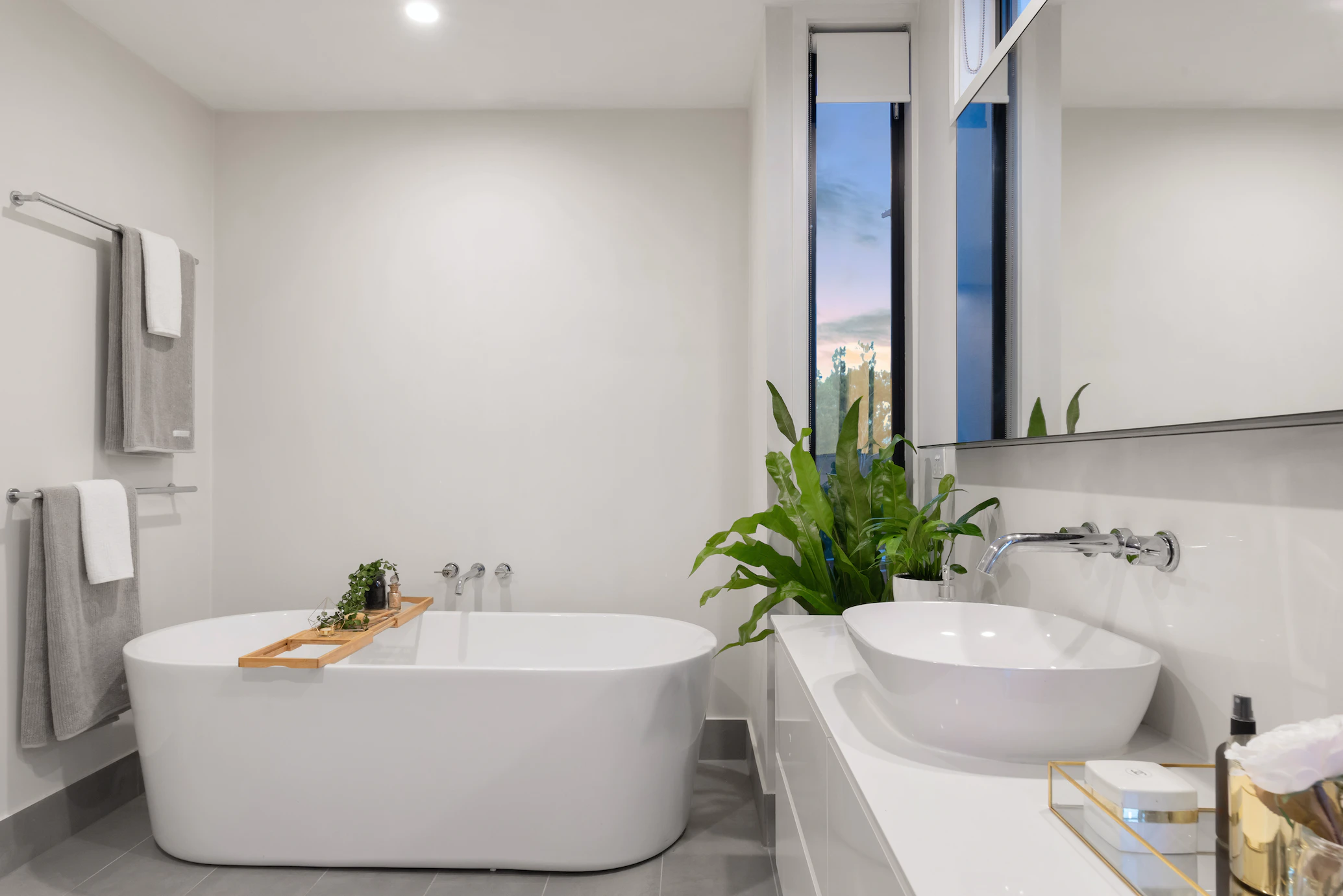
Bathrooms hold a nearly sacred place in our home. They are rooms where we allow ourselves to clean up, get comfortable, and become vulnerable. With so much emphasis on the function of this particular area, remodeling is one way of making sure that it can keep up with your household in the long run.
When going for bathroom remodeling Waukesha or anywhere else, try approaching the activity with your own use in mind. Do not think of the resale value at first. This can affect the way that the project will turn out. Think of what makes you comfortable and then see how you can go from there.
Make Your Budget
Remodeling is an investment in your property and yourself. If you do not place a clear limit on the amount you are willing to spend for this activity, then you may quickly find yourself going down a slippery slope of hidden expenses and small costs.
Bathroom remodeling can become pricey very quickly because of the cost of labor and materials. Most of the professionals involved in this business are highly skilled, and it’s always best to put your money with people who can deliver quality results.
To help you come up with an estimate, look for local custom building costs and use this to start your budget plan. This process can be expedited if you have a remodeling contractor or a design-build firm that offers fixed pricing instead of estimates.
Decide on a Bathroom Type and Layout
Changing the type of bathroom is a big job and most clients would probably forego doing this. But while you’re remodeling, you might as well consider all your options! The sharp eyes of an experienced interior designer or architect may be able to spot ways to expand your space.
A standard bathroom contains the complete experience. It has a sink, toilet, and a bath or shower. Big homes often have a master suite with a standard bathroom of its own, to help eliminate long lines in the morning.
A half bath only has a sink and a toilet. This is also known as a powder room. It’s the preferred bathroom type for common spaces, such as the living room, because your visitors can freshen up or go about their business without having to enter your private space.
Finally, a wet bath is a type of bathroom where everything is completely waterproofed. It’s an interesting approach to bathroom design because the shower area opens out immediately to the rest of the room. This is a good option for households with people who have limited mobility because they do not have to navigate any curbs or obstacles to get in and out of the shower.
Choose Your Layout
Once you’ve locked in on the type of bathroom you want, it’s time to consider the layout. This is an aspect of remodeling that you need to think about before you get to decorating. Most of the time, it’s best to just maintain how everything is positioned. However, it is possible that your original bathroom was poorly designed or you need more space to accommodate a growing family.
Get a design consultation and have a 3D rendering of your space made so you can fully visualize the changes that can take place in your bathroom.
Invest in Durable Materials
Bathrooms, aside from kitchens, endure the most wear and tear. They need to be capable of adjusting to significant changes in temperature, humidity, and water exposure. They should also know how to withstand harsh chemicals, look attractive, and be easy to clean.
If you cut costs on materials, chances are you will come to regret this decision in the long run when you need to replace them or have them redone completely. The most durable bathroom materials, like porcelain, solid wood trim, and cast iron, will retain their brand-new look for much longer and will last a lifetime. These materials will not have any problems with handling the dampness.
Think of going for high-quality plumbing fixtures as well, particularly the ones with solid brass mixing valves. This variety is capable of lasting decades. Conversely, the more affordable plastic fixtures may need to be replaced every few years.
Think of the Lighting
Even if you aren’t the type to take bathroom selfies, you know how important good lighting is for any room. If there isn’t enough light or too much light, it can completely ruin the look and utility of your bathroom.
A good designer will always recommend plenty of natural lighting, to help make your bathroom feel brighter and lighter. They may look for ways to incorporate more windows and maybe a skylight.
Lighting can also affect the layout of your bathroom. For example, you would want to position your mirror and vanity somewhere near the window. This would give you the opportunity to use the sunlight during the day, and the vanity lighting at night.
General Gardening
Take Your Garden To the Next Level By Using These Tools
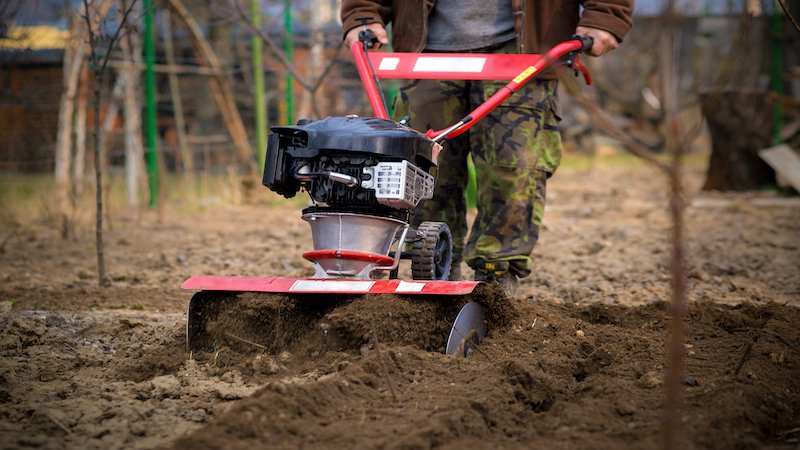
Gardening is a very personal hobby. But there are plenty of tools that can make it more productive and easier to manage. So why not take advantage?
Use the right tools for the job. As gardening enthusiasts, we can get overwhelmed when faced with the prospect of trying to keep our yard or garden beautiful and lush.
This is why we decided to share a collection of gardening tools that would help you beautify your garden or lawn faster, easier, and more efficiently than before.
Our list will feature everything you need to keep your garden looking amazing from start to finish.
Whether you’re a seasoned gardener or just getting started, we’ve rounded up the best gardening tools that will make your job easier—and even help you enjoy the process.
1. Get a wheelbarrow for heavy garden chores
The first piece of advice that I thought would make the most sense would be to get a wheelbarrow.
Wheelbarrows are very useful to help transport large amounts of material around the yard and garden. They are made to do this. They have handles, so it’s easy to move them around.
Some wheelbarrows are even equipped with a platform that allows you to work from the ground. It’s a good idea to get a wheelbarrow for your garden, especially if you have a lot of heavy gardening tools. It would make your life easier.
2. Create raised beds to maximize space
Raised bed gardens are often used in small urban spaces. They allow for greater plant diversity, offer a view, and can serve as additional storage and composting space.
By growing plants up off the ground, you also minimize the risk of weed growth and pests while increasing air circulation. Raised beds can be constructed out of wood, stone, brick, concrete, and even recycled tires.
Raised beds give gardeners a whole new perspective on their soil. Instead of fighting weeds, they can grow vegetables, herbs, and flowers with ease. Raised beds are a lot like terraces; they’re built up so that it’s possible to put plants directly in the soil, giving you more room to grow food.
3. Add a drip irrigation system to your garden to improve your soil
Soil is the foundation of a thriving garden. Without healthy soil, nothing else will grow. But there is one simple thing you can do to give your soil a boost that will help you grow even better plants in your garden: add a drip irrigation system. A drip irrigation system, if used correctly, can make your soil incredibly fertile and help you grow some very large plants.
4. Invest in a fertilizer spreader for a fast, efficient garden application
Fertilizer is a necessity in any gardening endeavor. No matter what type of plants you grow, if you don’t apply the correct amount of fertilizer, you’ll end up in a weed-infested garden with poor-looking and unhealthy plants.
In addition to getting the proper amount of fertilizer, the ideal time for applying it is also essential. When the plants have just emerged from the ground, but before they have developed a mature root system, is the perfect time for fertilizing.
Don’t use a hand hoe for spreading fertilizers. By hand, you’ll have to walk back and forth with the fertilizer and then walk back and forth to get it into the ground. This isn’t the best use of your time. Plus it’s hard on your back and arms. Using a fertilizer spreader is just one of the handy things for a gardener.
5. Buy or build a greenhouse to protect seedlings from late-spring frost
In springtime, some plants go through a long period of cold, sometimes very cold, weather. Seedlings need protection during this time, because if temperatures drop too low, they may die. Greenhouses are the best way to keep plants warm and healthy during this vulnerable time.
In order to protect your plants from freezing temperatures, you need to cover the plants with blankets. During winter, a greenhouse is a necessity.
If you live in a warm climate, you won’t need to use the greenhouse in the winter. But if you live in a cold place, you’ll definitely need to use a greenhouse.
Plants are more likely to survive if they stay warm, so you should never leave a plant outside during winter. A greenhouse is necessary.
Conclusion
In conclusion, whether you have a big or small garden, you need to find tools that fit the job at hand and that are affordable. They can range from a simple shovel, rake, or watering can to something more complex like a tiller or a greenhouse.
Tools that you use every day will become your best friends and help you accomplish the tasks much faster than you would without them.
There are plenty of tools and techniques out there that can help you cultivate your garden. But, the number one tool to get the most out of your plants is simply to be patient.
You’ll see results sooner or later, and when you do, you’ll want to remember the time you invested into learning how to properly take care of your plants.
Design Tips
5 Tips for Creating the Perfect Outside Kitchen
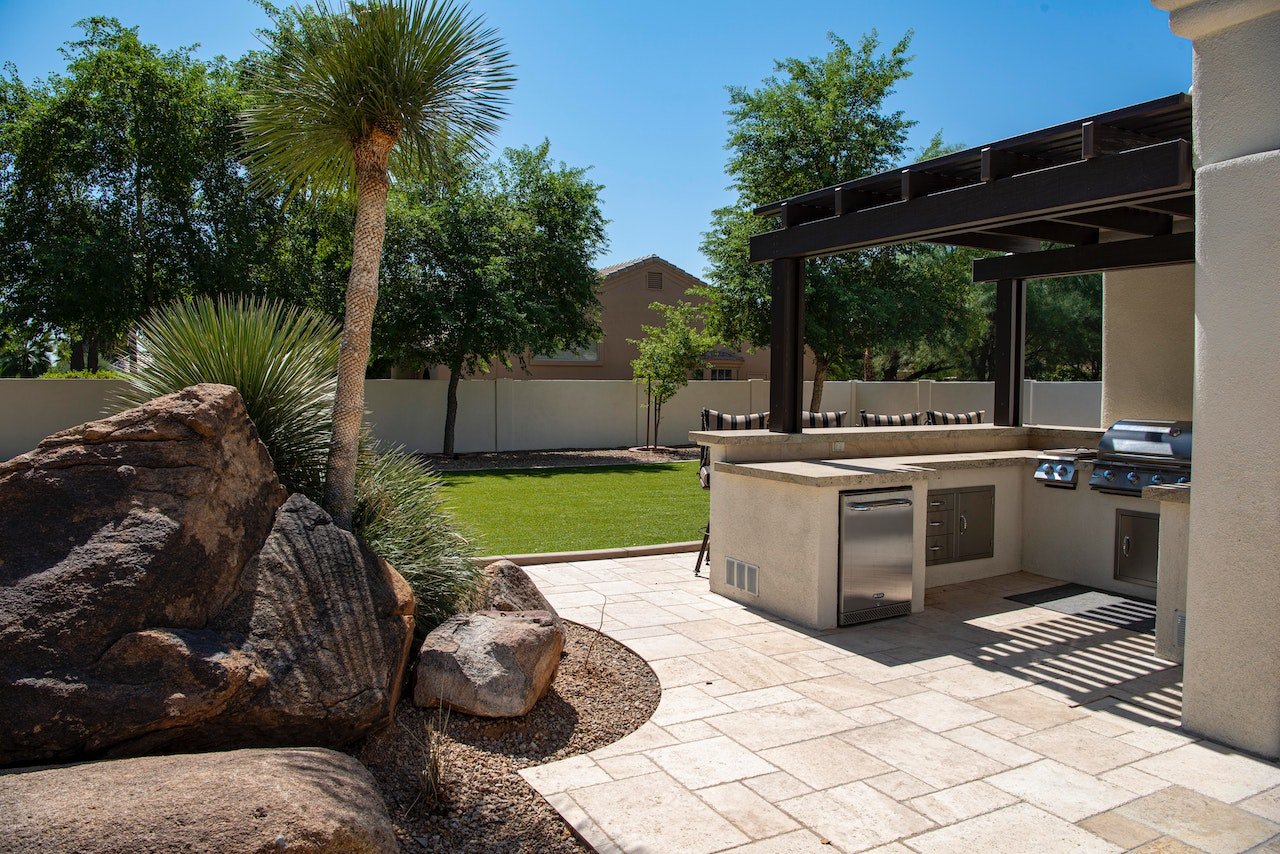
Building an outdoor kitchen is a great project to embark on if you want to up your DIY game. It’s not that difficult to do, is pretty inexpensive, and if you make mistakes, they will be easy to correct. You do have to plan your project properly, however, and try to go for something modest for your first project unless you already have significant experience with this type of renovation. Here are some tips that will help you build a great outside kitchen.
Think Outside the Box
A lot of people will think about adding a grill to their kitchen and a nice lounging area, but there are many other accessories that you could add to your outdoor kitchen to make it more interesting. For example, you could consider getting a quality outdoor pizza oven like the Ooni Koda 16. These compact ovens from Ooni are portable, so you can move them or store them whenever you wish. This is an addition that is sure to please your children or you if you’re a big pizza fan. Another great addition you could consider is a fire pit, or even better, a fire table. A hibachi station could also be a good option if you’re a fan of Korean BBQ.
Choose Your Space Wisely
Another thing you have to do is make sure that you pick the right spot for the kitchen. Some people will want it to be in a central area, but it might not be the most convenient. You want a spot where you’ll be protected from wind, so it would be better if you installed it near a wall. Consider shade as well unless you want to cover the area. It could also be a good option to connect your kitchen to your deck or to even build a deck for the kitchen for added convenience.
Carefully Think Out Your Layout
When picking a layout for your outdoor kitchen, you first have to decide if you’re going to go with a simple or complex kitchen. This will all depend on where you want to build the kitchen, how much you intend to use it, and what kind of cooking you want to do there. Either way, you will need to have an area for cooking, one for preparation, and one for cleaning. You should also think about additional storage and have space for a fridge.
Another thing you sound consider doing is installing a countertop area that can be used as a buffet space or bar with stools. This will make the space even more convivial and give people different seating options.
Choose Your Materials Wisely
Choosing the right materials is also very important when building an outdoor kitchen. You want to use materials that will have the right look and feel, but also make sure that they’ll be able to withstand the elements.
For the countertop, you should try using something like granite with a flamed finish. Try to pick earthy colors that will complement the outdoor setting, and make sure that the kitchen’s materials are congruent with the rest of the house to create a cohesive look.
As far as the flooring goes, you can go with something like natural stone, terracotta, wooden pavers, anti-skid porcelain tiles, or cement finish tiles. For the seating, make sure that you pick moisture-resistant materials. Favor materials such as rattan, wicker, plastic resins, aluminum, wrought iron, and steel, since they’re very durable and will withstand pretty much anything you throw at them.
For the cabinet boards, try to go with WPC and go for SS finish furniture and appliances unless you live in a coastal area. This is because the SS finish can corrode when they’re salty in the air. The same goes for aluminum.
Don’t Forget Lighting and Outlets
You also have to make sure that the area is properly lit if you intend to use it at night. There also needs to be sufficient outlets for all your appliances and accessories. Soft lighting will work best here as it will create a nice, cozy ambiance. You also probably have other lights in your backyard, so using softer lighting for the kitchen area will balance things out.
Task lighting is very important if you want to be able to see what you’re doing but to stay safe as well. You can install countertop lights, but these could be tougher to install on an outdoor aisle. You could go with pendant lights if you want to make things easy for you there.
All these tops should allow you to build the outdoor kitchen of your dream all on your own. Make sure that you plan your project carefully before you start and be modest with your objectives if it’s your first time doing this sort of project.
Uncategorized
Red Maeng Da Vs. Red Bali Kratom: What’s The Difference?

If you’re interested in trying kratom, you may have seen Red Vein Maeng Da and Red Vein Bali Kratom. Both red kratom strain are popular among the world’s users, but what’s the difference between them?
This article will compare red maeng da vs red bali kratom, including its effects, dosage, and more. Both of these red strains are very popular and have many similarities. Though there are similarities between both strains, they do have some differences.
Keep reading to learn more about the red Maeng da and the red Bali strain, and find out which one is right for you!
Red Maeng Da Kratom Strains
Red Maeng Da Kratom strains are among the most popular strains of kratom. They are known for their high levels of alkaloids, which gives them their distinctive red color. They are also known for their powerful effects.
Red Maeng Da kratom strains are typically grown in the rainforests of Indonesia. The name “Maeng Da” actually means “pimp grade” in Thai, which is ideal given the strain’s reputation for being one of the strongest kratom strains.
These strains can be found in various forms, including powder, capsules, and leaves. The most popular way to take Red Maeng Da kratom is in capsule form, allowing for more precise dosage.
It is also popular for making kratom tea, as the leaves can be steeped in hot water to make tea.
As a result, some kratom fans feel that the name Maeng Da implies excellent quality and potency. If you’re one among the many kratom users looking for high quality red kratom strains or good quality kratom products, Red Maeng Da might be the way to go.
But it is essential to consult a medical professional before taking prescription medication or being affected by a serious medical condition, as it sometimes tends to have the opposite effect.
Red Bali Strains
When it comes to taking red Bali kratoms, there are some facts that you should know. Red vein strains are obtained from a method called grafting.
It is a process in which two different red vein plants are mixed to get the result of a combined characteristic.
Red Bali is one of kratom’s most famous red strains. Not only is it popular, but it is also one of the high-potency strains.
Many believe that red Bali is the most muscular strain of kratom as it might help relieve pain and physical discomfort. If you’re looking for a potent pain reliever, kratom experience, or mood enhancement, red Bali is the way to go.
Comparing Red Maeng Da Vs. Red Bali Kratom?
Red Maeng Da vs. Bali kratoms – They are two different essential kratom strains of the same plant.
Both strains are sold as dietary supplements and are widely used for their purported relaxing effects.
While their organic compounds share some similarities, there are also some crucial differences between these two strains.
Dosage
Their universal doses are the first comparison of red Maeng da vs. red Bali kratom. For red Maeng Da, the recommended dose is between 2-4 grams, while for red Bali, the recommended dose is between 3-5 grams. Red Bali can be quite sedating, causing you to feel tired in higher doses (5+ grams).
Color Of Veins
The following comparison between red Maeng da vs. red Bali kratoms is the color of their veins.
Red Maeng da has red veins, and red Bali has green veins. The different colors indicate different alkaloid profiles. Red Maeng da typically has a higher concentration of mitragynine, while red Bali has a higher concentration of 7-hydroxymitragynine.
Red Maeng da is more stimulating, while red Bali is more sedating. Red Maeng da is more energizing and is better for daytime use. Red Bali is better for nighttime use because it can help you relax and fall asleep.
The color of kratom veins is just one of the many factors that determine its effects. Other factors include the strain, the region it’s from, the quality, and how it’s prepared.
Red Kratom Strain: Mature Leaves Available
On the other hand, Red kratom is said to be the most sedating of all kratom vein colors. They’re also famous for providing Chronic Pain relief and relaxation.
Green Maeng Da Vein: Middle Years Leaves
Next, Green kratom is said to be in the middle of the White and Red kratom strain. They’re also famous for providing a balance of both Sedation and Stimulation.
Efficacy
Both red Maeng Da and Bali kratom are effective in providing pain relief, but red Maeng Da is more potent and has longer-lasting pain-relieving effects.
User Experience
Some kratom enthusiasts prefer red Maeng Da for its relaxing effect, while others find red Bali to be more mood-boosting. Ultimately, it comes down to personal preference.
When comparing both kratoms, it is clear that both kratoms have their unique benefits.
Red Maeng Da is more potent and has a longer-lasting effect, while red Bali is more relaxing. Ultimately, the decision of which strain to take comes from personal preferences.
Origin
Red Maeng Da originates from Thailand and gets its name from a water bug called “Maeng” Conversely, red Bali kratoms come from Indonesia.
The difference in origin can affect the user experience as each kratom can offer different benefits. For example, Red Maeng Da is more energized, while Red Bali is more relaxed.
Alkaloids
Mitragynine and 7-hydroxy mitragynine, which bind the opioid receptors, are two essential alkaloids in kratom.
Red Bali kratoms and Red Maeng Da kratom include a variety of alkaloids, including these two in particular.
Other alkaloids are also present. You will discover that the alkaloids provided by each strain will vary from one another.
Location
Red Maeng Da is domestically grown in Thailand, while red Bali is grown on the Indonesian island. Red Maeng da can be found in some countries, but you have to look for the legality in places like San Diego, Rhode Island, Sarasota county, and union county.
Daytime Energy Levels
Red Maeng Da vs. Red Bali Kratom – These kratom strains come from the same family of trees, the Mitragyna Speciosa.
The difference between the two strains lies in their potency and effects. Maeng Da is widely considered the most potent strain of kratom, while Red Bali is known for its relaxing effect.
Potency
While kratom is still in the process of getting approved by the FDA as a dietary supplement, many medical professionals believe in its potential as a supplemental dietary product.
Compared to Red vein Bali, Red Maeng Da appears to be less potent but more balanced. Red Maeng Da is often used as a pain reliever, while Red Bali is commonly used to alleviate discomfort and enhance mood.
Popularity
Red Bali is one of the most popular kratoms because it boosts mood and provides relaxation. Red Maeng Da is also a popular strain, but it is more well-known for its potent effects.
Which One Should You Try?
There is no definitive answer related to it. It ultimately comes down to personal preference. Some people prefer red maeng da for its potent effects, while others find red bali more relaxing.
Try out both strains to see which one works. Red Maeng Da and Red Bali kratom are two of the most popular strains of kratom.
Both kratoms offer a variety of benefits, including relief from pain, increased energy levels, and improved mood. Red Maeng Da is more potent, while red Bali is more relaxing.
Final Thoughts
While red Maeng Da is more potent, red Bali is more relaxing. Ultimately, the decision of which strain to take comes from one’s experience of using it. It is essential to start with a low dose and increase it gradually to avoid side effects.
Uncategorized
5 Convenient Modes Of Payment To Purchase Maeng Da Kratom

When you try Maeng Da Kratom, you’ll feel like you’re in your favorite energy truck. Let its effects work their magic and bring a bit of holy fire into your life without getting too happy or sad.
White Vein Maeng Da is a herb from Southeast Asia that has been used for hundreds of years for any serious medical condition. People who buy Kratom to treat, cure or prevent any condition are happy with its result.
People have said this product made them happy, calm and refreshed. This is because natural herbs have stimulant effects without being bad for your health. Here, we will discuss what is maeng da kratom and its different modes of payment.
Benefits Of Maeng Da Kratom trees
Helps to Calm the Mind
One of the most well-known benefits of White Maeng Da Strain is that it can help calm your mind. Kratom leaf veins develop as a natural way to calm down and feel better. Mitragynine and Speciogynine, the active ingredients in Kratom leave, help bind to receptors in the brain that help calm your mind.
This White vein Kratom helps to calm a mind that is too busy to think straight, and it can do this without making you feel sleepy or out of it. Some of the most powerful ways to use and benefit from premium Kratom extracts are its possible calming effects.

Best For Pain-Relief
Pain is a normal part of the human body, which usually means that someone gets better after a long illness or injury. There are times when it may keep going, making you feel worse. You may also want to get rid of the pain quickly to keep doing everyday things. In this case, the White vein Maeng Da Kratom strain is the best thing to use.

Energetic properties
People who have to work or study for long hours every day often use White vein Maeng Da Kratom. This supplemental dietary product will give you the most energy and focus out of all the other types.
They are full of powerful, energizing alkaloids that keep you through the most boring, hard, or mentally draining tasks. The best effects will happen when you take it in small amounts.

Best Payment Options For Buying Kratom Powder
- Pay Using PayPal
The advent of encrypted 3D gateways for online Kratom powder payments has advanced rapidly. The feature’s availability for Maeng Da Kratom crypto payments across all platforms is a massive plus for any verified buyer.
Digital banking’s key advantages are its security and the speed with which payments for Maeng Da Kratom powder can be processed, often in minutes. These two factors have made various forms of Maeng Da Kratom Powder digital banking prevalent among the general public.
In this respect, PayPal is one example of a popular digital banking solution. For the uninitiated, PayPal is only a web-based payment for which you can pay for quality Kratom Products. With PayPal, you may send and receive money, shop online, and even get paid.
Your search is over if you need a safe and dependable payment method for your Maeng Da Kratom Powder. More and more businesses in high-quality powder are starting to accept electronic checks as a form of payment.
This method is an alternative to a debit or credit card and functions similarly to the standard check. Built with Kratom Products in mind, it distinguishes working with several blue chip organizations.
To confirm that your payment for Maeng Da Kratom powder has been received and your order completed, you will get transferred to a site after entering your bank’s routing number and account number on the payment gateway.

- Cash On Delivery
The limited processing choices of cash-for-White Maeng Da Kratom businesses make this seem like the best choice for any verified buyer but make life a living hell for kratom dealers. This can be another source of stress as the necessity of regularly managing and protecting considerable amounts of cash on orders of white Maeng Da.
For this reason, before committing to this approach, businesses must thoroughly analyze all the costs and hazards in the white Maeng da business. It includes the price of hiring agents, the expensive rates of booking armored vehicles for transport, and the chances of fraud When supplying this dietary supplement.
Using cash for everyday white Maeng Da Kratom transactions is not only risky and costly but also inefficient (such as rent, salaries, payroll, or taxes).

- Pay with a card or debit card.
Cards Payments for Kratom powder are the sole method of payment accepted online to purchase Kratom at this time. If a bank doesn’t use a third party like MasterCard to commence the payment process using an SSL-encrypted site, customers’ money could be at risk.
More than 200 nations now recognize this standard, and it’s a major accomplishment that most of the world’s most well-known financial institutions have signed up with this organization to offer digital banking services to their customers. This common way of payment gets accepted by the majority of the best Kratom powder vendors.
Once you’ve selected the Maeng Da Kratom strain you wish to buy and moved on to the checkout process, you’ll see this option, where you can enter your credit card information. After entering your information, your final white Maeng Da payment will take place on a secure merchant site.

- Paying With Crypto For Approved Kratom
If you haven’t dealt with Bitcoin before, it may seem like something from a science fiction novel. Still, in reality, it’s a genuine and highly feasible payment option for white Maeng Da and one of the favorites among Kratom suppliers for several reasons:
Cryptocurrency provides a significantly better level of confidentiality and privacy when buying good quality white Maeng da than the traditional banking systems in which one may see both the buyer’s name and the white vein Kratom they purchased.
In addition, the fees associated with accepting cryptocurrencies for this southeast Asian strain are substantially cheaper than with conventional ways of payment, which is great news for both the verified vendor and the consumer.
Additionally, many businesses will provide a discount to customers who pay for White Maeng Da Kratom using this method of payment.

- Green Cards
Lastly, prepaid cards can purchase your preferred White Maeng Da Kratom goods. It’s a simple and convenient way to pay back the Kratom business and works similarly to a loyalty card.
There are many reputable E-Merchant processors, one of which is Green Cards, also known as Green Money. After entering your Bank Routing and Account Number into the payment gateway for white Maeng da, you will be taken to the Green Money Site.
After which, you will be taken back to the company’s site, confirming that your payment for White Maeng Da Kratom powder has been received and your purchase has been processed.

Legalization Of Kratom
People often think Kratom is good for your health because it has been used so much, but that’s not true. Instead, healthcare professionals say it has side effects too. Due to this, many places worldwide have banned Kratom under federal regulations.
Some states have rules about who can use and buy Kratom, while others allow anyone to buy it. Alabama, Arkansas, Indiana, Rhode Island, and Vermont have outlawed Kratom. The remaining states and the District of Columbia have decided that Kratom is legal in their areas.

The Following Countries Restricted Kratom
The countries Myanmar, Poland, Romania, South Korea, Burma, Denmark, Finland, Israel, Thailand, the United Kingdom, Vietnam, etc., do not allow kratom use.

Conclusion
White Maeng Da Kratom is a strain of Mitragyna Speciosa that can be used in different ways and has consistent effects. Many medical professionals use the Maeng da Kratom powder as an alternative to prescription medications. It can help us calm down and clear our minds, which can be therapeutic and fun.
The strain is intended to diagnose and treat euphoric, stimulating, and pain-relieving effects. When taken as directed, there are no bad side effects, and the Kratom effects happen immediately and last long.
Thus this white vein, in a nutshell, is an excellent alternative to coffee enhancers and drugs. Check out the My Kratom Club website’s White Maeng Da Kratom page to learn more about this potent strain.
Home Care & Living
What To Look For When Hiring Roofers, Roofing Contractors For Your Roof Repairs

An expert roofer has a thorough knowledge of both theory and practice. That is, they have the necessary training and experience gained by providing contracting services. We highly doubt you want to utilize your roof as a proving ground for your do-it-yourself roofing project. You can’t learn as much as a pro does by reading books and watching YouTube tutorials.
Present-day society is predicated on do-it-yourself solutions and individual perspectives, neither of which are necessarily negative. Due to time and accessibility constraints, as a working homeowner, there are a few tasks you prefer to complete on your own.
It’s correct that you shouldn’t settle for second best when it comes to substantial renovations for your property. Hire a skilled roofing contractor for any big home improvement jobs. We recommend getting in contact with a qualified roofing company for an estimate if you’re thinking about having them fix your roof for good.
While roof repairs may seem like a fine weekend DIY job to some, we think it’s better left to the experts. The longevity of a roof is affected by many things, one of which is how well it is maintained. If you’ve done this and are now having roof issues, experienced roofing repair contractors are the ideal people to help you. Follow the link for more https://www.chicagotribune.com/sns-real-estate-hiring-a-roofer-story.html.
If you’re worried that this is too much to handle on your own, we can recommend some excellent expert roofers to help you out. A roofing contractor should be hired for the reasons listed below. In short, if you need a new roof for your home or business, you should use a local roofing company. Other advantages include the following.
Quick Reaction
Roofs in particular often suffer significant damage to houses located in high-risk zones for natural disasters. Considering the poor state of the roof, any damage to it must be attended to immediately.
Therefore, a roofing replacement service that can act quickly is essential. You wouldn’t have to worry about anything when a locally-owned and operated business comes to your home to start repairs or replacements right away.
Expertise of the Neighborhood Market
Local roofing companies have been serving the region for years, and as a result, they have amassed a wealth of information about the various types of roofs and their respective benefits and drawbacks.
They help you determine if you have made the best choice and offer advice on which alternatives will work best in your area.
Certified Expertise
Homeowners who neglect to obtain the necessary permits before beginning construction on their properties risk having to pay hefty penalties down the line. An inspector may find the house hazardous if the work is sloppy, thus this is another possible concern if the repair is done improperly.
Having the repair redone if it was done without permission might cost the homeowner money. The initial cost of employing a licensed roofer is more than the cost of completing the work yourself or hiring an uncertified worker, but the prospective expenditures due to legal difficulties are much higher.
Roofing repairs are not something that can be done by a novice, and instead require the knowledge of a professional roofing company. All types of roof replacement issues may be handled by experts thanks to their years of expertise and impressive body of work.
Safety Standards
Each jurisdiction has its own set of roofing regulations. Adherence to these regulations, which may vary by state, is required. If you need roofing services, you should pick a firm or contractor that is well-versed in the rules and laws in your area.
Personal Touch
Frequently Asked Questions (and even discussion forums) about roof replacement are typically posted on the company website. To be sure, written and electronic forms of communication have their uses, but nothing can replace the power of face-to-face interaction. Local roofing companies may offer individualized advice and guidance to improve their customers’ roofing experiences and overall levels of satisfaction.
Accountability
Roofing companies typically guarantee their work for several years. But what if there are problems with the warranty and the business you chose isn’t local? If you want to keep your stress levels down, it’s best to hire a roofer that lives in your area and can stand by their warranty.
Advice
Licensed roofers who aren’t also contractors or consultants aren’t required to give homeowners any further advice, although many do so anyway. In particular, they typically give their customers advice on how to do the most fundamental roof care tasks. You can save money over the long haul if you take their advice since their experience allows them to see warning indications of future difficulties.
Save Time
Profound experience is a common trait among certified roofers, and this familiarity translates to efficacy on the job. If roofing issues aren’t addressed immediately, they can snowball into much bigger headaches and, in the case of insulation issues, contribute to a rise in other costs as well.
Therefore, the best roofing contractors can help you avoid the hassle of organizing costly repairs down the road by identifying issues before they worsen. The process of acquiring the necessary permits for the work to be done can be made easier with the assistance of a licensed roofer.
It may be tempting to try fixing your own roof, but due to safety and legal concerns, you should really hire a professional. Although it may cost more to hire a professional roofing company to fix your roof the first time around, it usually ends up costing less in the long run.
Uncategorized
Top 3 Strains from Barney’s farm

Since its existence spanning over 3 decades, Barney’s farm has redefined the face of the cannabis industry by engineering unique varieties through the exploration of different regions and informed genetic experimentation. Located in the Netherlands capital, its interesting history and eclectic range of products can be linked to its ever-increasing relevance. In this article, we have handpicked three of their best trains to carefully examine.
Glookies Strain
The name ascribed to this strain was coined from the combination of the names of its infamous parents. This strain is an Indica-dominant hybrid that is a result of the recent crossing between two western varieties named the Gorilla Glue and the Original Thin Mint Girl Scout Cookies.
The Glookies strain is a feminized photoperiod strain that can be grown either outdoors or indoors. When grown indoors, a grower can achieve a yield of 800grams/m2. On the other hand, when grown outdoors, a grower can expect a yield within the range of 2000-3000g/plant.
The strain can be best described as a medium-sized one possessing extensive flexible branches. The extensive and flexible nature of its branches is an indicator of its massive yield prospects as it is just a matter of time before her branches are laced with fat-sized healthy-looking buds. This particular trait also makes her a worthy candidate for the SCROG technique.
With an average flowering time of 9-10 weeks, when grown indoors a good number of harvests can be conducted before the calendar year runs out. When groomed outdoors, the average harvest time usually falls in the early weeks of October.
Since its parents are rich in terpenes, it is not surprising that this variety stylishly combines a good number of flavor profiles. Glookies strain has a sweet, nutty, and diesel-like taste with an earthy aroma.
As a result of its high THC content which is about 25%, this strain is sure to leave you stoned after a few hits without knocking you out like most Indica-dominated varieties. If you are looking for a strain that would send that alert and energetic buzz down your spine while working out this might be your go-to option.
According to Herbies, this strain is often associated with creativity, improved social interactions, and alleviating conditions like nausea, pain, PTSD, ADHD, and anxiety.
Gorilla Zkittlez
The Gorilla Zkittlez strain is a new school Indica dominant hybrid that is gotten from crossing two west coast cultivars namely the gorilla glue and the award-winning Zkittlez. This variety assumes a height range of 140-180cm either when groomed outdoors or indoors. When grown indoors, growers can expect a yield of 500-700g/m2. Outdoor cultivation on the other hand yields about 2000-2500g/plant.
One of the traits that make this strain stand out is its abundant yield especially when its short flowering phase of 56-63 days is considered. It is important to note that this applies to indoor grooming. For outdoor cultivation, growers can expect a harvest in the early weeks of October.
Apart from its relatively short flowering time, this THC-rich variety is a beauty to behold when it’s properly groomed as it has a colorful outlook coupled with plentiful clear hairs and small glistening trichomes.
People who want to experience a heightened sensation during eating can also infuse this strain into their recipes as it has been reported to have organoleptic properties. Due to its high THC levels which is about 24%, even the most experienced smokers are subject to its potency.
This variety is a bias of fruit lovers and it has been frequently compared to skittles a fruit-flavored candy due to its fruity taste. When this strain is opened in a building or place, its unique strong smell easily gives it away.
The Gorilla Zkittlez has a thought-provoking, relaxing, and inspirational feel on its users which might be too intense for novice smokers. According to Herbies, the feel-good sensation is not the only offering of this strain as it has a lot of medical applications, particularly in the area of mental and psychological well-being. Hence, the Gorilla Zklittez due to its calming sensation has been proven useful in treating depression, anxiety, and stress.
Blue Gelato 41
Blue gelato 41 is a feminized Indica dominant strain gotten from mixing DJ shorts Old School Blueberry, original Thin Mint Girl Scout Cookies, and Sunset Sherbert. It is important to note that this strain may not be easy to groom for novice growers, however, when they are properly cultivated the yields are superabundant as this variety rewards its growers with a yield of 700g/m2 when groomed indoors and 3000g/plant when groomed outdoors.
The Blue Gelato 41 completes her flowering phase usually between 9-10 weeks when she’s grown indoors and when she is groomed outdoors, her flowering cycle usually terminates at the end of October. Often this variety is usually below 150cm in height however if it is given enough vegetative time and more space to grow, it can attain a stature of about 200cm.
As a result of her resinous trichomes, she has a shiny and crystal-like appearance which makes her very appealing to the eyes. Its high resin concentration also makes it a good source for making concentrates and other extracts. The Blue Gelato variety would be the delight of every cannabis lover who is a sweet tooth. This is because it has a sweet fruity taste and smell.
Do not be deceived by her sweetness as she also has the capacity to make you stoned, clear-headed, and energetic all at the same time. Hence, this strain would be useful for problem-solving and undertaking creative projects since it leaves the user with a clear mind.
As a result of the different terpenes contained in the Blue Gelato’s resin, this strain has been used to treat a variety of conditions like depression, anxiety, and stress.
In Summary
Regardless of which of these Barney’s farm strains you settle for, it is necessary for you to purchase your seeds from a seed bank that offers you unadulterated seeds with the finest genetics from the best dealers around the world. As a life hack, always ensure that you carry out an informed survey of your strain options before settling for a particular one this is because each strain is unique to the needs of each user.
Home Care & Living
When the house is very nice, writing an essay is several times more efficient

There are many wonderful best assignment services out there that can help you craft a top-notch essay with minimal effort on your part. Whether you need help planning, structuring, or editing your essay, these services have the expertise and resources to get the job done right.
So if you’re looking for an easy way to produce high-quality essays quickly and efficiently, look no further than the best essay writing services. These companies are dedicated to providing top-notch content that fully meets your needs and expectations. Whether you need help with planning, structuring, or editing your essay, these services have the expertise and resources to get the job done right.
With professional writers and editors on board, these services are perfectly equipped to handle even the most complex essays with ease and efficiency. So if you’re ready to take your writing game to the next level, be sure to check out the best essay-writing services today!
Whether you need assistance with research, outlining, drafting, or proofreading your essay, these services are here to help every step of the way. With their help, you can rest assured that your essay will be polished, professional, and truly reflective of your unique voice and ideas. So why wait? Check out the best essay-writing services today and start putting your essay-writing worries behind you!
It’s more comfortable to write in a nice environment
And when you have the right tools and resources at your fingertips, writing a high-quality essay is easy. So if you’re looking for an efficient and effective way to produce top-notch essays without all the hassle, look no further than the best essay writing services. With their expert writers and proven track record of success, these companies can help take your essay to the next level in no time flat. So why wait? Check out the best essay writing services today and start improving your academic performance!
It’s motivating to be surrounded by things you like
When you’re writing, and with the help of a good essay writing service, it’s easy to produce top-notch work. Whether you need assistance with research, outlining, drafting, or proofreading your essay, these services have you covered every step of the way. And with their expert writers and proven track record of success, there’s no doubt that they can help take your essays to the next level in no time. So why wait? Check out the best essay writing services today and start putting your academic performance on the fast track!
The nicer the house, the less distractions there are
And the more focused you can be on your writing. So if you’re looking for an easy and effective way to produce high-quality essays, look no further than the best essay writing services. These companies are dedicated to providing top-notch content that fully meets your needs and expectations, with expert writers who have years of experience in a variety of fields. Whether you need help with research, outlining, drafting, or proofreading your essay, these services have you covered every step of the way. So why wait? Check out the best essay writing services today and start putting your academic performance on the fast track!
It’s easier to focus on writing when everything is neat and tidy
And with the help of a great essay writing service, you can produce top-notch essays quickly and easily. Whether you need assistance with research, outlining, drafting, or editing your essay, these services have the experts and resources to get the job done right. With their help, you can be confident that your essay will be polished, professional, and truly reflective of your unique ideas and writing style. So why wait? Check out the best essay writing services today and start putting your academic success within reach!
You’re less likely to get interrupted if your surroundings are pleasant
And that’s why the best essay writing services are here to help. With their expert writers and proven track record of success, these companies can help you produce high-quality essays quickly and easily. Whether you need assistance with research, outlining, drafting, or editing your essay, they have the resources and expertise to get the job done right. So why wait? Check out the best essay writing services today and start putting your academic success within reach!
Landscaping
What Kind of Rubbish Can You Put in Skip Bins?

Waste Types Explained
A skip bin is an easy way for you to get rid of rubbish, especially if you have significant amounts of waste to deal with. However, most skip bins are categorized on waste types – which means you cannot simply lump everything together in the bin. Failing to do so may lead to extra charges from the skip bin company, or it may even cause the waste to be returned.
But exactly what kind of rubbish can go in a skip bin? How do you categorize the types? At Pro Skip Bins Brisbane https://www.proskipbinsbrisbane.com.au these are common questions that we get asked all the time. To help clear things up, we thought we’d write a quick blog post explaining the different types of waste that can be put in skip bins. Hopefully, this will help you make better decisions about what goes in your bin and what doesn’t. So, without further ado, let’s get started.
The government of Australia has quite a strong National Waste Policy. Policy means that you should only dispose of your waste in a certain way to protect the environment. Skip bin companies follow that rule, so here is how the waste is categorized.
1. General Household Waste
As the name suggests, general household waste is the kind of waste that can be found around the house. Typically, these bins are hired during times of spring cleaning, garage cleaning, or when moving a residence.
Many things can go in a general waste bin. You can put in anything from clothes and toys to furniture, books, kitchenware, non-electrical fittings, and many more. White goods can also be added to a skip bin. As long as they are in an appropriate size, you may put in refrigerators, dryers, dishwashers, washing machines, etc.
Remember that this skip bin is only designed for general household items. Therefore, you cannot place things such as bricks, soil, or concrete. As a rule of thumb, you may place items that were once part of your décor or household function.
2. Renovation Waste
Renovation waste is the kind of waste that results after a renovation project. For example, if you take a wall down, remove paint from a wall or otherwise make any kind of alterations to your home, the waste may go in the bin.
Renovation waste includes bricks, concrete, tiles, metal, sand, pavers, roof tiles, and steel. All types of general waste that have resulted from your renovation efforts may be cleaned up and added to the bin.
No other material may be added, even if it is in smaller quantities. If you have general waste, then you should get a general household bin as well. Skip bin companies strictly enforce this rule. Thus, if you include any other material than construction waste, you will be charged an extra fee.
3. Dirt & Soil
Dirt, sand, and soil also have to be separated from a general waste skip bin. Nothing else aside from these types of waste can be lumped together. This includes everything from cardboard to bricks. Simply put, as long as it has the fine structure of sand or dirt, it can go in the bin.
4. Concrete
While concrete and bricks can be added to a renovation waste bin as renovation waste, some companies will categorize it as its own type of rubbish. This means that if you have any tiles or metal items that you want to get rid of after the renovation, you may not do it with this skip bin.
Make sure that when you want to get a skip bin for renovation waste, you don’t accidentally get one for concrete and bricks alone. This may end up costing you extra. This is because companies have strict guidelines for you to only dispose of this type of waste.
5. Green Waste
Green waste is organic waste that you collect from your garden or your backyard. This kind of waste gathers quite frequently, so individuals contacting a skip bin company will likely have a skip bin over regularly.
This waste category includes most types of organic materials that can be found in your garden. They are grass, leaves, wood chips, branches, bark, and many more. Pieces of wood and fence palings that resulted from your yard spring cleaning may also be added to this skip bin.
Other types of waste may not be added to the bin. This includes sand, soil, dirt, putrescible waste, or pet waste. Many of these types of waste may be added to different skip bins. If you have hazardous waste, then one may place it next to the bin and ask the company pros to get rid of it.
The Bottom Line
While all of these types of waste may be placed in a skip bin, bear in mind that this does not mean they can be placed together. Depending on your volume of waste and the types, you may need to hire multiple skip bins in the appropriate sizes. By mixing the waste, you might end up increasing the costs.
Pest Control
8 Tips On Finding The Best Pest Controller For Your Home

Choosing The Right Pest Control Team
One of the most difficult aspects of dealing with pests is figuring out how many there are and what they’ve done to your house. Fortunately, pest control experts like Pro Pest Control Sydney https://www.propestcontrolsydney.com.au can take care of everything for you. From identifying the type of pest you have to recommending the best pest control plan to solve the issue.
When it comes to finding the best pest controller for your home, it’s important to do your research. Different companies offer different services, and you’ll want to find one that can meet your specific needs. Here are eight tips on searching the best pest controller for your home.
1. See If They Do Inspections Or Consultations
Some pest control companies offer a free consultation and inspection to help determine the best course of action. It might be worth taking advantage of this free service. The professionals will be able to walk inside, and let you know if the pest problem was caught early or has simply been festering for a while.
2. Look For Pest Control That Is Environmentally Friendly
By looking for pest control that’s environmentally friendly, you’ll be doing your part in making the earth a better place. Along with being safe and effective on pests. Synthetic pesticides are harmful to children and pests who are likely to ingest these toxic chemicals. However, the environmentally friendly pesticides are not made with toxins. Thus, they are 100% safe for all members of the family.
3. Seek out Licensed Operators
Most pest control companies will gladly show you, their license. This is to prove that only licensed and properly trained professionals are working in your home. They should also display the labels for any pesticides they intend to use in your home, as well as other pertinent information. Visit Environmental Protection Agency to learn more about pest licenses and permits.
4. Ask For Referrals and Look For Reviews
One of the best ways to find a great pest control business is by asking others for referrals. If you want more assurance that your chosen company will live up their end of agreement, ask them if they have any online reviews or testimonials from past clients who used their service before.
5. Make Sure They Are Budget Friendly
The last thing you want is a pest control service that will break the bank. Make sure they are within your budget. Take advantage of consultations and inspections before committing to one company. This is to avoid being stuck with an overpriced bill when something goes wrong later on. Plus, don’t be afraid to shop around and find the best option.
6. Ensure They Can Handle Your Pests
Experience is key when it comes to ensuring that your home’s pests are taken care of. Some companies focus on several types, while others handle just one type. Make sure you know which ones can solve what’s bothering you before hiring them because if not then there could be more problems down the line. Always look at their level of expertise and if they know how to best handle any pest issues.
7. Make Sure They Can Work With You
If you own a commercial business, the times when you can have your business treated for bugs will most likely be different than if you have a residential problem. Most commercial pest controllers will be able to work around your schedule and perform treatments when your business is not open or serving customers.
8. Look For A Proven Track Record
You want to make sure you find a pest controller with an established track record of success. It’s easy for inexperienced people or new businesses set up shop in today’s market, but they might not be able handle the job properly and your home could suffer as well. How do I know if a company has been around for long? There are many ways, but one of the most straightforward is looking at their reviews. After all there’s nothing worse than hiring someone who can’t deliver on what they promised! Plus, when you’re in such an important position as deciding between two companies with similar services it pays off to be safe rather than sorry.
By following these simple tips, you can be sure to find the best pest controller for your home. And with pests under control, you can rest easy knowing that your family and pets are safe from harm.
DIY Projects
DIY Home Repair and Maintenance Hacks to Try Today

Owning a house or an apartment is undoubtedly rewarding. You have a safe place to call your own and are free from the hassle of living in a rental unit. You can make changes whenever you want, and you don’t have to worry about a landlord constantly breathing down your neck.
With that said, being a homeowner can also be frustrating, as it comes with its fair share of responsibilities.
Whether you live in a starter home or you’ve owned your own property for a while, the upkeep and maintenance of your living space can be a lot of work. From changing lightbulbs and repairing holes in walls to fixing leaky faucets and attending to other small repairs, there’s seemingly always something that needs to be addressed.
Thankfully, there are a few easier ways to take care of common home repairs. The next time you’re feeling stuck, get creative with some of these home repair hacks.
Clean Your Windows With Vinegar
When it comes to cleaning windows, vinegar is your best friend. This natural cleaning solution can quickly and easily remove streaks and grime from your windows.
To use vinegar to clean your windows, mix equal parts water and vinegar in a spray bottle. Spray the solution onto your windows and use a clean, lint-free cloth to wipe it away. For stubborn streaks, you may need to scrub lightly with the cloth. Rinse the windows with clean water when you’re finished and enjoy your streak-free view.
Regardless of whether you have skylight windows for flat roofs or casement windows in your home, this hack will leave them looking shiny and new.
Unclog Your Drain With Baking Soda and Vinegar
One of the most common household problems is dealing with blocked drains. When your sink or shower won’t drain properly, it’s not only annoying, but it can also be a health hazard. If you’re dealing with a clogged drain, don’t reach for the harsh chemicals right away. Instead, try this simple hack:
Mix 1/2 cup of baking soda with 1/2 cup of vinegar in a bowl. Pour the mixture down your clogged drain and let it sit for 30 minutes. After 30 minutes, pour a pot of boiling water down the drain to flush everything out.
This home repair hack is effective and much less harsh on your plumbing than using chemical drain cleaners.
Get Rid of Pet Hair With Rubber Gloves
If you have pets, you know that cleaning up their hair can be a never-ending task. No matter how often you vacuum, there always seems to be pet hair lurking around your home. Instead of fighting a losing battle, use this home repair hack the next time you need to clean up pet hair:
Put on a pair of rubber gloves and dampen them slightly with water. Run your hand along furniture, floors, and other surfaces where pet hair tends to collect. The pet hair will stick to your gloves, making it easy to collect and dispose of.
Use this hack every few days to keep pet hair at bay in between regular vacuuming sessions. While there are many options where you can buy gloves, make sure you purchase quality gloves from trusted online stores.
Fix a Squeaky Door Hinge With Olive Oil
Squeaky door hinges are not only annoying, but they can also be a sign that your door needs to be readjusted. If you have a squeaky door hinge, don’t reach for the WD-40 or another type of lubricant right away. Instead, try this home repair hack:
Just a few drops of olive oil will do the trick. Apply the olive oil to the hinge and then open and close the door a few times to work it in. The olive oil will lubricate the hinge and stop the squeaking.
This hack is a quick and easy way to fix a squeaky door hinge without using any harsh chemicals.
Stop a Squeaky Floorboard With Talcum Powder
If you have squeaky floorboards, don’t worry—you don’t have to call a professional to fix the problem. You can easily take care of it yourself with this home repair hack:
Sprinkle a little talcum powder on the floorboard that’s squeaking. Use your hand to work the talcum powder into the cracks and crevices. The talcum powder will act as a lubricant and stop the squeaking.
This is a quick and easy way to fix a squeaky floorboard without having to make any permanent changes to your flooring.
Use Toothpaste to Fix Small Holes in Walls
If you have small holes in your walls, no bigger than 1/4 inch in diameter, you can easily fix them yourself with only a few supplies. All you need is some white toothpaste and a putty knife.
To fix the hole, simply apply a small amount of toothpaste to the putty knife and use it to fill the hole. The toothpaste will act as a temporary filler and will prevent dirt and dust from collecting in the hole.
Once the toothpaste has dried, you can paint over it or wallpapering over it to cover it up.
Use Vaseline to Prevent Rust
If you have metal tools or other objects that are prone to rusting, you can prevent rust from forming by coating them with a thin layer of Vaseline. The Vaseline will create a barrier that will prevent moisture and oxygen from coming into contact with the metal, which will prevent rust from forming.
This home repair hack is a quick and easy way to prevent rust from forming on your metal tools and other objects.
The Bottom Line
From squeaky door hinges to pet hair and small holes in your walls, there are a lot of small repairs that need to be made around the house. While some of these repairs can be easily fixed with a little elbow grease, others might require a professional.
If you’re not sure how to fix something or you’re worried about making the situation worse, it’s always best to call in a professional. However, if you’re feeling confident and you want to try your hand at fixing the problem yourself, these home repair hacks can help.
Health & Wellness
5 Ways To Include CBD Oil In Your Day-To-Day Life

The cannabis plant has over 100 chemicals called cannabinoids, found in the hemp and marijuana plants. Cannabinoids interact with our body by way of receptors called endocannabinoid receptors. These receptors can be found in almost every part of the human body: the brain, organs, connective tissues, glands, and even immune cells. CBD oil has become a popular natural remedy for stress, anxiety, and general wellness. Discover now how you can use CBD oil in 5 different ways! Whether you’re new to using CBD oil or have been interested in trying it out but haven’t gotten around to it yet, this article will serve as your handy guide on incorporating this excellent oil into your daily life.
https://cbdfx.com/collections/cbd-tincture/
- Using CBD Sublingually
Sublingual means “under the tongue.” When you use CBD sublingually, a large amount of the CBD goes directly into your bloodstream through your oral tissues. This is great for people who need a fast-acting method of CBD consumption. You can use CBD sublingually in various ways: you can put a few drops of tincture directly under your tongue and swish it for a couple of minutes before swallowing. You can take CBD in an edible format and put it under your tongue to allow for a slower absorption rate. You can also set a few drops of CBD oil on a sugar cube and then put it under your tongue.
- Using CBD Oil Orally
You can also use CBD oil orally to receive the benefits of CBD. It is great for people who want to feel the effects of CBD but don’t want anything too strong or prefer not to use a method that involves putting a substance in their mouth. You can take CBD oil orally by putting a few drops of tincture in a beverage of your choice and swallowing it down. Or, you can take the CBD in an edible format and swallow it with water. You can also put a few drops of CBD oil on a piece of food and swallow it down.
- Using CBD Oil Topically
CBD oil has been known to help relieve pain and inflammation in the body. When you apply CBD oil topically, it doesn’t get absorbed into the bloodstream. Instead, it is applied directly to the skin and then travels over a few days through the lymphatic system to the rest of the body. You can use CBD oil on your skin in various ways, such as: Putting a few drops of CBD oil on a moisturizing lotion and using it on your skin. Put a few drops of CBD oil in a bath and soak. Put a few drops of CBD oil on a massage oil and apply it to the desired area.
- Using CBD Oil Transdermally
Transdermal CBD is naturally absorbed through the skin. This can be an effective method of CBD administration for many people because of the simplicity of the application. When applying CBD transdermally, make sure you use a high-quality product. You can massage CBD oil into your skin or apply it topically as a cream.
- Using CBD Oil Inhaled
Many people prefer to inhale CBD instead of taking it orally or sublingually. When using CBD oil to inhale, you can do so with a CBD vape pen or a CBD e-liquid. You can add CBD oil to an e-liquid and then vape the e-liquid to inhale the CBD. Vaping CBD will provide quicker effects than other forms of administration.
Various Cannabis Products Available In The Market
Marijuana is a broad term that can refer to several cannabis products. The most common forms of marijuana include dried flowers, extracts, and tinctures. In addition to these primary forms, a wide variety of products are available in the market, including edibles, topicals, creams, oils, and more. While each type of marijuana product has unique features and benefits, all have one thing in common: they’re all made from the cannabis plant.
There are several different varieties of marijuana available in the market today. Some are produced using traditional methods designed to look and feel like their non-cannabis counterparts. Others are made using advanced technology, resulting in products that look similar to their non-cannabis counterparts but still contain active ingredients from the cannabis plant. As the cannabis industry continues to evolve, new types of marijuana products will continue to be developed and introduced into the market.
Benefits of CBD Oil Over Health
There are many benefits of CBD oil over health. These include its potential to relieve pain, reduce inflammation, fight anxiety, improve mood and sleep, as well as its ability to promote brain health and healthy aging. CBD oil can help with various health conditions, such as Cancer – CBD oil helps promote apoptosis, or cell death, in cancer cells. It might also reduce the growth of new blood vessels in tumors, which can hinder the spread of cancer. Anxiety – CBD oil effectively treats anxiety because it activates serotonin receptors in the brain. It’s also been shown to reduce cortisol levels, which are responsible for the “fight or flight” response to stress. Sleep – CBD oil might also improve sleep quality because of its potential to reduce insomnia and improve sleep disorders.
Benefits Of CBD Oil Over Skin
CBD oil can benefit your skin in several ways. It can help reduce the appearance of blemishes, promote a healthy skin tone, reduce the appearance of wrinkles and fine lines, and help reduce the severity of acne breakouts. CBD oil can benefit a wide variety of skin conditions, such as Acne – CBD oil might reduce the severity of acne breakouts, mainly when applied topically. Psoriasis – Applying CBD oil topically can help relieve the symptoms of psoriasis, such as itching, redness, and scaliness of the skin. Burns – CBD oil can be applied topically as a salve or a balm to soothe the pain and discomfort of burns.
Bottom line
CBD oil has many health benefits due to its anti-inflammatory and anti-anxiety properties. It can be taken orally, sublingually, topically, transdermally, or inhaled. medicated CBD oil can be used to treat a wide variety of health conditions, including acne, psoriasis, burns, anxiety, and insomnia. It can also promote overall skin health, reduce the appearance of wrinkles and blemishes, and reduce the severity of acne breakouts.
Home Care & Living
Styling Your Outdoor Areas With Rugs: Dos & Don’ts
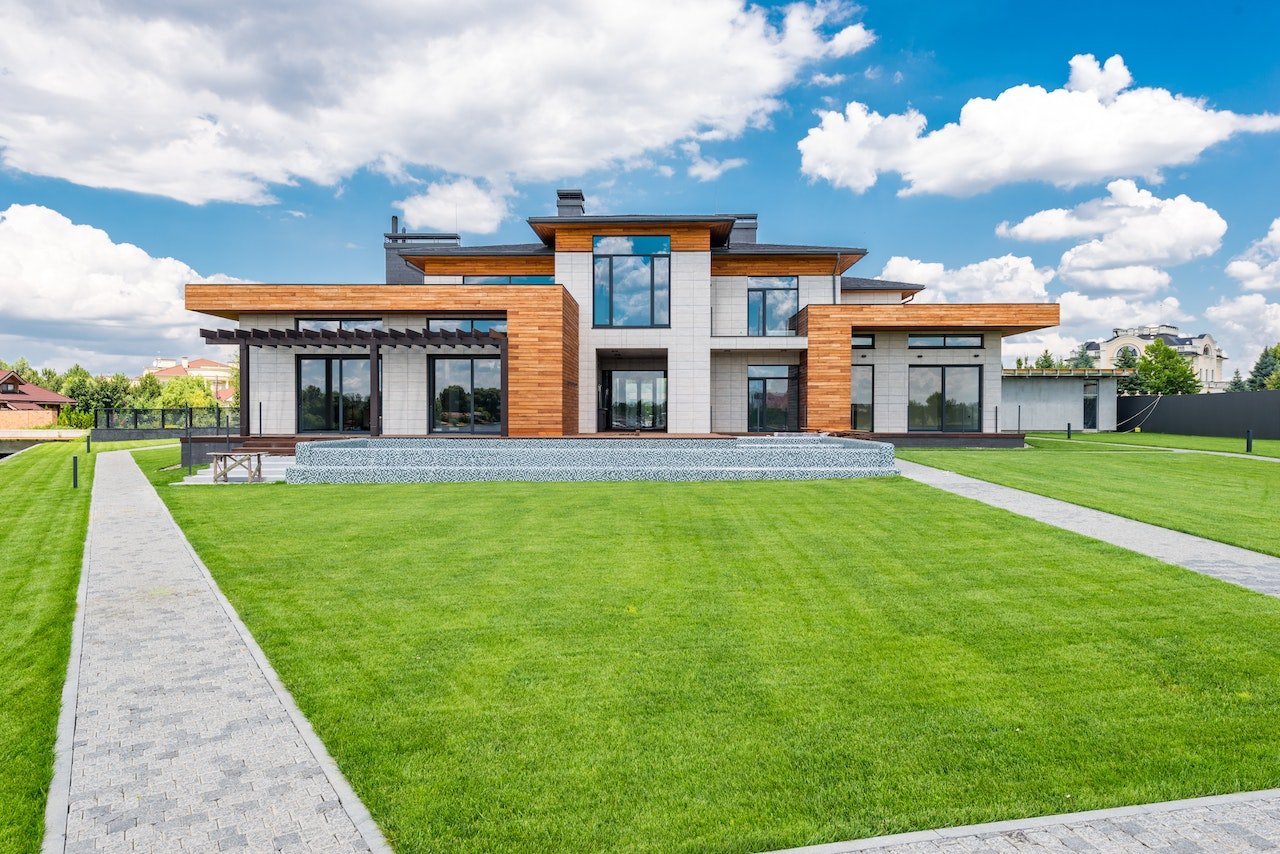
In recent years, having a modern and comfortable outdoor area has become a must-have for homeowners. It is the perfect space for just about any occasion, including entertaining guests, hosting parties, and relaxing after a long day at work, and you can even use it as a home office.
The idea of having the best outdoor space is all good and well. But it only works if it is styled and decorated properly. Decorating your outdoor living area is slightly different from styling your home’s interior. There are so many things that differ. One of these things includes rugs. For example:
- Do aloha rugs fit outdoor living areas?
- What material should the rugs be?
- Can I use area rugs and runners outdoors?
- Can I use a neutral-colored rug in outdoor areas?
In this article, we will highlight some tricks you should and shouldn’t do when decorating outdoor living areas with rugs.
The Dos Of Decorating Outdoor Living Areas:
- Designating Different Areas
Generally, the outdoor living area is an open-plan space that leaves you with plenty of room, including a small seating area, cooking area, and plenty of space to entertain guests. As a result, your outdoor living space will need to be separated. One method to designate areas is to use rugs.
The cooking or grilling section will not need a carpet in the outdoor area as you are very likely to drop food or drinks resulting in the rug needing to be cleaned quite often. In this instance, a rug is more suited for a seating area.
The Aloha rug is a popular type of rug used in outdoor areas. Rugs from the Aloha collection are hand-woven and made from coir material. Coir is a type of coconut fiber that is durable and long-lasting. These rugs are best suited for outdoor areas as they are bright with different types of patterns, which include a tropical vibe to your home. When using rugs in the seating area, ensure that the chairs surround the rug and that only the edge of the chairs sits on the rug.
Copyright: Collov Home Design on Unsplash l Licence: CC0 Public Domain
- Set A Theme For Your Outdoor Area
Similar to decorating the inside of your home, you will want to have a set theme when styling outdoor areas. In most cases, the outdoor area is the direct path between a room in your home and your garden. As such, the theme of the room should match the theme of your outdoor area. This will create a type of flow and connection. Although the colors do not have to match completely, it will be best if the base tone of the areas matches.
For example, if the room that leads to the outdoors has a brown or wooden theme, then the outdoor furniture should also be brown. This will create an aesthetic as there will not be a complete clash in colors. One way that you can use to create this aesthetic is to use a large area rug in the seating area of the outdoor area. The rug will create a cozy atmosphere whilst setting the theme.
Copyright: Steven Ungermann on Unsplash l Licence: CC0 Public Domain
The Don’ts Of Decorating Outdoor Living Areas
- The Risk Of Invasive Plants
Plants, shrubs, and even flowers are necessary for your outdoor area. They have an appealing look and create a calm and energetic environment. However, invasive plants such as Japanese Knotweed and English Ivy are not suited for outdoor living areas. Although these plants are beautiful, they tend to grow wild and, in some cases, create a network of roots that can be hard to get rid of. As such, you don’t want to use invasive plants in outdoor areas.
In most cases, plants are used to occupy empty spaces and create a visual appeal. Instead of using too many plants, you can include a pedestal or table with a rug underneath to create visual appeal.
- Refrain From Layering Rugs
Layering rugs is always a good idea when decorating indoors as it can form a homely atmosphere. However, for the outdoor areas, layering carpets is not necessary. The main aim of layering rugs is to include some variation in texture or to bring out the color in a room. This is not necessary for the outdoors. For outdoor areas, simplicity is best. Therefore, it is best to only use one or two carpets when decorating. In this way, you can ensure that the outdoor area is not overcluttered.
Decorating Outdoor Spacing Using Rugs
The outdoor area is one of the busiest spaces in your home. Therefore, creating a cozy and comfortable outdoor living area is key. To help you style and design your outdoor area, we have highlighted a few ideas on what you should and should not include.
Home Care & Living
Tips for Choosing Patio Furniture That Suits Your Outdoor Space

Introduction
Traditionally, living and entertaining were primarily contained within the four walls of your home. Today, however, many activities have been moved outdoors where even small homeowners can increase the value of their property by enhancing outdoor spaces. When selecting outdoor furniture, it is important to consider a few factors: Say you want to host a barbeque where your guests will get to enjoy vidaXL patio furniture with the expandable dining table.
Perhaps you’re hosting a few friends on the deck with lounge chairs and comfy sofas, sipping drinks as you play games. Whatever the occasion may be, it is advisable, to begin with, ideas of the kind of gatherings you’re hosting. As you choose patio décor, remember that it should be able to cope with the harsh elements as well as be appealing to the eye. Discussed in this article are factors to consider when investing in outdoor furniture:
- Weather Conditions
Does your environment experience scorching sun at midday, rain, or high winds? Is the weather humid like at the coast or is your area hot and dry? Does it snow during the winter? All these factors influence your choice of patio chairs and tables. Regardless of the material used to make the furniture, exposure to the elements will affect its quality and longevity.
Steel and wrought iron may be sturdy but are bound to rust if not galvanized or painted. Wood and plastic are vulnerable to exposure to UV rays and could start disintegrating after some time out in the sun. Consider a storage area or covers for when the furniture is not in use
- Colour
The choice of colour is also an important aspect of outdoor furniture. If you already have a theme for your outdoor area, carry that theme into your furniture to make it look more cohesive.
In addition, you can use your furniture to make a bold impact while creating a relaxing atmosphere. Pick out black outdoor chairs and tables and pair them with neutral backdrops to create an ambience of serenity.
- How big is your space?
Choosing outdoor furniture is all about finding the right size for the space you have. From dining sets that can seat a family of 10 to more intimate options that can sit two, you have plenty of options.
Hanging chairs are also a great option if you want to maximise space and have an exquisite element on your patio. Used appropriately, this tip can create a sense of harmony and tranquillity on your patio.
- Comfort – Do not Overlook this
The purpose of outdoor furniture is to relax, so make sure it is comfortable. For chairs and lounges, you can always add more comfortable cushions. Remember that outdoor furniture will be largely unusable without niceties like cosy cushions. It is important to select or use mildew and fade-resistant fabric and lightweight filler that can dry quickly after exposure to moisture.
- Consider Your Budget
A quality piece of furniture will always outlast a cheap one, so it is advisable to invest in the best you can afford. Look for materials that are durable but less expensive like heavy-duty resin or aluminium.
Depending on the season and where you buy outdoor furniture can vary in price by as much as 40%. You may find unadvertised bargains at large chain stores that have seasonal departments.
Final Words
Spending time outdoors should always be a stress-free experience. The furniture you place on your outdoor patio should enhance and not take away from the experience. Taking into account the information discussed in this article can help you buy the right outdoor furniture.
Landscaping
18M New US Veg & Fruit Growers See The Benefits
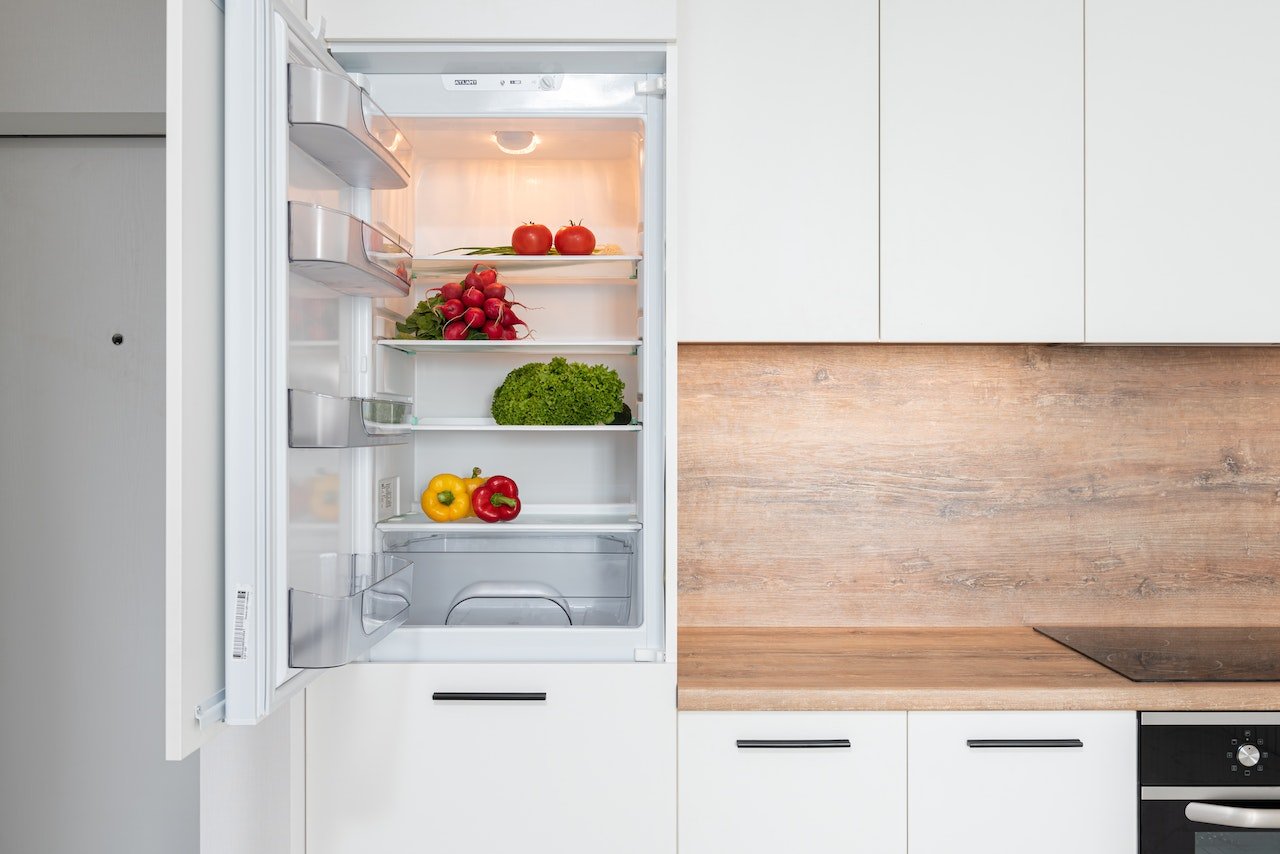
With the cost of living crisis and the current energy issues engulfing the United Kingdom and Europe in particular, the United States has issues of its own given the current oil price and the need to move to a cleaner, cheaper, greener future.
Time seems to be more on the US’s side as we approach winter and the extra costs associated with colder temperature spells, but as people look to 2023 wondering how inflation and the varying stock markets will continue to be affected by corn and crop problems following Russia’s illegal invasion of Ukraine and the ongoing war, a household income is no bar to taking up a new hobby and turning your hand to growing vegetables.
In the current climate and definitely with a mind to the future, growing some of your own is not only an enjoyable way of spending a little bit of time, but down the line, it could also help to save you a little bit of cash. Predicting future inflation is akin to placing a bet with someone like novibet.ie , when gambling you always choose the best, but safest odds, that work in your favor and that is no different to now planning how you could lightly reduce your shopping spending.
Particularly during the period of the varying level of lockdowns across the country, people obviously had a little more time on their hands and many turned to growing vegetables and fruit, and new research has shown that going the green fingered route is more popular than ever across states.
Size is not relevant, you can go the full kitchen garden route, or simply use a few patio pots, and if you are limited for space, windowsills are more than good enough for dipping your finger in and ending up with some cheap, but incredibly tasty fresh food.
In a recent study, the National Gardening Association found that 35% of US households were now growing their own vegetables, fruits and other food and that figure is up by an equivalent 18 million new gardening converts. On average, their research found that the average garden in that 35% are now producing at least $600 worth of produce a year. Individual yields will not be the same obviously, but it just shows how financially relevant this hobby can be and even age is no issue. Executive Director of the NGB, Diane Blazek, explained.
‘We see a lot more millennials as part of the new gardeners and a lot more men. And now, with inflation, more people want to grow their own food to save money. We find that this happens every time there’s a recession or excessive inflation.’
The beauty about this green fingered pursuit is it truly depends on your own literal tastes. Tomatoes is the most popular crop with 86% of respondents listing these – for those with a garden a glass greenhouse is good enough for a bumper crop, but pots on a city balcony or bright windowsill will provide plenty.
Cucumbers are the next favorites at 47%, with sweet peppers (46%), runner beans (39%) and carrots (34%) quickly following in the list of the preferred things to grow – again the growth in simply using pots is massive here, and Diane added.
‘People want to garden, but they don’t have the room like before, so container gardening is growing in popularity. Breeders are responding by breeding varieties that do well in containers, like Pepper “Pot-a-Peno” (a pepper plant for a hanging basket), “Squash Goldilocks” – a bush-type squash, and Pea “Snak Hero”.’
Other newer pot/basket edibles include blueberry “Midnight Cascade”, and “Little Miss Figgy” but there will definitely be something to suit your fancy.
Home Care & Living
Fix and Flip Loans: Building Your Rental Portfolio in Texas

Introduction
A luxurious retirement lifestyle may be financed over time by building and expanding a real estate portfolio. Real estate investment trusts (REITs), foreclosed houses, and rental properties can all be included in your portfolio.
You may support your retirement with a number of rental properties, each producing a profit through the fix-and-flip process.
While you might not have to perform the laborious tasks yourself, you will probably need to oversee the project. Simply secure the required permits and approvals from the relevant authorities for specific activities.
In this article, we shall discuss how you can build a rental portfolio with fix and flip loans in Texas.
What Is The Fix And Flip Process?
When a businessperson purchases a house with the intention of selling it again soon after, this is known as a “flip.” That “short time” is defined by many mortgage lenders as any property that is purchased and sold within a calendar year.
Don’t give up if it takes your project longer than 12 months to complete. Numerous lenders can still provide finance for initiatives or circumstances that may call for a lengthier loan term.
How To Maximize Opportunities With Fix And Flip Loans
Fix and flip loans are a subset of bridge loans, a larger class of loans. Bridge loans frequently include two parts: a purchase component and a rehabilitation or building component.
Some real estate investors engage in speculation by putting considerable effort into locating off-market transactions that they may buy at prices below market rates. Bridge loans for commercial real estate can also be used for other purposes.
Here are four considerations to have in mind when you start looking into repair and flip lenders:
Quality Of The Property
One of the most important tips for flipping a house is finding the right one. Quality of the property is everything when it comes to choosing your next property to buy, market and resell.
You’ll also want to check the average salaries in the area. Finally, it’s best to find a home that you can flip and sell quickly.
Real estate appraisals are important for purchasing financing, pricing, investment analysis, insurance, and taxes.
New construction typically offers attractive pricing, custom options, and modern amenities. Risks include delays, increased costs and uncertainty in newly developed areas. Existing properties offer convenience, quick access, defined improvements and low costs.
Location Of The Property
Location, location, location is still the most important factor in real estate investing success, and this adage holds true today. Residential property assessments give significant weight to the state of the neighborhood, open space, breathtaking views, and closeness to amenities.
Accessibility to markets, warehouses, transportation hubs, roads, and tax-exempt areas is vital for appraising commercial real estate.
When choosing where to situate a property, it is essential to consider the medium- to long-term perspective for how the area is likely to evolve throughout the investment time.
For instance, the peaceful area behind a house may one day become a bustling manufacturing facility, which would decrease its value.
Examine in great detail the ownership and intended usage of the neighboring properties where you seek to make your investment.
Market Your Property Well
Maintaining profitability at the time of sale is facilitated by avoiding irrational upgrading expenses. Rather, concentrate on making smaller or less expensive improvements that dramatically raise the property’s value or appeal. If no one is aware that the property is for sale, it is of little use to rebuild it.
Some recommendations for marketing a property are: Emphasize attributes that fit the local market. For example, images and social media platforms like Pinterest and Facebook may be useful for marketing a property that is for sale.
Since images provide potential buyers with a better idea of the property’s general condition than text descriptions, they will often be more inspired to make a purchase.
How can you get your start in the house-flipping business?
The profitability of selling a property is improved by modest or less expensive enhancements (such as changing the lights or painting the inside). Save the expensive or extensive house improvements for those that are necessary to comply with local building requirements.
Before making a purchase, be sure to check each property, which is one of the important things to think about.
Examine the local market to see what sells and what might be improved or modified to match the cost. Look for houses where small repairs or improvements can significantly boost their value.
Greenhouses
Budget-Friendly Home Additions
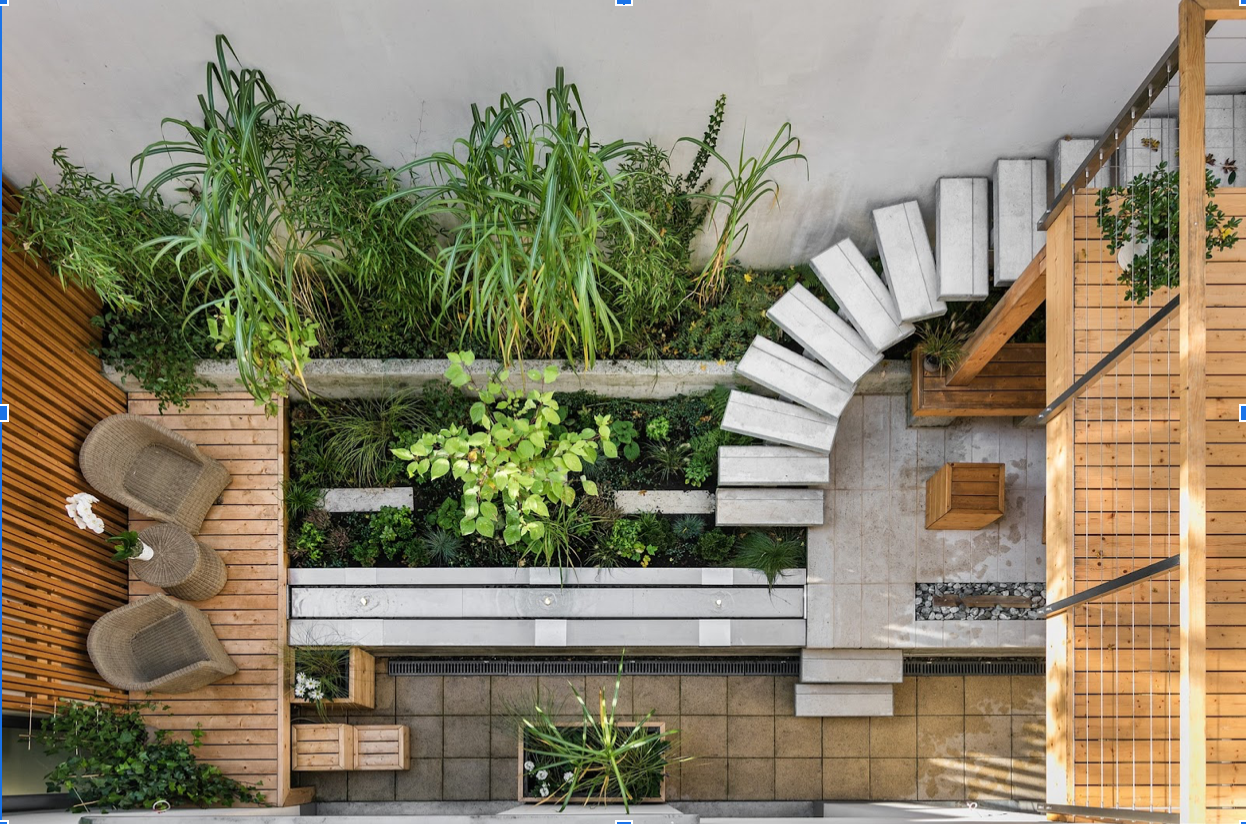
With the current state of the real estate market, affordability is more important than ever when looking for a new place to live. Every day, it seems like there’s a new story about how home prices are getting more and more out of control. With more and more people looking for places to live, it’s no wonder that prices are continuing to go up. The good news? Even though prices are rising, there are still plenty of ways to get into the real estate market without spending all of your savings. These low-cost DIY home improvement ideas will make you feel like you spent more money than you actually did. Although they may not be as exciting as buying your first home, making additions to your current house can make any place feel more open and inviting!
Add a Deck for Morning Breathing or Evening Sunsets
Even if you can only step outside for a few minutes, having an outdoor space can make a big difference in your daily routine. A deck can be your morning breathing space, a spot to watch the sunset, or the perfect spot to plant a garden. If you’re looking to add an outdoor space without breaking the bank, you can set up a tent and bring out furniture, such as a summer outdoor seating. With the right design, an area under a deck can be used as an office or a play area for kids, or even both at the same time. Adding a deck to your home doesn’t have to cost a fortune. If your question is, can I paint cedar decking? You can definitely find the answer to that by seeking advice from the experts or you can even read a blog about this.
Add on to the Backyard
If you’re lacking the space for a full backyard expansion, another affordable solution is to build an addition or extension onto your existing backyard. By adding an extension to your backyard, you can create additional space to enjoy while also increasing the value of your home. Landscaping can be a popular addition to your backyard, as it can add aesthetic value, as well as decks and pools. If you have any extra space in your yard, you might be able to add a garden, a patio, or even a fence.
Add a Sitting Room
Some people feel most comfortable spending their time in a less-active area of the home, such as the living room or bedroom. By adding a sitting room, you can help create a sense of flow and unity between the kitchen and the other living areas in your home, making your house feel more like a cohesive unit. This can be done by adding a new wall, a desk, a bench, or anything else that would block the view. You can partition off a living room from the rest of your house with a curtain or a special kind of fabric that could be an alternative to a wall. If you would prefer a temporary division, several different upholstery fabrics can be used and changed as necessary.
Add Something That Grows
Incorporating another living thing into your home decor does not have to be a costly endeavor. You can find beautiful plants for a very reasonable price and add them to your home in just a few easy steps. Mushrooms can also be a great, natural addition to your home improvement project. Some mushrooms can actually do well when kept in the house, so you wouldn’t have to worry too much about them and can tend to them when needed. If you don’t think foraging for mushrooms is for you, then you can always purchase a mushroom growing supply kit that you can keep indoors. Not only are these easy home improvement ideas budget-friendly, but they’re also a great way to introduce your family to the rewarding hobby of gardening. If you or anyone in your family is new to gardening, or if you have kids who haven’t shown interest in gardening yet, adding something that you can grow in your home is a great way to get them interested.
Remember to Enjoy and Save Money as Well
It’s essential to select a home improvement project that is also within your budget. There are a number of ways to renovate on a budget, ranging from small changes to complete overhauls. Depending on the level of renovation you’re considering, you can expect to spend anywhere from a few hundred dollars to tens of thousands of dollars. The cost of a home renovation is important to factor in, but it shouldn’t be the be-all and end-all of your decision. Where you spend your money matters, and a renovation is an excellent opportunity to make your home more sustainable. If you want to be economical with your renovation project, you should select one that will upgrade the usefulness of your total living area without being too expensive.
Landscaping
What Is Xeriscaping and Why Should You Consider It For Your Lawn?
Grass lawns aren’t sustainable in many parts of the United States. They require a lot of maintenance and water to stay green and look nice. This amount may be too much maintenance for many people, but you may still want a gorgeous lawn.
If this is you, you should consider xeriscaping!
What is xeriscaping?
Xeriscaping means dry scaping. It is a style of landscaping that lowers the need for irrigation. If you own a lawn in hotter parts of the United States, you may have heard of xeriscaping already. Xeriscaping is for people who want a beautiful yard while saving water, especially during droughts.
Xeriscaping may be the solution to a lawn with high water needs. With xeriscaping, you can transform your yard with native plants with lower water needs. Xeriscaping is excellent in places like Nevada and Utah, which have sweltering and dry summers.
Native plants
Xeriscaping uses drought-tolerant, native plants, which you can get from Utah seed companies. These native plants can survive on the amount of water that the area typically gets, which often results in these plants being drought-tolerant in locations like Nevada and Utah.
These may be plants like succulents or drought-tolerant ground cover like Allegheny spurge. Purple coneflower, a plant native to Texas, is popular for being incredibly drought-tolerant while still being a striking flower.
Replacing the lawn
Xeriscaping typically replaces a grass lawn with rocks and mulch or soil. Using these eliminates the water needs that grass has. You plant the drought-tolerant native plants and group them with plants of similar water needs.
Irrigation
Another part of xeriscaping is using more efficient irrigation for your lawn. Drip irrigation systems work well for xeriscaped lawns. These save on water usage by delivering water to the plants more efficiently than using a hose or traditional sprinklers.
Why should you consider xeriscaping for your lawn?
You should consider xeriscaping your lawn if you live in a dryer area that often goes through droughts or a place that doesn’t have access to a lot of water. Your yard can still look beautiful, green, and colorful while not needing as much water as a traditional lawn.
It lowers the amount of work you have to do to maintain your lawn because the plants need the same amount of water that the area naturally gets. They also have the exact sunlight needs the area offers. So if you want to keep that look, you don’t have to eliminate the whole grass lawn.
You can use beautiful hardscaping like rocks and footpaths, which reduces the amount of space you have to dedicate to plants while still having a beautiful lawn.
Xeriscaping cuts down on cost, too, since it saves water and needs less upkeep. Drip irrigation systems can drastically cut your water bill. Grouping plants together based on water needs can, too. Needing to mow less also reduces your water bill and helps the environment by lowering gas consumption.
Before you go
Xeriscaping is a great way to keep an eco-friendly lawn without sacrificing beauty. If you live in hot regions, you may greatly benefit from trying this landscaping method. Anyone anywhere can benefit from planting native plants in their lawn.
Landscaping
How to Start a Landscaping Business
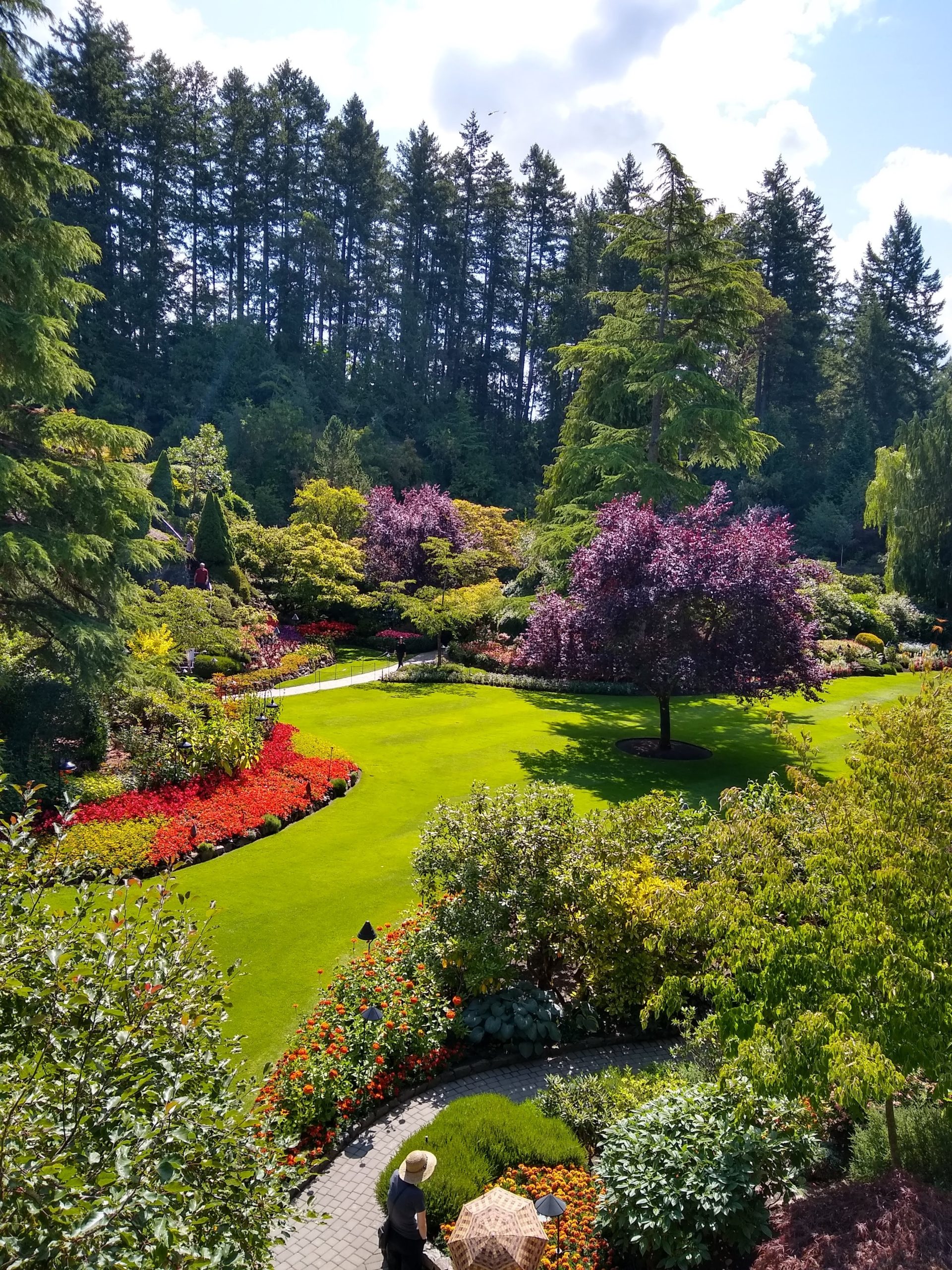
Landscaping and horticulture are disciplines that occupy a unique space in the economy, being a unique marriage of popular hobby and lucrative business opportunity. There are many green-fingered garden enthusiasts who will have considered taking their first steps into monetizing their hobby – but what are the steps to making such a move?
Settle on Your Niche
While it may be tempting to hit the ground running and start taking clients immediately, it is of instrumental importance to the long-term success of your business that you take the time to plan your offerings properly. Taking any and every job may seem a shrewd idea to guarantee short-term profits, but can harm your long-term growth strategy and even cause you to overstretch beyond your capacity.
Instead, you should decide on a niche for your business to specialize in. While this limits your client pool, it also enables you to raise your rates and stake a claim to a high-demand corner of a wider market. Since you are not being forced to spread thinly over a wide range of work, you can stand to invest in specialized tools and lead in your niche.
Formulate a Business Plan
The next step in this approach is to draw out your business plan more comprehensively. Start with the months running up to launch. What equipment will you need to buy? Will you be a sole-trading freelancer, or will you start a limited company and hire staff? Next, you should plan the first 12 months of business in detail, and draw up a five-year plan for growth and development.
Build Your Business Structure
With your plan secure, you can begin to make the various investments and arrangements that will form the structure of your business. This will naturally include the purchasing of tools and equipment, but should also necessarily incorporate research into logistical, legal, and protective services.
For one, if you are starting a limited company with staff, you may not have the financial nous to manage payroll and accounting – in which case, outsourcing to a chartered accountant can be a wise, cost-effective business measure. You can check it out at this website. You will also need to ensure you receive correct and relevant legal advice for business growth and staffing.
It is important that you choose your outsourcing businesses and legal advisors carefully. With regard to the latter especially, missed deadlines or incorrect advice can lead to damages, and amount to professional negligence on the part of the solicitor or advisor in question. While you would be liable to make professional negligence solicitor claims in these instances, it is better to avoid the eventuality entirely.
Marketing and Launch
All that remains is to launch your business. Depending on the nature of your niche and work, your marketing strategy is likely to differ. For domestic landscaping services, word-of-mouth marketing might be best for helping you gain the trust of local communities. For corporate work on commercial premises, a targeted marketing approach with flyers and a strong digital presence may better capture the attention of administrative staff.
Indoor Gardening
DIY Guide to a Garden Makeover
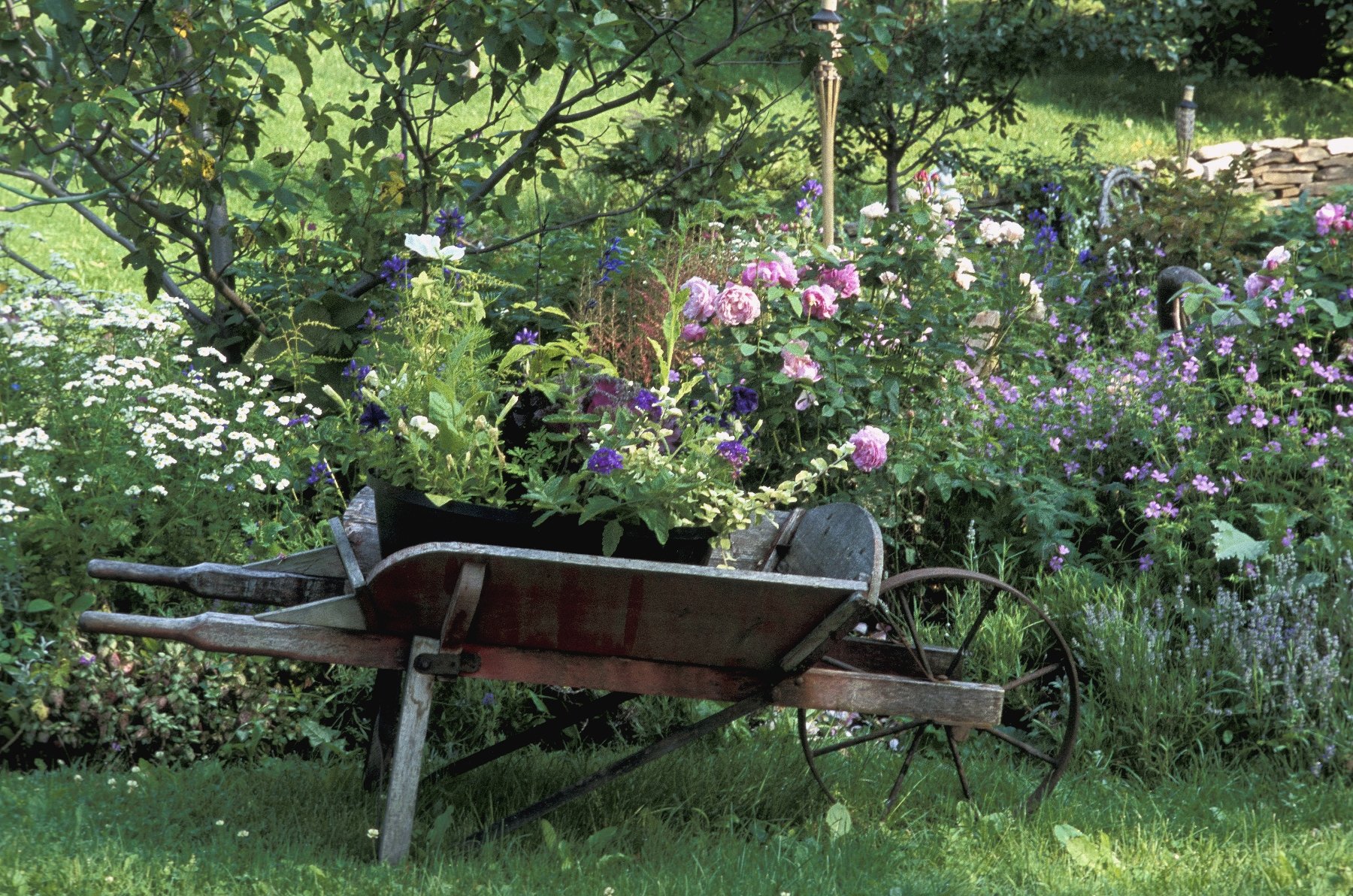
Are you thinking of revamping your garden space? If so, you’re not alone. During the pandemic, 78% of Americans made outdoor upgrades as people sought to reconnect with nature. It could make better sense to refurbish what you have than move, too, especially considering recent increases in the cost of moving.
Planning a garden makeover might not seem like as much work as a new kitchen or a loft conversion, for example. But while you might experience less disruption, you’ll still need to work through the process carefully to achieve the results that you want.
Below, read a quick DIY guide to a garden makeover.
Analyze your existing space
You might just want to rip up everything and start again. But it’s wise to analyze your existing space and measure up to understand the resources with which you, or a professional, are working.
You’ll want to spend time in it at different times of day too so that you can work out which spots receive light when. A south-facing garden will get more sun than a north-facing garden, for example, and will suit different plants as a result.
Make a wishlist
With these basic details in hand, next start creating a wishlist of ideas that you’d like to incorporate. This could range from practical features like seating, lighting, and dining space, to decorative elements like raised beds, potted plants, and other features.
Pinterest and Instagram are good places to get inspiration, as are garden centers, gardening books, and exhibitions. You might need to include key problems to solve, too, such as sloped or uneven ground or waterlogging issues.
Set a budget
This step is where you start working out what’s truly possible. While you might have had a rough figure in mind to begin with, your wishlist will allow you to start costing up the project based on the materials and labor needed.
Part of this means working out what you can do yourself or with help from friends and family, and what’s best left to professionals. You might need to reassess your finances to get the result you truly want.
Draw up your plan
Finally, it’s time to unleash your inner architect and draw up your garden plan. You could do this on graph paper to keep everything to scale, which will help significantly come the time for execution.
Start by outlining your garden based on the measurements that you took, then include structural elements like buildings, walkways, and fences. Finally, start adding in your new features like seating and plants.
Sure, you’ve still got to source the materials and do the hard work. But nailing the planning stage will improve your chances of creating the garden of your dreams.
Landscaping
5 Landscaping Designs to Improve Your Home’s Curb Appeal

Whether you’re selling your home or want to make it look nicer, improving your curb appeal is a great way. There are many ways to do this, and one of the most effective is landscaping, but how to design my backyard landscape, you might ask. By adding some strategic landscaping features, you can improve the look of your home and its value. Here are some of the best landscaping designs to improve your home’s curb appeal:
A Garden With Colorful Flowers and Plants
A well-designed garden can add beauty and value to your property and provide a respite from the hustle and bustle of daily life. When choosing plants for your garden, select varieties that will thrive in your local climate. Once you plan, you can begin planting in spring or early summer. To keep your garden looking its best, be sure to deadhead spent blooms and pull up any weeds.
An Elegant Porch With a Rocking Chair or Bench
Your home’s front porch is the first thing visitors see when they come to your door, so you want to make sure it makes a good impression. An elegant porch with a rocking chair or bench will add to your home’s curb appeal, while giving visitors a place to relax and enjoy the outdoors. You can find porch furniture in various styles to suit any taste, and you can even add personal touches like flowers or hanging plants to make it your own.
A Well-Manicured Lawn With Trimmed Hedges
This is a classic way to boost your home’s curb appeal. Keeping your grass healthy and neatly trimmed will create a neat and welcoming look that will make your home stand out from the rest. In addition, well-groomed hedges can help to frame your home and create a sense of privacy and intimacy. If you’re unsure how to start, you can hire an experienced landscaper to help with your landscaping project.
A Patio for Relaxing Outdoors
You can customize a patio to fit your home’s style and needs. For example, you can add built-in benches, planters, and pergolas to create a more inviting space. You can also install a fire pit or outdoor kitchen to make entertaining more enjoyable. If you have the space, you may even want to add a swimming pool or hot tub. Whatever features you choose, a patio can be a great addition to your home and an excellent way to improve your curb appeal.
A Stone Pathway Leading Up to the Front Door
The front of your home is what greets visitors, and you want to make sure it’s sending the right message. An easy way to do that is by adding a stone pathway leading up to the front door. Not only does this add a touch of elegance, but it also gives visitors a clear path to follow.
A pathway can also help to protect your lawn from wear and tear. Choose a material that complements the style of your home, and be sure to lay the stones in a pattern that is pleasing to the eye. A professionally designed stone pathway can make a world of difference in your home’s curb appeal.
These are just a few landscaping designs that can improve your home’s curb appeal. With some planning and effort, you can create a stunning outdoor space that will make your home the envy of the neighborhood.
Home Care & Living
Suggestions for Renovating Small Spaces

Many homeowners feel limited by their lack of square footage, but with a few tips, you can make your small space open and inviting. Here are some suggestions for renovating small spaces to help you make the most of your home.
Keep It Simple
Keeping it simple means avoiding overly complicated designs or excessive embellishments. Instead, focus on creating a clean and uncluttered look. Trying too much in a small space can make it cramped and cluttered. Instead, focus on a few key elements that will make the most impact. For example, replacing old flooring and painting the walls can transform the look of a room without requiring a lot of time or money. The beauty of simplicity is that you can DIY most of these renovations, saving money.
Make a Plan
When renovating a small space, one of the most important things you can do is make a plan. Trying to wing it will only lead to frustration and a final product that falls short of your expectations. Instead, take some time to sit down and map out what you want to achieve. Once you have a clear idea of what you want, it will be much easier to move forward with your renovation. When making your plan, you must be realistic about what you can achieve. Don’t worry if you’re unsure where to start; renovation professionals like Easy Reno can assist you if you need help.
Get Creative With Storage
No matter how big or small your space is, there’s always a way to be creative with storage and make the most of what you have. If you’re not sure where to start, here are a few tips:
- Think vertically: When space is limited, it’s crucial to think about using all the available space, including vertical space. Wall shelves and racks are great for storing things like spices, cookbooks, and other kitchen essentials.
- Invest in multipurpose furniture: For example, a coffee table with hidden storage is perfect for hiding away books, blankets, and other household items.
- Get creative with nooks and crannies: Every home has those little nooks and crannies that can be hard to know what to do with. Instead of leaving them empty or filling them with random clutter, get creative and use them for storage. You can put baskets or bins in unused corners or use curtain rods to hang up clothing or towels.
Choose Furniture Carefully
Multi-purpose furniture is always an excellent choice for small spaces, as it can help to maximize the available space. For example, a coffee table with built-in storage can provide a place to stash books and magazines while offering a surface for snacks and drinks.
Consider a daybed that can serve as a sofa and a guest bed. When selecting furniture for a small space, it is also essential to consider proportion. For instance, using smaller-scale furniture will make a room feel more open and airier, while oversized pieces will make it cramped and cluttered.
Choose Colors Wisely
The right color scheme can make a space feel bigger, brighter, and more inviting. Conversely, the wrong colors can make a space feel cramped, dark, and dull. Light and neutral tones are usually the best bet when choosing paint colors.
These colors will reflect light, making the space feel open and airy. If you want to add a pop of color, consider using it as an accent rather than painting the entire space one color. You can add accents in different forms, including furniture, accessories, or even wall art.
Small space living can be challenging, but it doesn’t have to be. These tips will help you make the most of your small space and create a functional and beautiful home.
Home Care & Living
The Amazing Benefits of Adding an Indoor Garden to Your Home
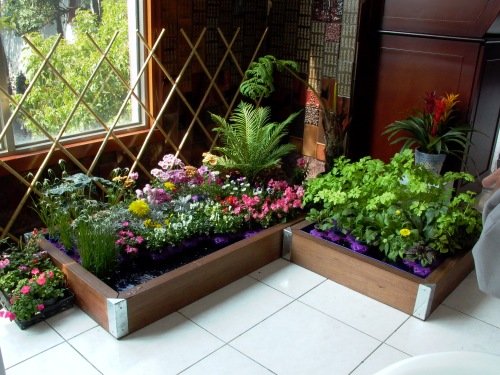
Sharing your home with houseplants will instantly make you happier and more motivated, according to studies. Indoor gardening is a growing trend, with Instagram searches for #indoorgarden increasing by more than 50% in just a year. The health benefits of indoor plants are well-known, but there are some other big advantages of bringing your garden indoors, too. Let’s take a look at some of them.
Year-round gardening A new study has found that doing gardening activities, including selecting and planting seeds and harvesting edible plants, improved the mental health of participants. The problem with only having an outdoor garden is that most people tend to only do gardening activities in the spring and summer, so they often experience dips in the mood. When you have an indoor garden, you can reap the mental health benefits all year round as you’re able to work on it whenever you like.
More productive mindset Are you one of the 7.1% of U.S. workers currently working from home? Even if you’re not, there’s a good chance you will in the future as it’s estimated that 32.2 million will do so by 2025. Having greenery in your home officeimproves productivity levels by as much as 15%, according to research. Plants are also good for keeping your attention and could boost it by 20% when you’re working at your desk. The theory behind this is that plants keep us calm which means you can focus all your energy on the job you’ve got to do rather than on other things.
Healthier eating An indoor garden doesn’t just have to improve the aesthetics of your home. An indoor garden gives you the opportunity to grow a variety of vegetables and herbs that you’re sure to want to devour. Studies show that people eat more vegetables when they grow them themselves. Your diet will also be healthier because the veggies you eat won’t have been contaminated with pesticides and herbicides. Tomatoes, carrots, kale, cauliflower, peppers, and potatoes are just some of the vegetables that you can grow indoors. And you can season your dishes with homegrown herbs, such as basil, chives, thyme, and rosemary from your indoor garden.
Better humidity levels Ideal humidity levels in a home are between 30 and 45%. If the humidity in your home is too low, you may experience negative health effects, including sore throat, itchy eyes, dry skin, and frequent cold symptoms. Your home can be negatively impacted, too, as low humidity can damage wooden furniture. Water from plants evaporates into the air, making it moister and improving the humidity levels in your home. Some of the best indoor plants for boosting humidity include areca palm, ferns, peace lily, rubber plant, and English ivy. It’s a good idea to include these in your indoor garden if your home has humidity issues. Indoor gardens are growing in popularity for good reason. Physical and mental health are some of the biggest benefits of having an indoor garden, but your home and eating habits can also benefit.
Growing Tips
5 Tips to Growing Top Shelf Marijuana

Successfully growing topshelf marijuana is quite a challenging task – especially if you are a beginner. It requires plenty of experience, knowledge and most importantly, patience. While it may seem daunting at first, it’s actually not as hard as you think. To help you grow the absolute best weed, we’ll be outlining the top five growing practices responsible for cultivating high quality craft cannabis.
- High Quality Genetics and Starting Material
Strain genetics are the foundation of any successful crop. In order to grow top shelf buds, you’ll need to start off with top shelf seeds. In my experience, it is best to do some research considering all cannabis strains possess their own attributes which can give insight on potency levels, taste and CBD levels. By selecting strains that have been bred for quality and potency, you’ll give yourself the best chance for a successful harvest. Genetics are also important for selecting the correct grow method. Some strains are better suited for indoor growing, while others do better outdoors. By selecting the right genetics, you’ll set yourself up for success from the start.
- Soil Quality
Similar to genetics, the quality of soil you utilize during cultivation plays a crucial role in your plants growth. Soil quality is extremely important when growing cannabis, as it directly affects the quality and yield of the buds. Poor quality soil can stunt a cannabis plant’s growth, leading to smaller yields and lower quality buds. Conversely, high quality soil will help a cannabis plant grow healthy and robust, yielding larger, more potent buds.
One way to ensure that your soil is high quality is to mix in organic matter. This could include compost, manure, or worm castings. These organic materials help to improve the structure and fertility of the soil, while also providing essential nutrients for the cannabis plant. Additionally, using a soil mix specifically designed for cannabis will help ensure that your plants are getting all the nutrients they need. A well-fed cannabis plant will produce large, resinous buds that are packed with THC and other cannabinoids. By using high quality soil and incorporating organic matter into it, you can give your plants the best chance at producing top-quality buds.
- Properly Dry & Cure Your Buds
When it finally comes time to harvest your precious buds, a thorough drying procedure followed by properly curing your buds can go a long way. These two final steps can greatly influence characteristics such as taste and aroma which ultimately have the ability to separate mediocre cannabis from craft bud. Drying is typically done in 60-70 degrees fahrenheit room with 45-55% humidity. As for curing, place your dried cannabis buds in airtight containers for at least 2-3 weeks to flush themselves of chemicals and prevent the formation of mold.
- pH Levels
When growing top shelf weed, it is important to regularly check the pH levels of the soil or growing medium. An ideal pH level for cannabis is 5.5 – 6.5, as this provides the best environment for the plant to grow and thrive. If the pH level is too high or too low, it can cause problems for the plant, such as nutrient lockout and wilting. For instance, as pH levels rise above 7.5, the cannabis plant will be unable to process fundamental nutrients such as copper, iron and zinc. By keeping a close eye on the pH levels and making adjustments as needed, you can help ensure that your cannabis plants grow healthy and robust.
- Air Quality
The quality of air is critical when growing high quality weed. Poor air quality can cause problems such as mold, mildew and pests. All of these can damage and/or kill plants. Good air quality, on the other hand, helps to ensure healthy, robust plants. Ventilation is essential for providing fresh air and removing stale air. Humidity should be kept at the correct level of 60% to avoid problems with mold and mildew.
Final Thoughts
By following these five tips, you can make the process of growing craft cannabis a little bit easier and less stressful. Just remember to always use high quality seeds and soils, take your time to properly dry and cure the buds, and routinely monitor the air quality and ph levels in your grow room. With a little bit of effort, you will be on your way to harvesting some top-quality buds from your own garden!
Landscaping
Lawn Care 101: The Best Options for Your Home
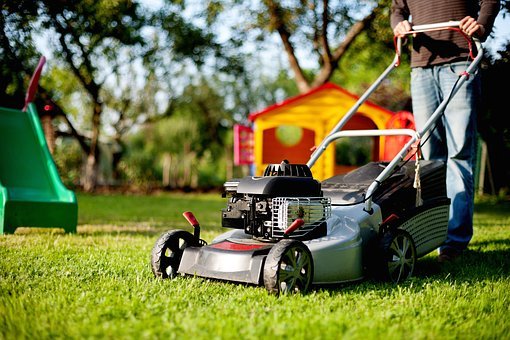
A lush, beautiful lawn can be the defining feature of a front yard. It’s the first thing people see when they drive past your home and can add a good deal of curb appeal if you plan to sell soon.
However, most homeowners know that keeping a lawn looking its best can be tricky. From knowing when to plant your grass to getting your soil and seed combination just right, a lot goes into the perfect lawn.
Related website: HISEA Waterproof Boots
Seed options
Your seed options are the first thing you should consider when planning your lawn. There are three regions in the United States for grass: the cool season zone, transition zone, and warm season zone. Each zone has specific types of grass that thrive best.
Some grasses are versatile and will thrive in multiple zones. For example, a fine or tall fescue mix or Kentucky bluegrass will do well in the cool and transition zones. Similarly, Bermudagrass and zoysiagrass work best in warm or transition zones.
Planting season
Once you choose your seed mix, you’ll need to confirm when you should plant it. Each region has its own rules, so to speak, about when to plant grass. You should do your best to follow them for the best chance of success.
You should plant cool season grasses in the fall or spring. You’ll want to put the seed down before the first frost to ensure a root system develops. Warm season grasses do best when planted during late spring or summer.
Soil testing
Soil composition is a critical factor in growing your best lawn, which is why soil testing is a necessary lawn maintenance step. If your soil is too acidic or too alkaline, your grass might not thrive or could fail to grow entirely.
Soil testing involves using a testing kit to determine your soil’s pH. You can purchase a kit online or anywhere that sells gardening supplies, such as a home improvement store. When you test your soil, you want a pH of 6.0 to 7.5. You can adjust the pH by adding sulfur or peat moss to increase acidity or lime to decrease it.
Prepare the area
Clearing away any rocks, roots, or other soil debris is vital to ensure your grass can develop strong roots. A hardy root system will help your grass stay strong during the dormant season and absorb sufficient water during the growing season.
All you need to prepare your planting area is a pointed shovel and a bucket or wheelbarrow. Using your shovel, dig down and remove any plant remnants or rocks and break up any hardened soil chunks. Cart everything away in your wheelbarrow, then fill the holes with topsoil.
If you don’t know how to prepare the area yourself, you can rely on lawn edging experts to help straighten out your lawn for you.
Wrapping up: Lawn care 101
Growing the perfect lawn can be a labor of love. Although it might take time, once you have a lush carpet of grass gracing your yard, you’ll know it was worth it. Fortunately, if you follow the guidance here, you’ll be all but guaranteed to have success.
Landscaping
Top Landscape Architecture Schools and Colleges
Landscape architecture is one of the most exciting fields of study for those interested in addressing issues of critical significance to the future of our planet and its inhabitants. Through developing projects ranging from intimate gardens to parks, gardens, and cities, landscape architects are poised to intervene at a wide range of scales, in myriad contexts, and for multiple constituencies. Industry reports show that the field will grow exponentially over the next several years. According to the United States Department of Labor, the employment rate for landscape architects will increase by 5% between now and 2024. As populations worldwide continue to expand, they create the need for development. The strain of development on the natural environment also creates the need for trained individuals capable of balancing both facets without causing detriment to either side.
Accordingly, organizations in the landscape architecture industry are increasingly looking for talented and well-trained professionals. They have a strong interest in the education and preparation of students who are the future workforce of the profession. Through hiring and working with graduates of disparate programs, employers have a perspective on the relative strengths of schools and colleges and how graduates are prepared for professional practice. We have researched the best schools for landscape architecture, highly rated by leading architecture firms in the world.
Best Landscape Architecture Schools
If you’re looking to study landscape architecture, many programs are available at the bachelor’s level. You can earn a BA, BSC, or a BLA (Bachelor of Landscape Architecture), depending on the university you choose to study. The best landscape architecture colleges offer majors and minors in undergraduate and/or graduate degree programs that meet licensure requirements. Students that enroll in these schools can also combine the professional graduate program with an urban or regional planning master’s program. Below is the list of the best and most admired landscape design colleges.
Cornell University
Any student pursuing a degree in landscape architecture needs to look into Cornell University. Located in Ithaca, it is the only undergraduate landscape architecture degree among Ivy League schools. The Agriculture and Life Science college at Cornell University is one of the best landscape architecture schools and an international leader in education and research. The Department of Architecture, established in 1904, endeavors to produce socially responsible and creative graduates. Its flexible curriculum allows students to tailor the program to their interests. Students can explore innovative and functional solutions for the challenging problems associated with the profession. The university has world-renowned experts and educators who teach landscape architecture courses. It affords students the benefit of extensive resources related to the college and cutting-edge facilities, including state-of-the-art technology and tools. Cornell University offers the following programs.
- Undergraduate degree – Bachelor of Science in Landscape Architecture
- Graduate programs – Master of Landscape Architecture & Master of Professional Studies
- Online programs – includes CALS Exchange Program
Harvard University
Harvard University is one of the top schools to get your degree in landscape architecture in the U.S. Situated in the midsize city of Cambridge, it offers a graduate-level architecture, landscape architecture, and urban planning program designed to prepare graduates who wish to enter teaching and advanced research careers. The school also offers Doctor of Design and Ph.D. programs that don’t meet licensure requirements but are geared towards students interested in pursuing a career in academia or research. Program cohorts in the college are small, enabling one-to-one contact with faculty. Students also get the chance to work with internationally recognized faculty and experts and explore the multiple ways that landscapes positively contribute to the complexities of the contemporary city.
Iowa State University
Admissions to the university’s BLA program are very selective, admitting just 36 students per year. Iowa State University offers a limited enrollment, five-year bachelor’s degree program that prepares students for state licensure. The available graduate degrees include a Master of Science in Landscape Architecture intended for those pursuing research-oriented careers and a professional Master of Landscape Architecture (MLA) degree. Graduate students can also choose to earn an MLA degree in conjunction with a Master of Community and Regional Planning. They also embark on the traveling studio during the fall semester within and beyond the great Midwest region of North America to study regional natural systems and their respective cultural responses. Both its undergraduate and graduate programs incorporate minors in Critical Studies in Design, Design Studies, and Digital Media.
Why a Student May Need Professional Writing Services
Landscape architecture is a practical and hands-on program, implying that learning can take place in design studies, field trips, lectures, and seminars. Students can find it overwhelming, especially when they have to juggle other essential things in their lives like work and family. Luckily, reliable custom essay writing services help students with all their academic writing needs. CustomWritings.com is a professional essay writing service that helps you get in control of your studies. It has a team of professional writers and experienced specialists in all academic fields, ranging from landscape architecture to nursing to computer science. The experts guarantee quality, original, and personalized papers at pocket-friendly prices. The company has been offering academic assistance for years and great solutions for complex dissertations, research papers, assignments, term papers, admission essays, and many more.
Prominent Colleges for Landscape Architecture
Several other landscape design schools with comprehensive degree programs incorporate experiential training with academic studies. Here are three prominent landscape architecture schools that you can also consider.
Auburn University
The school offers a master’s degree in landscape architecture. Students gain experience through field trips and research assistantships. Auburn University also has a dual degree in landscape architecture and community.
University of Florida
The university’s Department of Landscape Architecture offers the only professionally accredited Bachelor of Landscape Architecture program in Florida and is considered among the top schools in the field. The program covers a broad spectrum of practice and theory and provides opportunities to study abroad.
Clemson University
The Department of Landscape Architecture’s focus on the values of the art and science of design, innovation, engagement, and ethical environmental and social justice has made the university prominent across the country. Clemson offers a bachelor’s and master’s degree in landscape architecture and provides the option of pursuing the programs off-campus within and outside the U.S.
Most Sought-after Landscape Design Schools
Whether you are looking for two-year or four-year programs, there are dozens of landscape-related design programs offering dynamic instruction that students highly sought-after. While these schools are not at the level of Ivy League colleges or among the top 10 landscape design colleges, they offer landscape design programs that you can use to kickstart your professional career. You can jumpstart your landscaping career by pursuing any of the following programs near you.
- American River College
- Bergen Community College
- Chicago Botanic Gardens
- Columbus State Community College
- The Conway School
- Southwestern College
- Saddleback College
Final Thought!
Today, landscape architecture enjoys greater public visibility, cultural relevance, and potential for professional leadership than at any time in recent history. Accordingly, obtaining an education in landscape architecture from schools with comprehensive programs incorporating practical, abstract, and experiential training is crucial. The above-listed programs have quality landscape architecture programs that meet licensure requirements.
Growing Tips
5 Benefits of Bonsai Trees for Your Body and Soul
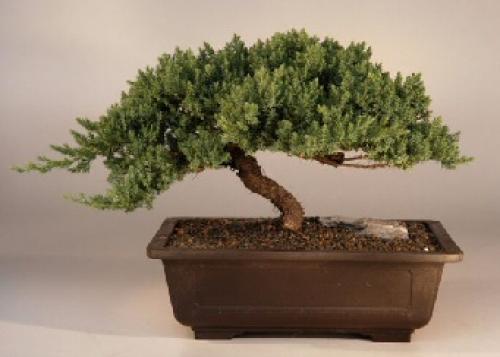
Bonsai are one of the most beautiful and versatile plants, and they are very loved for it. We love keeping them in our homes, and we feel so proud when we successfully grow one.
They are not the easiest plant to grow, and so many people find themselves looking up how to grow a bonsai tree from a seed, but you can get bonsai plants already partially grown.
Looking after a bonsai is interesting, and its interest is increasing. It is cute, but these Bonsai trees are so cute as well, this makes them so popular in people’s homes. But, they are more than just cute plants.
Bonsai trees do have benefits for your soul and your body. This is part of why they are so popular, because even though they are not that easy to grow, they benefit us enough to keep us wanting to grow them.
With this in mind, let’s look at the top 5 benefits of growing a Bonsai tree for you.
#1. Bonsai Trees Are Good For Your Health
Bonsai trees have a number of benefits for your health that will make you feel better and improve your overall well being.
Here are some of the health benefits.
- Bonsai trees purify the air. Having plants indoors is a good idea in general, their presence in your home reduces pollutants in the air, and purifies the air inside your home. However, note that some species of bonsai will do this better than others do.
- Indoor plants, such as Bonsai will help to reduce your blood pressure, and lower any feelings of emotional stress. After a hard day at work, 1-1 time with your plant can totally refresh you emotionally.
- Plants help to improve your well-being overall, they can improve your attitude, activity, stress levels and so on, just by being around you.
- Plants also increase in home humidity. This means that having some plants in your bedroom can reduce the likelihood of you getting a sore throat, a cough, and even dry skin. Plants naturally increase humidity in any space.
#2. Bonsai Trees Help You With Patience
Having a Bonsai tree means you need to honor your long-term goal of growing it. Bonsai take a long time to grow in comparison to most houseplants. So, growing a Bonsai teaches you to be patient.
You are looking after the future by caring for the present, you achieve long term goals through careful maintenance on the daily. You will also honor cycles that tend to come with long-term goals as well.
#3. They Can Spark Off Your Creativity
Bonsai can also help spiritual benefits with your creative personality. As you care for the plant with proper techniques you can make your bonsai grow however you want. You are only limited by yourself.
Being adaptable and creative can help you to achieve whatever effect you desire from the plant, meaning you may have to learn new things, try out new techniques. You build cages, try rope training, or prune structurally.
Your tree is a living being, it will grow as it wants in the end, but the real challenge you face is your flexibility, and the tree will test this in you.
#4. Having Plants In Your Life Makes You More Self Aware
When we are taking care of plants we become more self aware. It is not unlike meditation or yoga, as it can help us to cultivate a better understanding of how we react internally to the world around us.
If you notice an oversized leaf, wilting branches, dry soil and so on, how you react to this will teach you how you react to challenges in your everyday life. Do you get annoyed, frustrated, angry, start blaming yourself, or self loathing.
Having a plant like this in your life helps you reflect on yourself and ask those ‘why’ questions that are not always so pleasant.
#5. They Make You Compassionate
Bonsai can live a very long time, and if you care for it properly, it may even outlive you. Tending to a tree like this reminds us that everything needs love and care, even when it does not look pretty.
Even as our tree sheds their leaves, or their branches need removing, it reminds us that new beautiful things will come from it. As you care for and love your tree as it goes through its cycles, you will become a compassionate ally. It can teach you acceptance in all forms.
Landscaping
The Practicality of Hiring a Skip Bin

Skip Bins have been around for many years and have been traditionally used by professional contractors. But now, more individuals have started using skip bin hire companies to a large extent as well due to their various benefits. Skips offer homeowners with varying needs an economical, flexible and money-saving option for their waste disposal requirements.
A skip bin is an open-topped container that is often hired to dispose of any kind of refuse. It’s normally placed at the customers’ premises or street in a neighbourhood until it is full, with rubbish being loaded into the container by hand or mechanically with machinery. The most common types of skip bins are those with a capacity of 2 cubic metres, 4 cubic metres and 6 cubic metres and with the largest one can hold up to 30 cubic metres.
There are many reasons why somebody may need to hire a skip. They may be in the midst of a renovation, have accumulated too much waste for their trash bin to accommodate, or need to dispose of an old couch.
Different people will require different skip sizes, depending on the amount and type of waste they produce. If a business has several types of waste that are collected separately, all in large quantities, then hiring two or more skip bins could be the best option. But if they have only one or two small types of waste and large amounts of it, then hiring a bigger skip will be more economical and provide more flexibility.
Economical
Skip hire is an effective way to manage rubbish at home or work because it can save you money in many ways – skip hire firms may include a loading service for a fee, recycling contents for free and sometimes even delivering them for free as well as offering discounts.
Hiring a skip bin is considerably more economical than renting one, which means it can be reused by different households in the same neighbourhood without having to buy a monthly subscription package. One can hire a skip in any desired size, depending on the size of the garbage they need to dispose of. Not only that but hiring a skip saves time as it arrives at your doorstep ready-to-use!
Varied Size and Varied Waste Skip Bins
Skip bins are used widely for both commercial and residential needs. If you have varied needs, then skip bin sizes provide a range of flexibility to cater to those needs. There are smaller skips intended for small jobs like home renovations or gardening projects, or bigger skips for larger office clearances or house clearances. Whether it is recyclable waste or garden waste, hiring a skip is the most economical and efficient way of disposing of them.
You can find out the skip bin that best suits your waste type needs by getting in touch with the professionals at Skip Bin Finder for more information about their range of skips, which includes skip bins for mixed waste and recyclables as well as other specialised types for different kinds of rubbish such as inflammable waste.
Competitive Price
It is not difficult to find a skip bin supplier nowadays. There are so many companies around the country that offer skips for hire and it is up to the customer to choose their preference in terms of size, type, cost and location. This abundance of competition will naturally create a competitive price and give a big advantage to the consumer.
Takeaway
Skip hire is a practical way to get rid of many kinds of unwanted, bulky items. In recent years, there has been an increased need for hiring a skip because of the rapid growth in construction, renovation and house moving. Skips can store all kinds of waste material before being disposed of by the waste management company – which makes them an economical and flexible option for households. Skip bins are also environmentally friendly because they make sure that no material is wasted for a prolonged period of time.
The average Australian household disposes of 10,000 kilos of rubbish each year, with that figure expected to increase. The suggestion is to hire a skip and make use of it. Skip hire can be a highly economical decision in that it can help you save on time, and money and has the added bonus of being flexible.
Design Tips
How to style a succulent bar for your next event
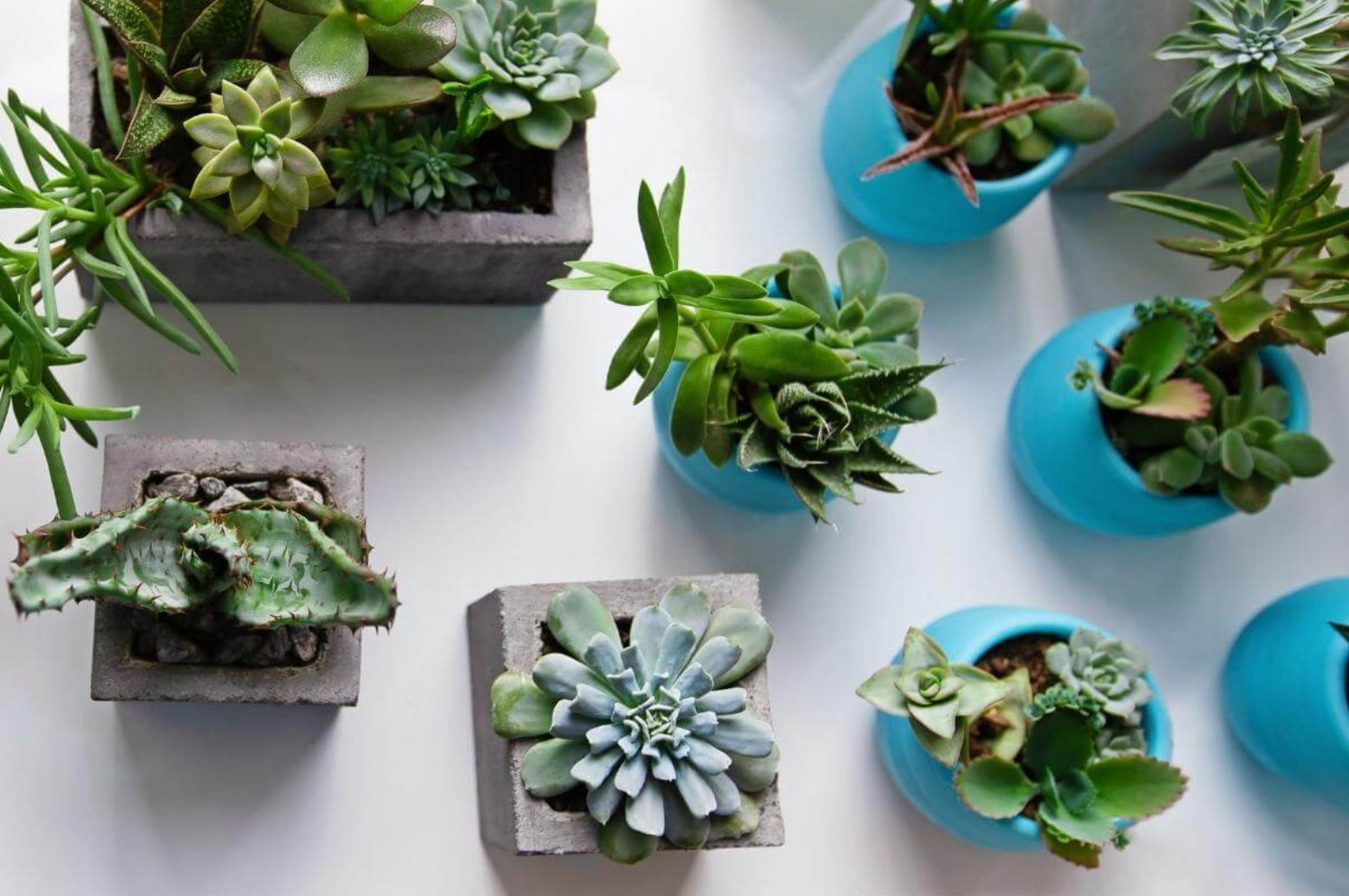
If you’re looking to add a touch of style to your next event, why not try incorporating a succulent bar? Succulents are trendy, eye-catching, and can be used as part of various event décor. Plus, they make great take-home favors for guests!
Here are some tips on how to style a succulent bar:
1. Choose the correct location. Succulents need bright, indirect sunlight to thrive, so placing your succulent bar near a window or patio door is ideal.
2. Prep the area. Before setting up your succulent bar, clean and prep the surface, you’ll be using. This will help ensure that your plants stay healthy and look their best.
3. Select a variety of succulents. When choosing succulents for your bar, choose a mix of different shapes, sizes, and colors to create an eye-catching display.
4. Provide adequate drainage. Succulents are sensitive to overwatering, so it’s essential to make sure they have sufficient drainage. Use a tray lined with rocks or gravel, or consider planting your succulents in pots with drainage holes.
5. Add accent pieces. Add some accent pieces like driftwood, shells, or stones to style your succulent bar. You can also use succulents as part of a larger arrangement, such as a centerpiece for tables.
With these tips, you’ll be able to style a beautiful and functional succulent bar for your next event!
What succulents make good bar decorations
When decorating a bar, there are many options to choose from. However, if you want something that is both stylish and unique, then using succulents is a great option.
There are a variety of reasons why succulents make good bar decorations. For one, they are low maintenance and don’t require much care. This is ideal for busy bartenders who don’t have time to worry about watering plants or trimming them back.
Another reason succulents are a good choice for bar decorations is that they can help create a relaxing atmosphere. Most succulents’ soft, soothing colors can help create a calm and inviting space. This can benefit customers who want to enjoy a few drinks without feeling overwhelmed by their surroundings.
Finally, succulents are also relatively inexpensive. This is important for bars that want to save money on their decorating budget.
If you want to add style and personality to your bar, succulents are a great option. They are easy to care for, look great, and won’t break the bank. So next time you decorate your bar, consider adding some succulents to the mix.
Tips for keeping your succulents alive and healthy
If you’re like most people, you probably think that succulents are virtually indestructible. After all, they’re drought-resistant and can survive in extremely hot or cold climates. However, even though they are tough plants, they still require some primary care to stay alive and healthy. Here are a few tips to keep in mind:
1. Light: Succulents need bright, indirect sunlight to thrive. If your plant is not getting enough light, it will become etiolated, which means it will become leggy and stretched out.
2. Water: One of the most common mistakes people make when it comes to succulents is overwatering them. These plants are used to surviving in arid conditions, so they don’t need a lot of water. However, too much water can kill them. Therefore, it’s best to err on caution and only water your succulents when the soil is completely dry.
3. Soil: Succulents need well-draining soil to prevent root rot. A good potting mix for succulents is mainly comprised of perlite or gravel.
4. Fertilizer: Although succulents don’t need much fertilizer, they benefit from being fed every once in a while. Use a succulent-specific fertilizer and apply it sparingly according to the package directions.
5. Temperature: Most succulents can tolerate a wide range of temperatures but prefer to be in warm, dry conditions. If you live in an area with cold winters, it’s best to bring your plants indoors during this time.
These simple tips can help ensure that your succulents stay alive and healthy for many years.
Landscaping
What Tools Does a Landscaper Require?

If you’ve recently qualified as a garden landscaper, have a passion for horology or you’re simply wanting to help friends and family maintain their gardens, you’ll need the right tools for the job.
Not sure where to begin? Luckily, we’re rounded up some of the handiest tools on the market so you don’t have to.
What tools does a landscaper need?
If you’re one of the 157,000 landscapers in the UK, then you’ll need a toolbox first and foremost. Other than the obvious equipment, a landscaper will also require a varied toolbox including a tape measure, a level and a screwdriver. Landscapers will also need spanners, sockets & wrenches from retailers such as RS.
Long handed tools
As well as a selection of hand tools for more involved jobs, you will also need some long-handled tools. When it comes to long-handled tools, we believe the more the merrier as you will be spending the majority of the day using them.
Some of the most practical hand tools include:
- Spades
- Garden forks
- Rakes
- Dutch hoe
- Lawn shears
When choosing your traditional gardening equipment, try to think about how comfortable each item is. The last thing you want is blisters halfway through your first job!
A roomy van
There’s no way you’ll be able to fit all your tools in your family car. And you wouldn’t want to either – it’d get filthy!
As such, you’ll need a reliable and sturdy vehicle that’s suitable for transporting heavy tools to and from the site. If you have some oversized equipment, you may also want to consider buying a trailer.
Think about your online presence
If you’re wondering what an online presence has to do with landscape design, then listen up.
Although you may overlook this part, having a website is essential when you’re working as a landscape designer. Without having an online presence, your potential customer base won’t be able to find you. If they can’t find you, then you’re seriously limiting your earning potential!
With a recession on the horizon and inflation increasing, you’ll need all the work you can get to stay afloat.
Final thoughts…
If you’re starting out as a landscaper, it can be daunting knowing where to begin when it comes to setting up your business. However, the good news is that with a few handy tools, a van and a shiny new website, you’ll be well on your way to having a successful business.
DIY Projects
Why Is Waterproofing Your Property Important?
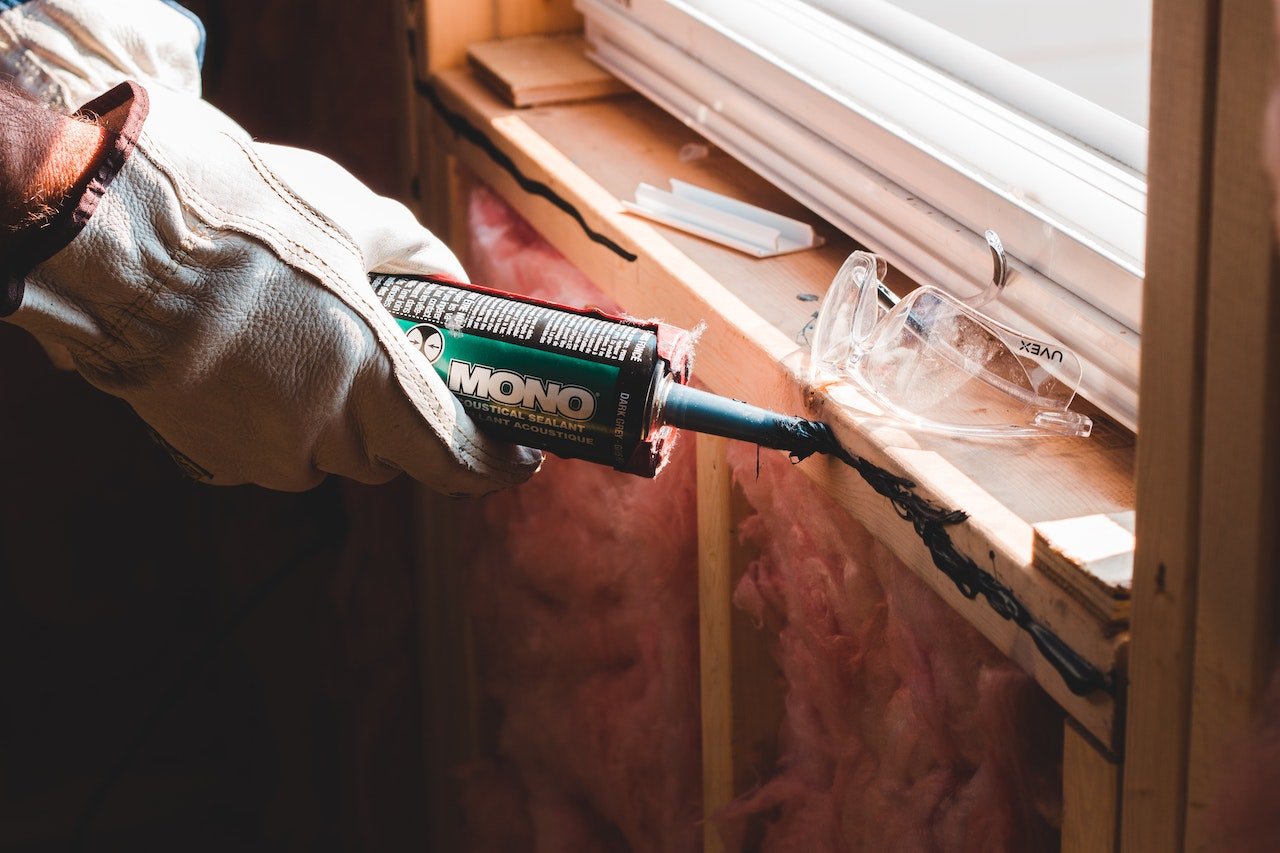
If you are a homeowner, you might have had problems with an insect infestation or a moldy environment. This is a dangerous, preeminent problem resulting from faulty waterproofing. Waterproofing is a procedure that ensures that your house doesn’t get any leaks. It will protect you against a weakening structure and peeling paint. Your property’s life will also increase, and your home will stay insulated. While you may be able to handle moisture control yourself through some creative DIY work, nothing substitutes for professional services.
The waterproofing process involves a professional inspection of your home to reveal faults and leaks to take care of. If you want to get your property waterproofed through affordable quotes, then visit this website. Here are three reasons why you need to take action:
- Increases Your Property’s Lifespan
Waterproofing ensures that your property lasts for an extended period. Wood and metal are significant parts of your house’s structure and weaken with continuous water exposure. Concrete doesn’t get damaged because of water, but it facilitates the growth of moss and mold and can host insects like termites that will ruin your home. Water can weaken the foundation of your place, and this will lead to a short property life. Moisture control is essential to increase a property’s life.
- Increases Your Property’s Value
A sound waterproofing system will make your property more attractive to buyers and can help you increase its value. Conversely, buyers will be hesitant if they see water damage. Waterproofing will ensure that you don’t get any mold and leakage in the house, both of which are detrimental to the value of properties.
Waterproofing also acts as an insulating system by keeping most of the moisture outside. Your winters will be much warmer and your summers less humid. Your investment will yield low bills and good returns.
- Prevents Health Complications
Mold has many health complications that will affect your well-being and put your family in danger. It is also a leading cause of respiratory diseases and has a hand in complicating asthma. Deal with mold as soon as you find any, and try to find the root cause.
Waterproofing Considerations
Your basement, bathrooms, kitchens, and roof are especially vulnerable to moisture accumulation. Your basement often doesn’t get enough sunlight to get rid of excess water that builds up. It also is hard to renovate after damage caused by mold or leaks. Get it inspected as soon as you buy your property. If you’re building one, then have the builders give it extra attention.
You may have noticed that your bathroom gets moldy between the tiles. This is because water gets stuck there, providing a healthy environment for mold to grow. Ensure that the drainage system is up to date and that the waterproofing in the walls and windows is tight. Make sure that you don’t fall back on the routine inspection.
In addition, don’t neglect your roof and its lining. Water accumulation on your roof will seep into the walls and the lower portions of the house.
Endnote
If you want to breathe humidity-free and fresh air once again, you need to waterproof your home. Early detection of damage can help you take care of it before it gets more extensive and more expensive to fix. Timely action can prevent future issues easily.
DIY Projects
6 Ways to Save Money on a Bathroom Remodel

Bathrooms are among the main areas of the house that most homeowners often change. Unfortunately, these upgrades tend to be expensive and must be appropriately managed to avoid cost overruns. In this article, we look at five ways to save money on a bathroom remodel.
- Hire remodeling professionals
You can save a lot of money on a bathroom remodel by working with professionals like Kitchen & Bath. Taking this path will protect you from many uncertainties as you have a team to help you create and implement a plan that best suits your budget and needs. Professional remodeling experts will also complete the project on time by avoiding delays and errors that often make bathroom remodels expensive.
- Use the existing walls, plumbing, and electrical circuits
One of the main reasons why bathroom remodels cost so much is that most homeowners will tear down everything, including existing walls, plumbing lines, and electrical circuits. Since relocating these utilities is never cheap, you will save a lot of money by choosing to keep them in the exact locations as they were before. As an alternative, you can consider bathroom renovations that increase your home’s value, such as adding windows and installing standalone showers, plus other luxury features.
- Check out yard sales and flea markets for bathroom accessories
Hunt bargain deals for bathroom accessories and fixtures by checking out yard sales, flea markets, and resellers in your location. Some items you can acquire on a budget include; vanity, bathroom shelves, mirrors, sinks, light fixtures, and cast iron tubs. To ensure everything fits your bathroom style, only buy accessories that suit the remodeling plan you already have.
- If it is not broken, you don’t have to replace it
When remodeling a bathroom, it is always a natural instinct to want to have everything replaced. However, this is not always necessary as you can reuse most items that work just fine. For example, you do not have to replace that standard-type toilet that is less than five years old, and you can reuse your old mirrors by framing them. You can also give your old toilet a fresh look by simply replacing your toilet seat and top.
- Consider alternatives to tiles
While the go-for solution for most bathrooms is a tile floor, there are several flooring options that can save you money, such as reclaimed wood panels and vinyl plank floors. For vinyl plank floors, you will not have to remove existing flooring, saving you on demolition and disposal fees. On the other hand, wood panels are easier to install and give a warm, comforting vibe that will make your bathroom look classy.
- Opt for open shelves
Open shelves help create an illusion of space in a smaller bathroom and are cheaper to install than closed organization units. You could opt for hanging shelves or a small-sized vanity with open shelving and choose to house your personal items on higher shelves.
Endnote
Your bathroom remodel project does not have to be too costly when you can save money using the ideas discussed above.
General Gardening
Creating a Butterfly Sanctuary in Your Garden

Butterflies are some of the most important contributors to our environment. They’re proven to be hardworking and effective pollinators, and their presence determines the stability and health of an ecosystem. Lately, they have also become valuable in promoting tourism. For instance, Texas holds its annual Butterfly Festival in October, where you can see more than 300 species of free-flying butterflies. Butterfly spotting has also become extremely popular, and people often go to butterfly sanctuaries such as the Monarch Butterfly Sanctuary in California and the Magic Wings Butterfly House in North Carolina to see and admire these insects up close.
Since research has found that there is a 2 percent decline in butterflies every year, it’s important to find ways to protect them and provide a safe place where they can thrive. A garden can be the perfect place to help butterflies survive– here’s how to transform your outdoor space and make them the ideal place for these beautiful and brightly-colored winged creatures.
Choose the Right Plants
Brightly colored flowering plants such as phlox, marigold, lantana, heliotrope, and lavender, as well as plants and herbs such as milkweed and mint are attractive to butterflies, and having them in your garden may encourage these insects to visit your outdoor space frequently. But if you want to create a haven for them, then you need to have plants that female butterflies will want to lay eggs in, as well as caterpillar host plants. These include pussy willow, sulfur buckwheat, honeysuckle, blueberry, lilacs, and ivy. Since butterflies prefer a somewhat wild garden with long grass and some weeds here and there, designate a spot in your outdoor space for your butterfly sanctuary, then keep the rest of your garden looking neat and orderly.
Meanwhile, if you want to keep butterflies off certain parts of your garden, such as the places where they can get accidentally trampled on by kids and pets, then make sure that they’re free of grass, or mow these spots frequently. Caterpillars like to eat the roots of native types of grass, and butterflies also like to make them their breeding grounds. Maintaining your lawn with a zero turn mower is a great option because it’ll prevent butterflies and caterpillars from getting injured or killed.
Make a Place Where Butterflies Can Bask
Butterflies need an open, airy, and sunny space where they can bask. Since they’re cold-blooded creatures, they need the heat of the sun to warm up the tiny muscles in their wings so they can take flight. In the morning and on cool days, you’ll likely see butterflies spending a lot of time under the sun with their wings spread. Make sure that there are several spots in your garden where butterflies can do this, and avoid putting plants in these areas. Also, since butterflies need certain minerals from the earth that they can’t get from flowers, you’ll need to have spots called puddlers, where they can siphon these minerals from the soil. To make a puddler, place an old basin in the butterfly sanctuary and fill it with sand, a little water, and a bit of salt. Once the water evaporates, you’ll be left with damp sand where butterflies will love to drink from or puddle in.
Avoid Using Pesticides
The use of pesticides and chemical-based fertilizers in gardens is one of the main reasons why butterflies are dying out. Avoid using these in your outdoor space, and if you truly have to get rid of pests, consider using a DIY or organic pest repellent. Horticultural oils will get rid of pests, such as aphids, without harming pollinators. You should also keep your garden clean and be on the lookout for any signs of infestation every day so you can deal with the problem swiftly before it spreads to other parts of your garden.
There’s nothing quite as magical and charming as the sight of fluttering butterfly wings in the air. Consider these tips to create a butterfly sanctuary in your garden so you can do your part to protect and conserve these amazing pollinators.
DIY Projects
6 Tips for Saving Money When Building a New Home
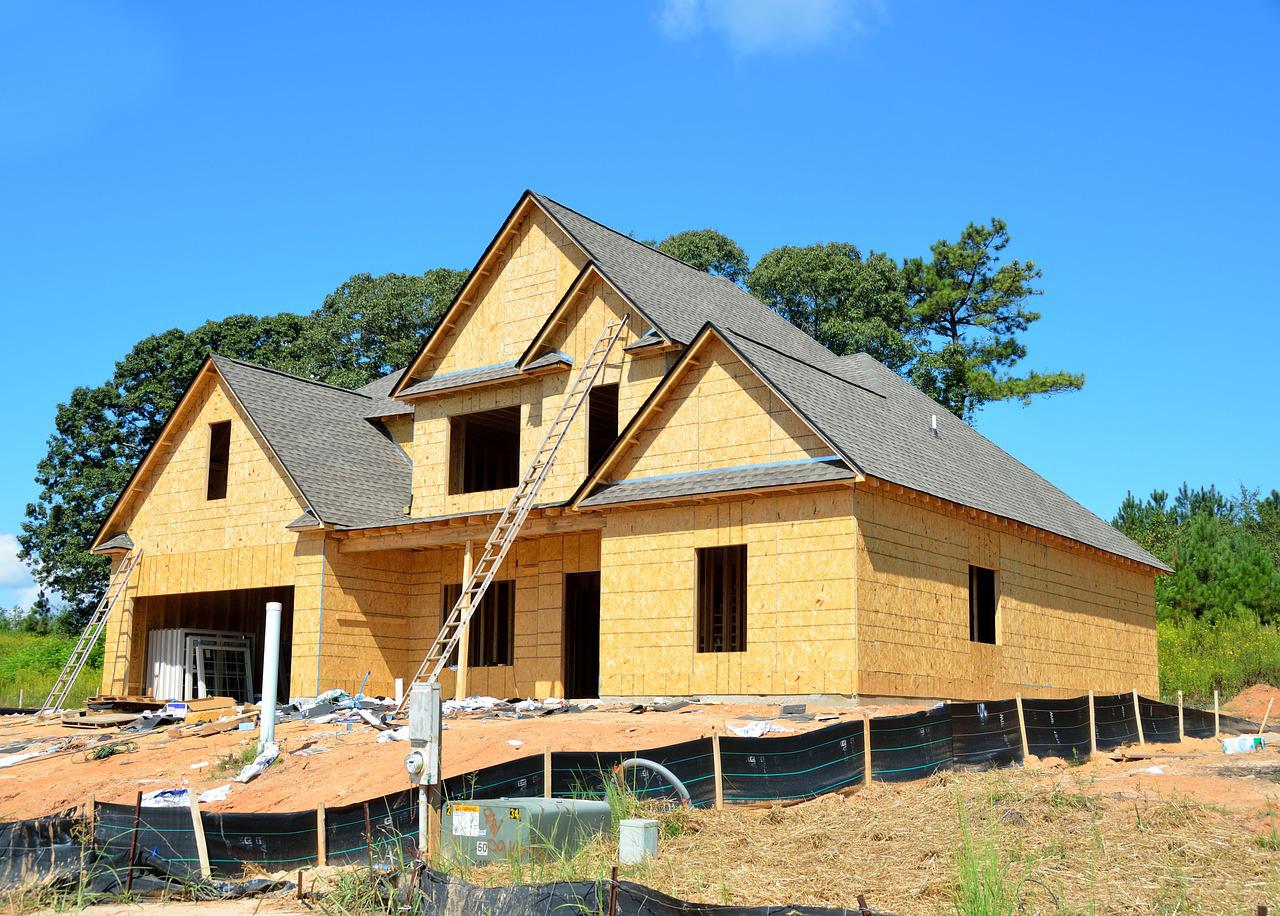
Building a home is one of life’s greatest achievements and a dream come true for most people. However, the excitement of building a new home fades as soon as the expenses spiral, especially when you do not have a well-researched house plans. If you are ready to start your construction project, here are six tips to give your family their dream home without breaking your bank.
- Get bids from different home builders
It can be tempting to settle for the first builder you encounter to speed up the construction process. However, this is a bad idea because you could hire a contractor way above your budget. Take time to research different contractors in your area, check completed projects, and read reviews to zone in on contractors most likely to give you the total value for your money. If you want to build a house in North Texas areas, for example, look up North Texas new construction home builders and identify the best construction firms operating there. Next, compare pricing while reading the fine prints to choose an affordable, reputable, and experienced home builder for your project. To find a reliable and trustworthy custom home builder with transparent pricing in Oakville, visit this website.
- Handle the less skilled tasks yourself
Reduce the overall construction costs by taking on tasks unrelated to MEP systems. Such tasks include painting, installing faucets, wall sheathing, putting down wood flooring or plywood floor decking, butting insulation installation, and installing faucets. If you do not have enough time to work on the construction project or are not handy, you could consider asking friends or family members to help. The cost of working with relatives and friends may be significantly lower than hiring a contractor.
- Source building materials yourself
Instead of relying on your contractor or subcontractor to purchase building materials on your behalf, consider sourcing yourself. Most home builders could reduce their bids when they are not responsible for the material expense. Building material suppliers could also offer discounts for upfront bulk payments. However, ensure you shop around and compare prices before purchasing to avoid paying more than you should.
- Pick the right location
Picking the right location could save you a significant amount when building your new home. Before purchasing, conduct extensive research or consult your contractor to ensure the lot can be built on without additional expenses to prepare the area for construction.
While buying raw land may seem convenient, it may lack proper sewage lines or drinking water access, and adding them could strain your budget. Choosing a mountain retreat could mean spending more money to level the ground and clear rocks and trees.
- Return any supplies you do not use
Home builders often suggest buying more materials than they need to prepare for emergencies. Some construction projects use more materials than the contractor had estimated, and others could break.
If you have a significant amount of supplies left at the end of the project, take them back. Most suppliers often allow returns because it is common to purchase more building supplies than necessary. However, to avoid issues in the future, always check the return policy before buying.
- Have a budget
Before starting your project, determine how much you want to spend. Liaise with your financial advisor to set a reasonable budget that accounts for each aspect of the project, including labor costs, land expenses, appliances, building materials, stamp duty, interior accessories, and settlement charges, to mention a few. You should also have a contingency budget to cater to emergencies. Once you create a budget, communicate it to your contractor and demand that they stick to it.
Endnote
Do not let the excitement of building your dream home cause you to overspend. Create a budget and stick to it, choose the right builder, buy supplies yourself, and pick a suitable location to save money when building a new home.
Uncategorized
Ways to Shrink Pigeon Population Growth

Pigeons reproduce in increasing numbers and can cause disturbance to people living nearby. Industrial areas, parks, and massive institutions spend millions to control the pigeon population. Preventing the pigeons from nesting and roosting is not a simple job, and the alarming reproduction often means more rubbish for cleaning.
Pigeons also consume lots of leaves, insects, and fruits, damaging the neighborhood. The destruction of the neighboring landscapes can be an annoyance and a challenging nuisance. Reducing pigeon population growth becomes an all-consuming problem for some homeowners and barn owners. This article outlines some practical solutions to get rid of pigeons.
Control breeding of pigeons
The best method to prevent pigeon population growth is to try a pigeon control service using OvoControl. Pigeon food or bait is mixed with OvoControl and strewn on the ground, which the roosters eat. Such a birth control method prevents egg formation and development when the birds roost.
There are areas like grounds, hall terraces, and hospitals where many pigeons roost and nest. Fencing them completely with spikes is difficult because they can fly over them quickly. It becomes impossible to place light or speakers in those vast places because it will make human life difficult.
The birth control method prevents overcrowding and does not result in any side effects, and the pigeons who survive thrive. It is a humane and non-lethal way to control their reproduction massively. People who use this method have seen a significant reduction in the pigeon population.
Bird mesh and netting
Pigeons roost on the balconies, ceilings, under solar panels, and in high-altitude areas. Fixing a bird net on your solar panels or roof will prevent the pigeons from creating a home on your rooftop. When a family of pigeons arrives, builds a nest, and reproduces, they multiply exponentially, and before you realize it, there are up to 30 birds.
Pigeon defecation leads to iron corrodes, and the perching and pecking damage the wooden things on the roof. As a result, the rooftop begins to leak quickly, and the messy rooftop draws insects, snakes, and frogs. Use a net to cover your ceilings and mesh to cover your patios from the pigeons roosting there.
Offensive smell and odor
Getting rid of pigeons using vapors and fogs is typically suited for larger structures and facilities. These products are widely used in the flavoring industry. They are primarily used to give grape flavor and scent to food. These vapors and fogs have a strong smell of grape juice.
Some manufacturers of these food flavorings sell them as bird repellent to protect crop production. For the fogs and vapors to take effect, you must spray them in the air. They usually achieve it with a fogger or hazer, which suspends the solution that is oil-based in the air into small particles. The foggers work by sensitizing and irritating the sense of taste and smell of the pigeons.
Pigeons avoid these smells. The hazers are set to release them in the air periodically. Keeping such constant pressure increases the likelihood of the disappearance of the birds. They will then tend to avoid places where this airborne product is used.
Unappealing places to land
Make the roosting spaces of pigeons less appealing by installing anti-roosting spikes where they land and tying the waterproof strips. Anti-roosting barbs and waterproof stings make it very difficult for them to land. Pigeons find it hard to stay in uncomfortable areas, forcing the roosters to search for an alternative site.
The birds need water to survive every day. Without a water source, pigeons will find it harder to stay. Bird baths attract pigeons as well as mosquitoes and rodents. If you find it impossible to eliminate the bird bath, replace it frequently with fresh water.
Mix some water with honey, pour it into a bottle and spray it on places frequented by the birds. Pigeons will naturally stop arriving because they dislike sticky solutions. This method is the most effective yet the simplest solution to shrink their numbers. The idea is to make their spaces less appealing to land.
Culling pigeons with exterminators
Pigeon exterminators trap pigeons into a lure net or nest, which is invisible and take the birds away to release. Some people exterminate the pigeons effectively by hunting them and training them for sports and races. Some exterminators also use electricity to kill them to control their numbers effectively when there are numerous.
Fierce dogs are unleashed to coach them to kill and hunt the roosters. Natural predators such as owls, raptors, and hawks are released too among the netted birds to get rid of them. The pigeons are also sold and used as food for predators in conservatories and zoos.
Hunting and culling to eliminate pigeons is a non-humane and lethal method to shrink pigeon population growth. Extermination through hunting and culling should always be used as a last resort. People must try other non-lethal and humane methods before resorting to such methods to kill pigeons.